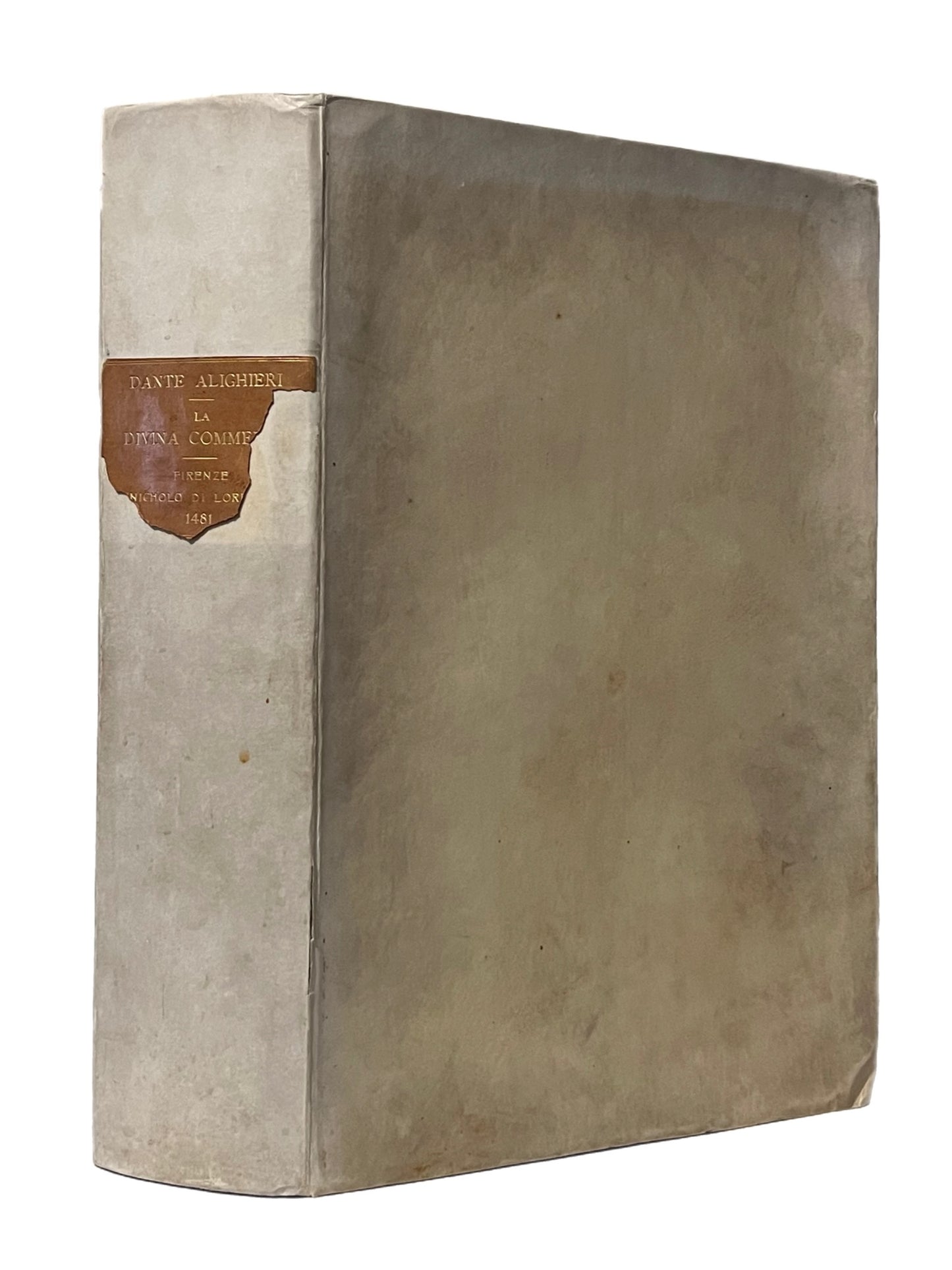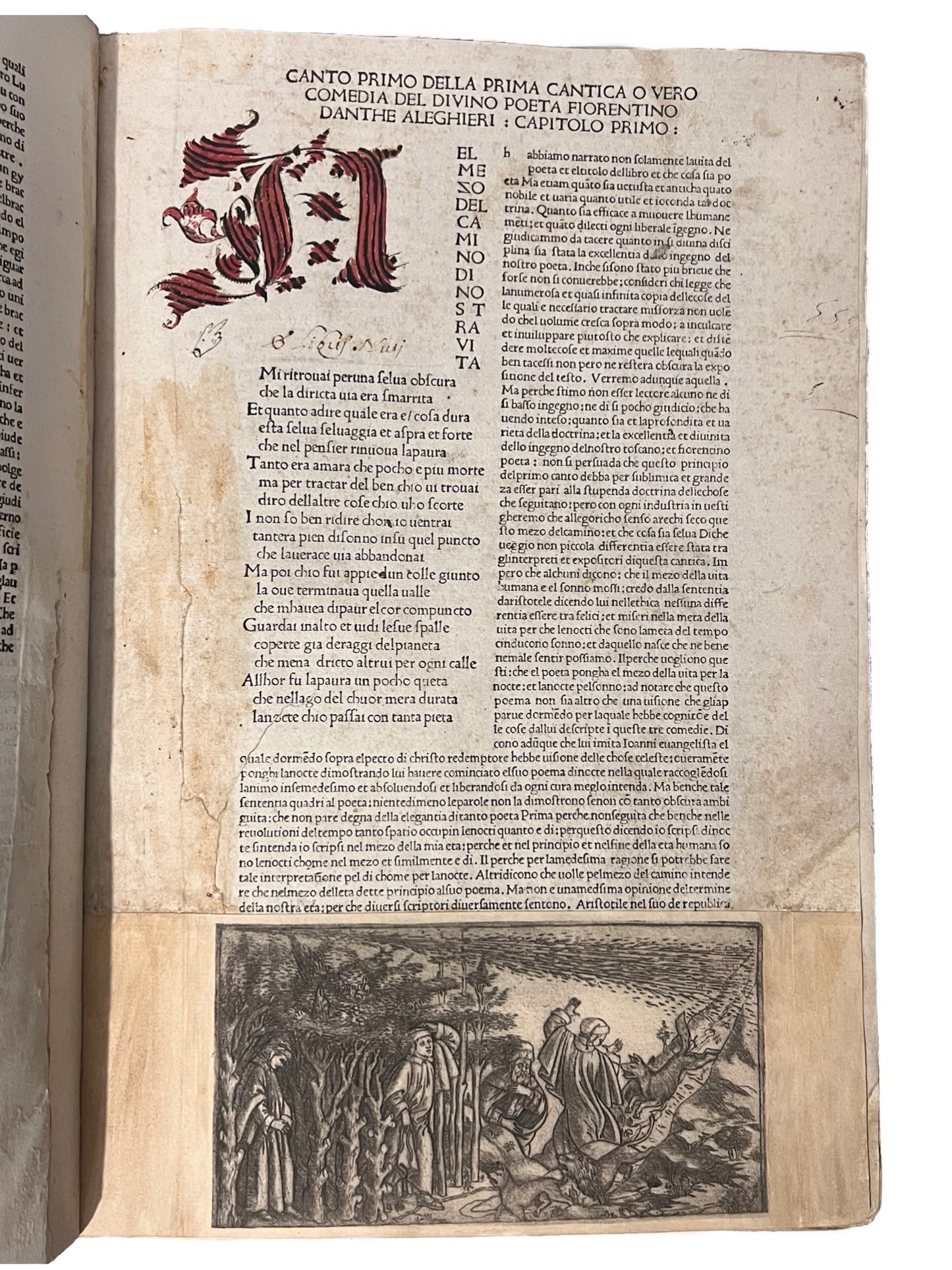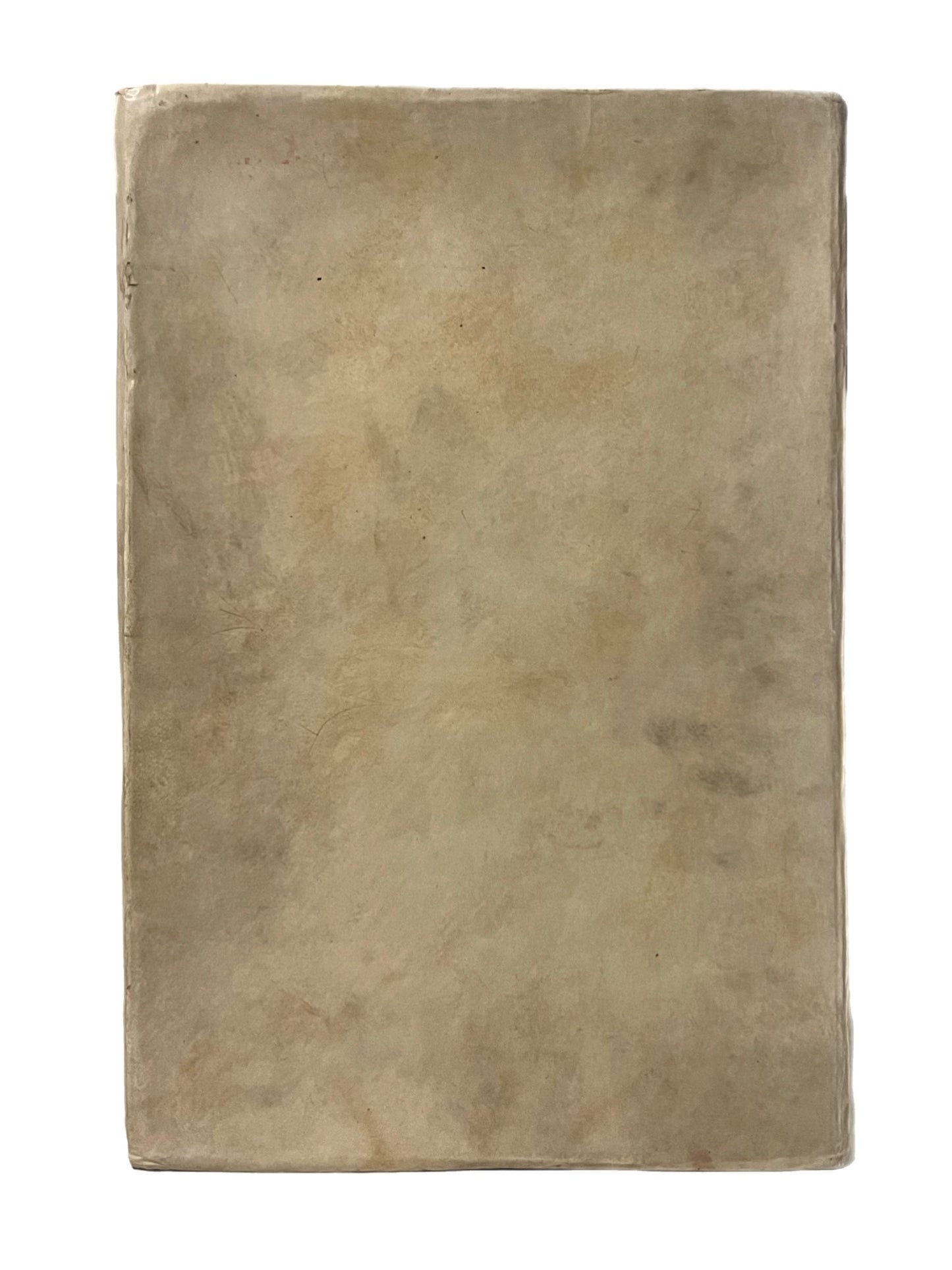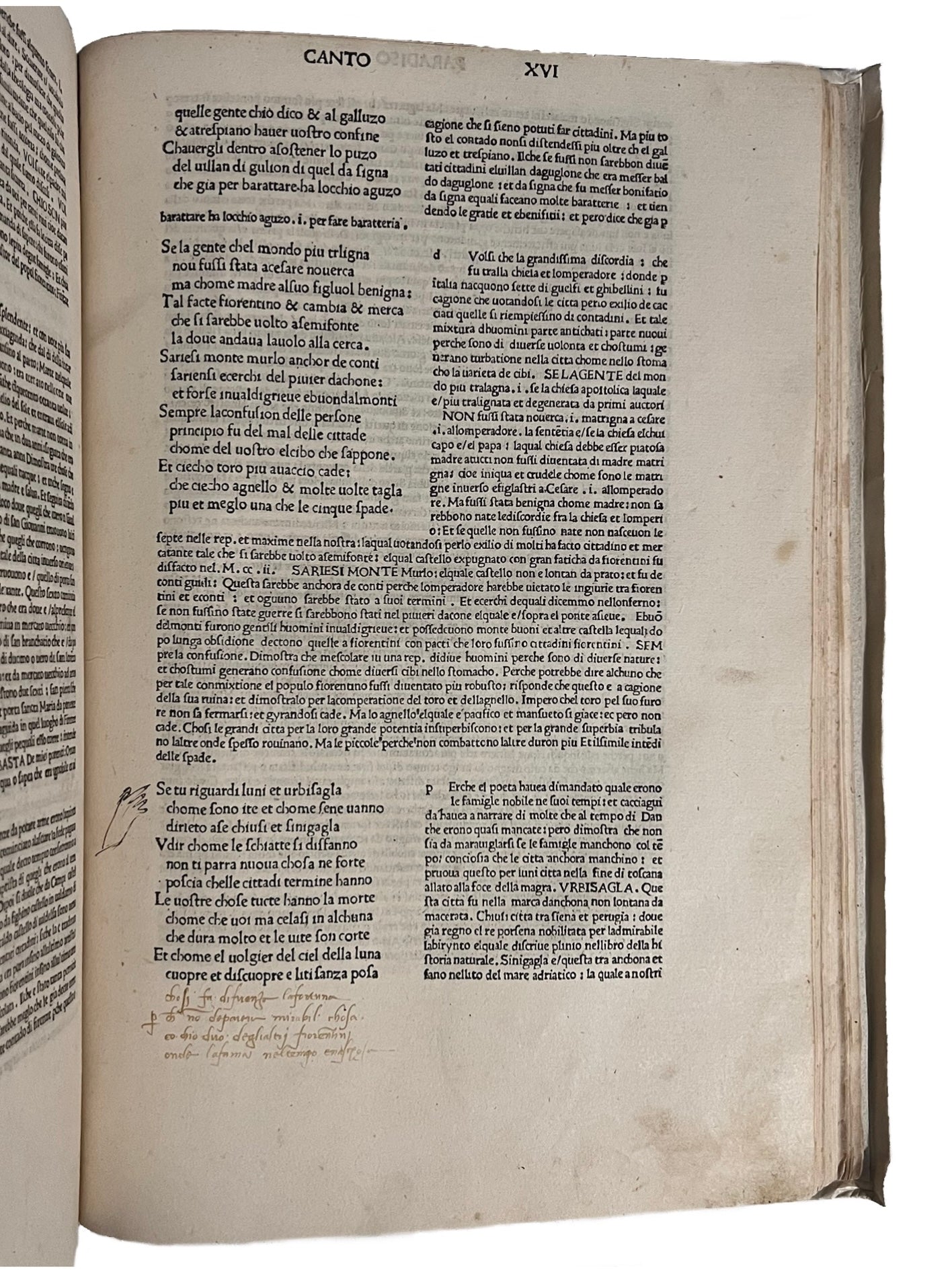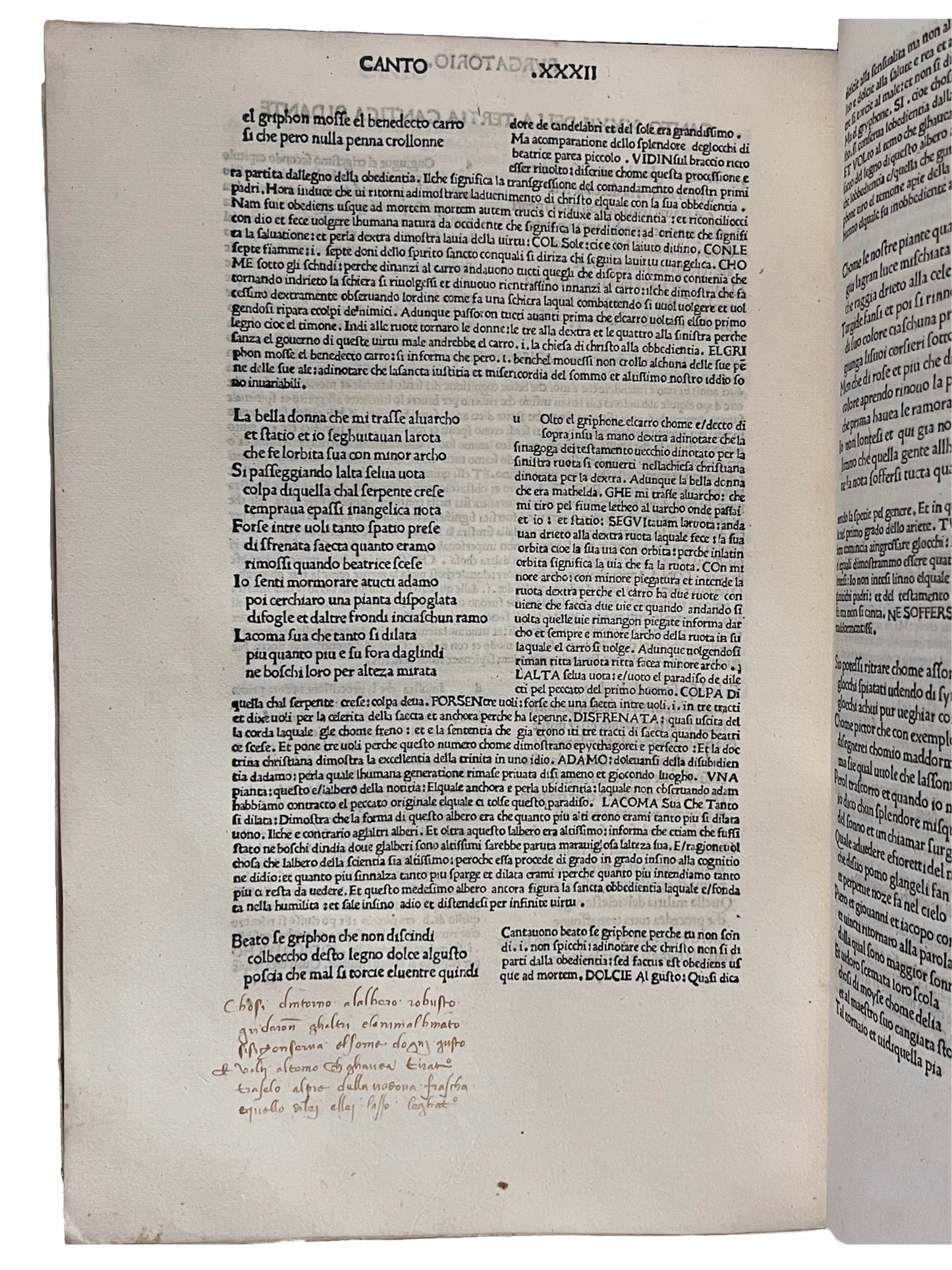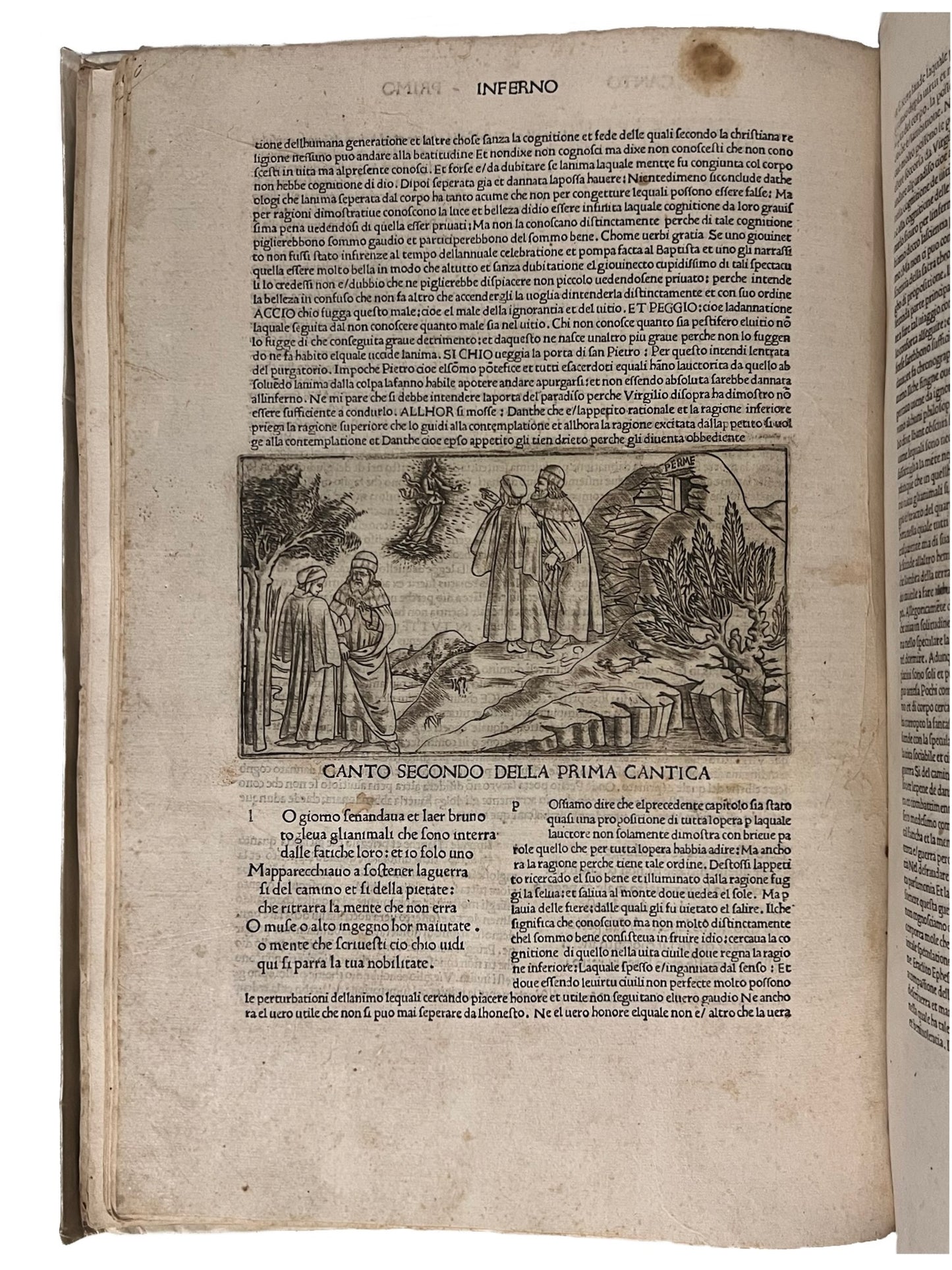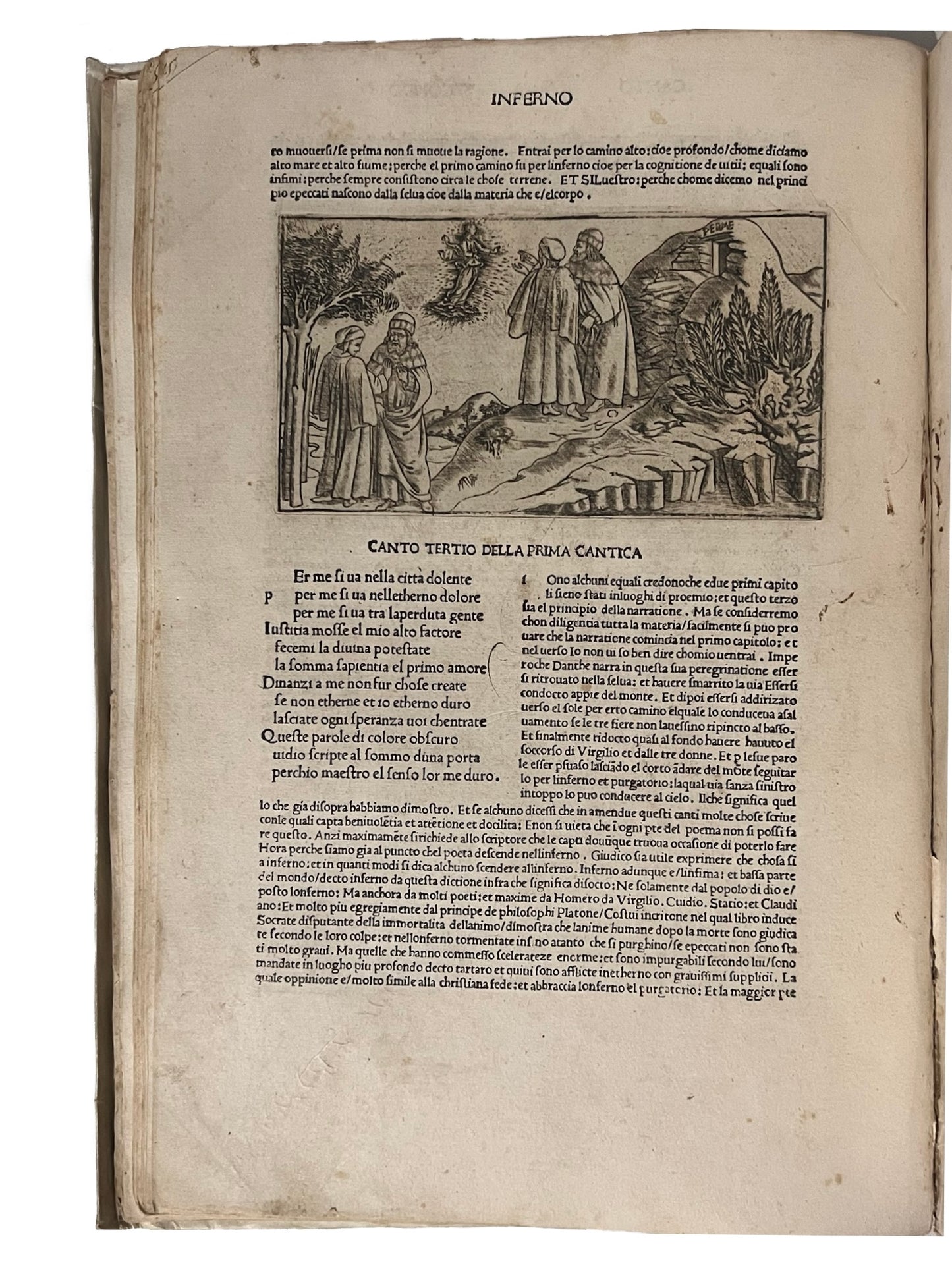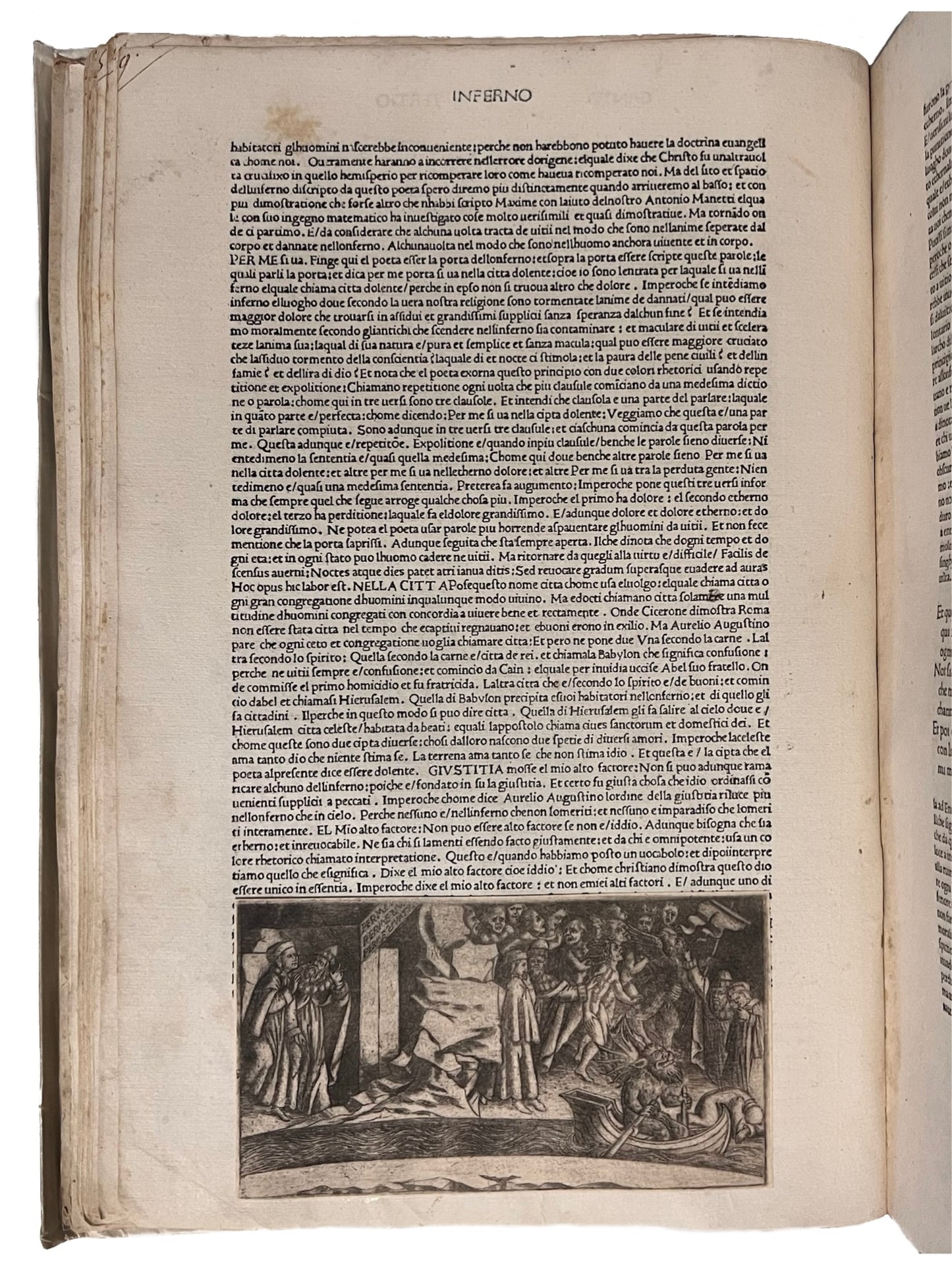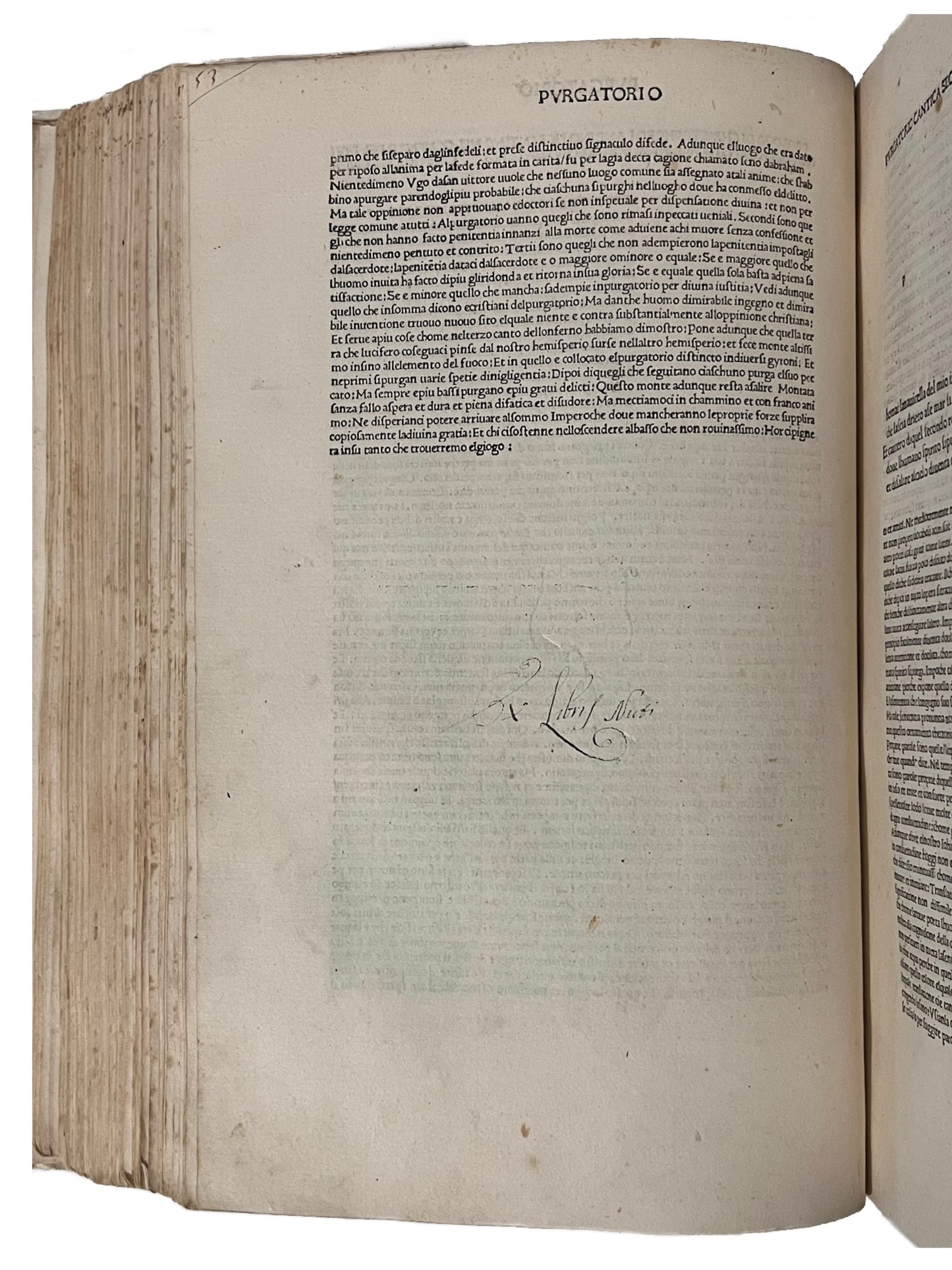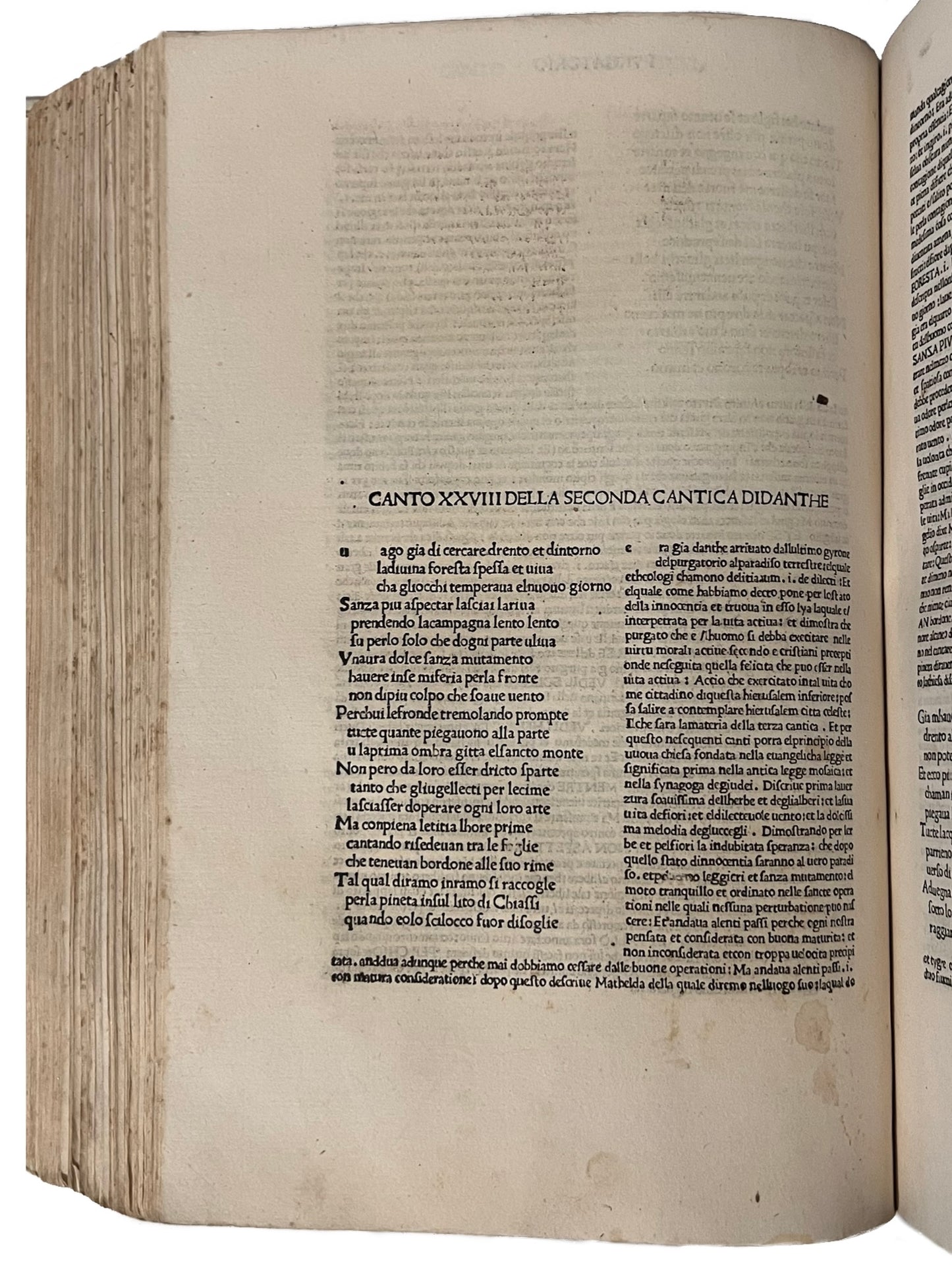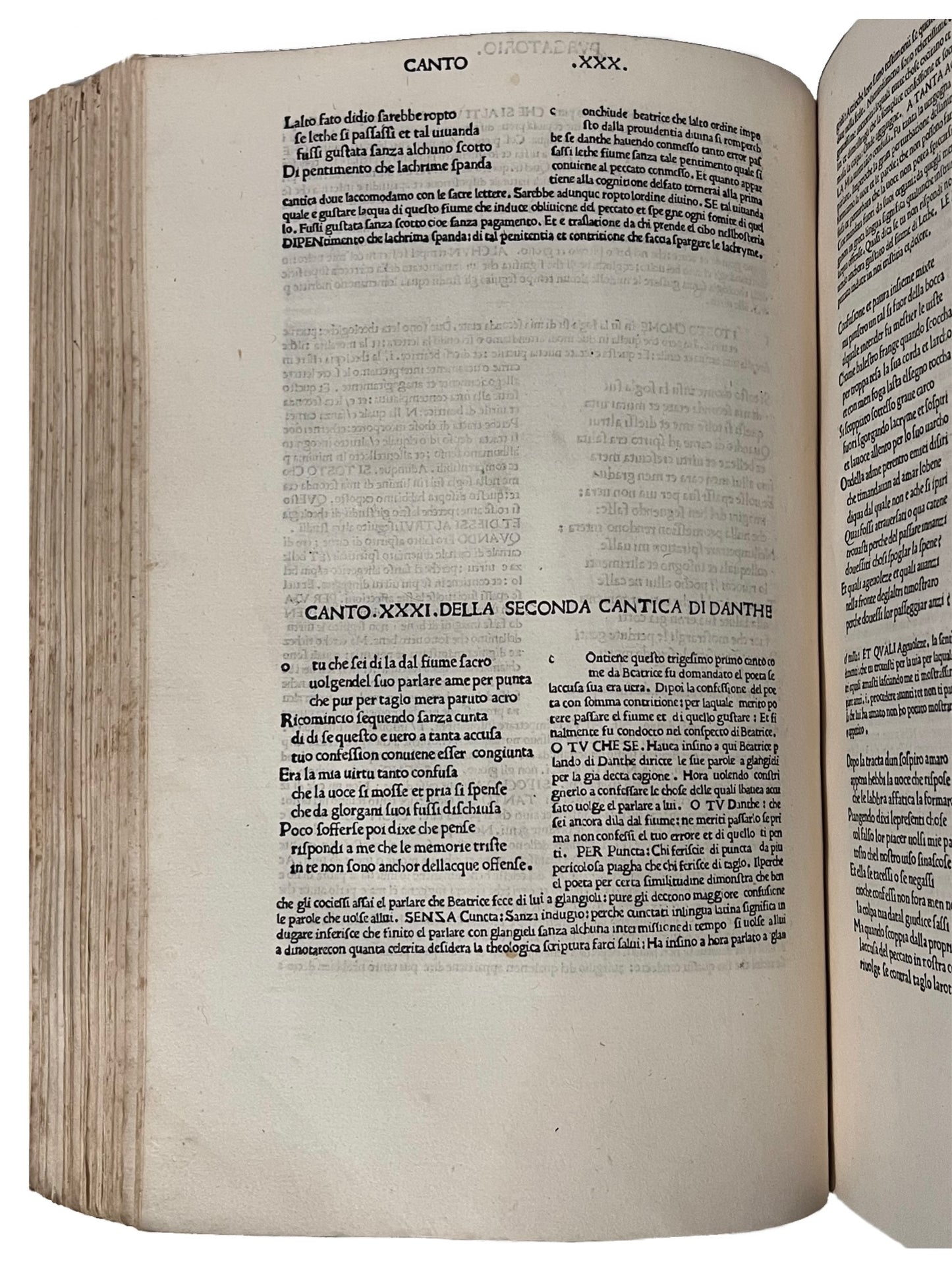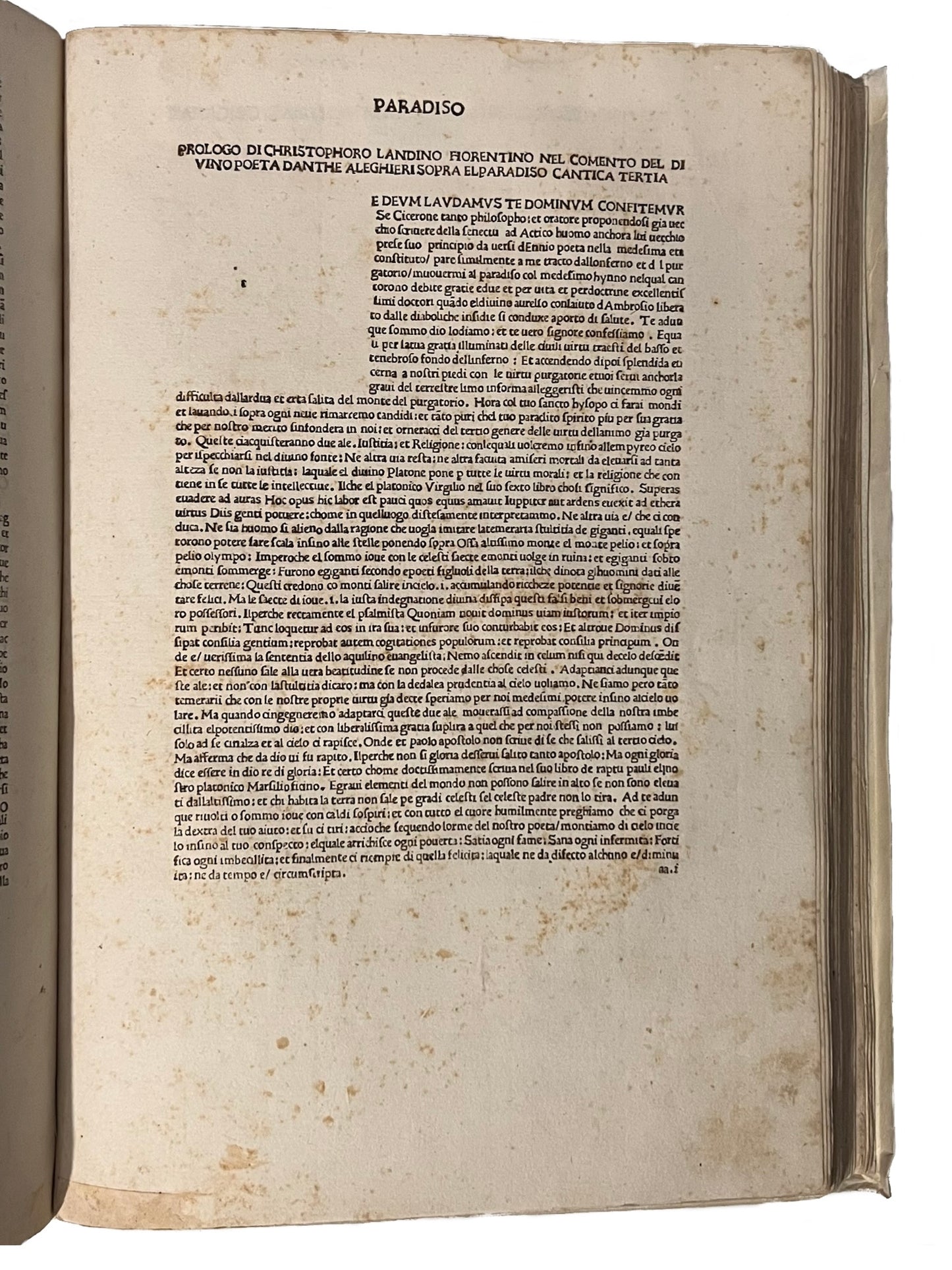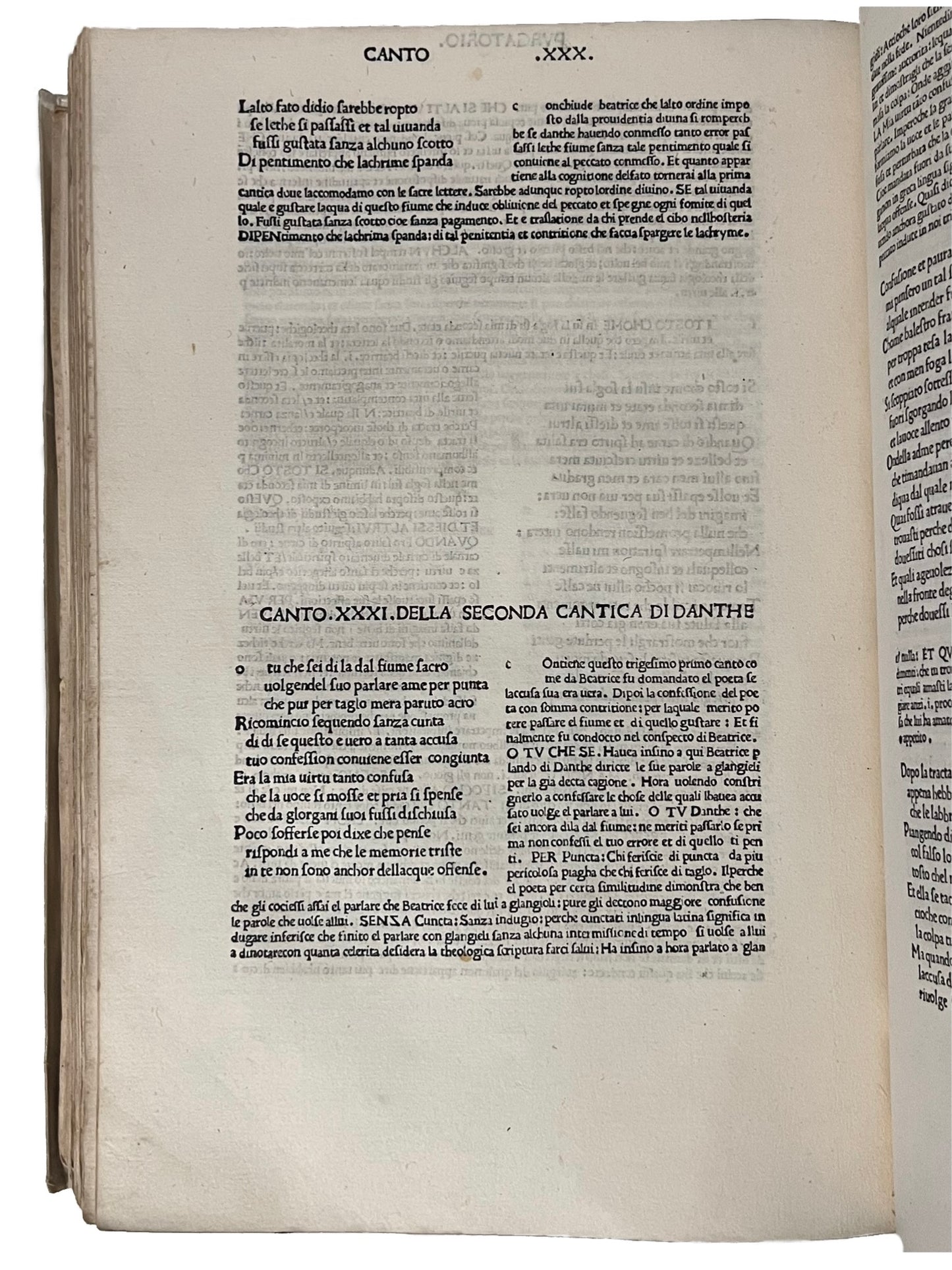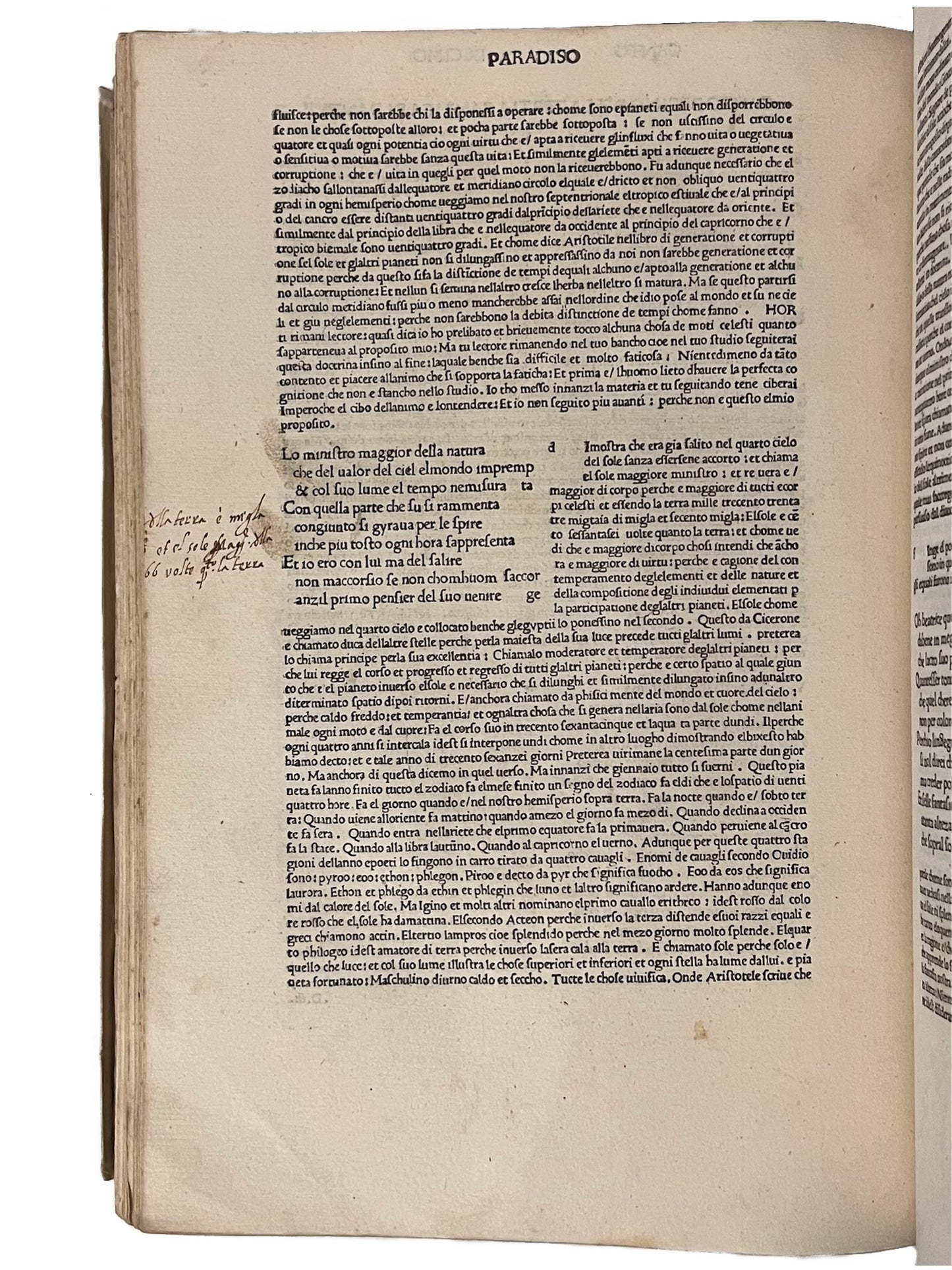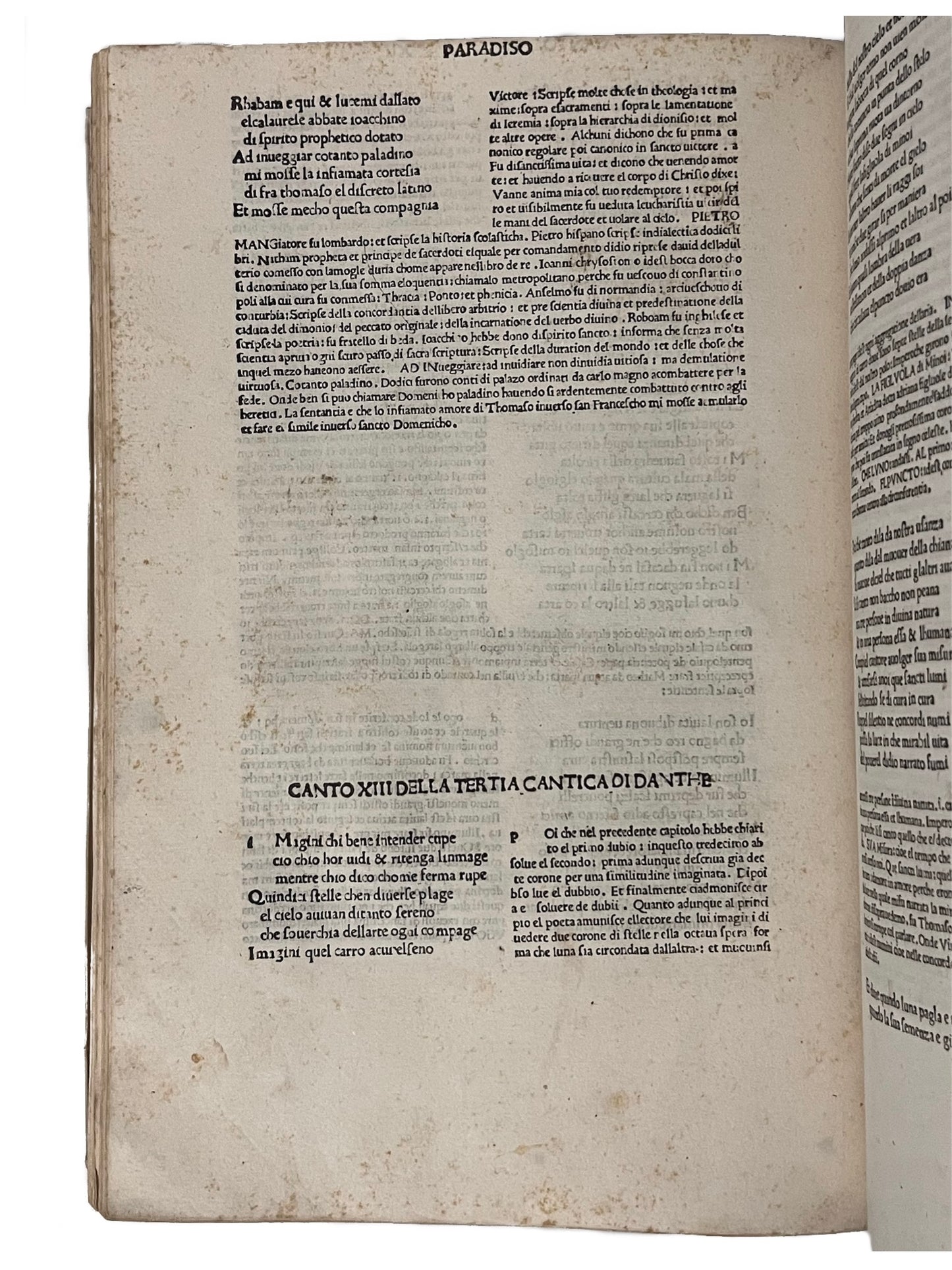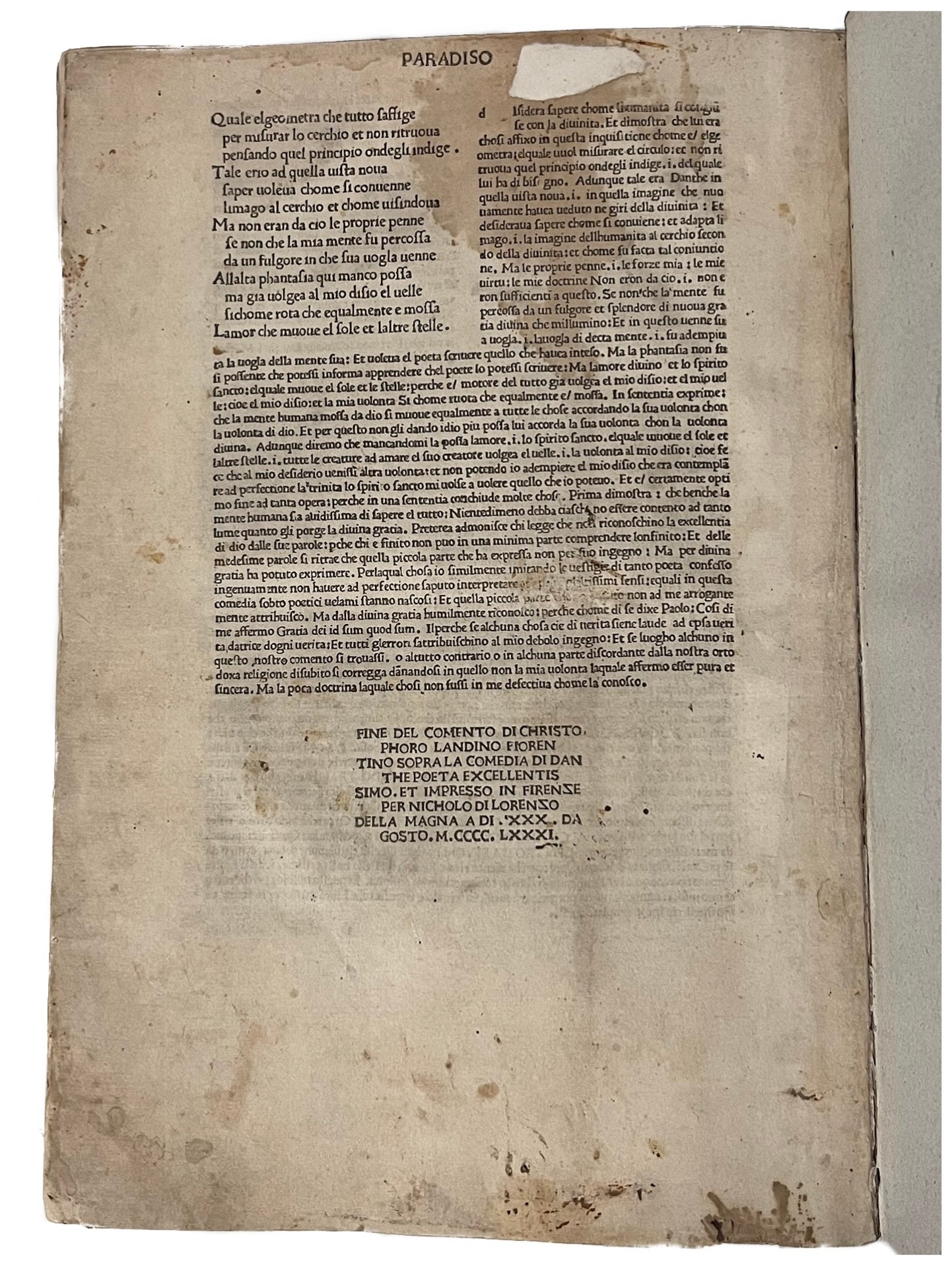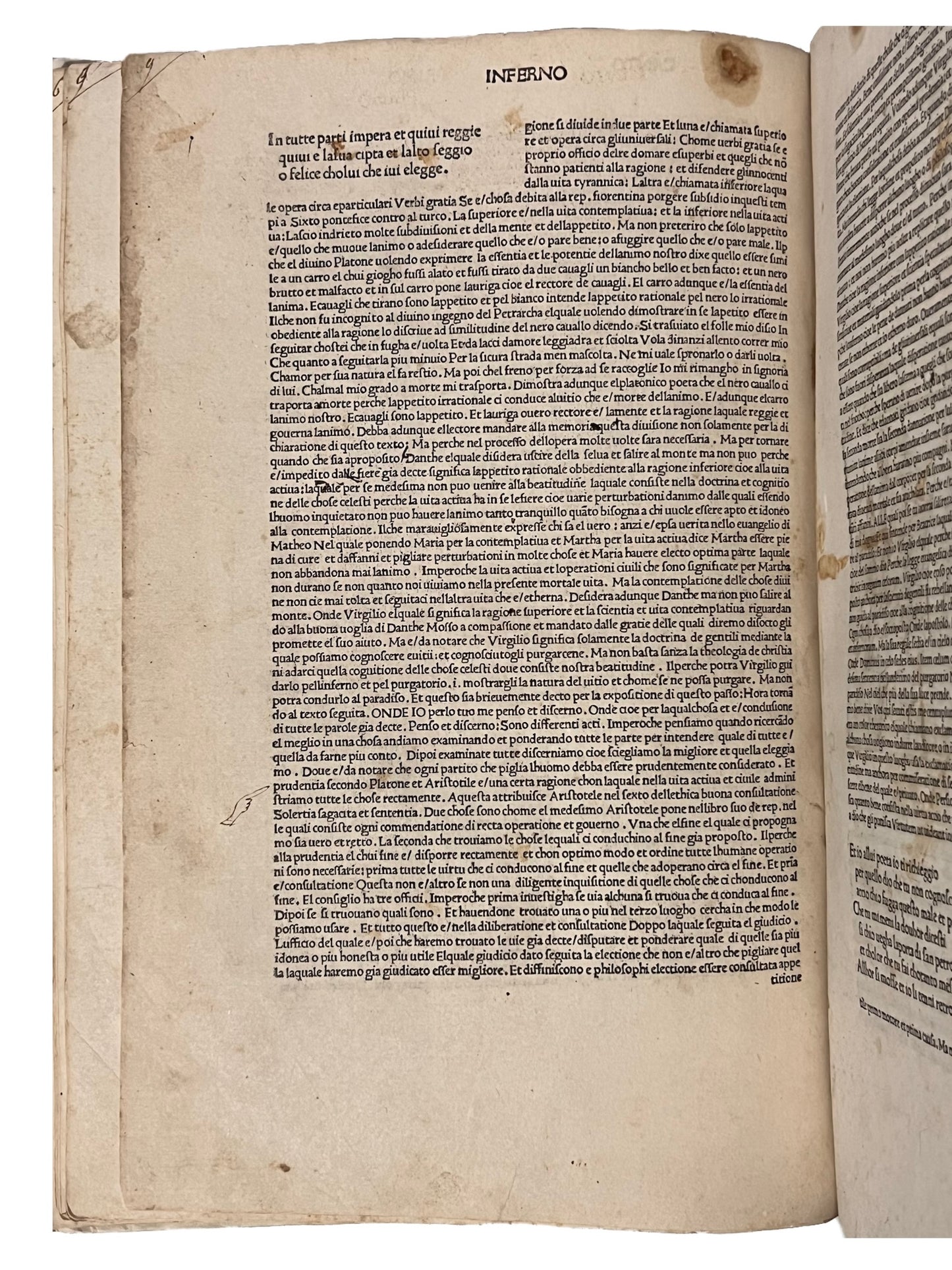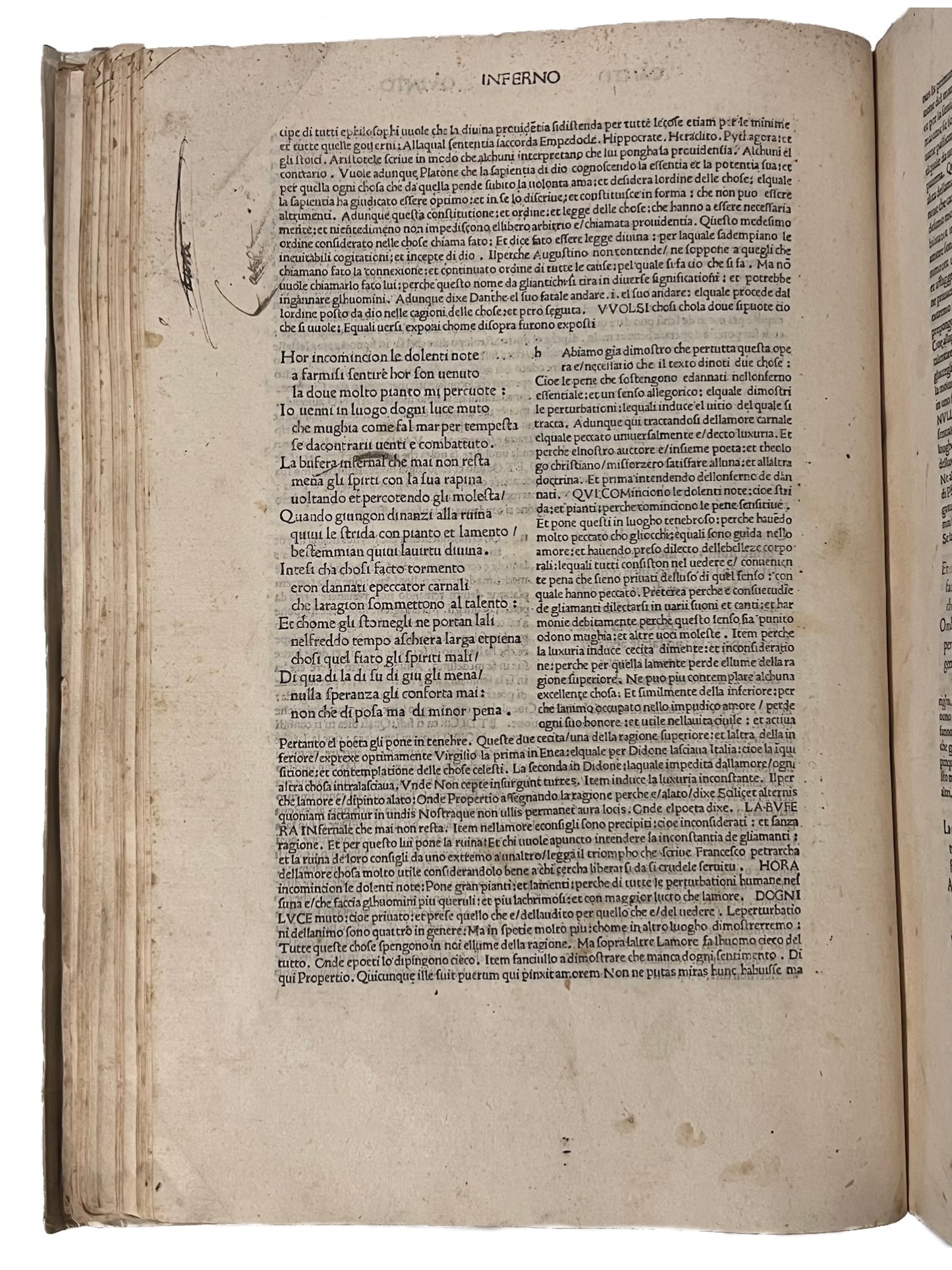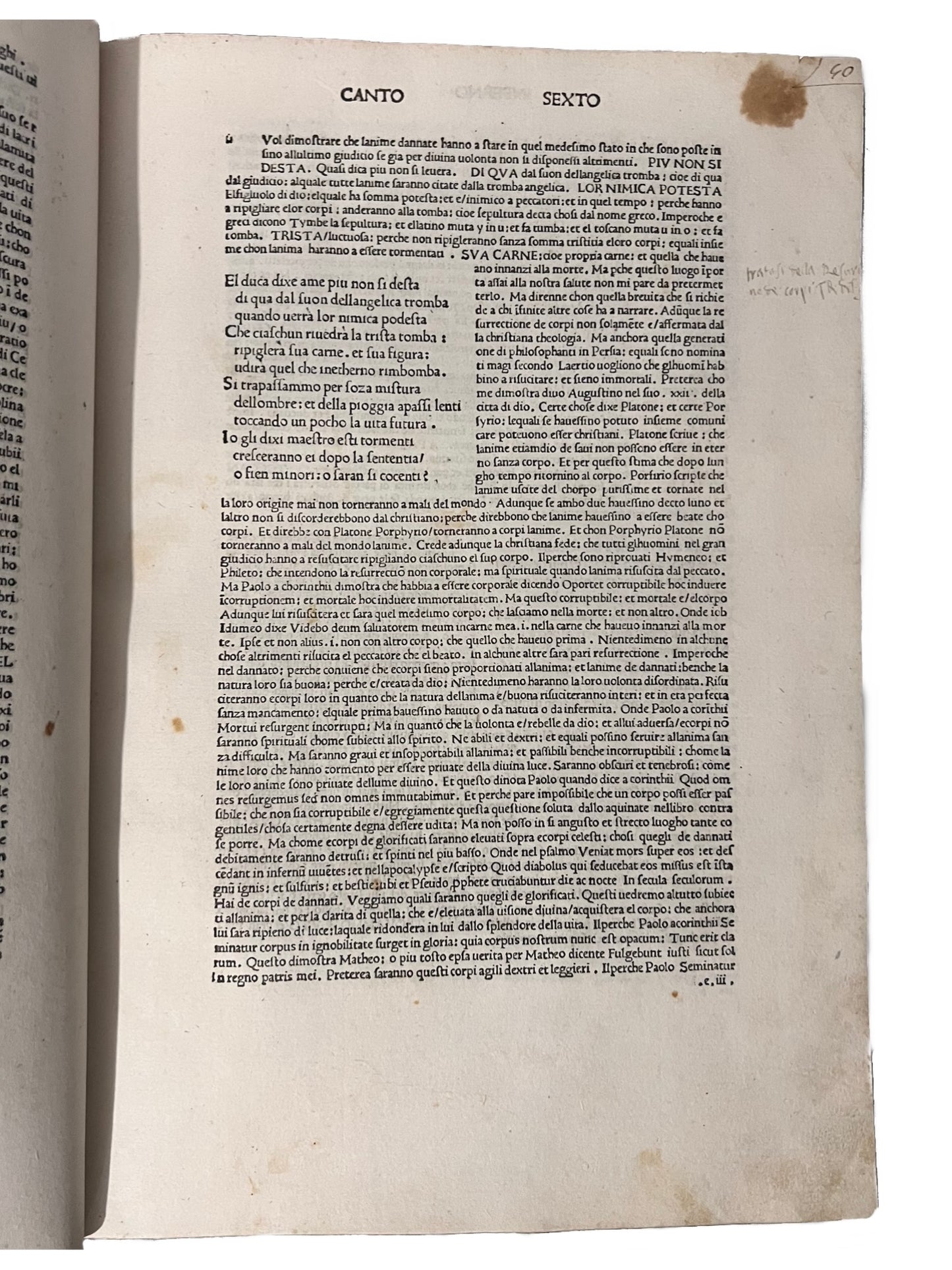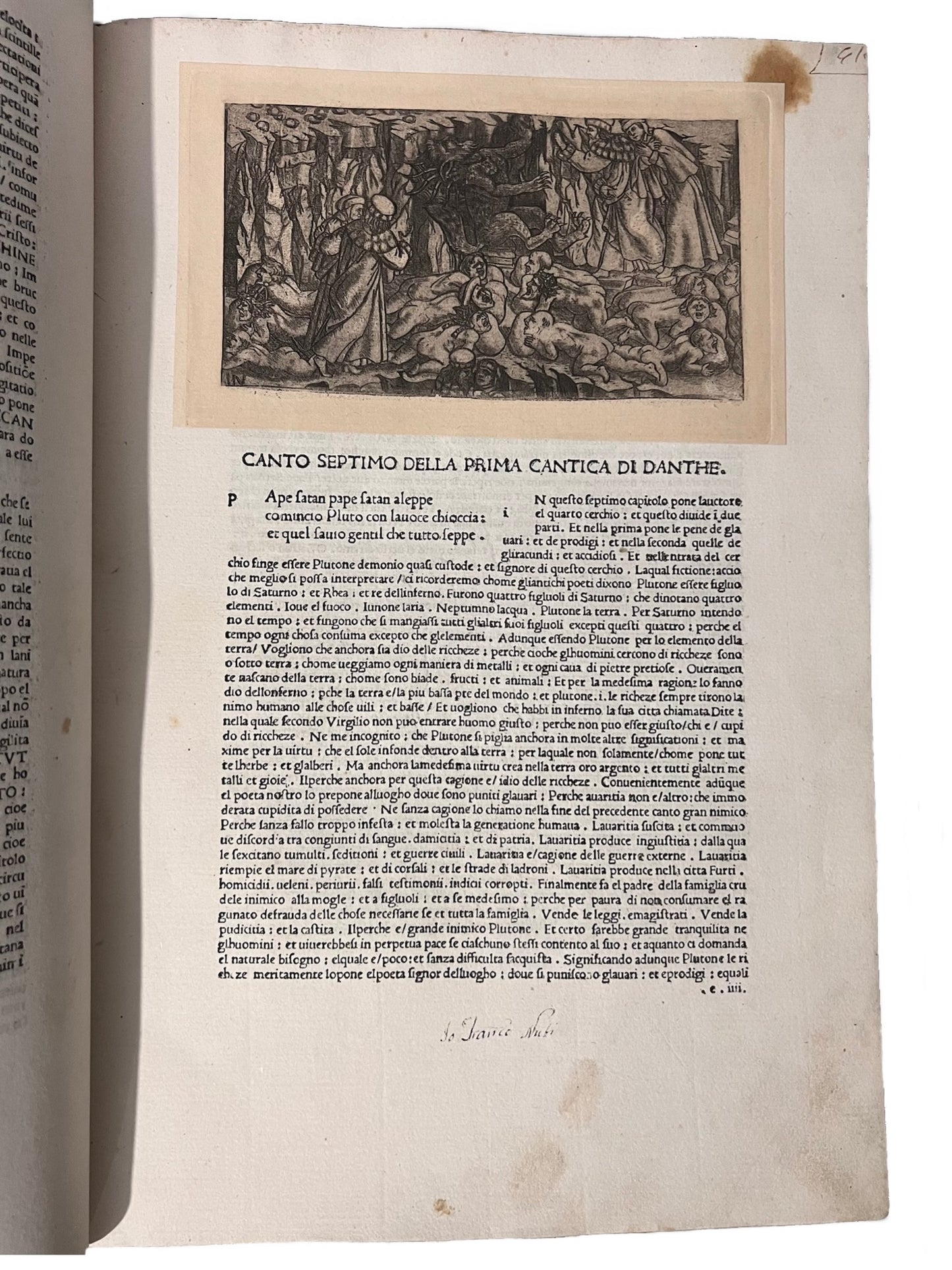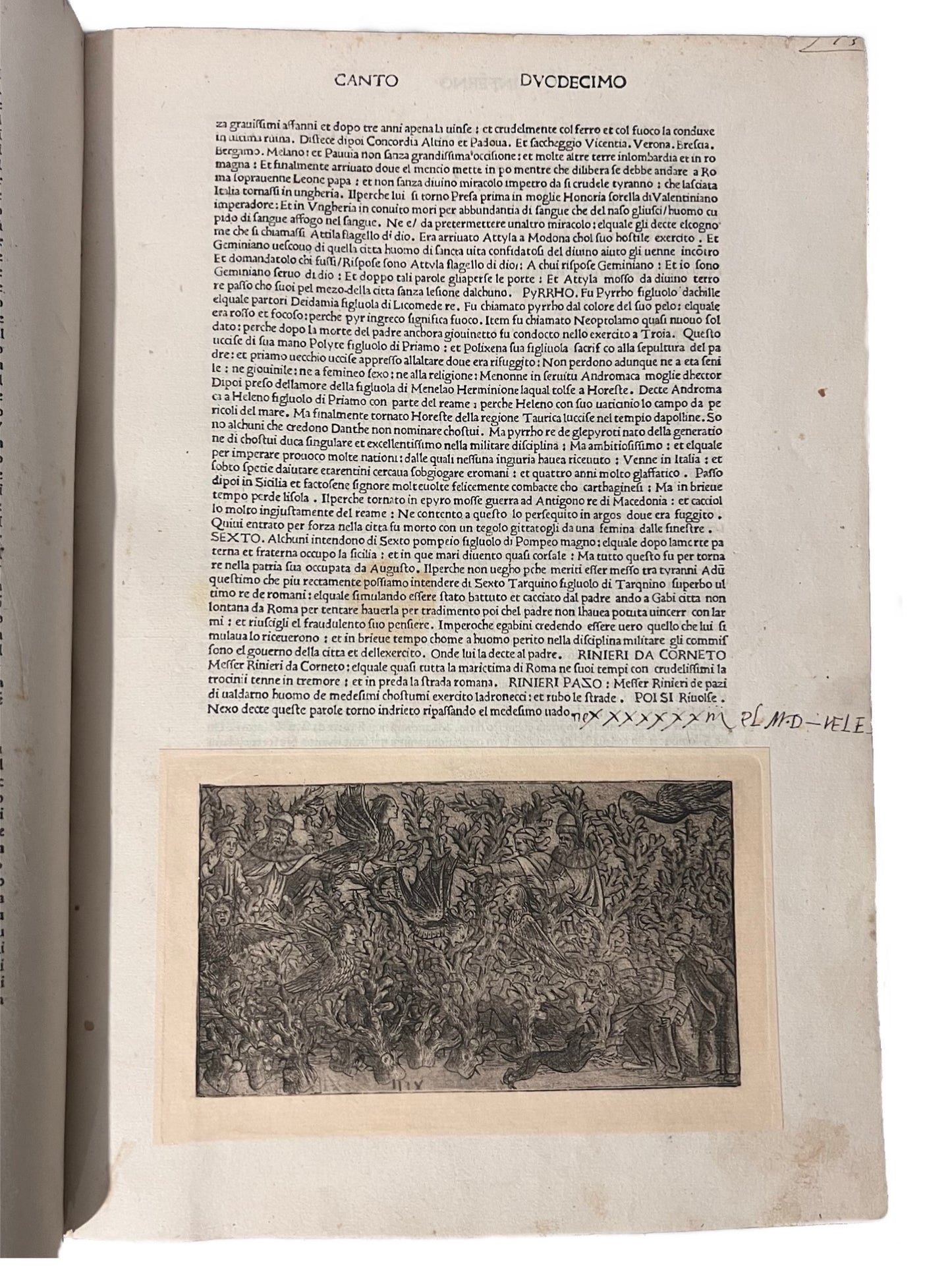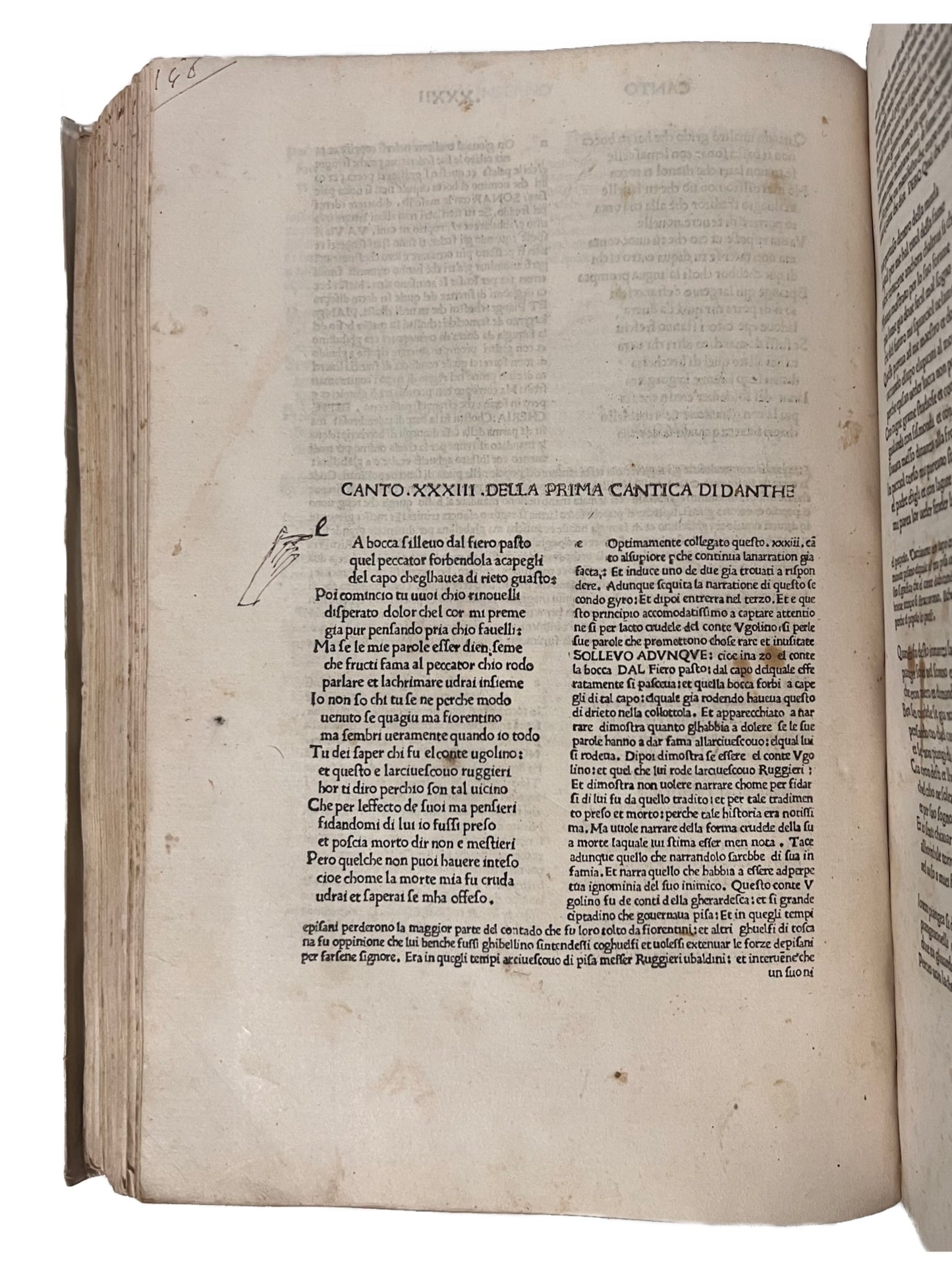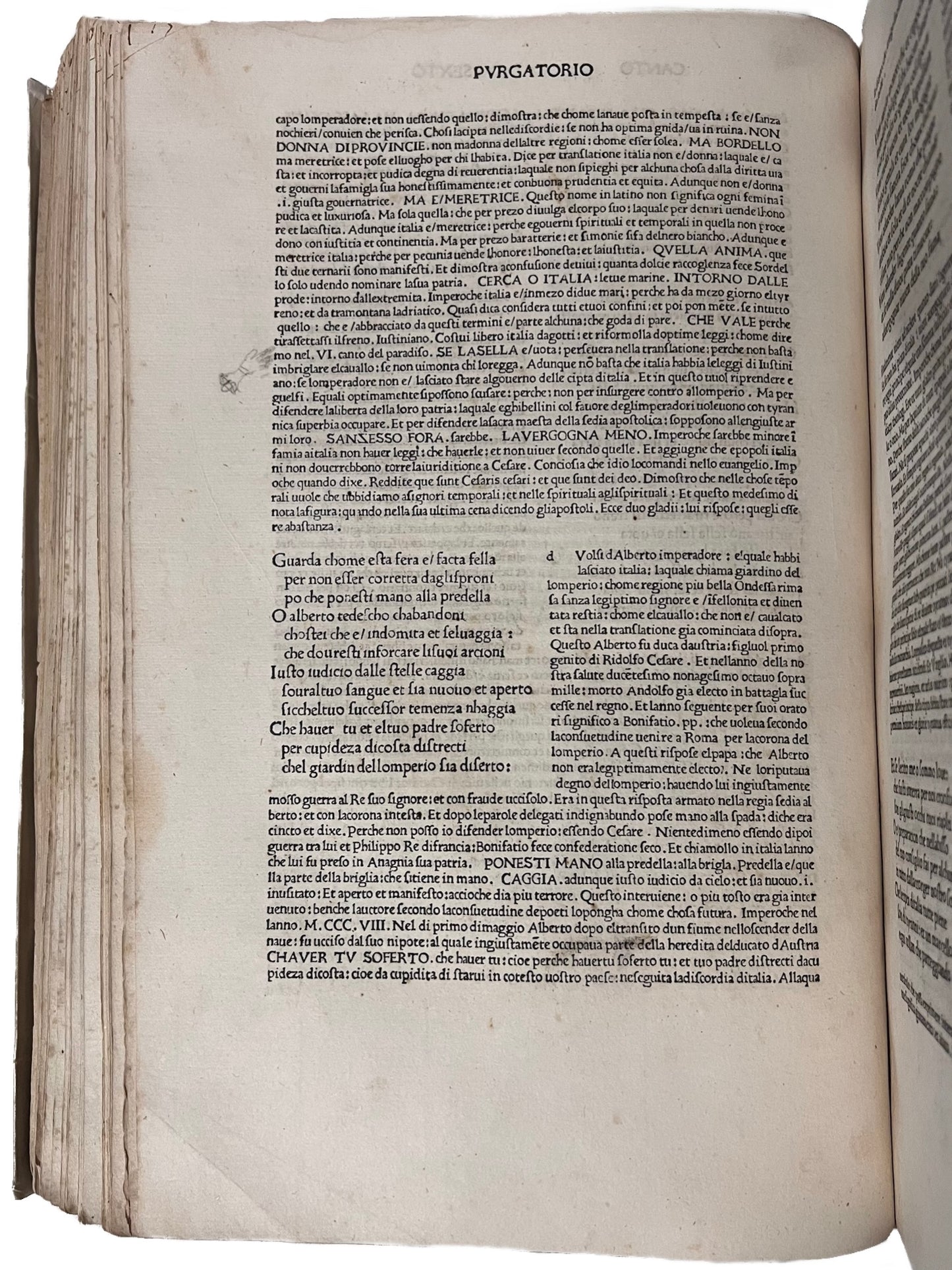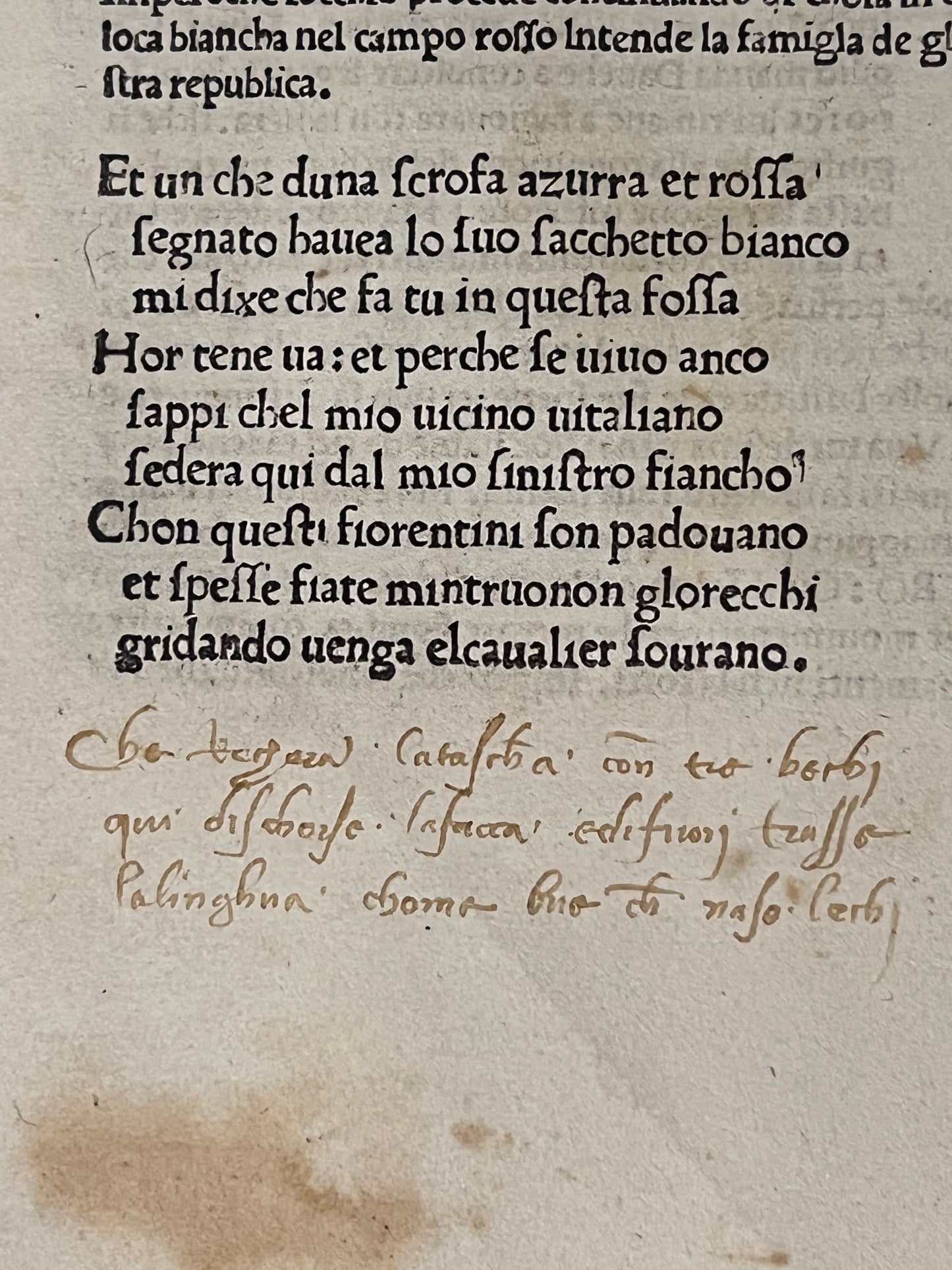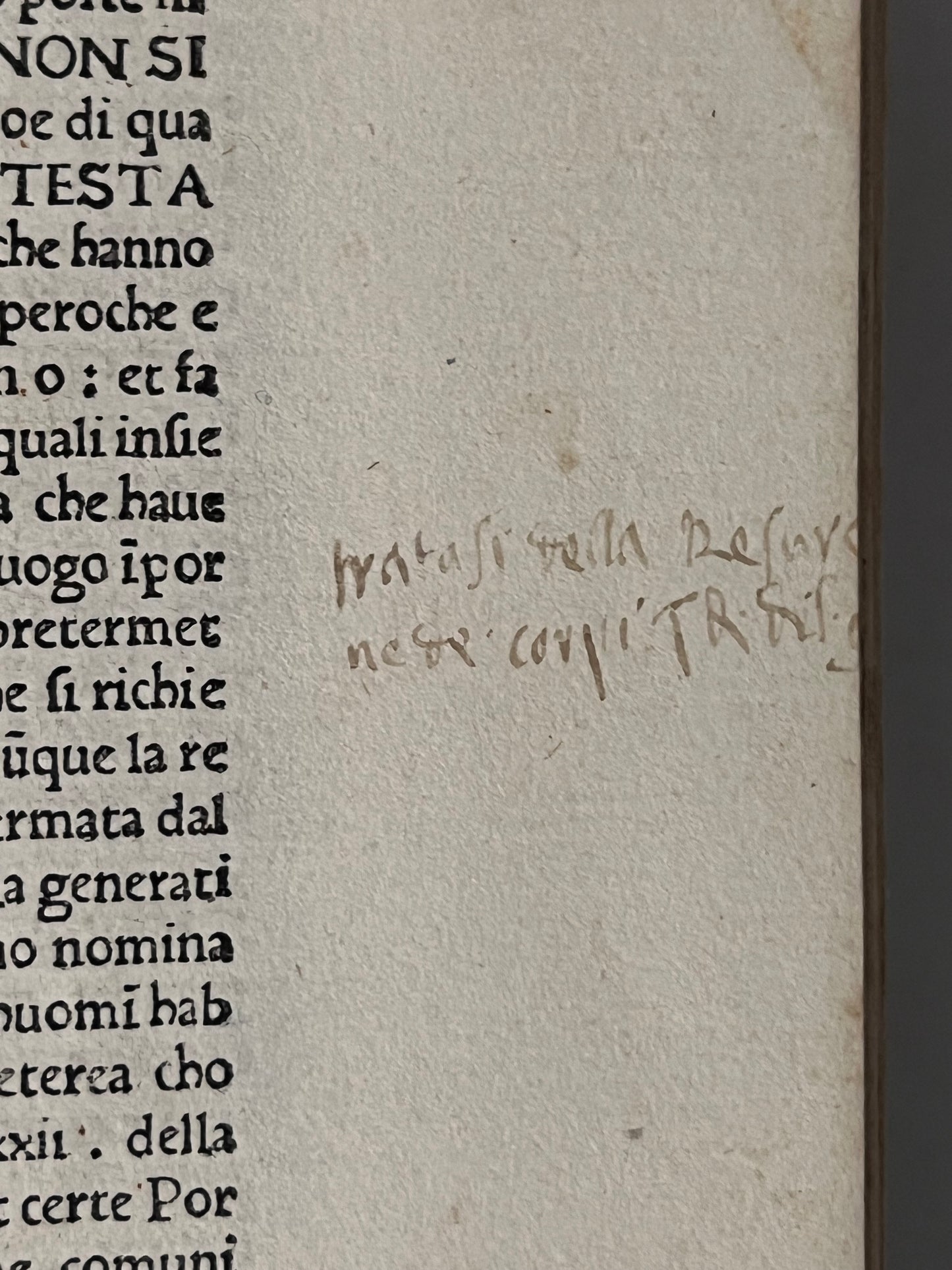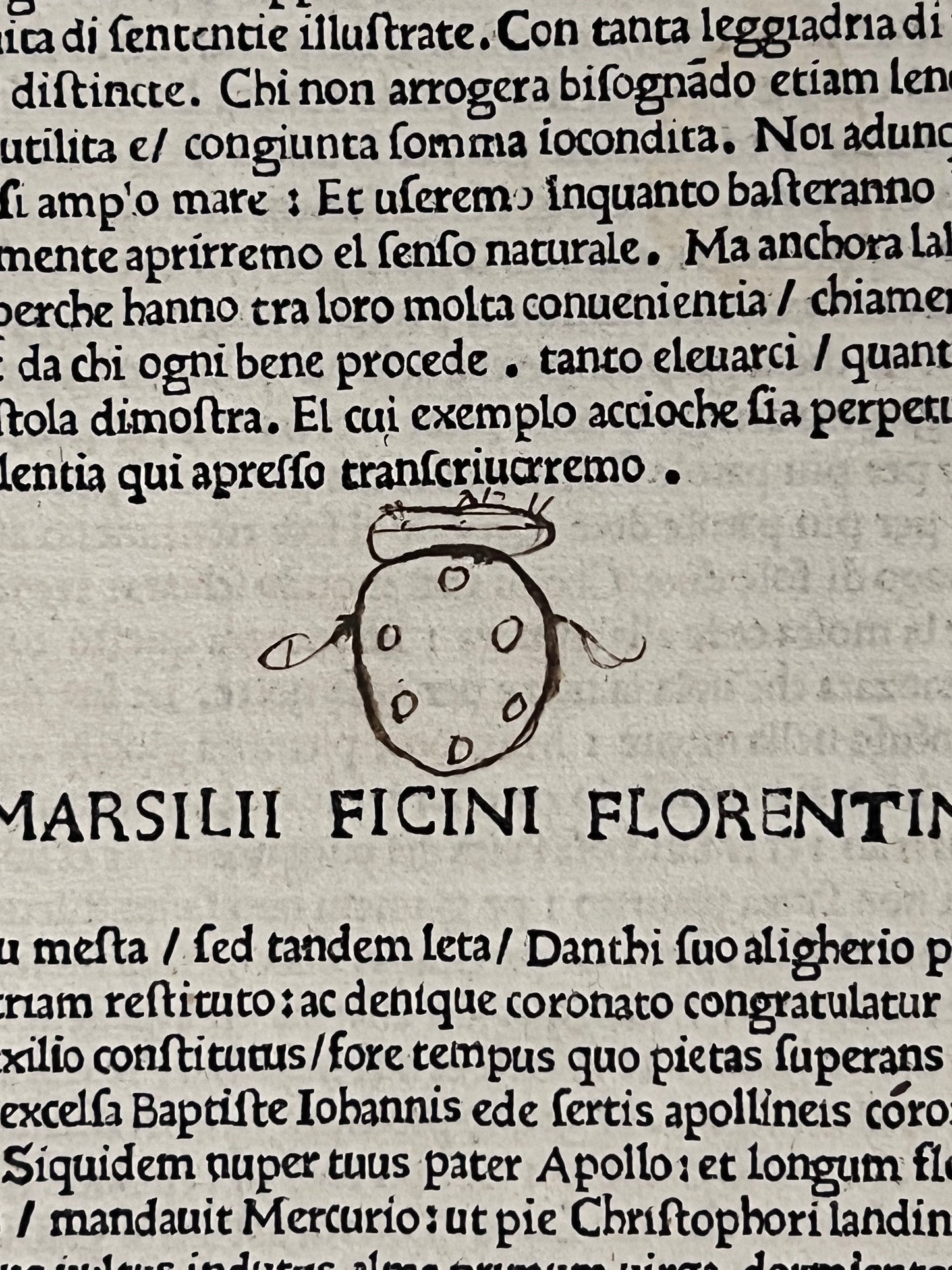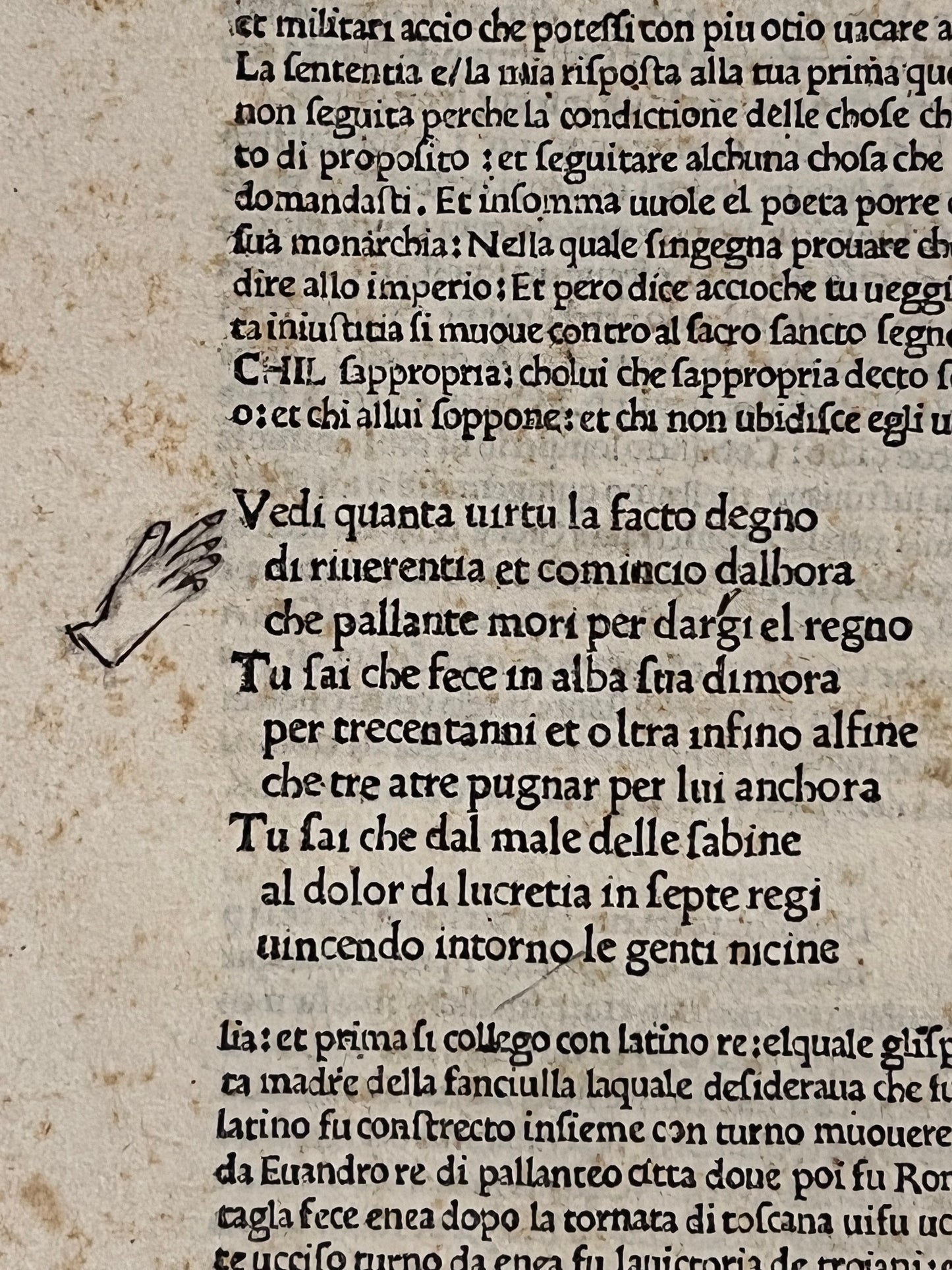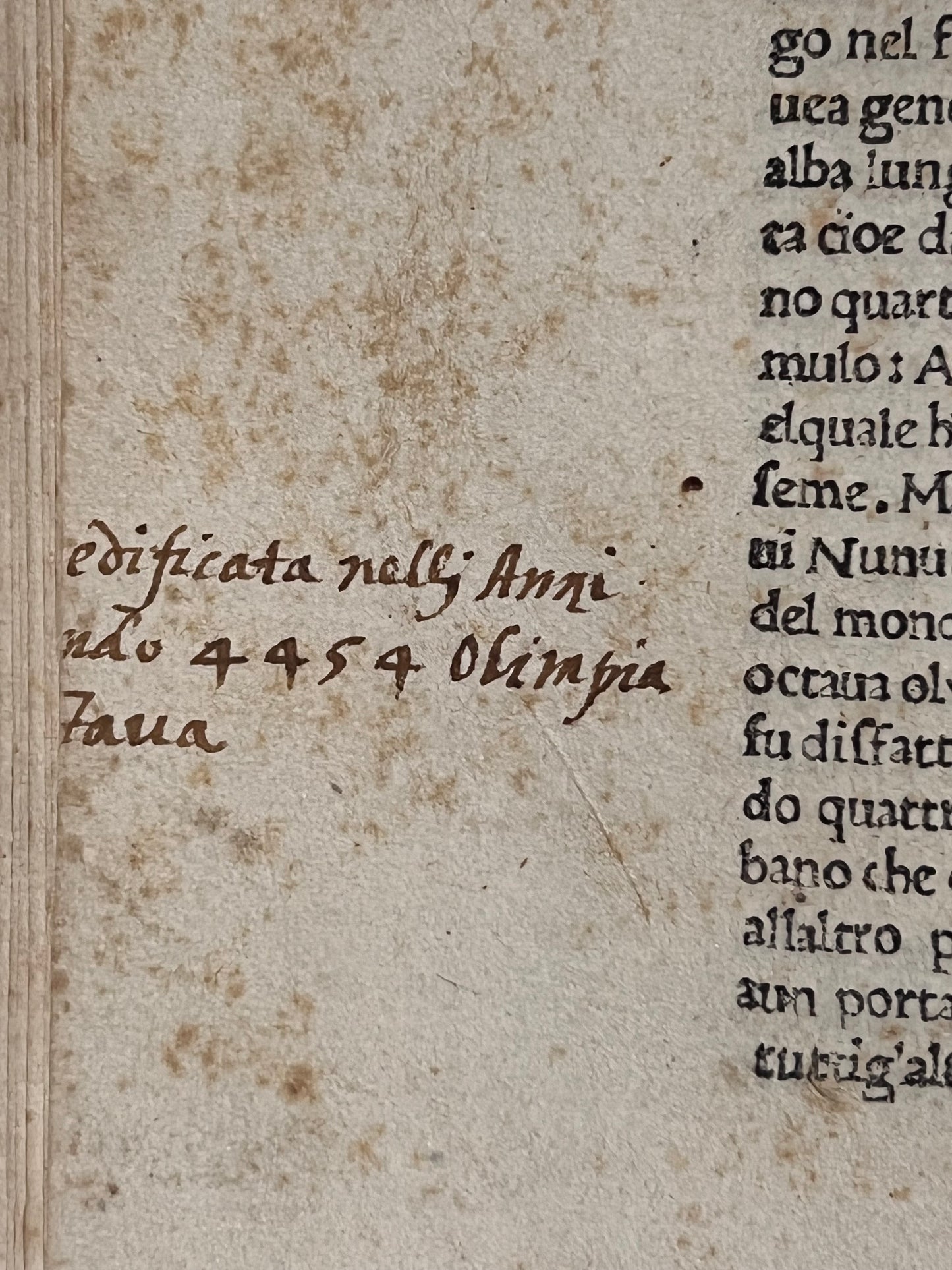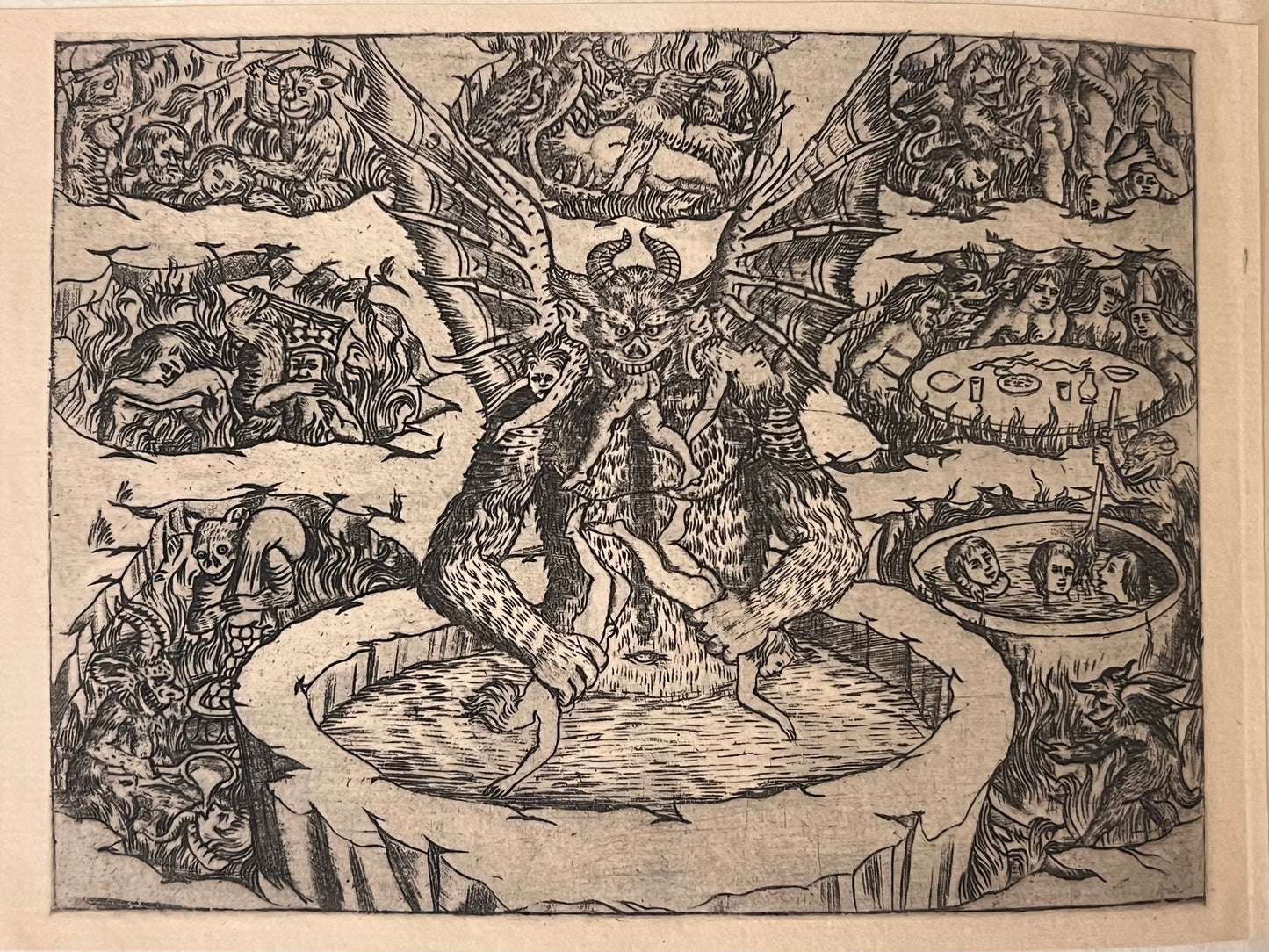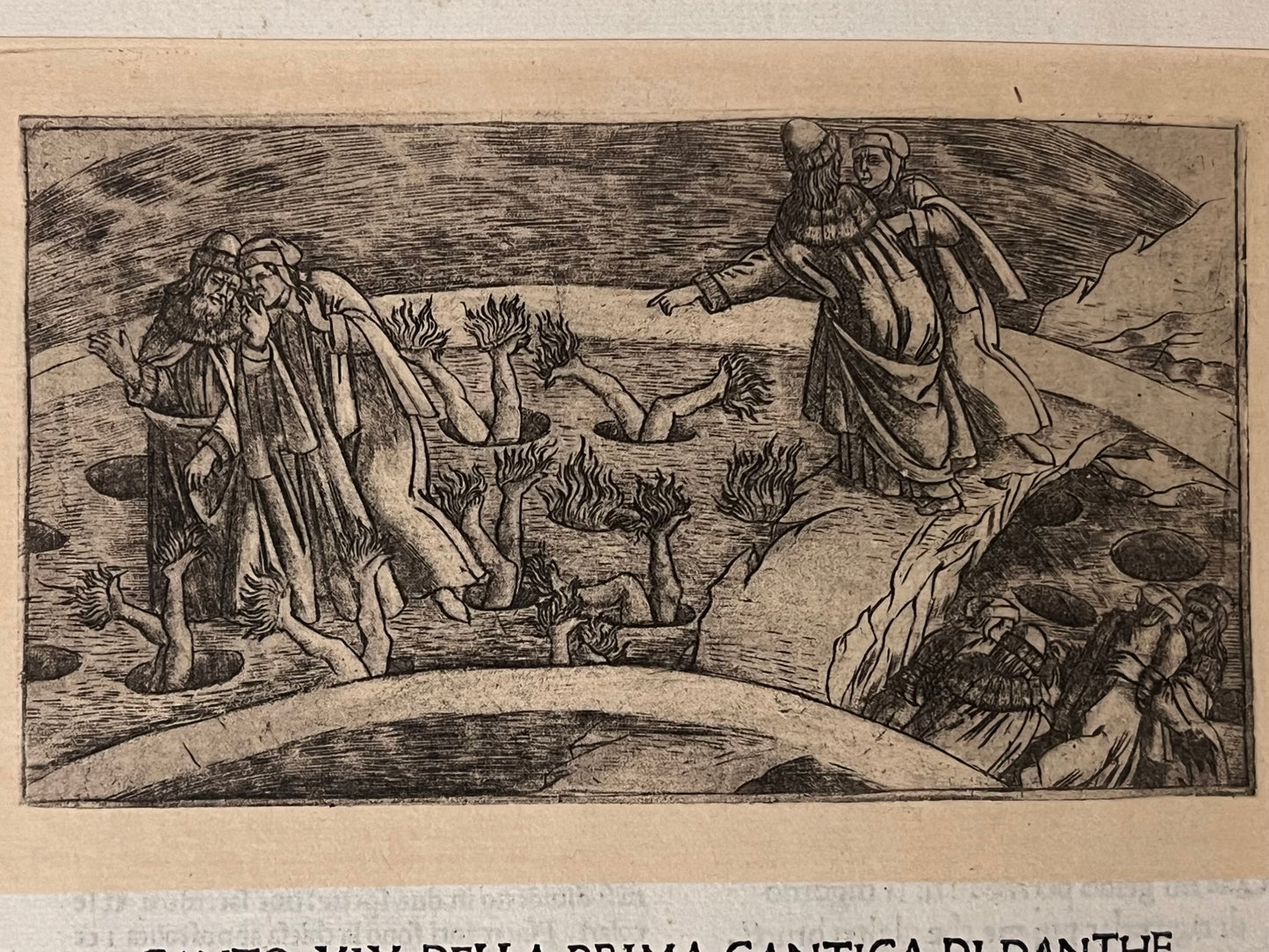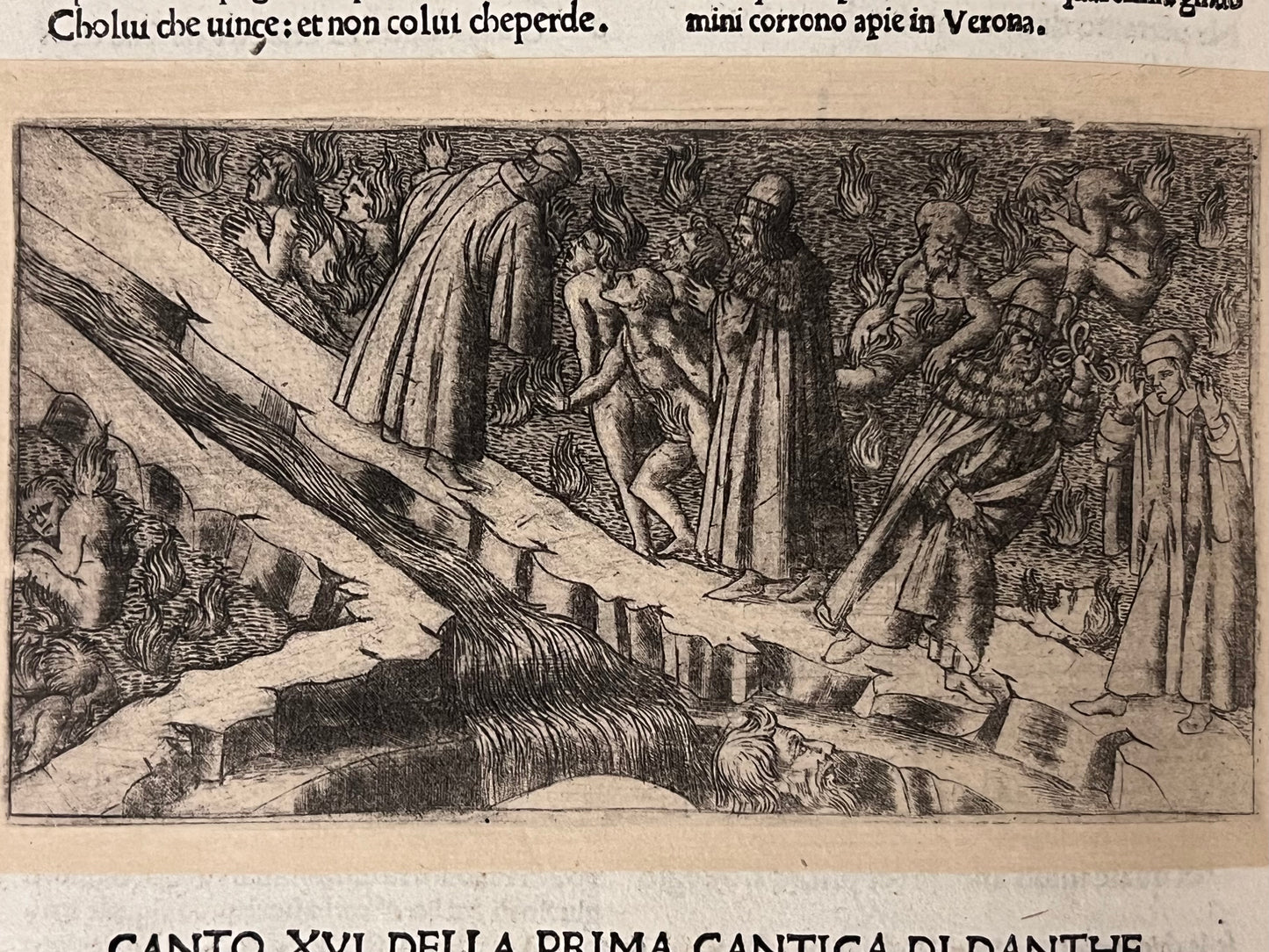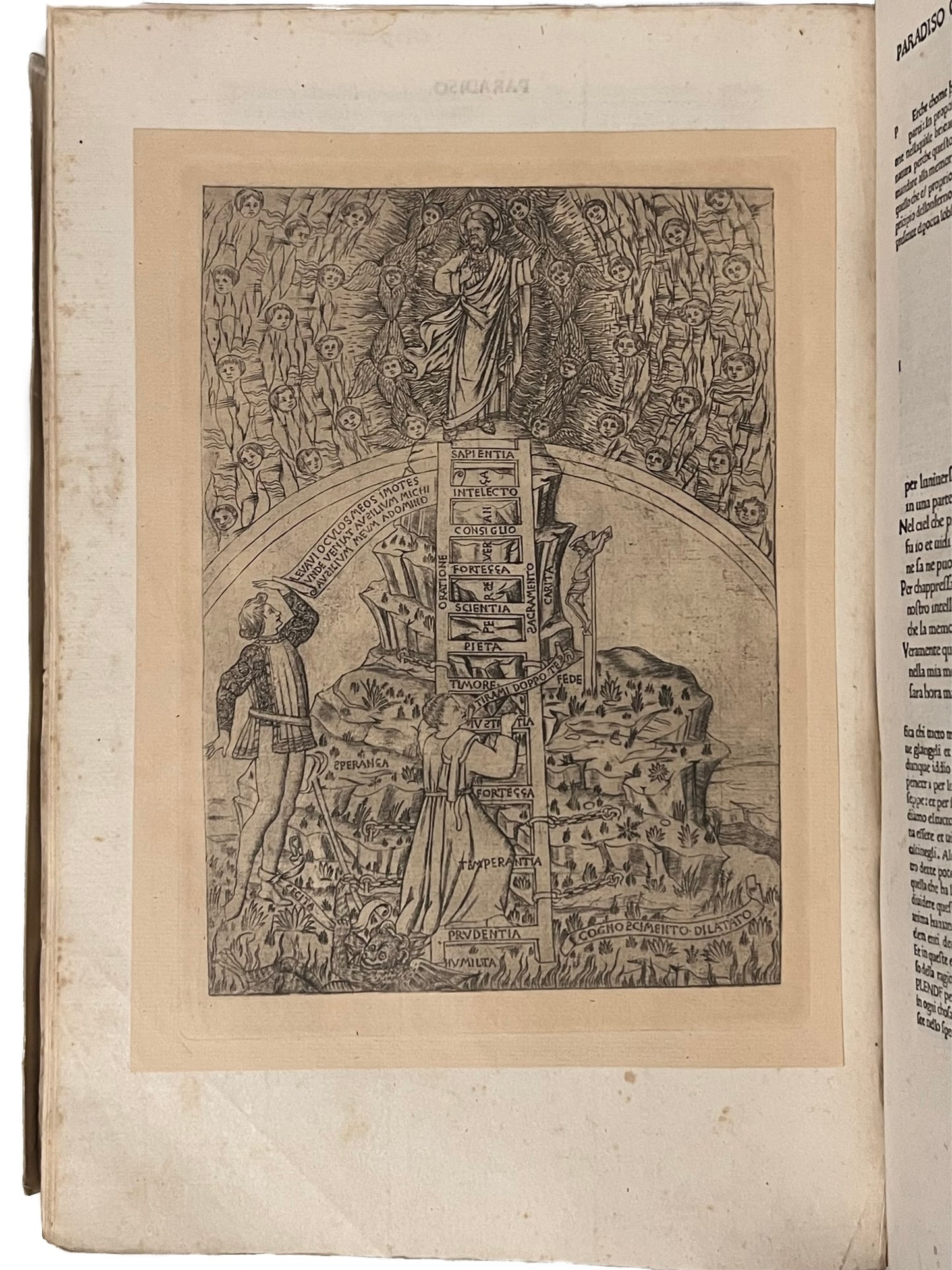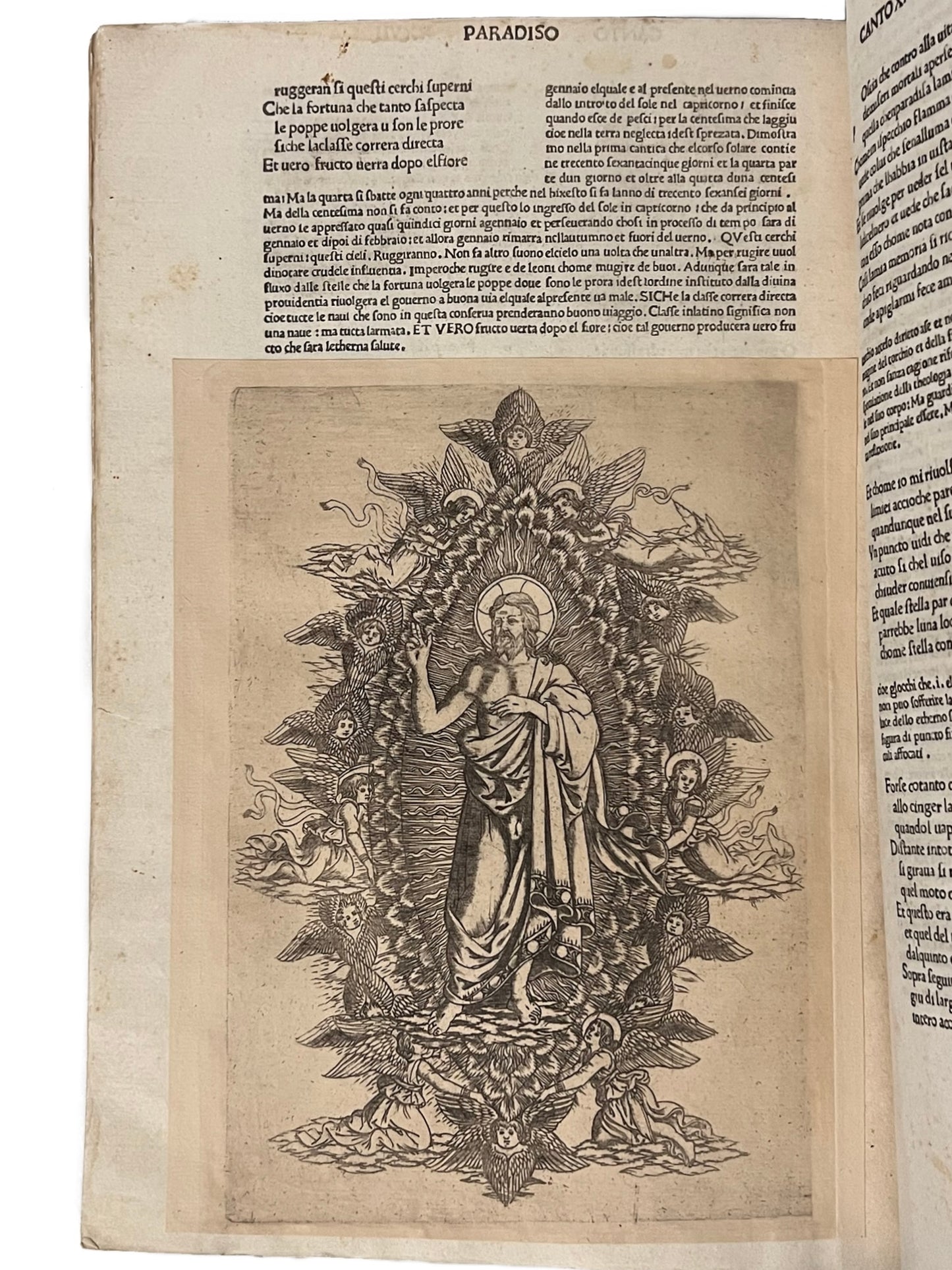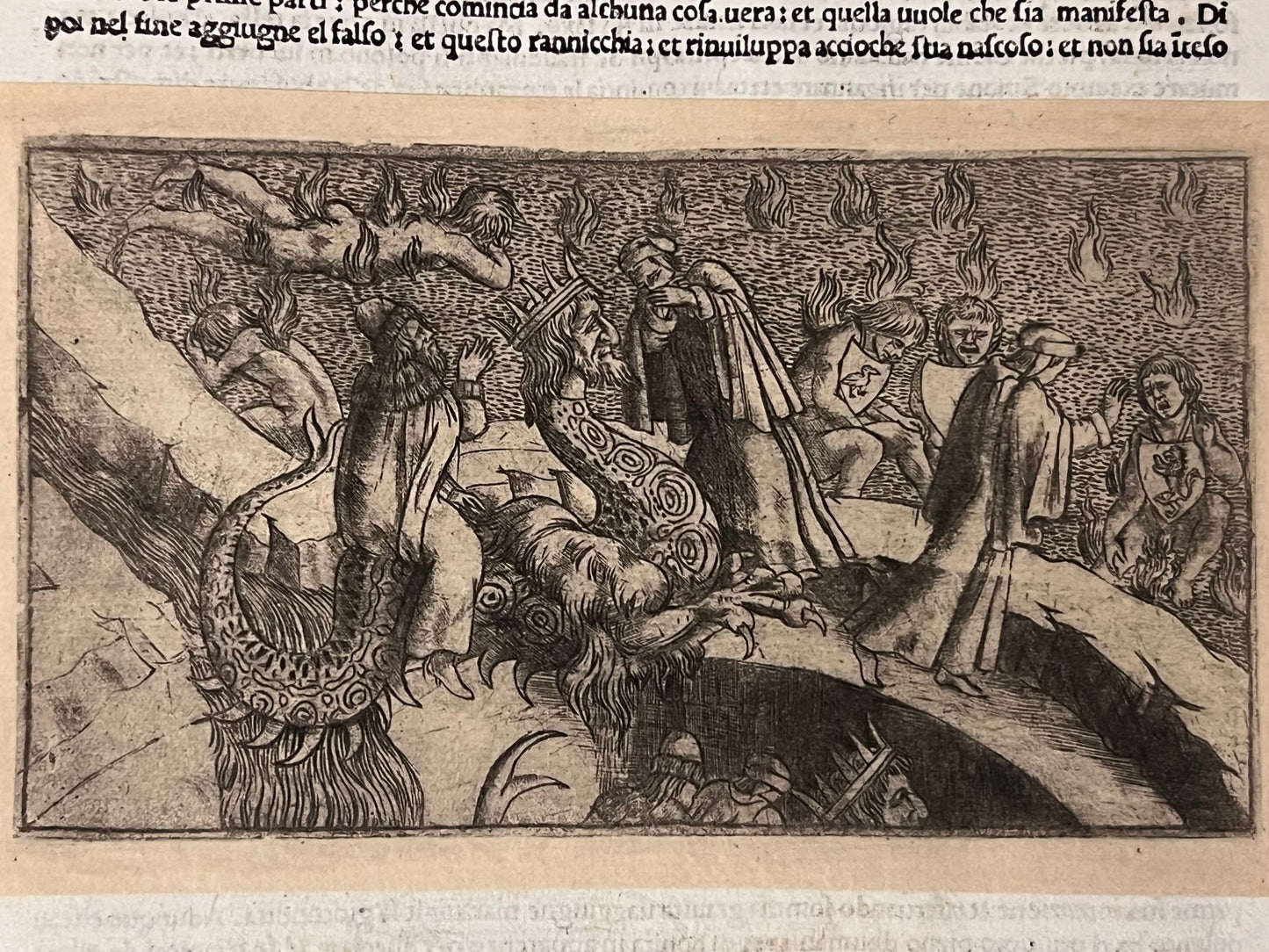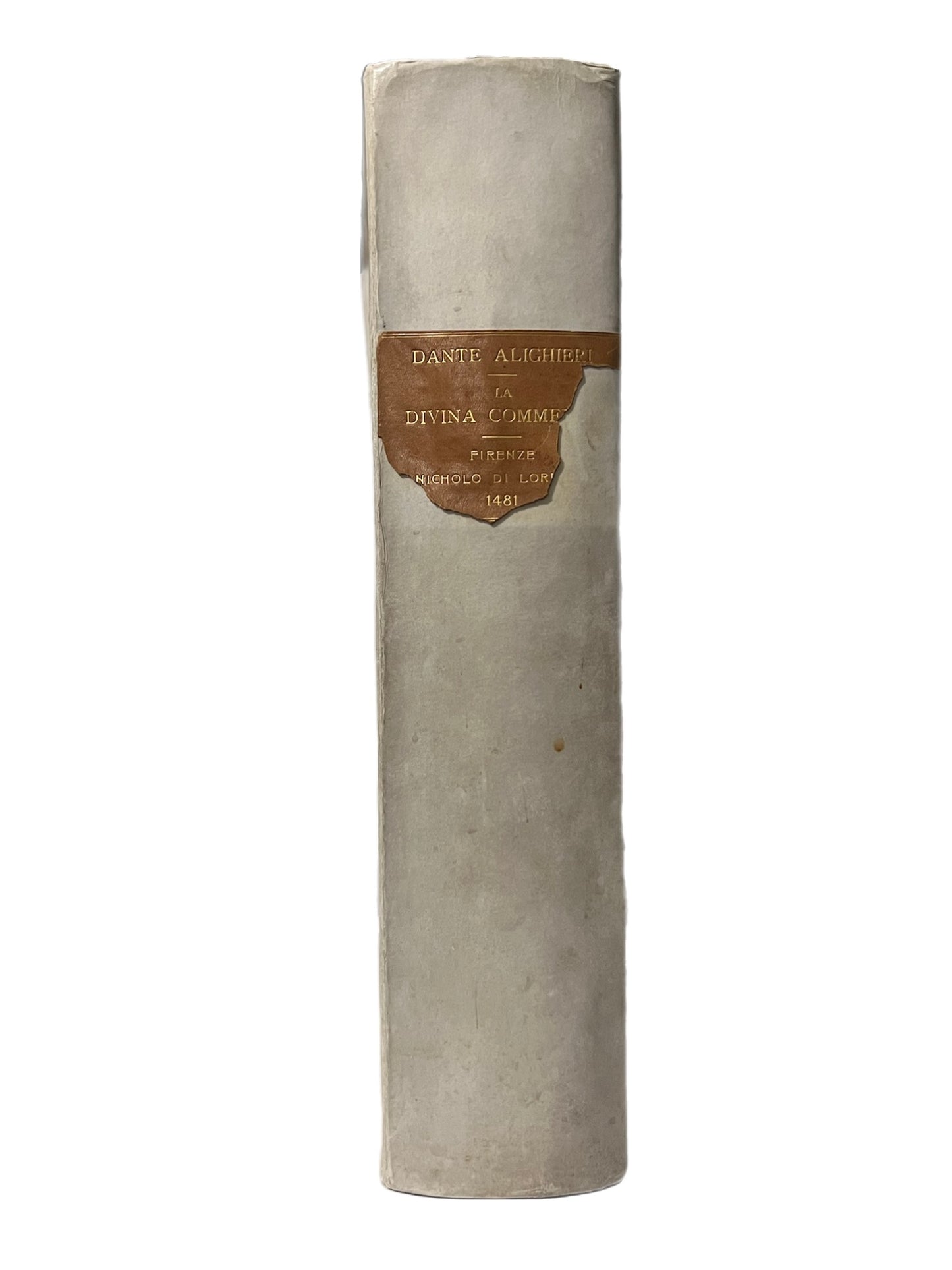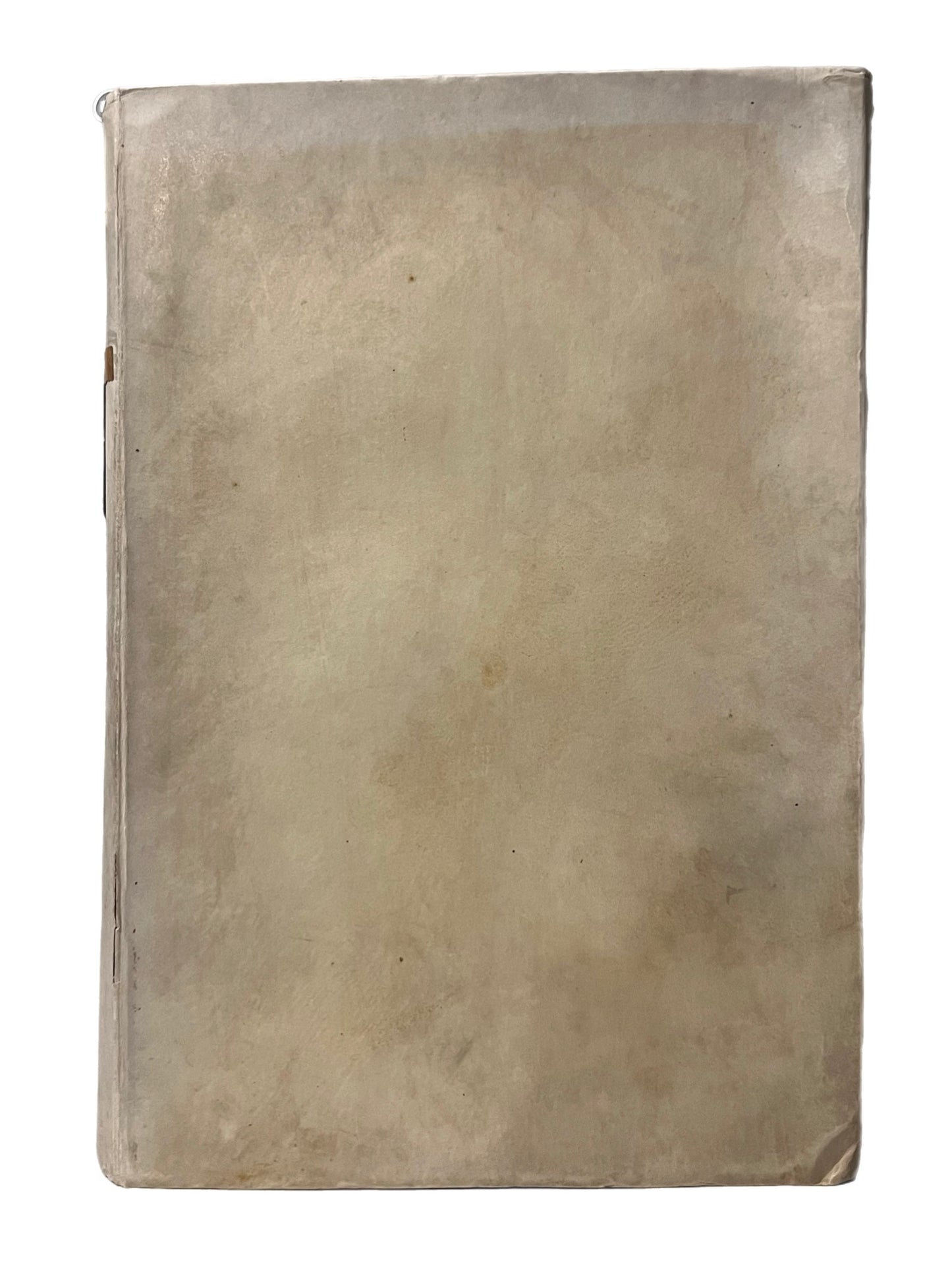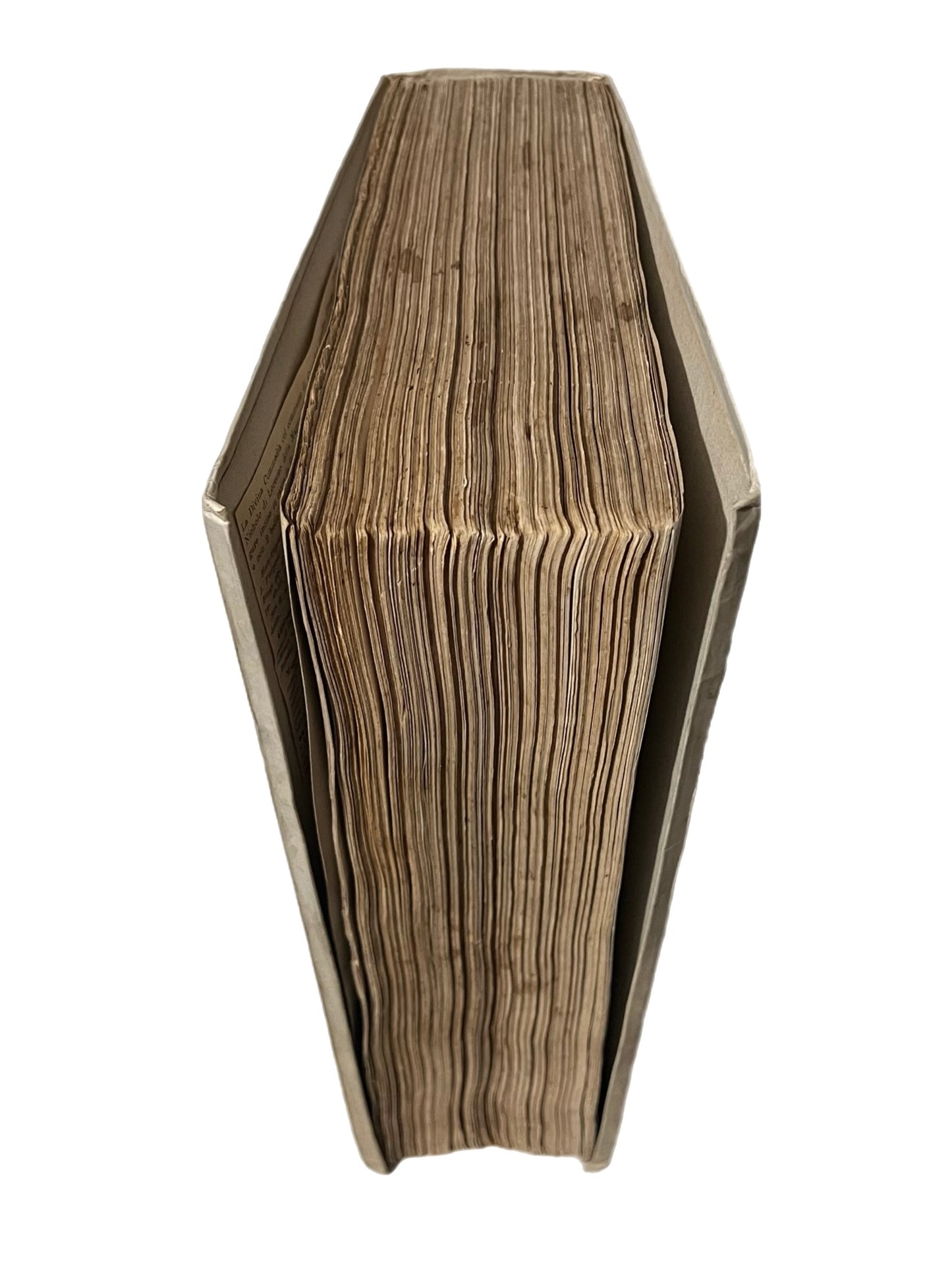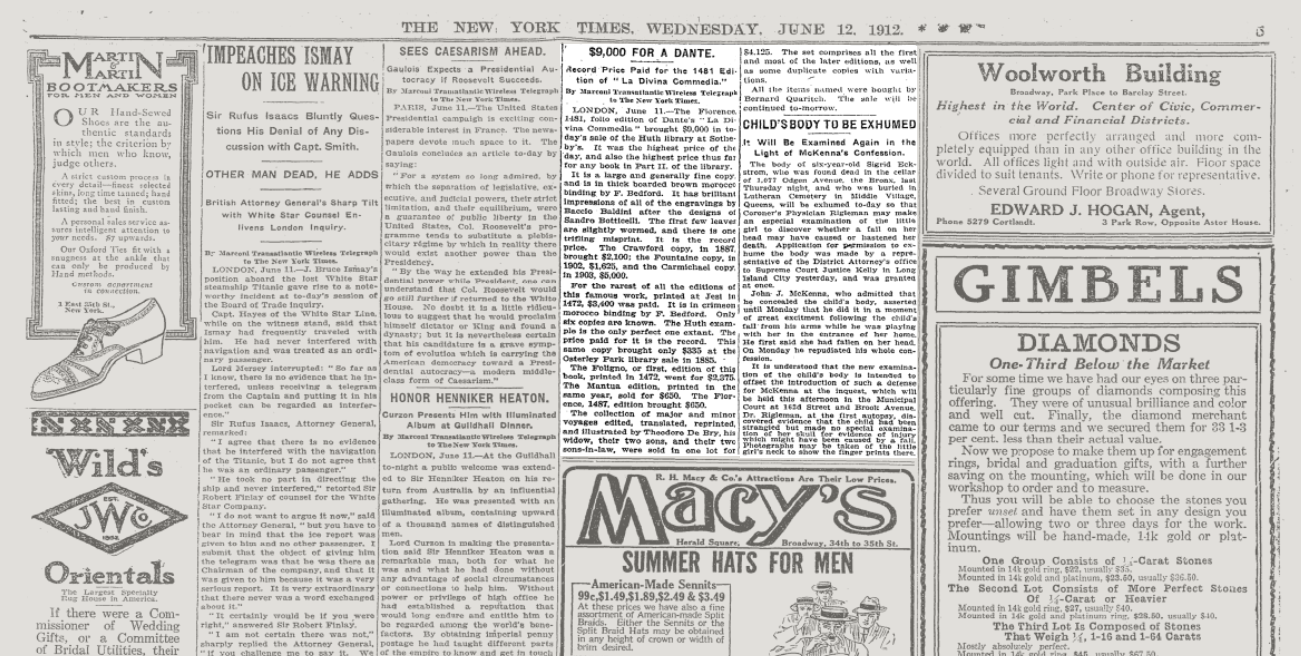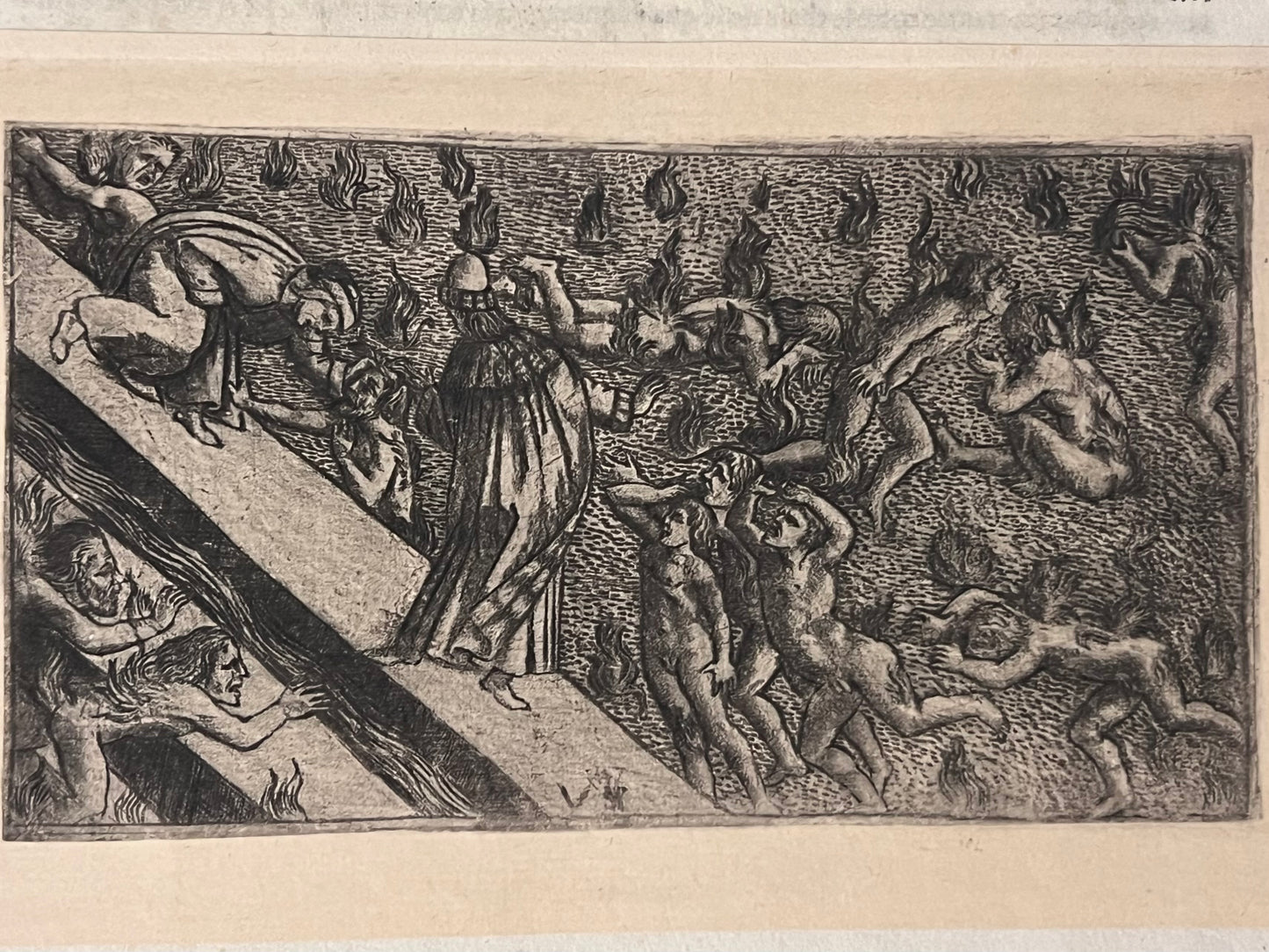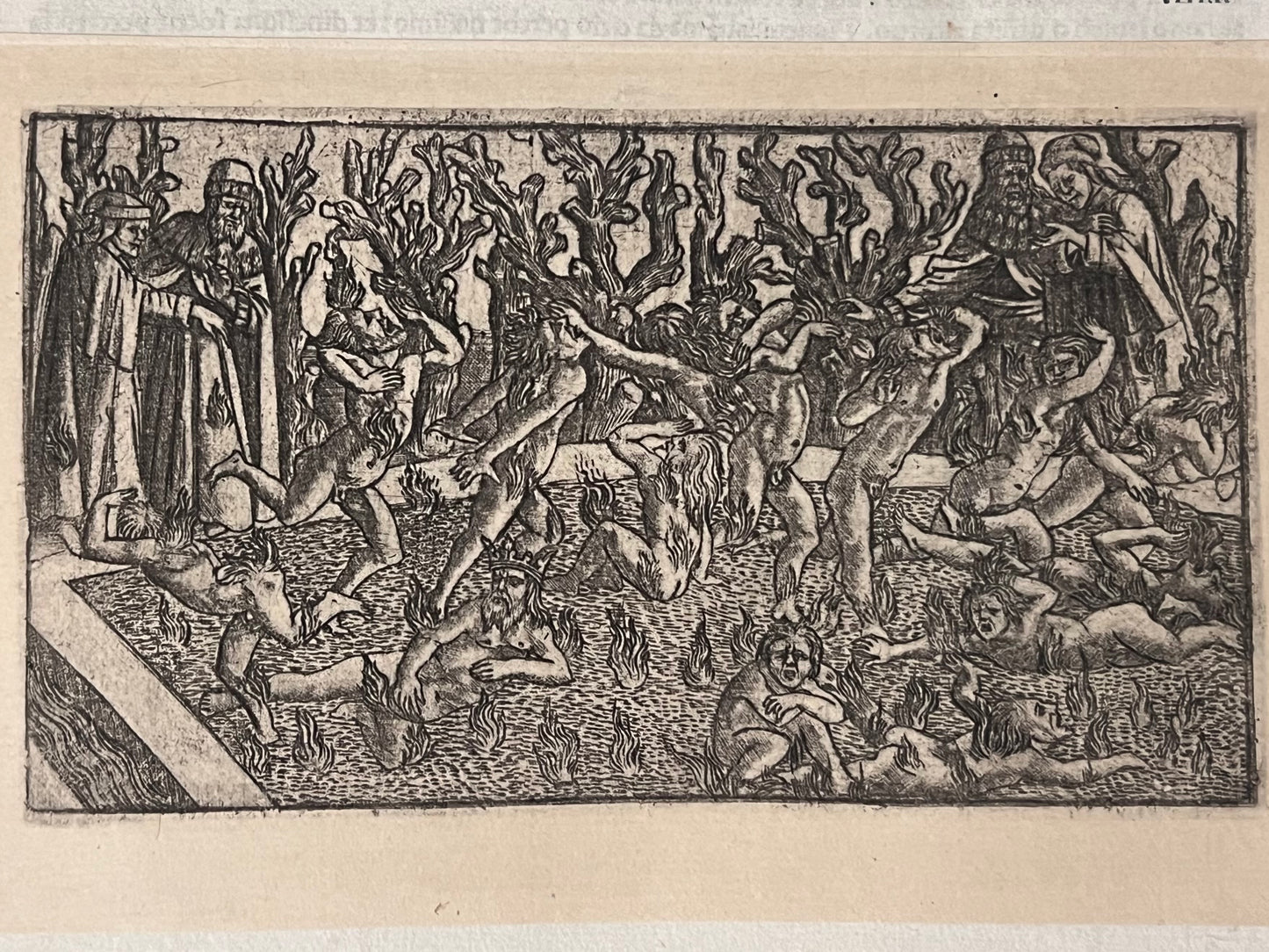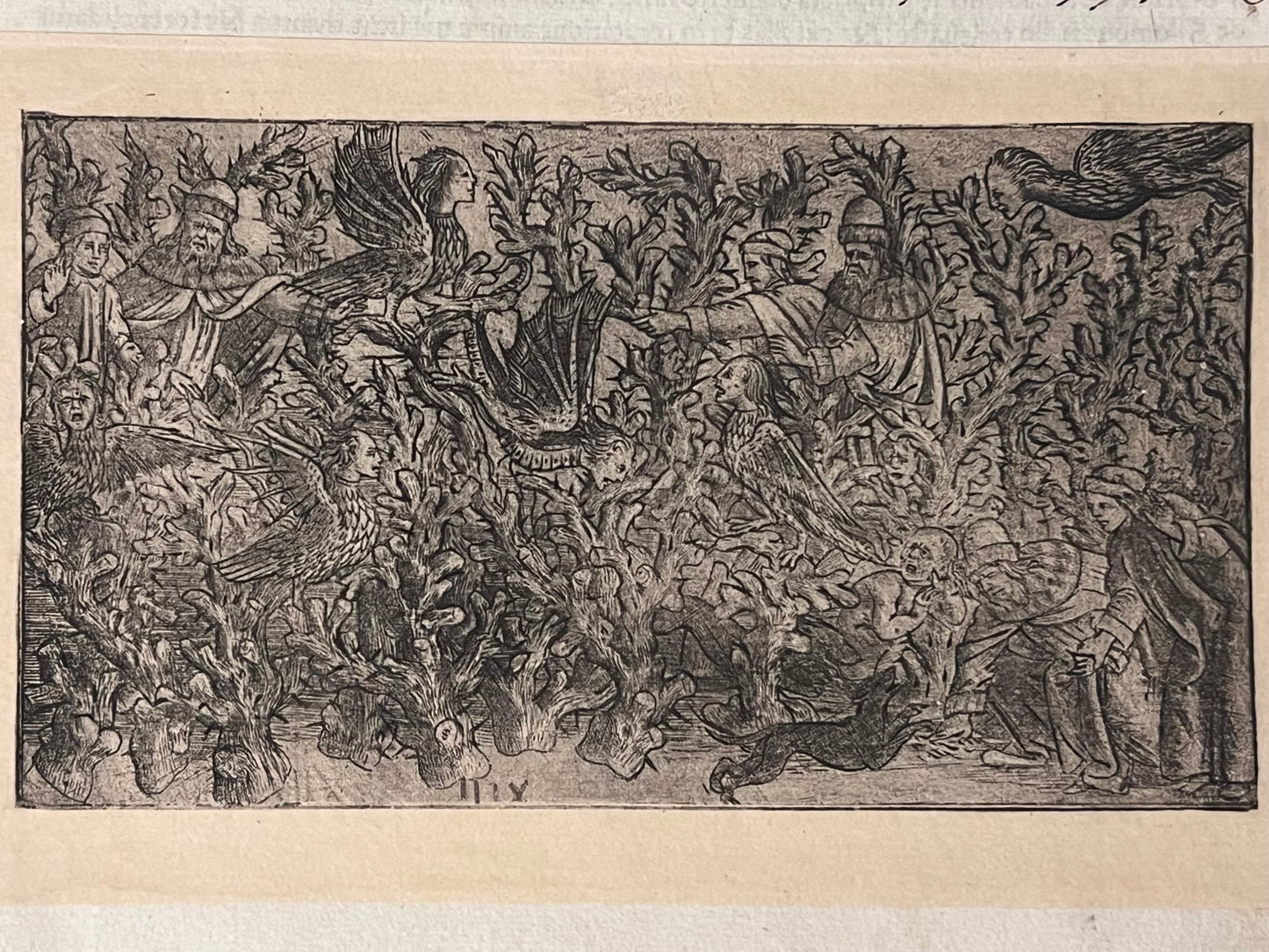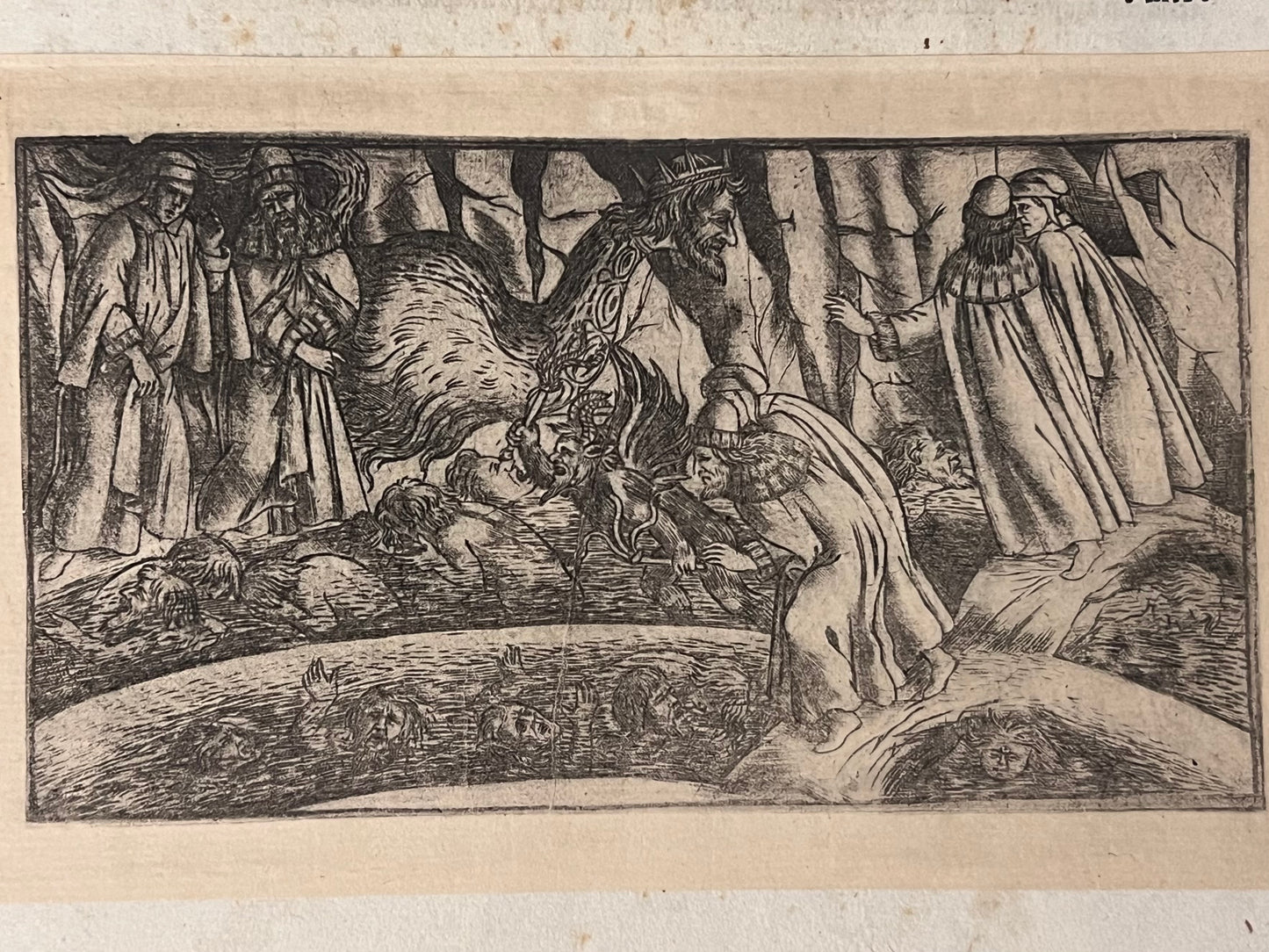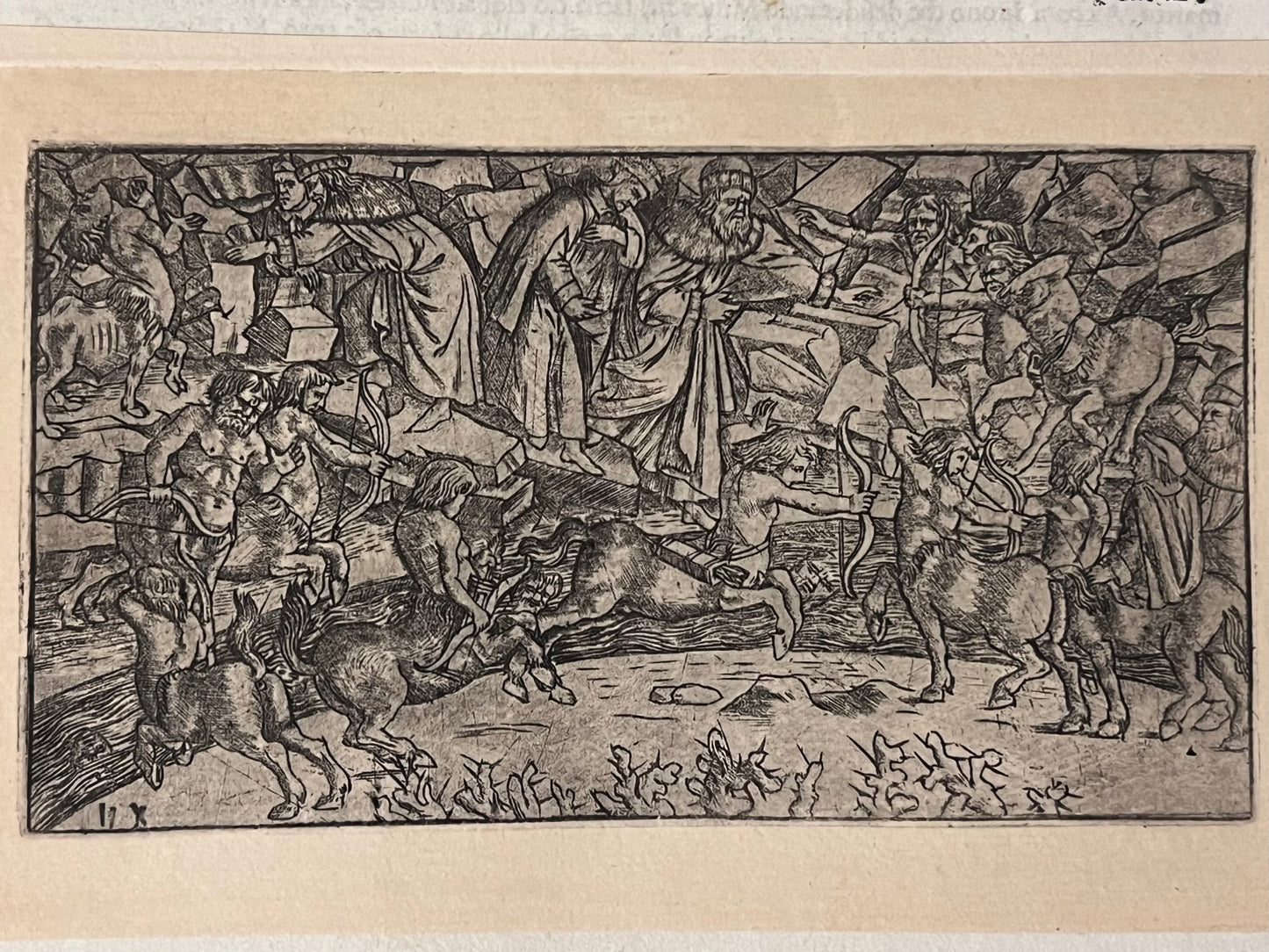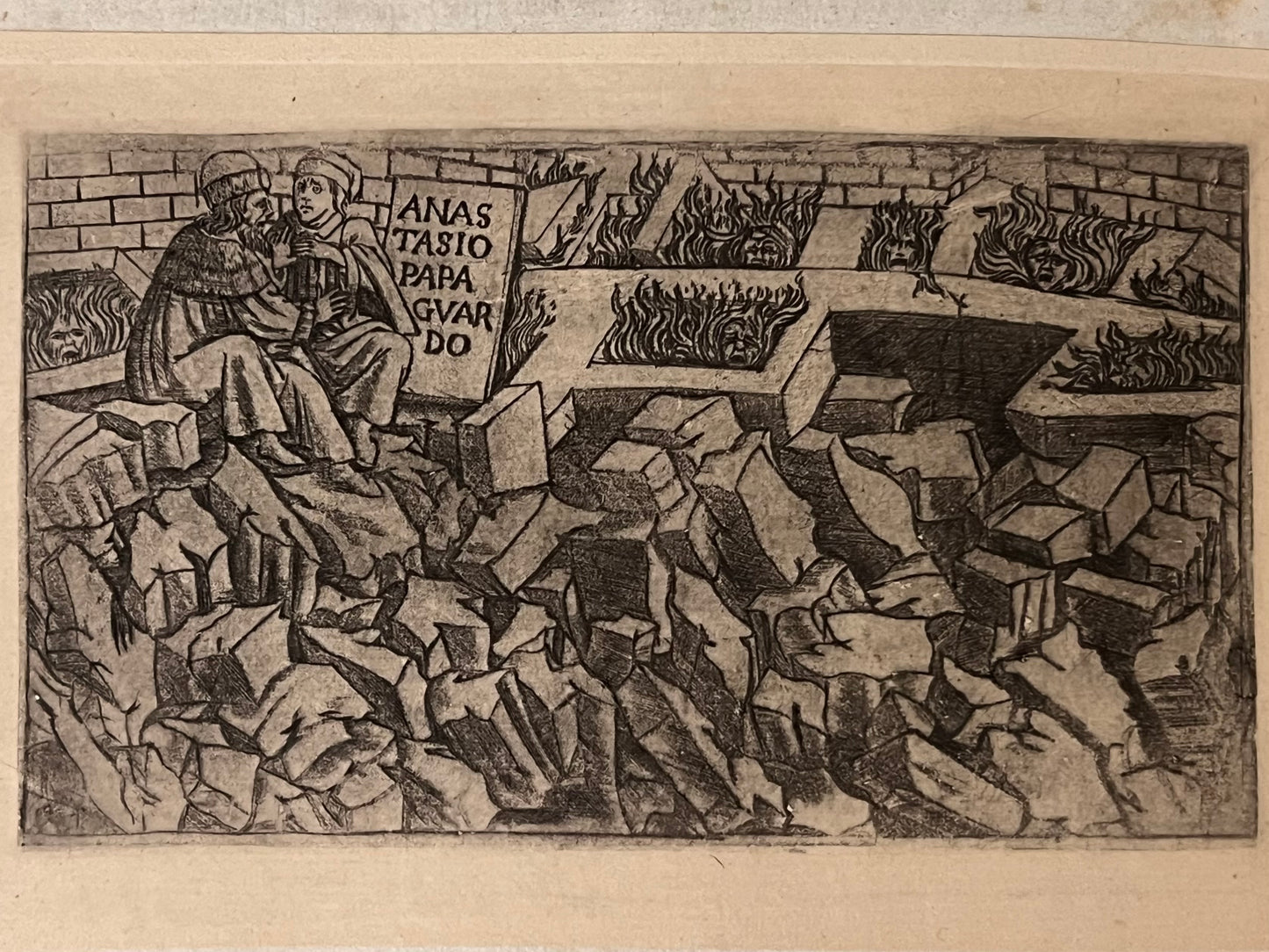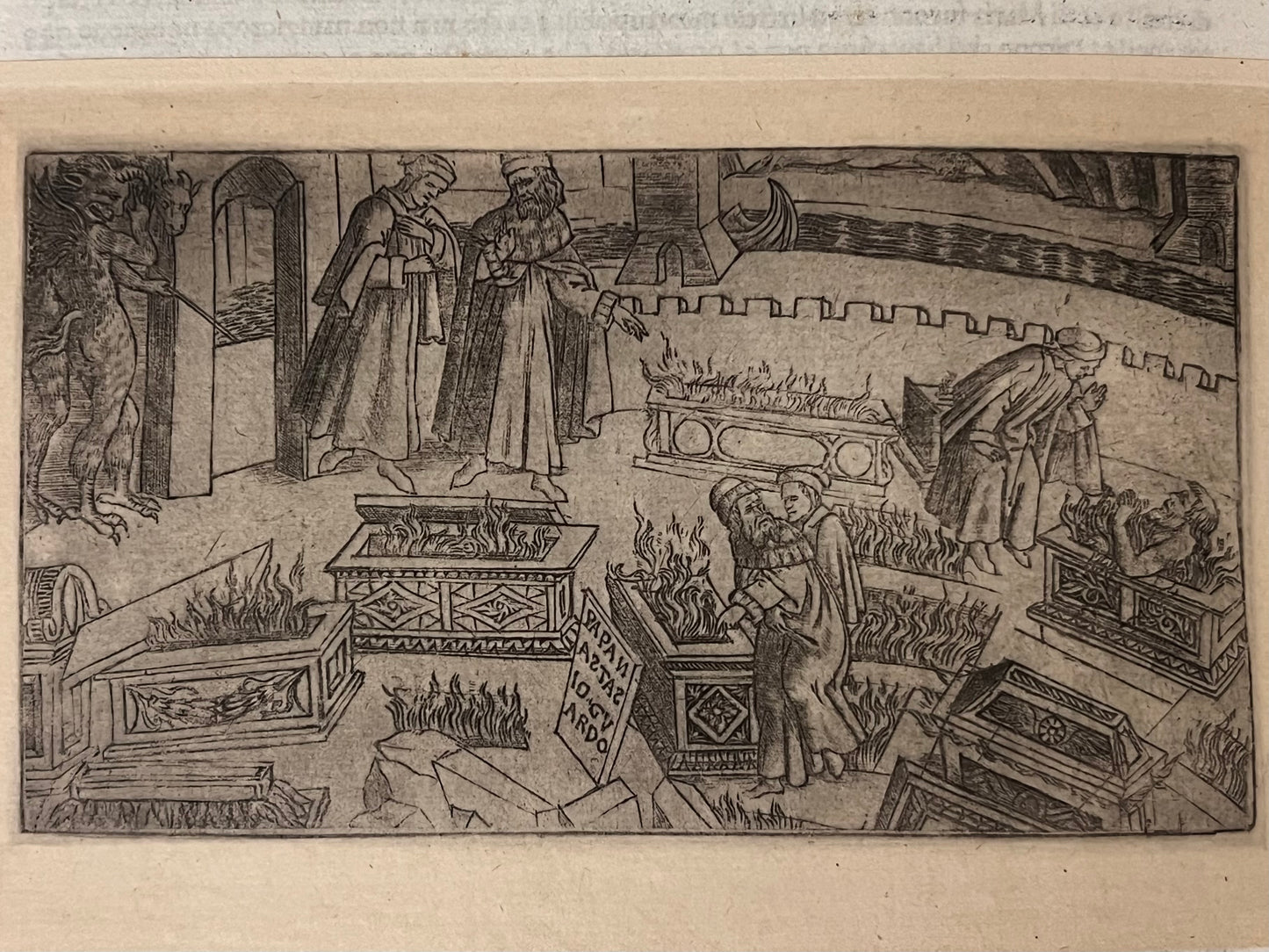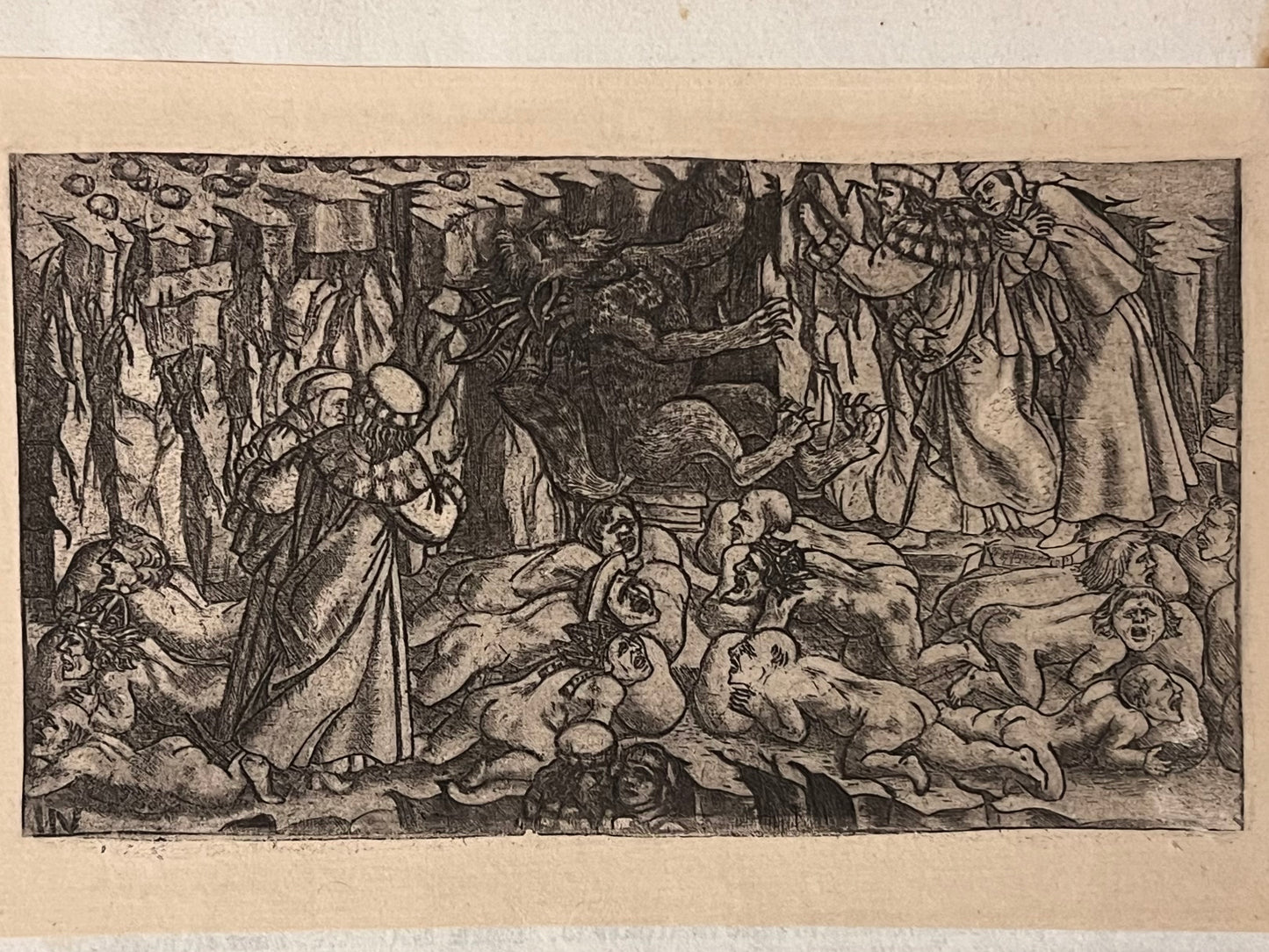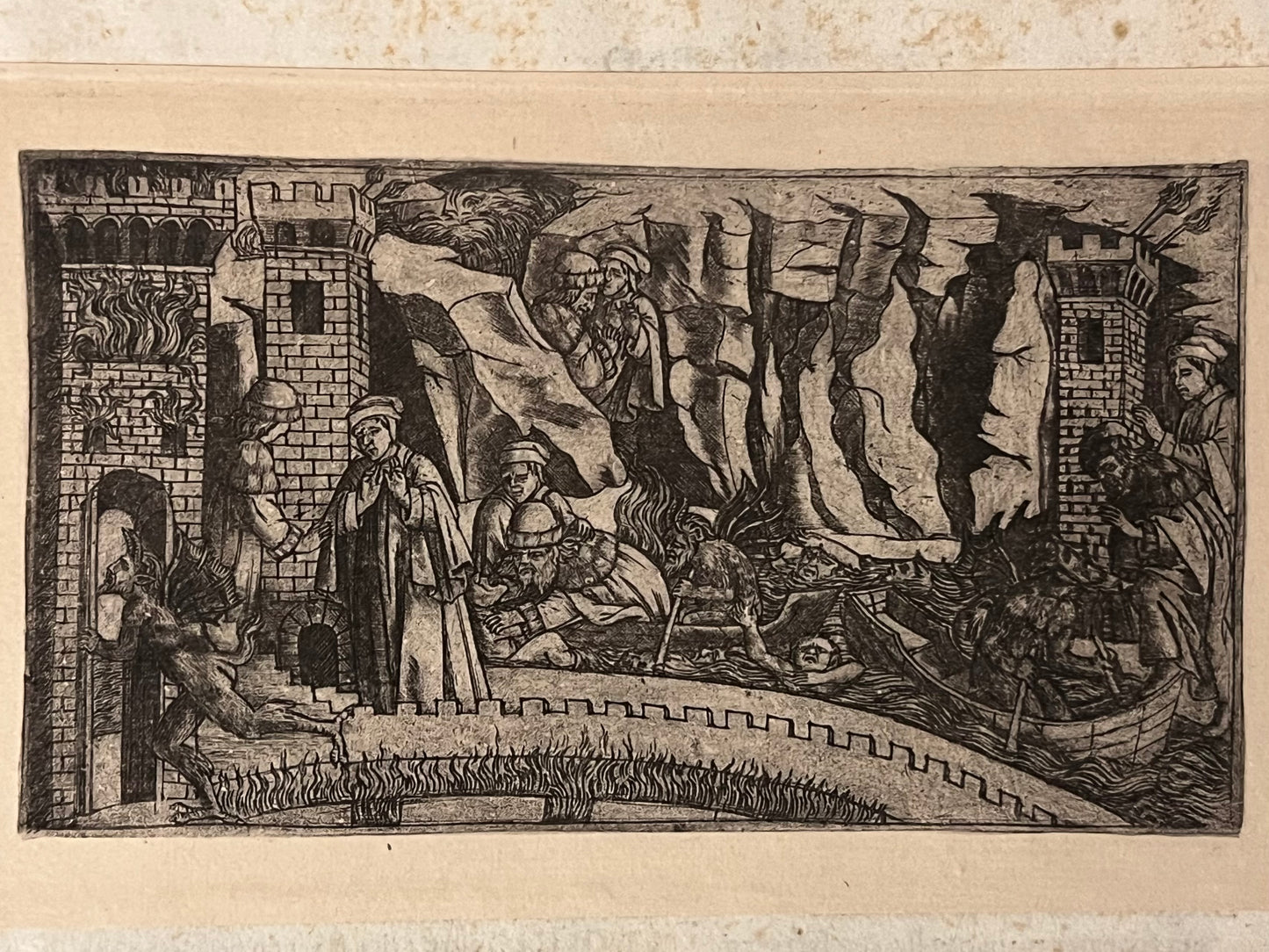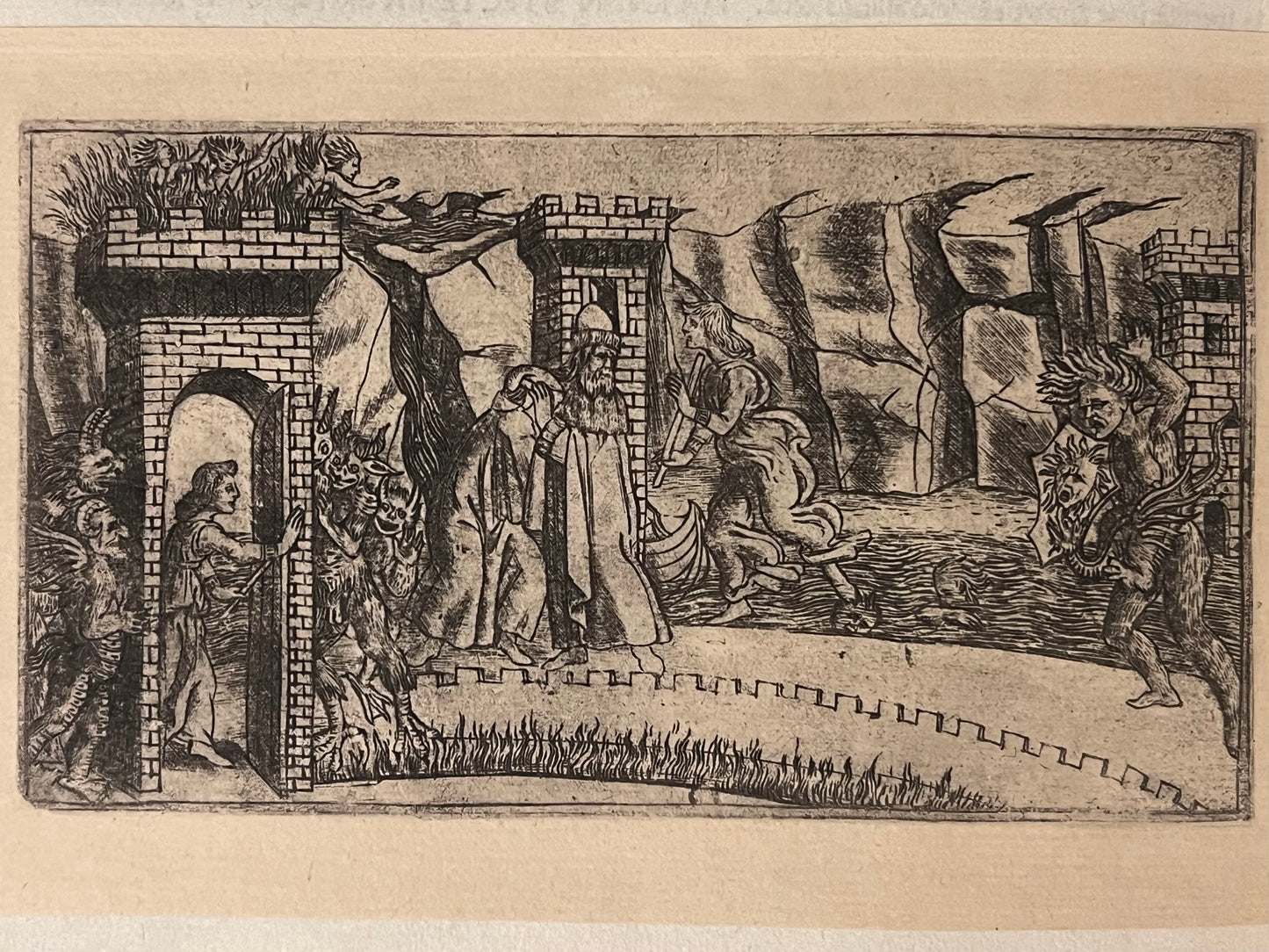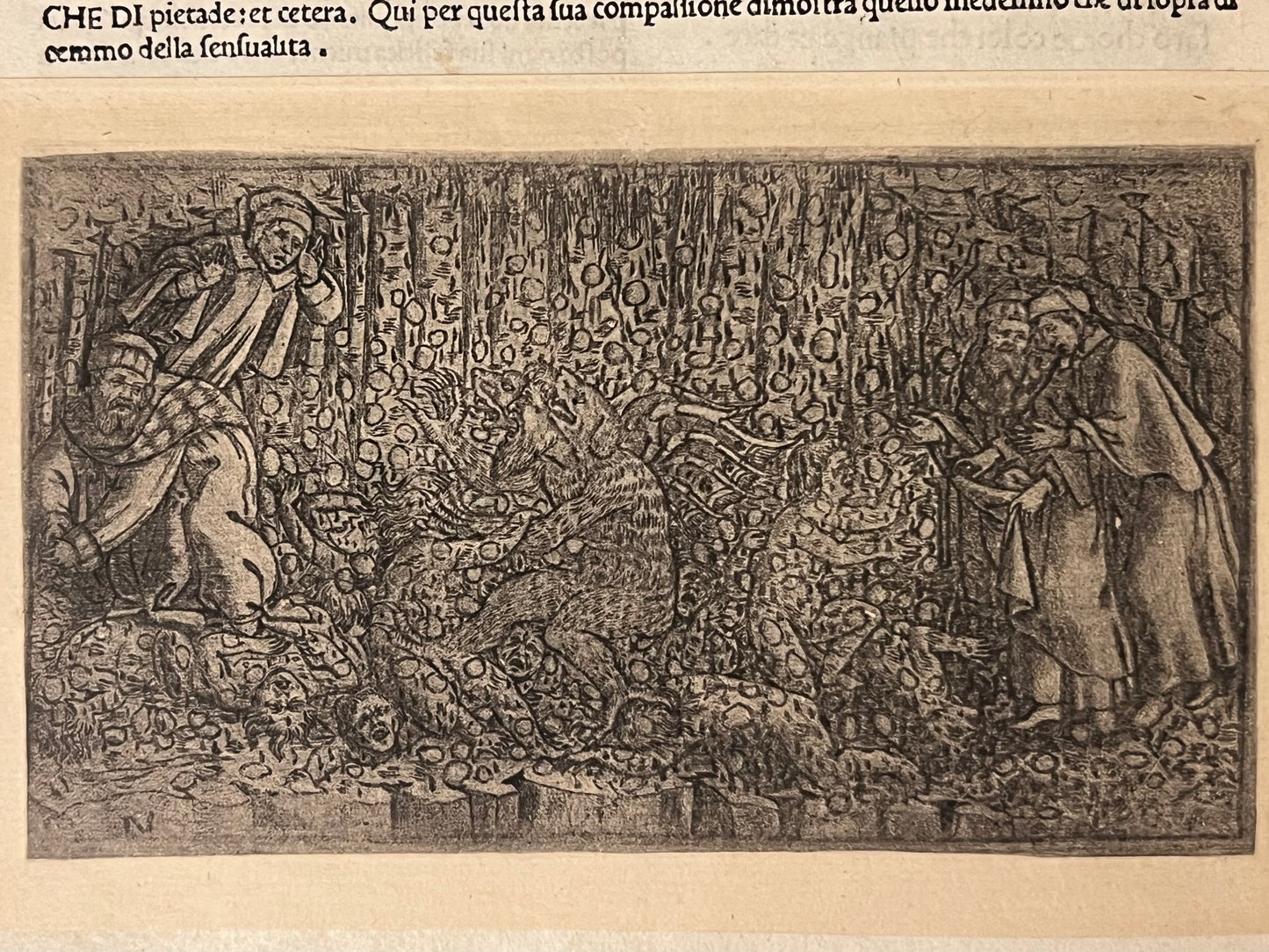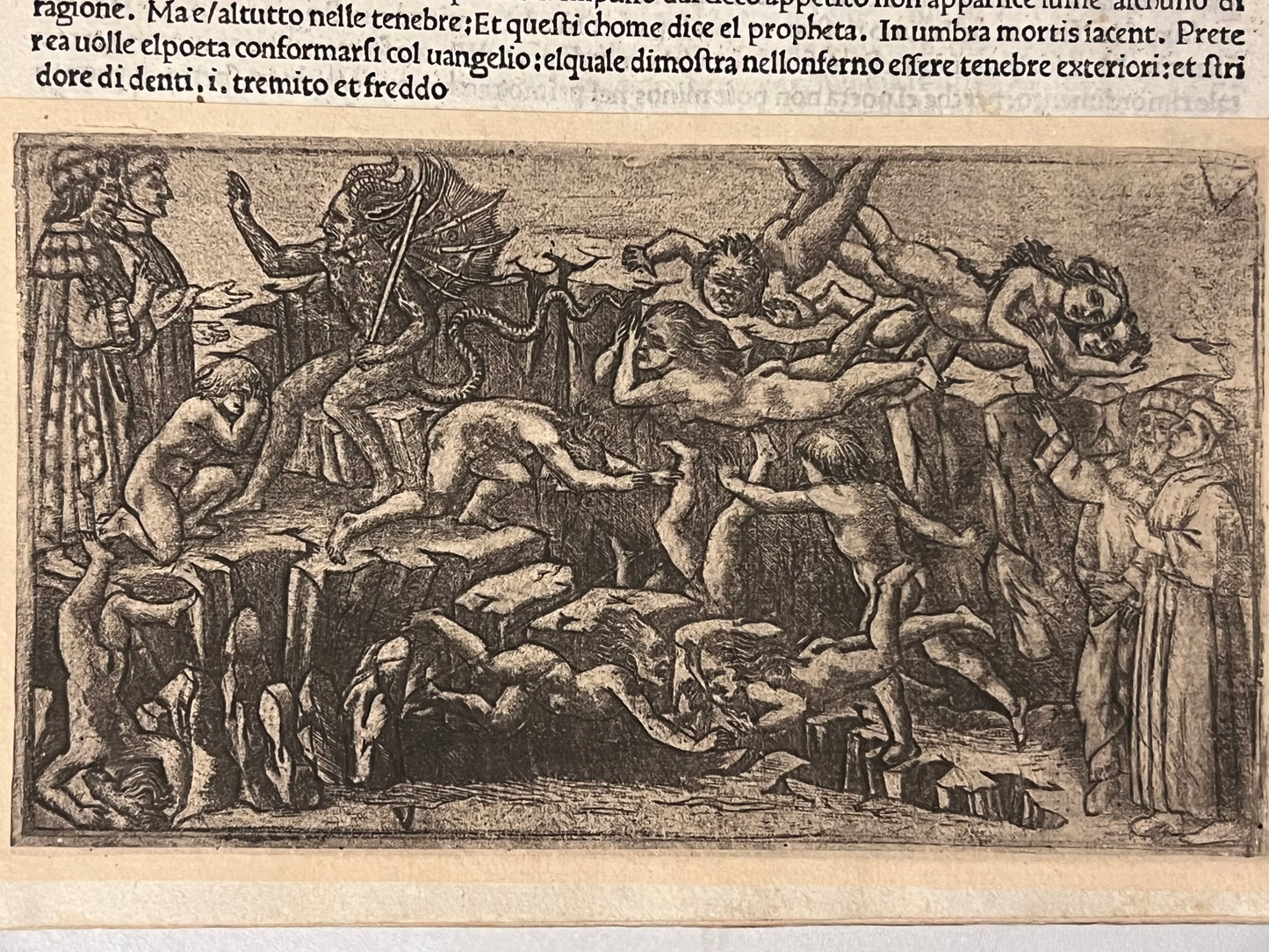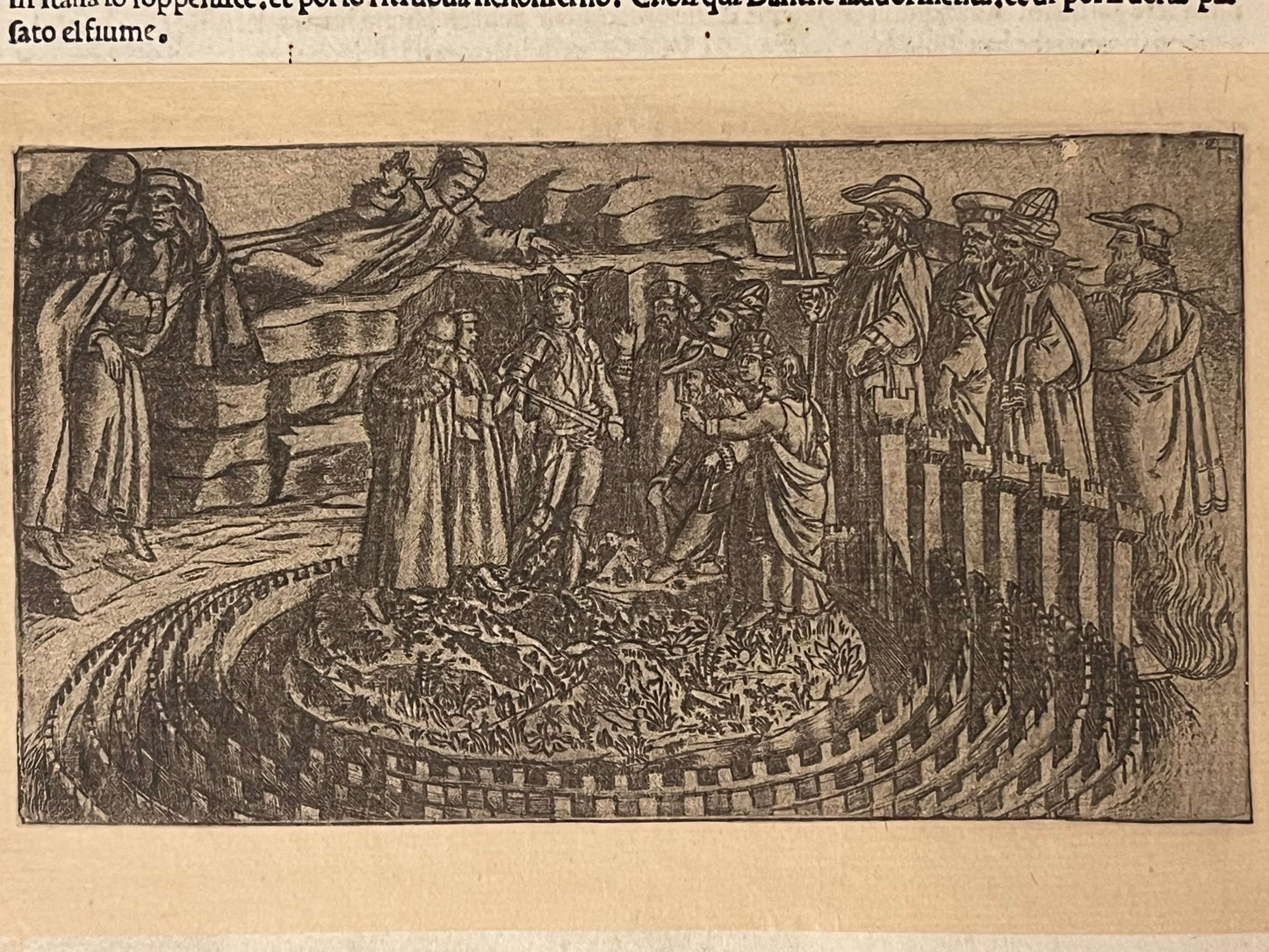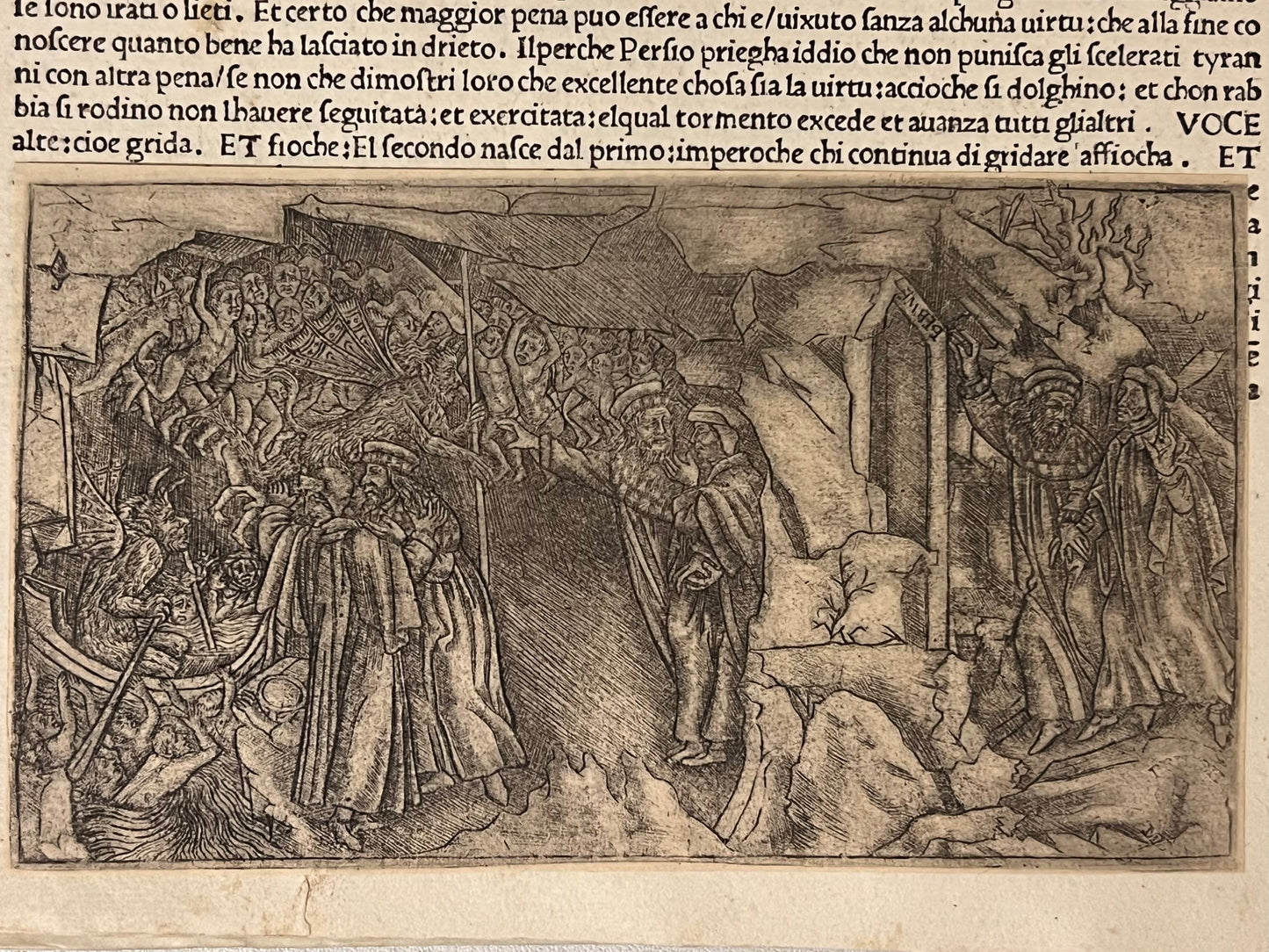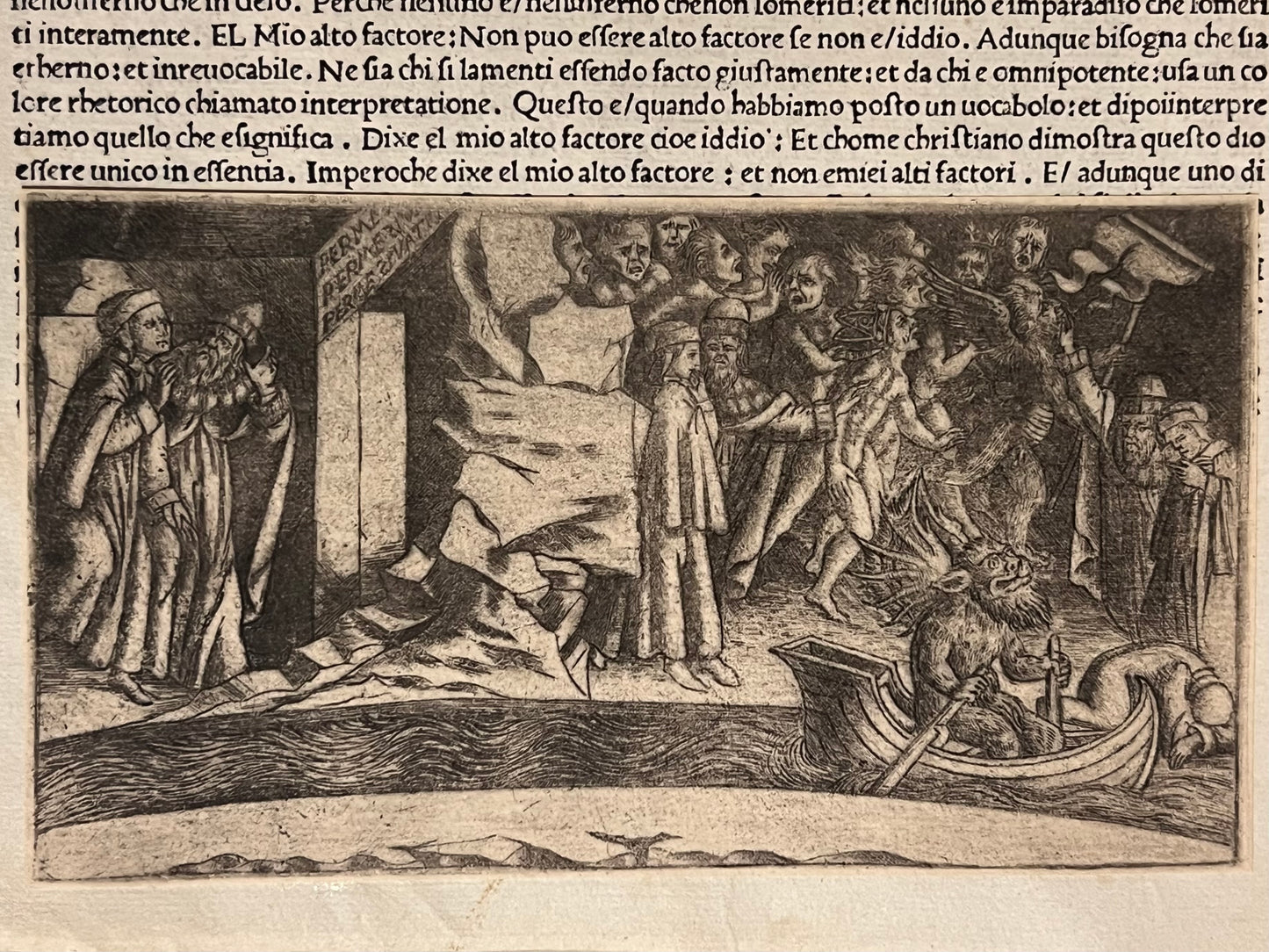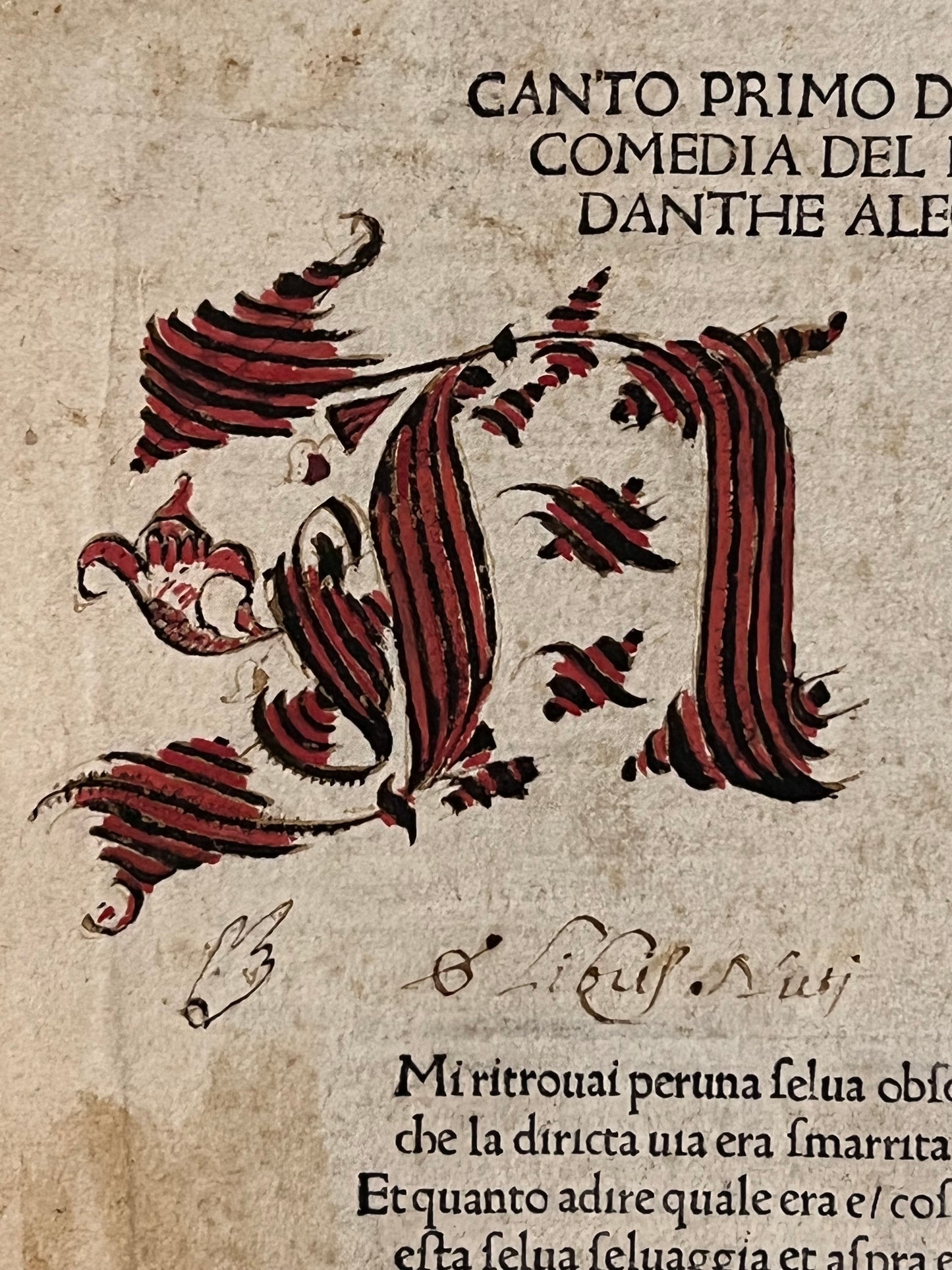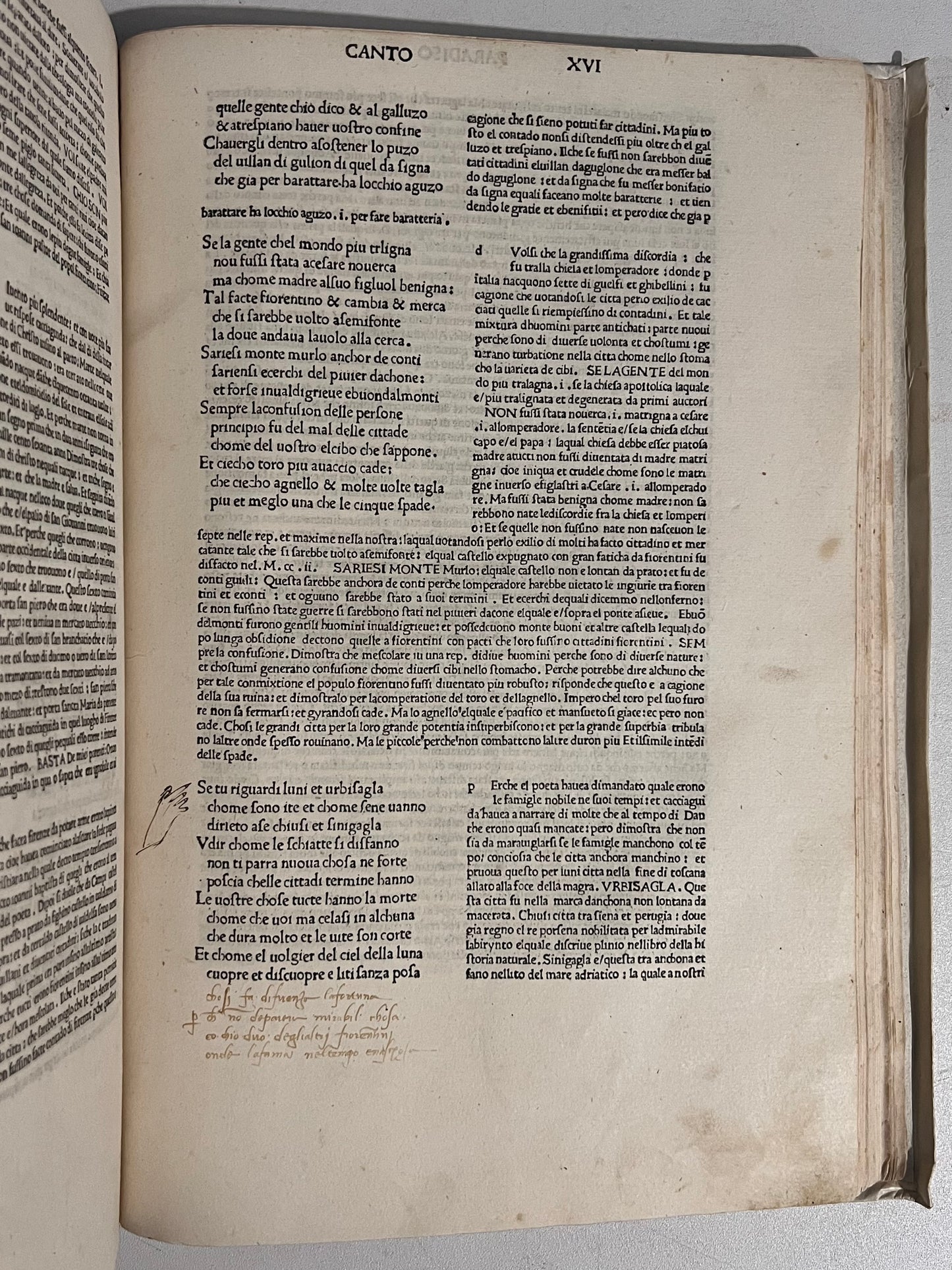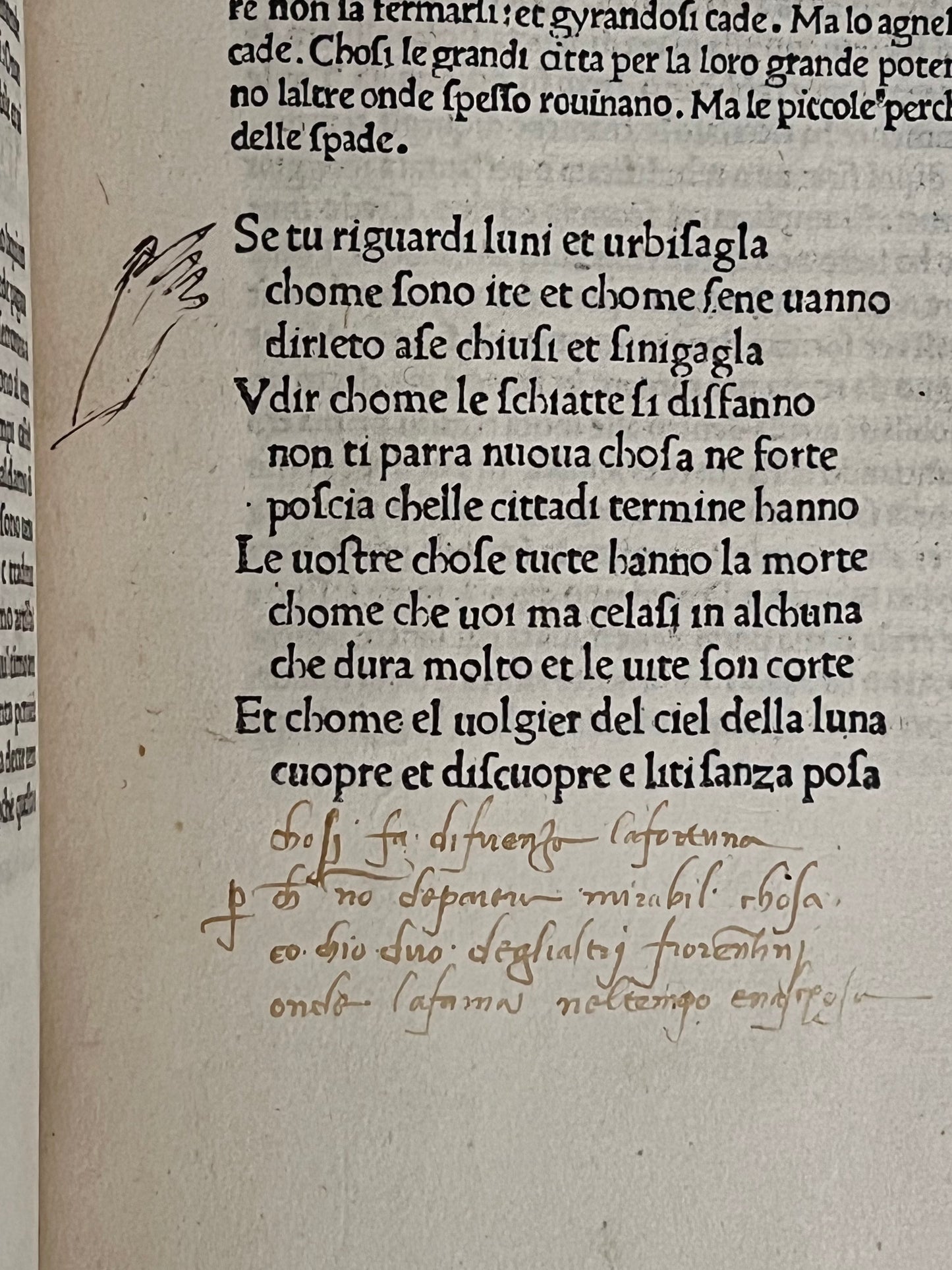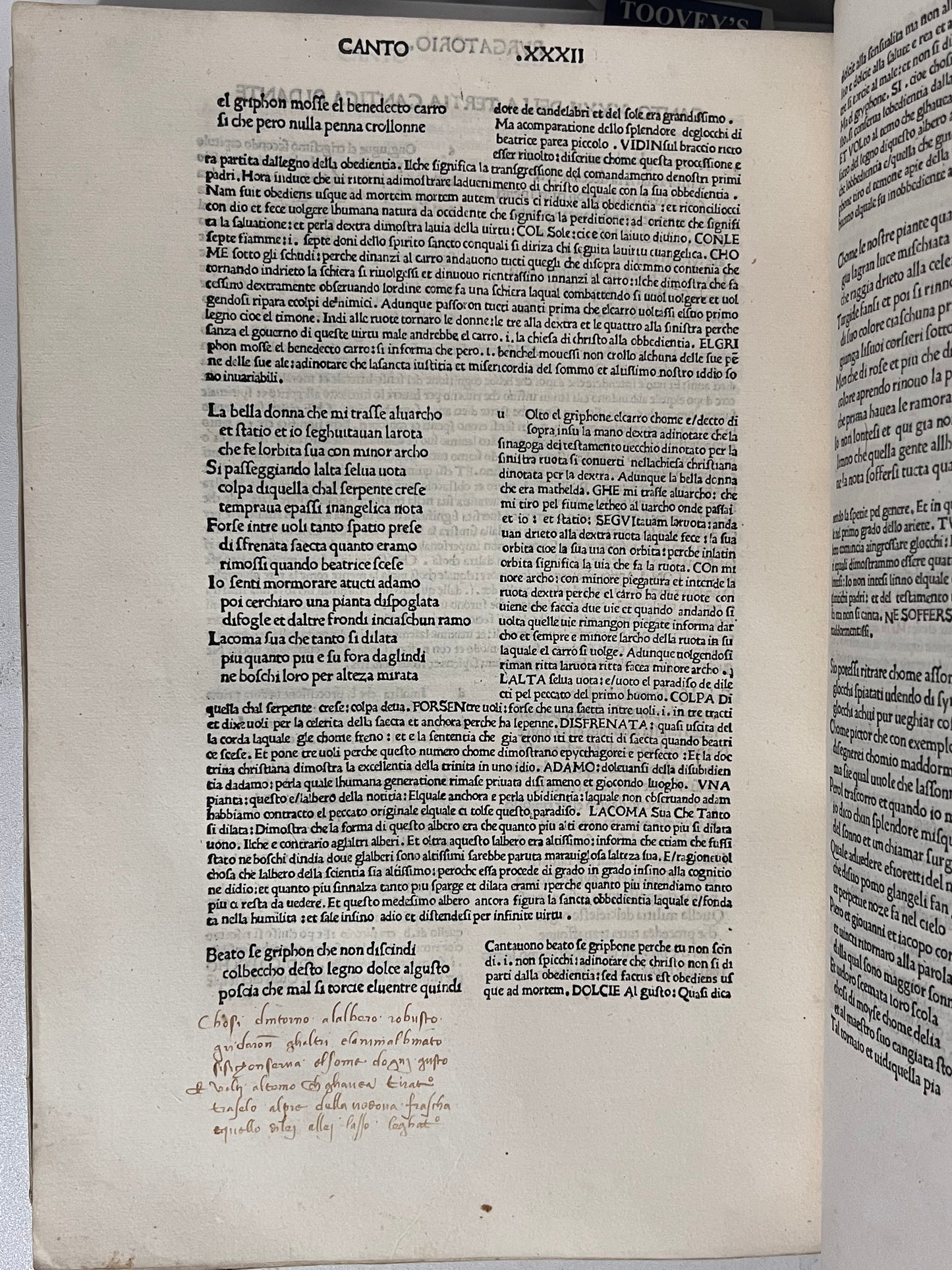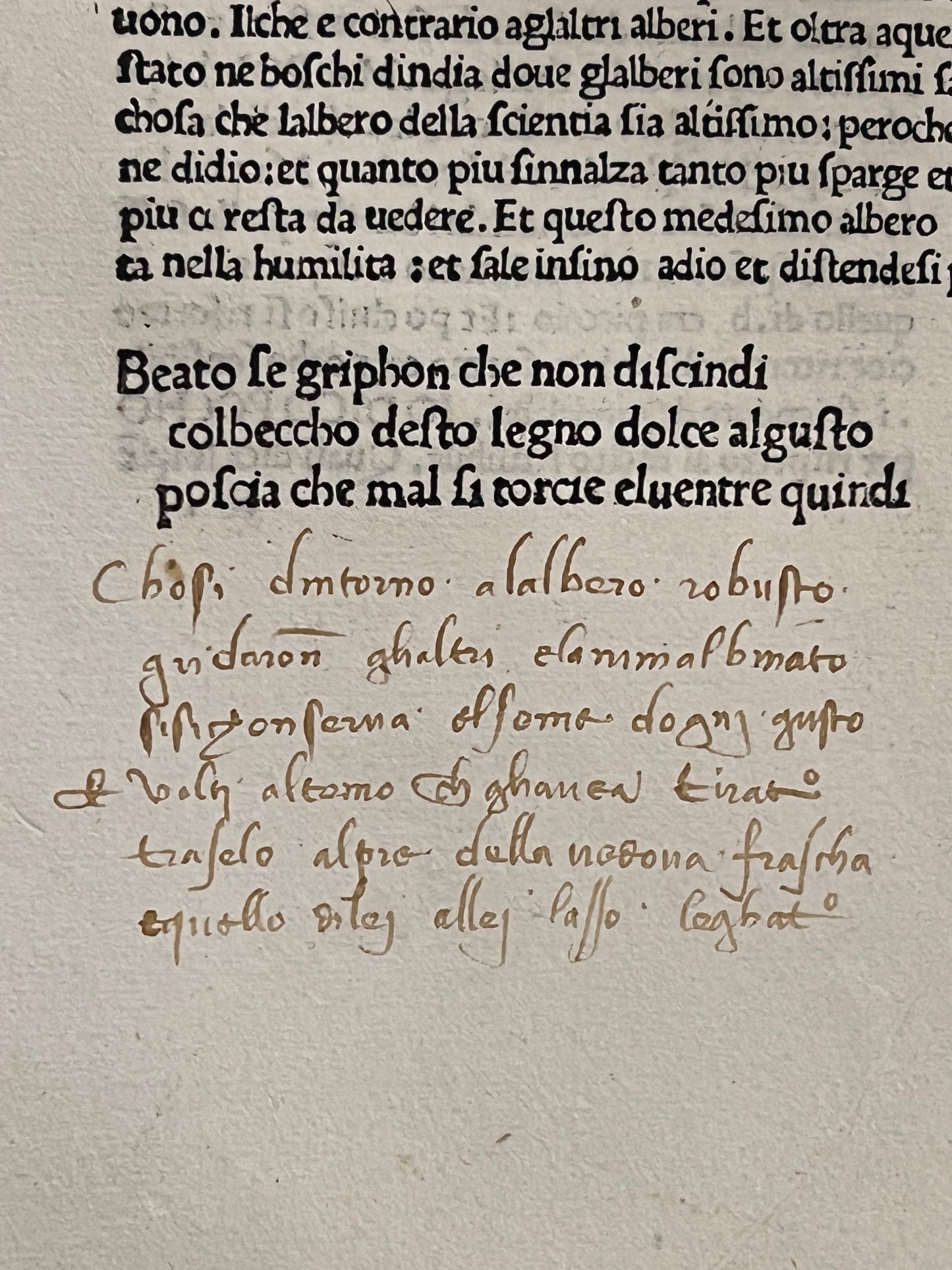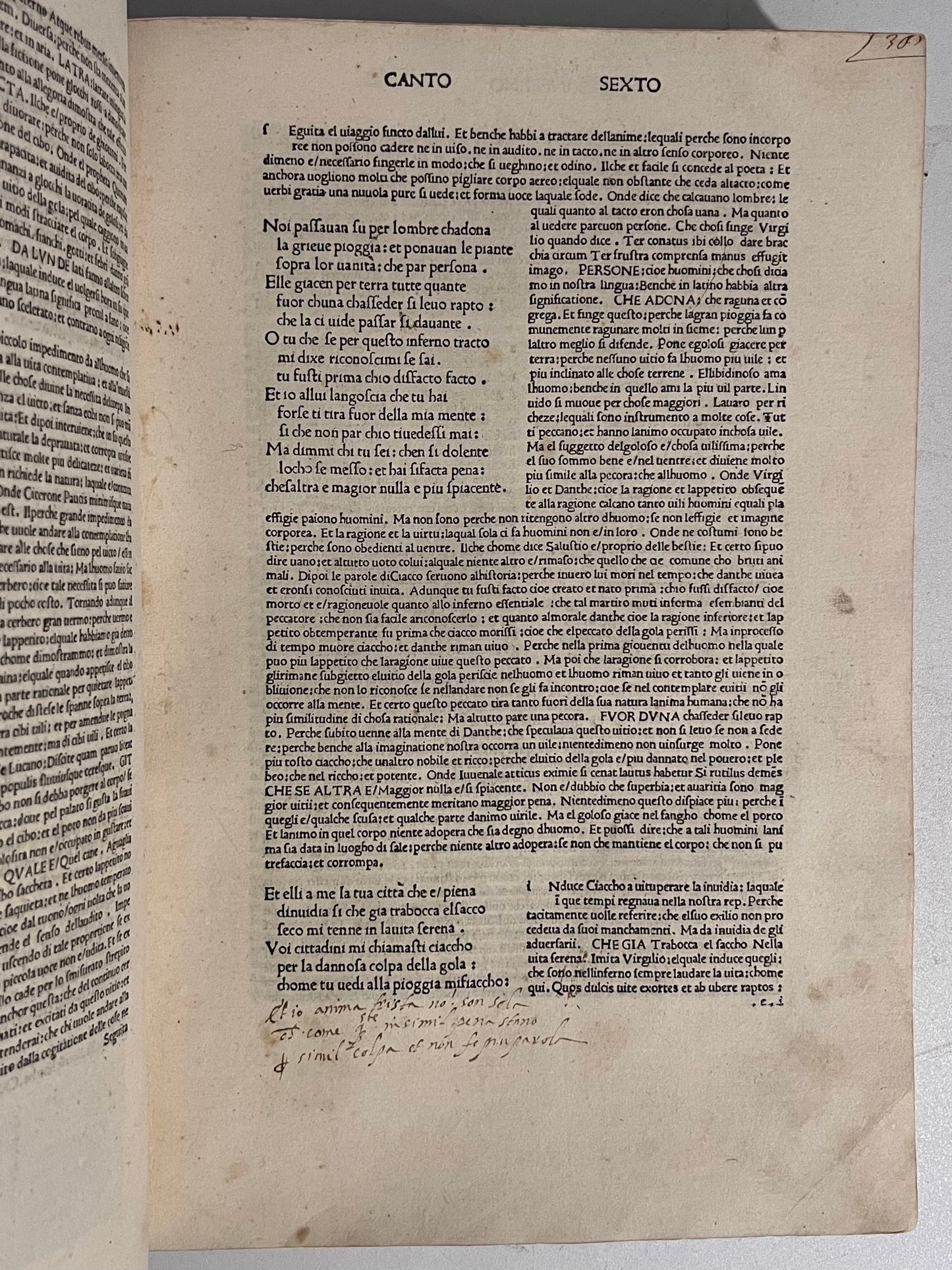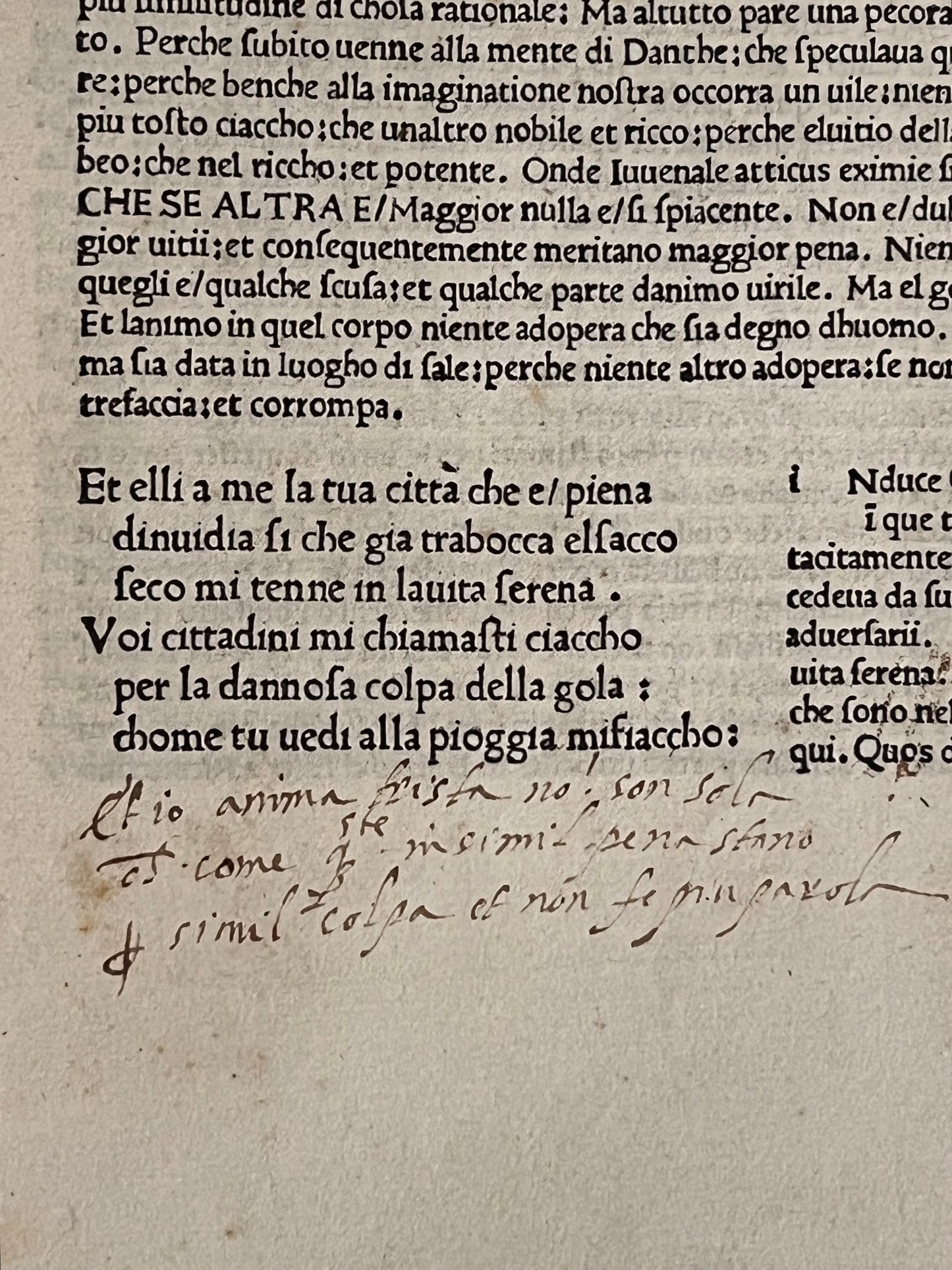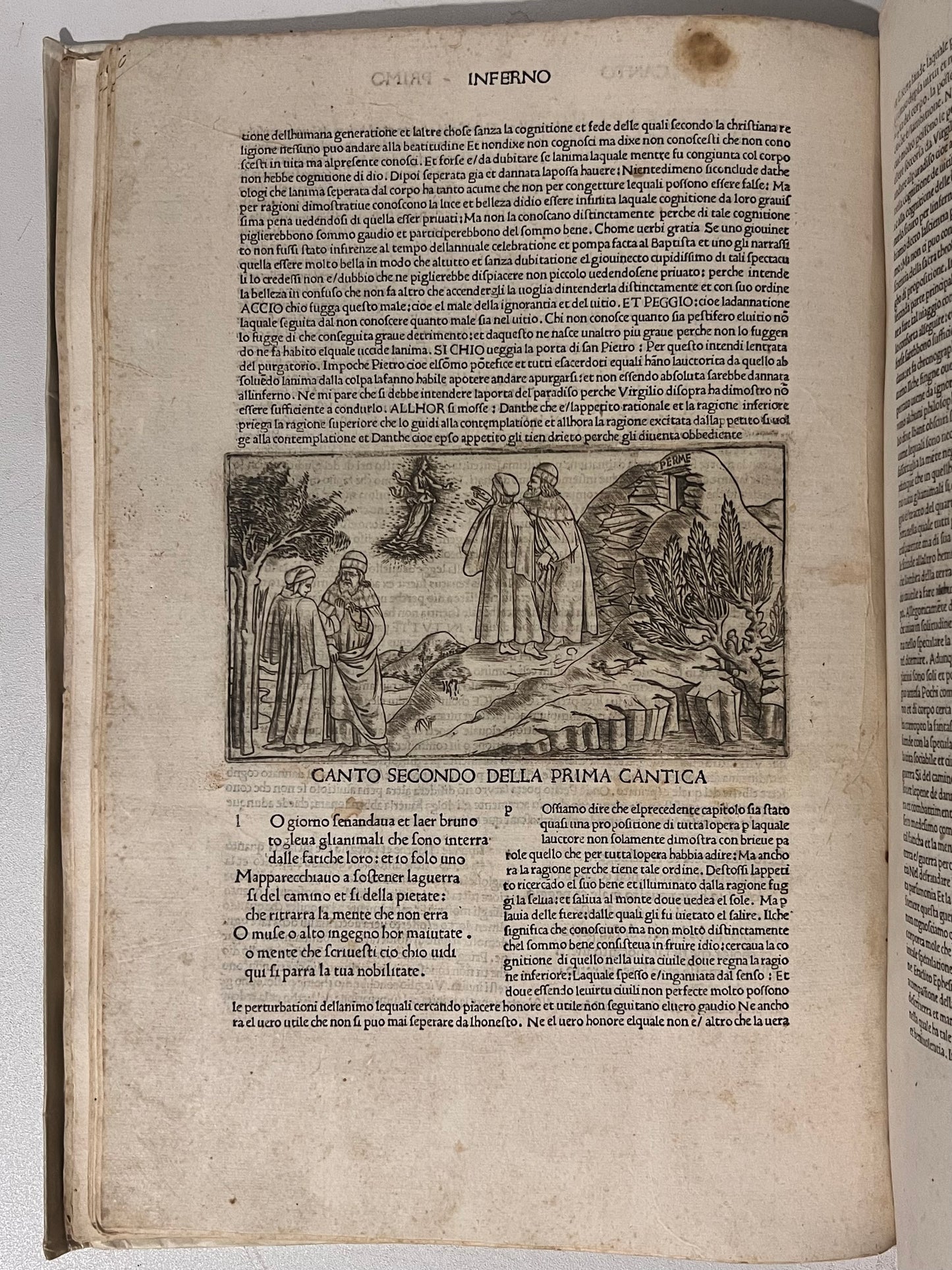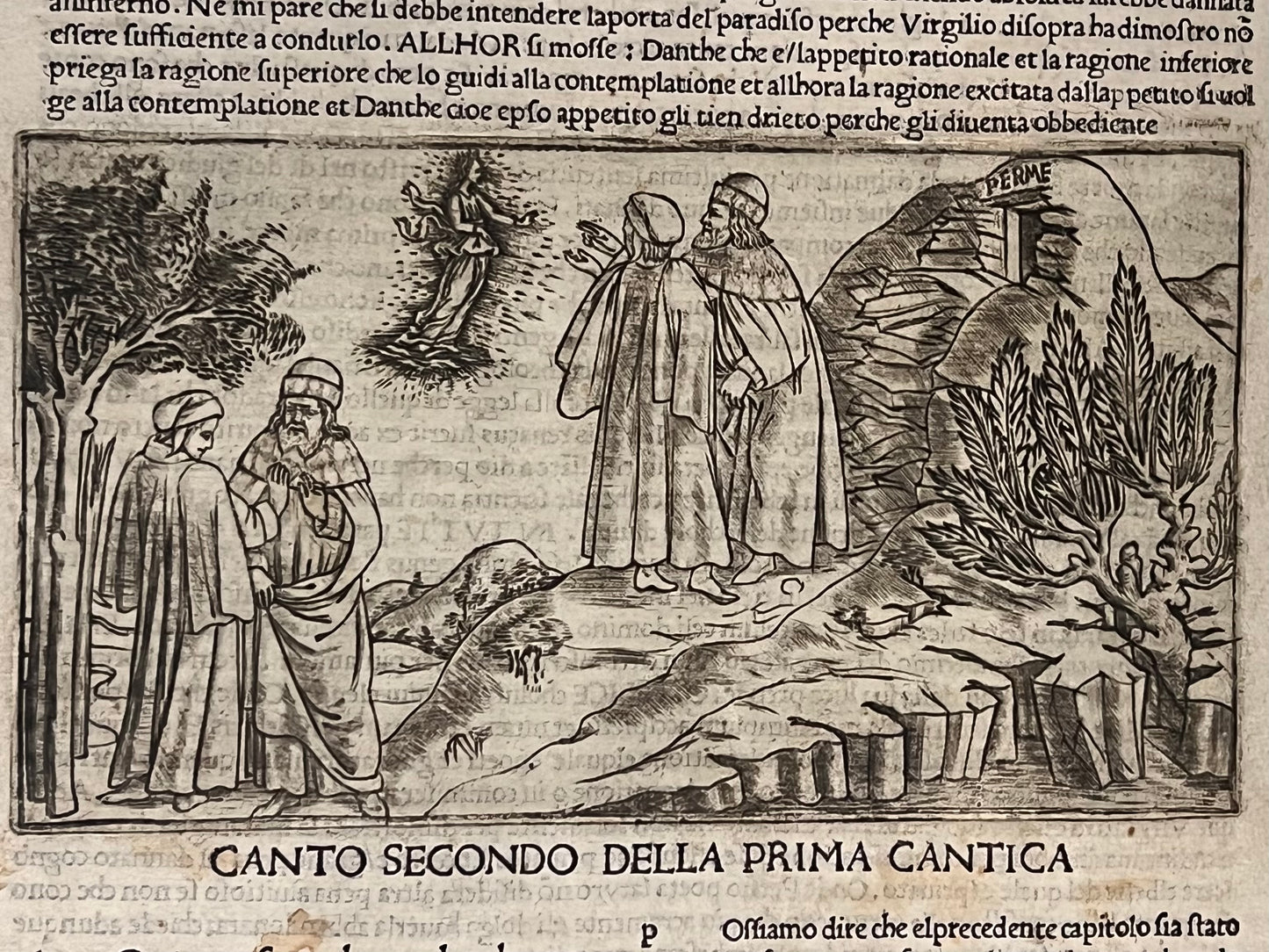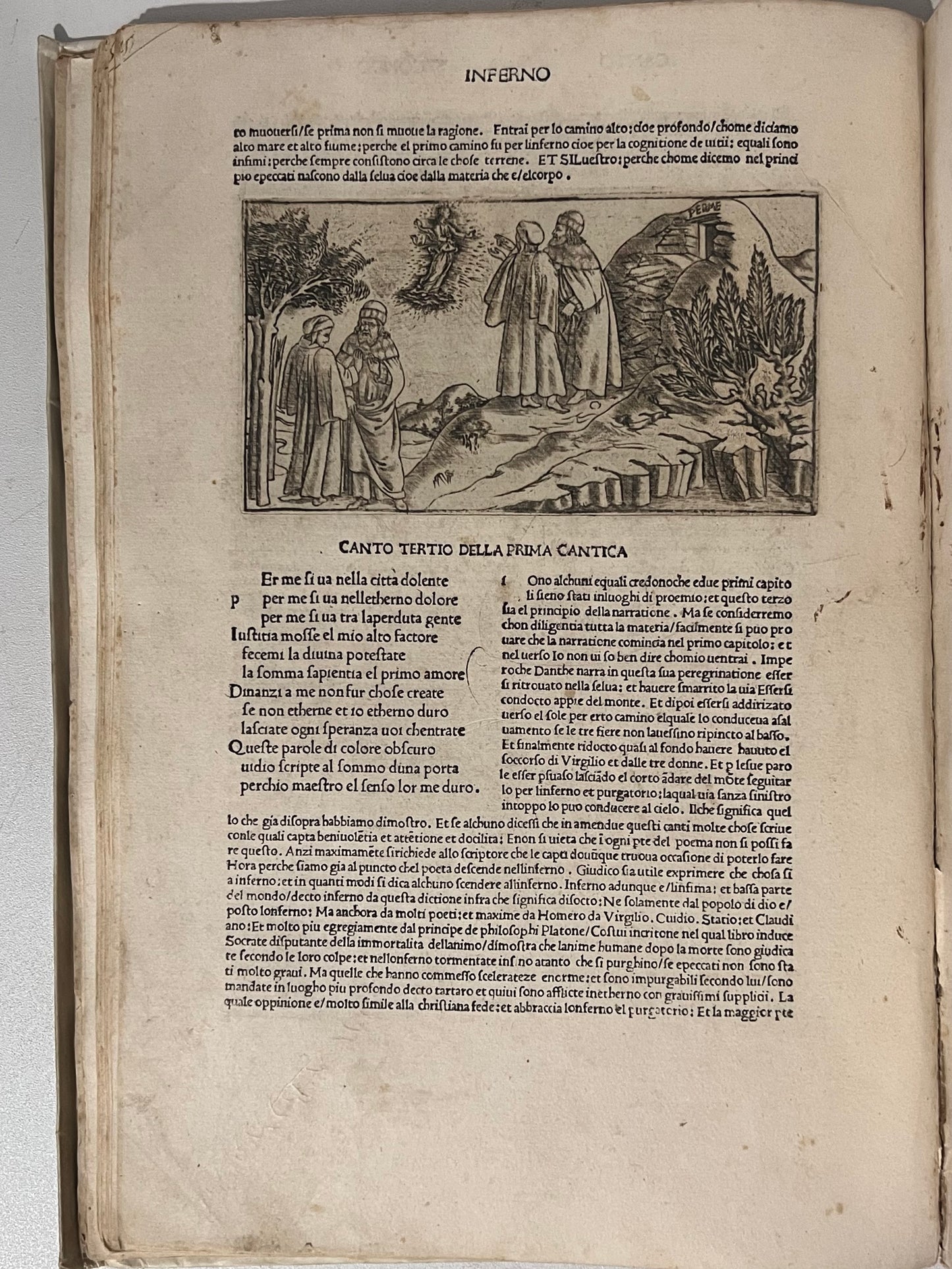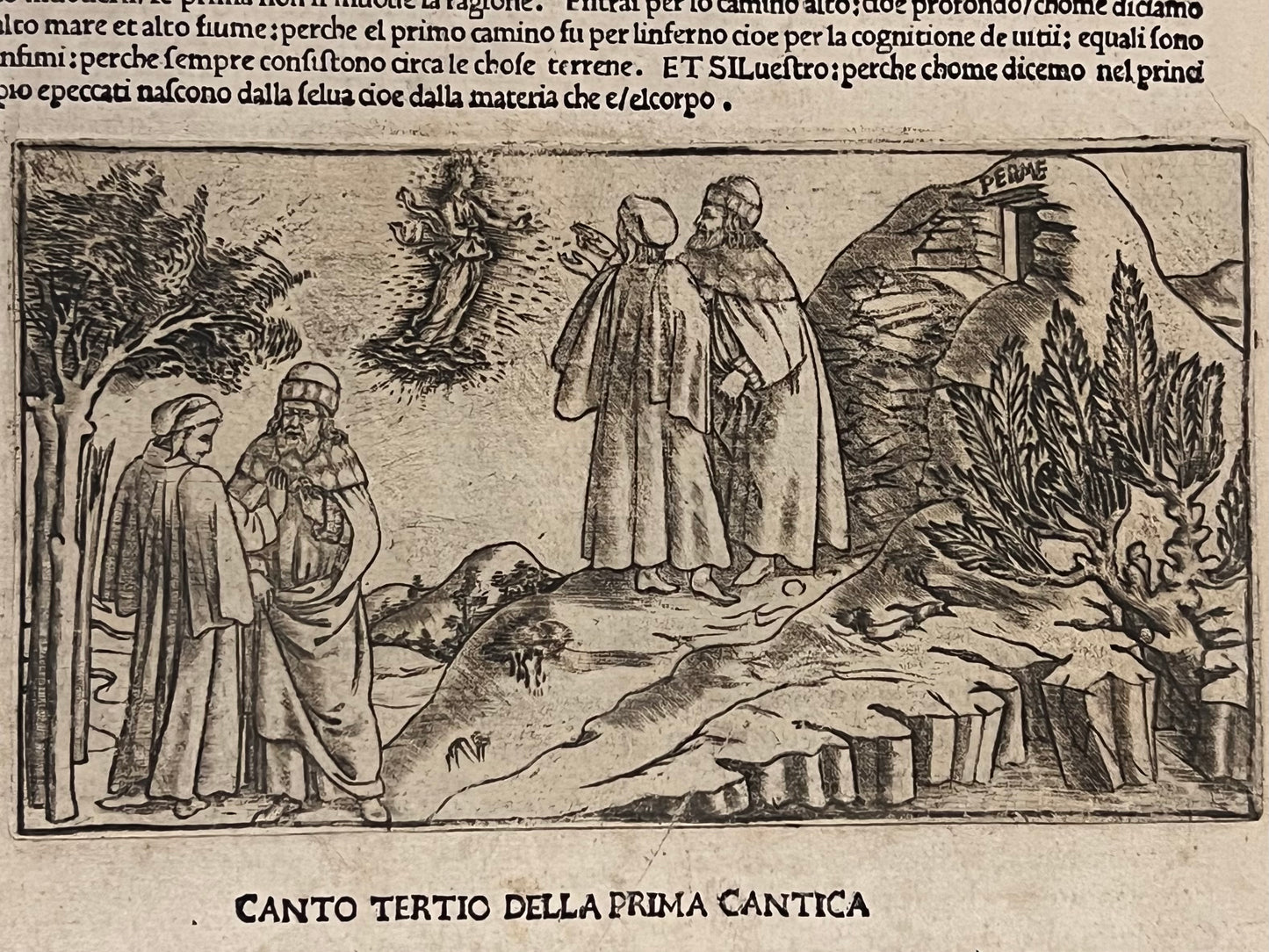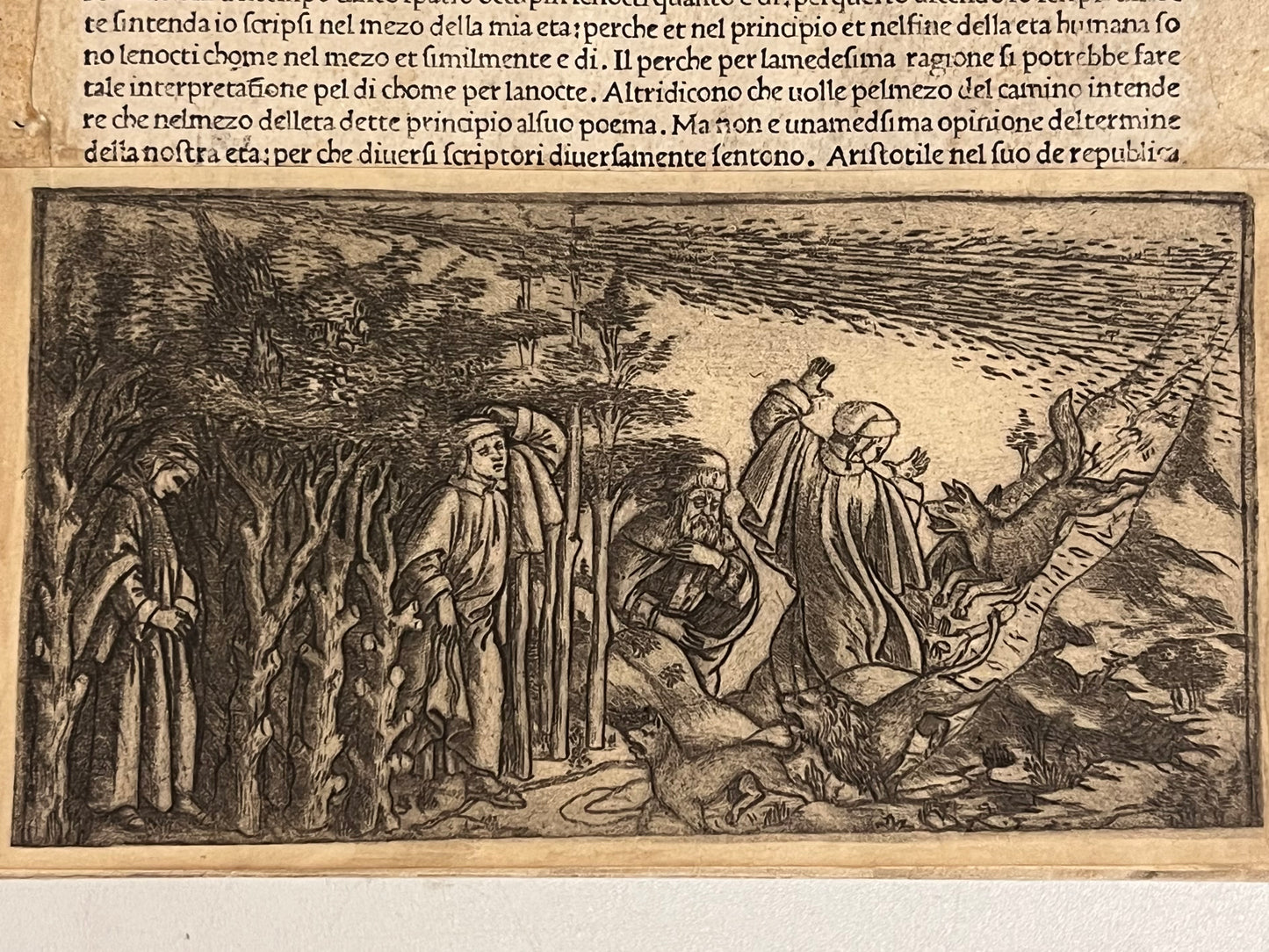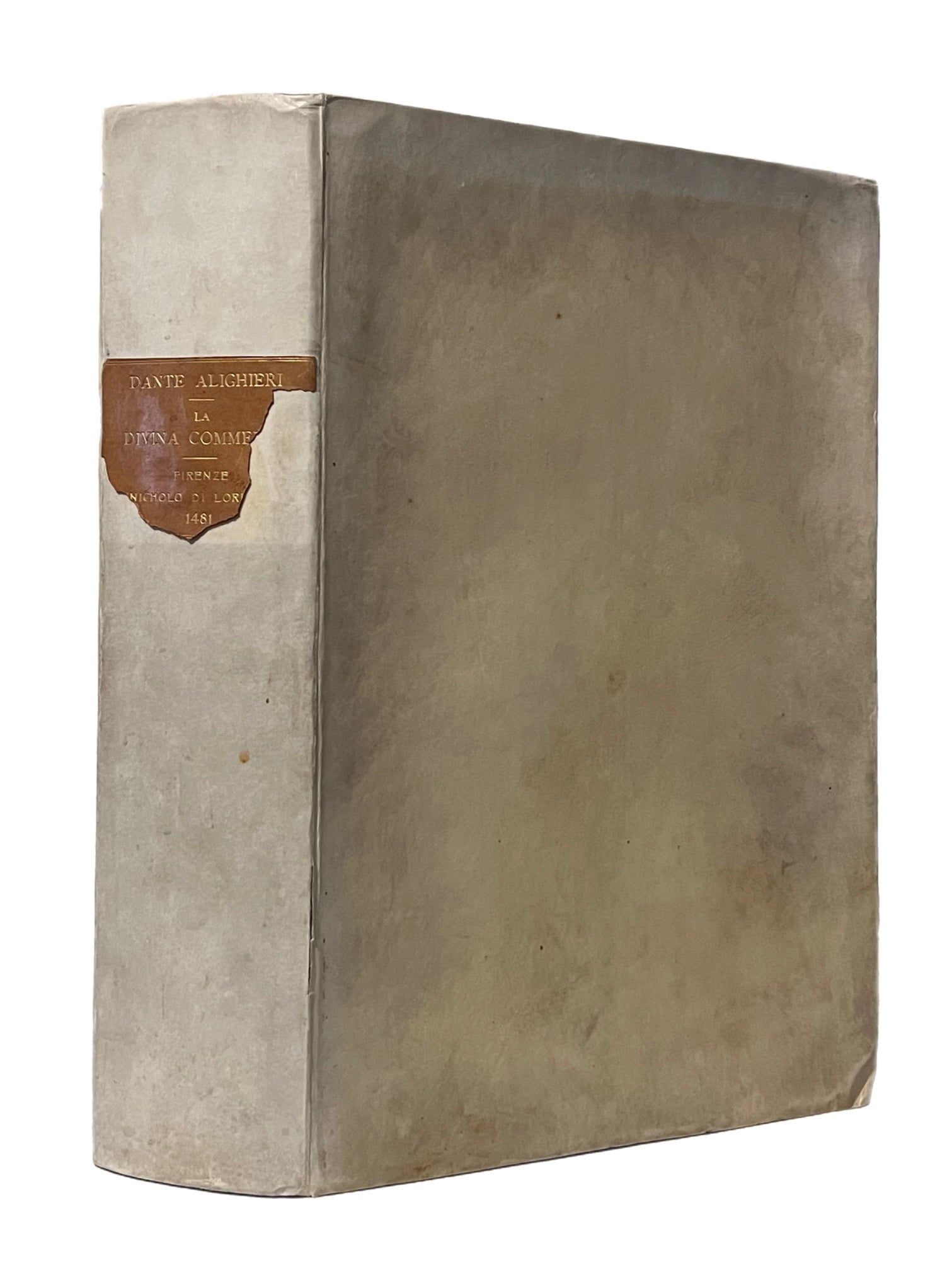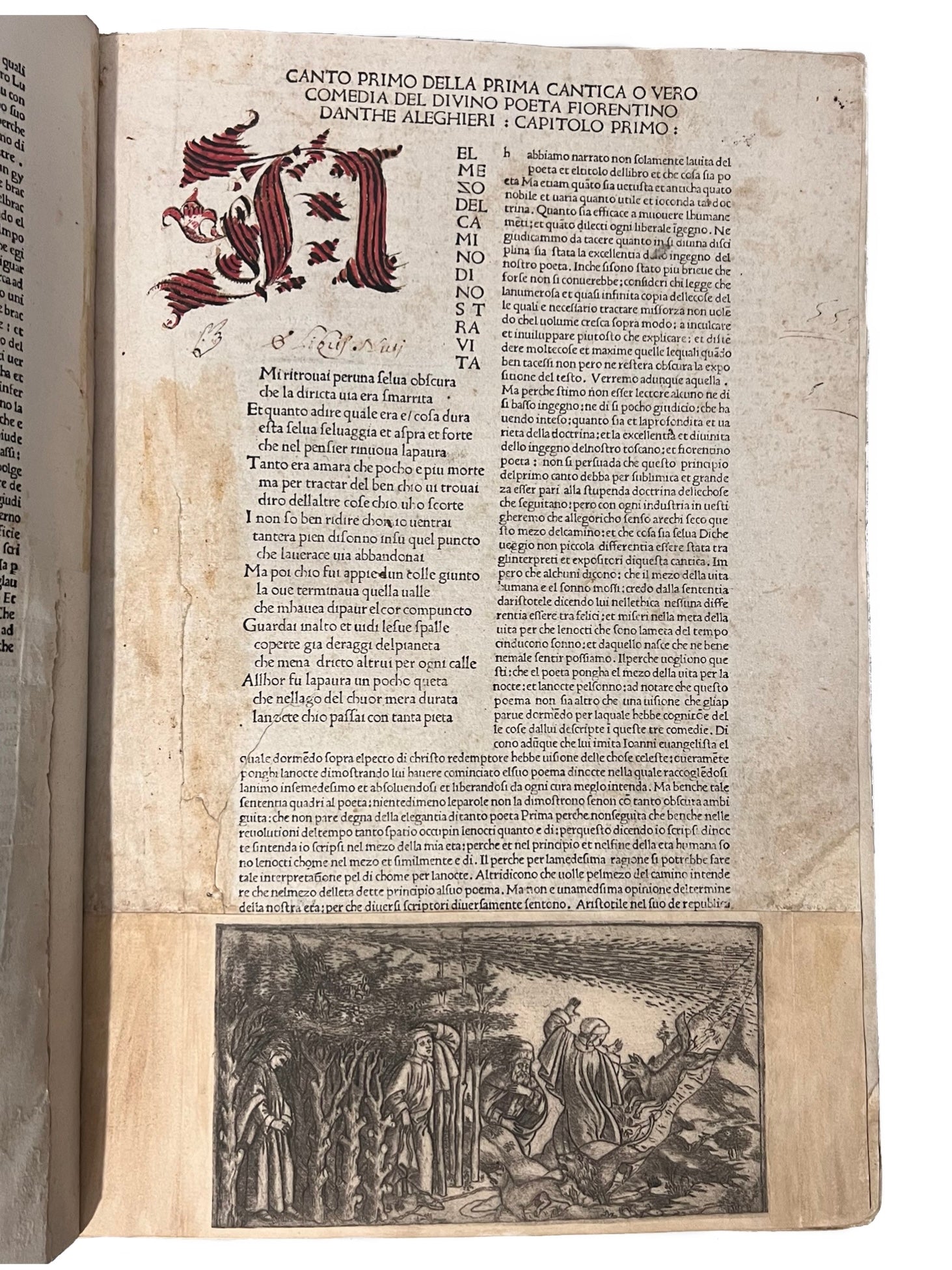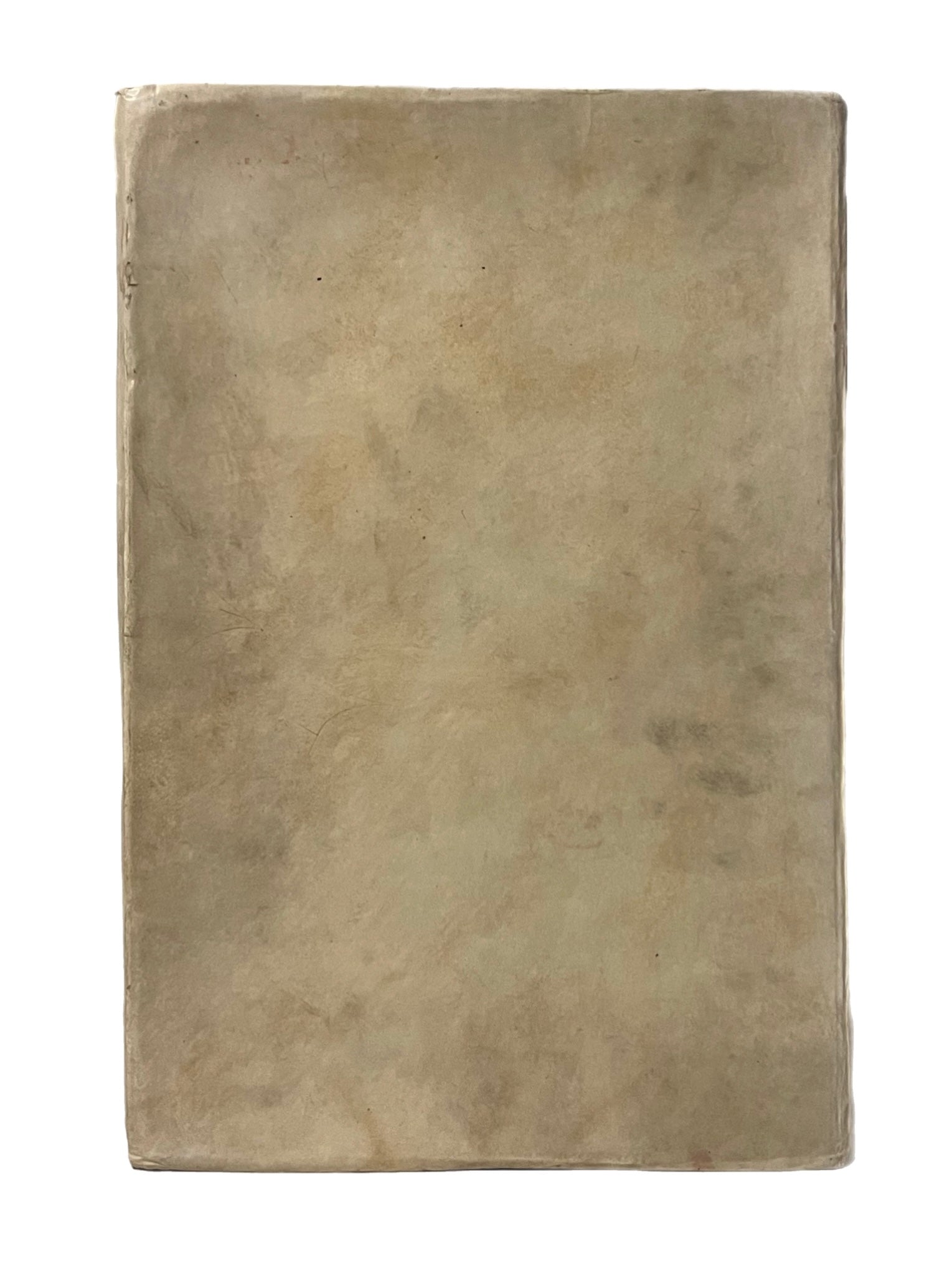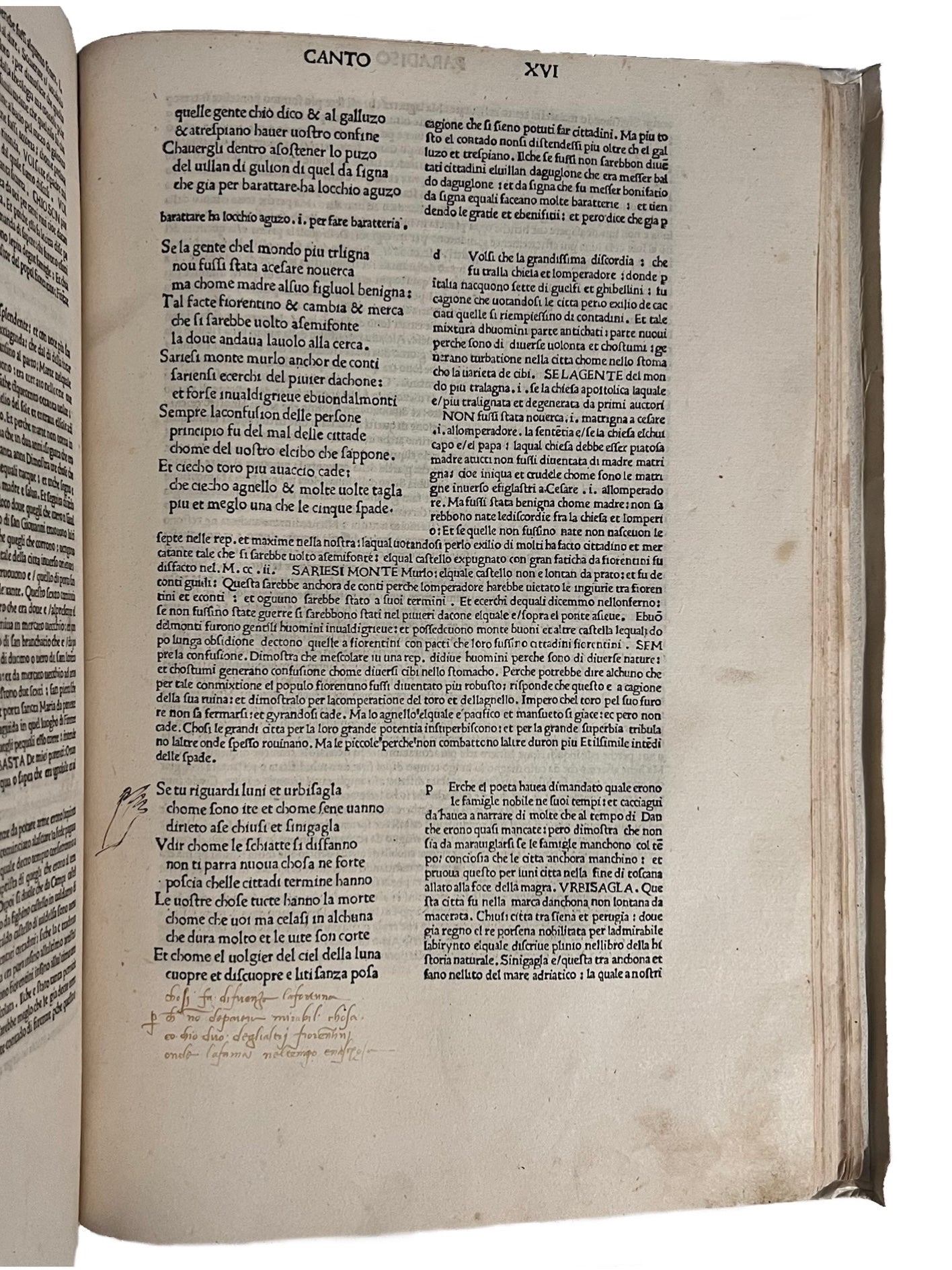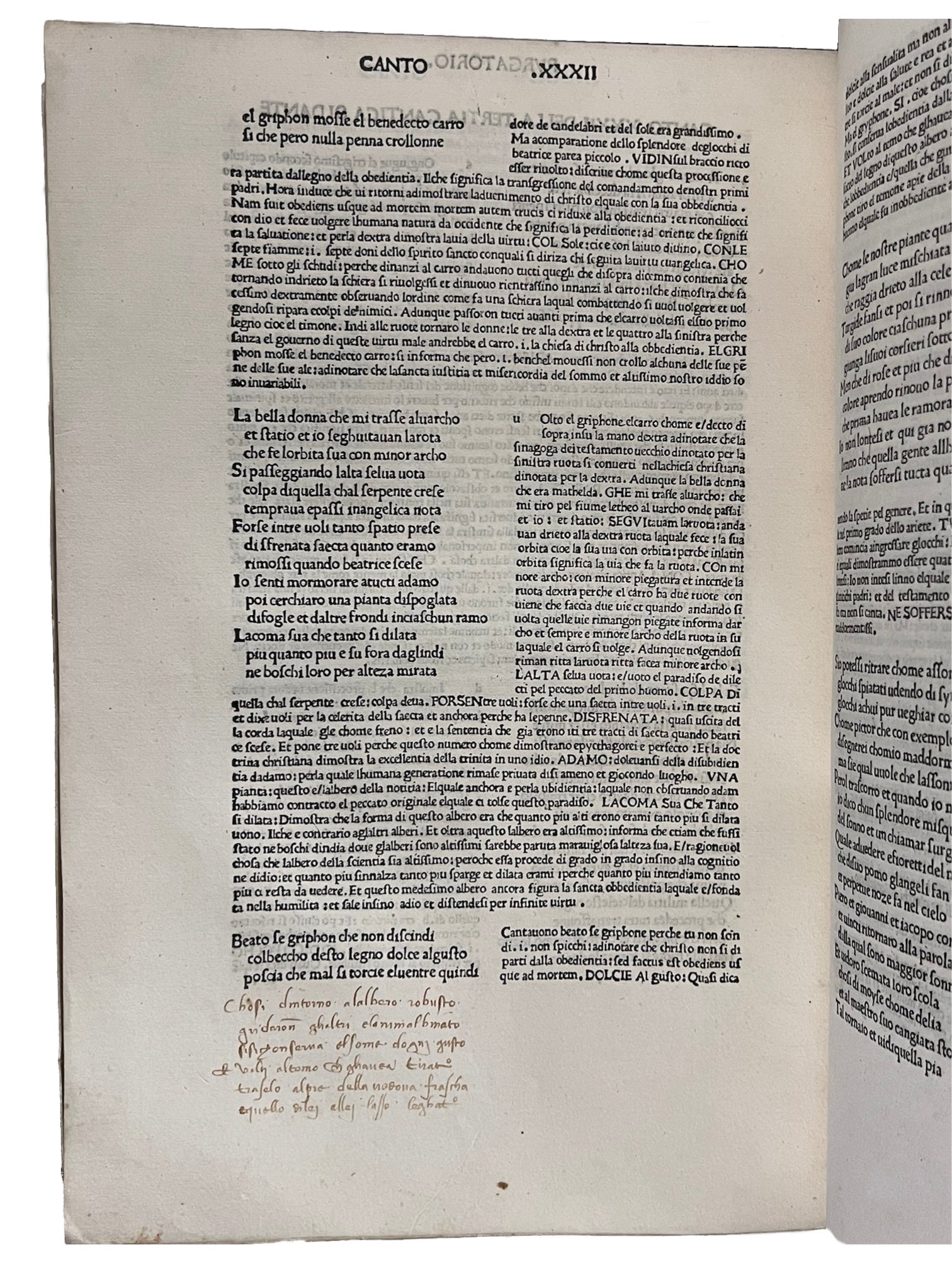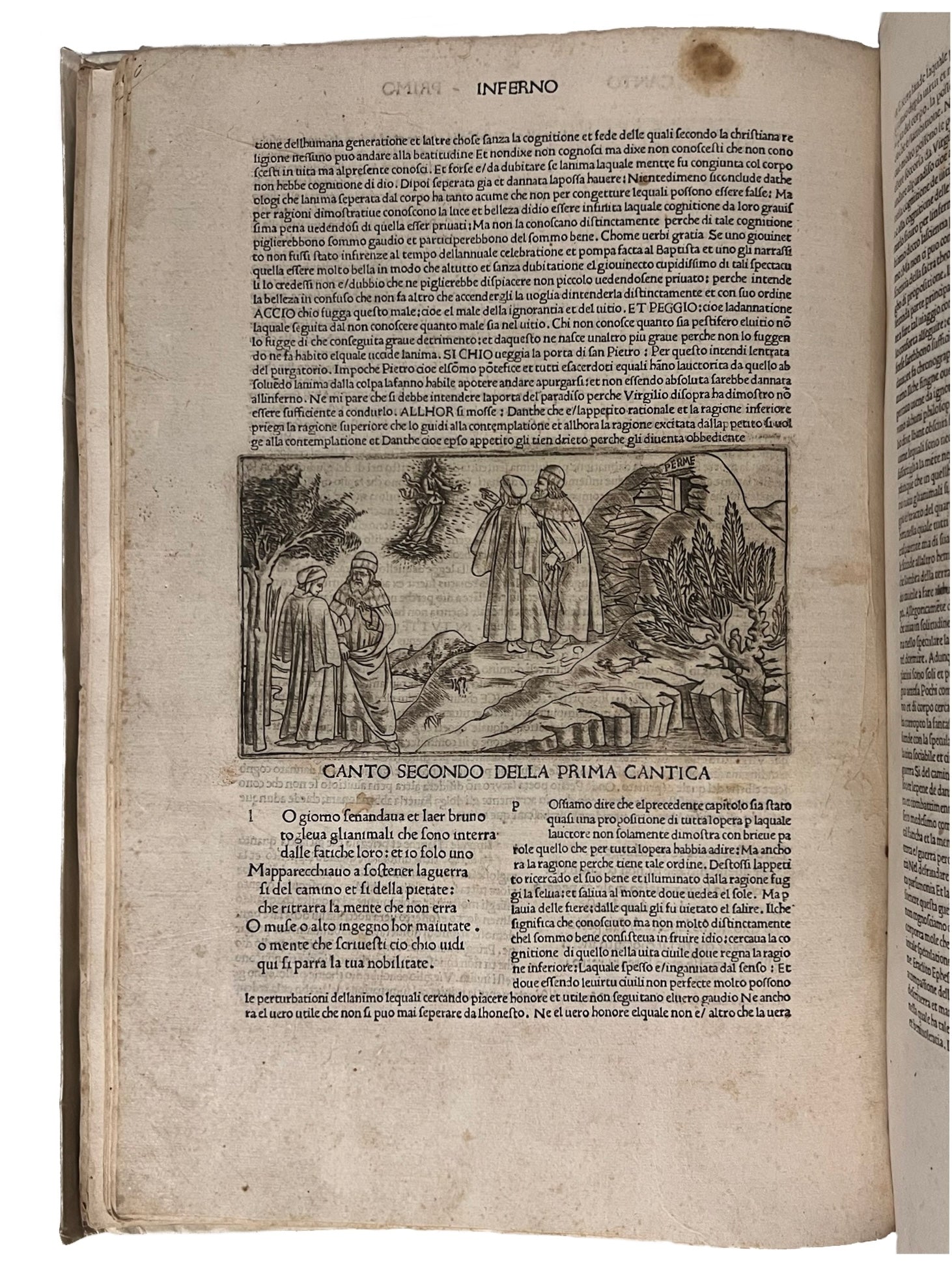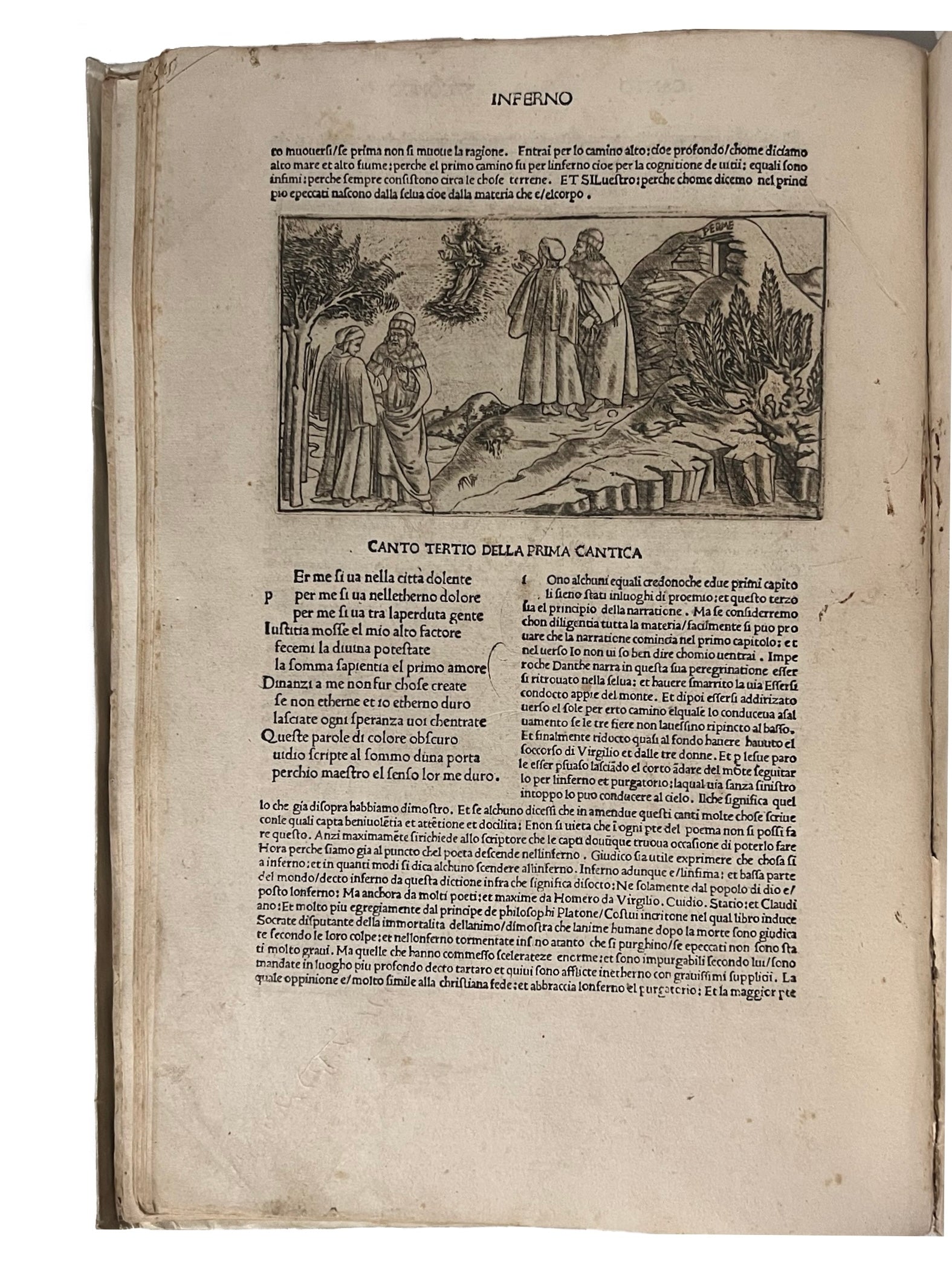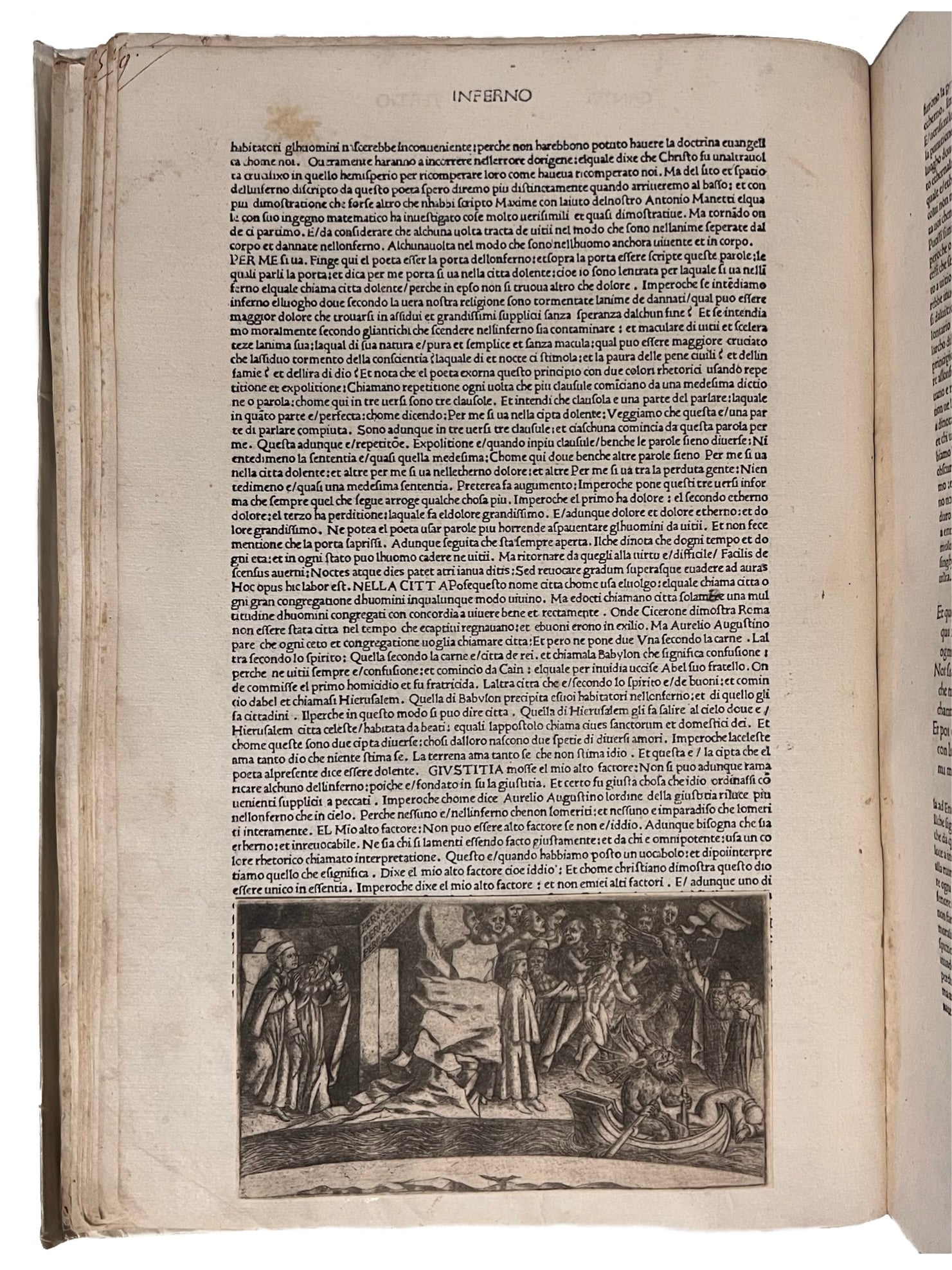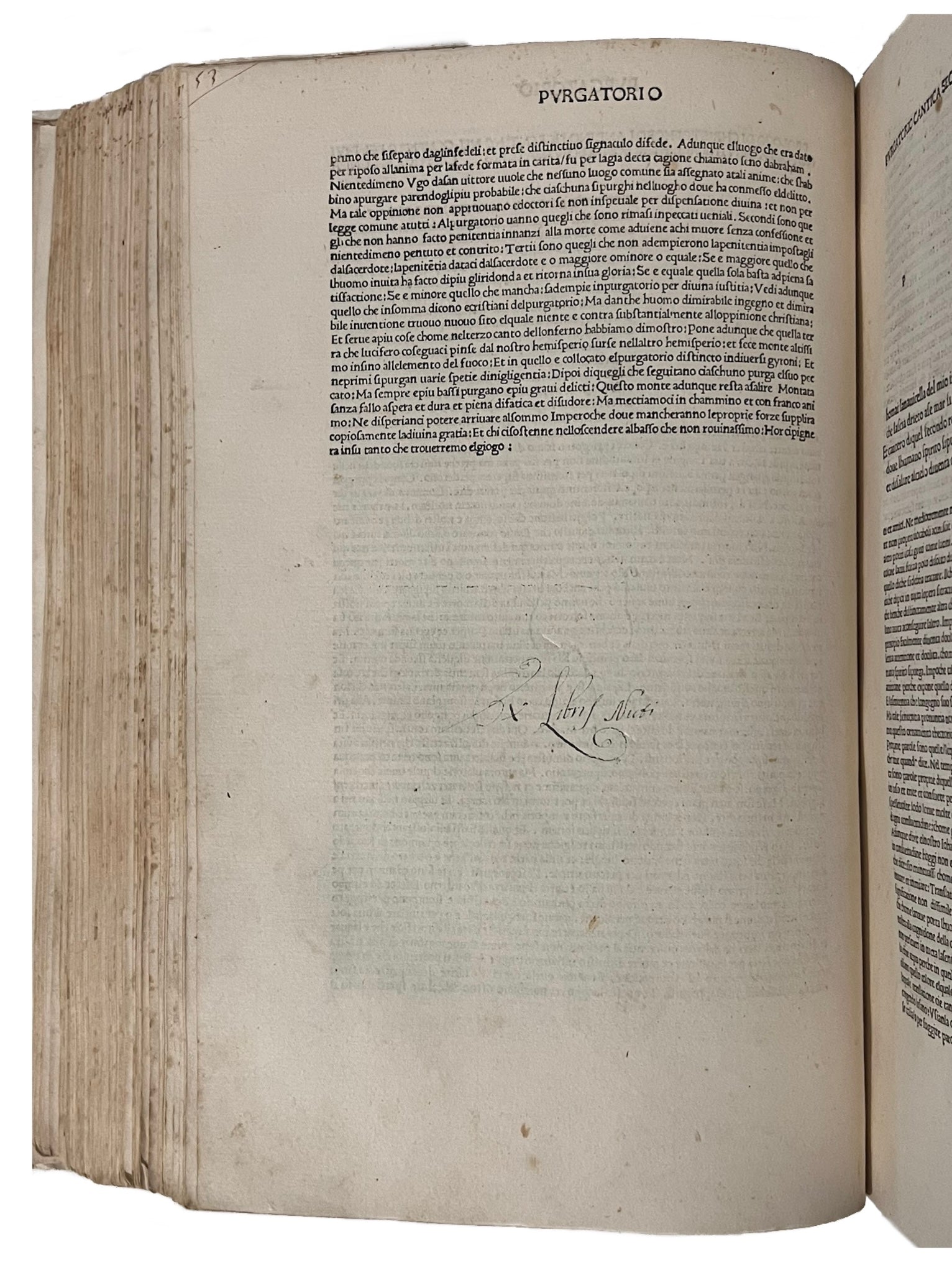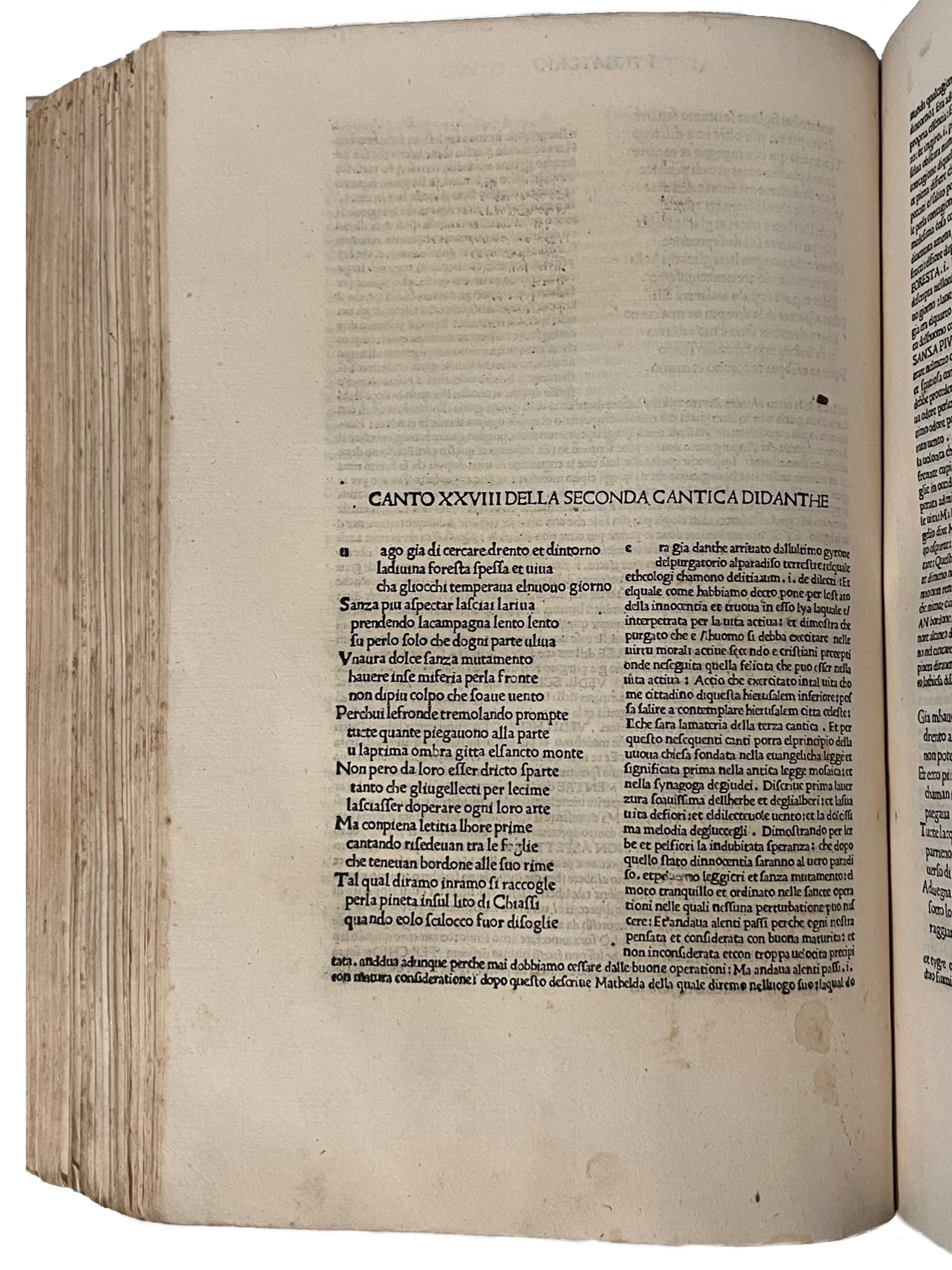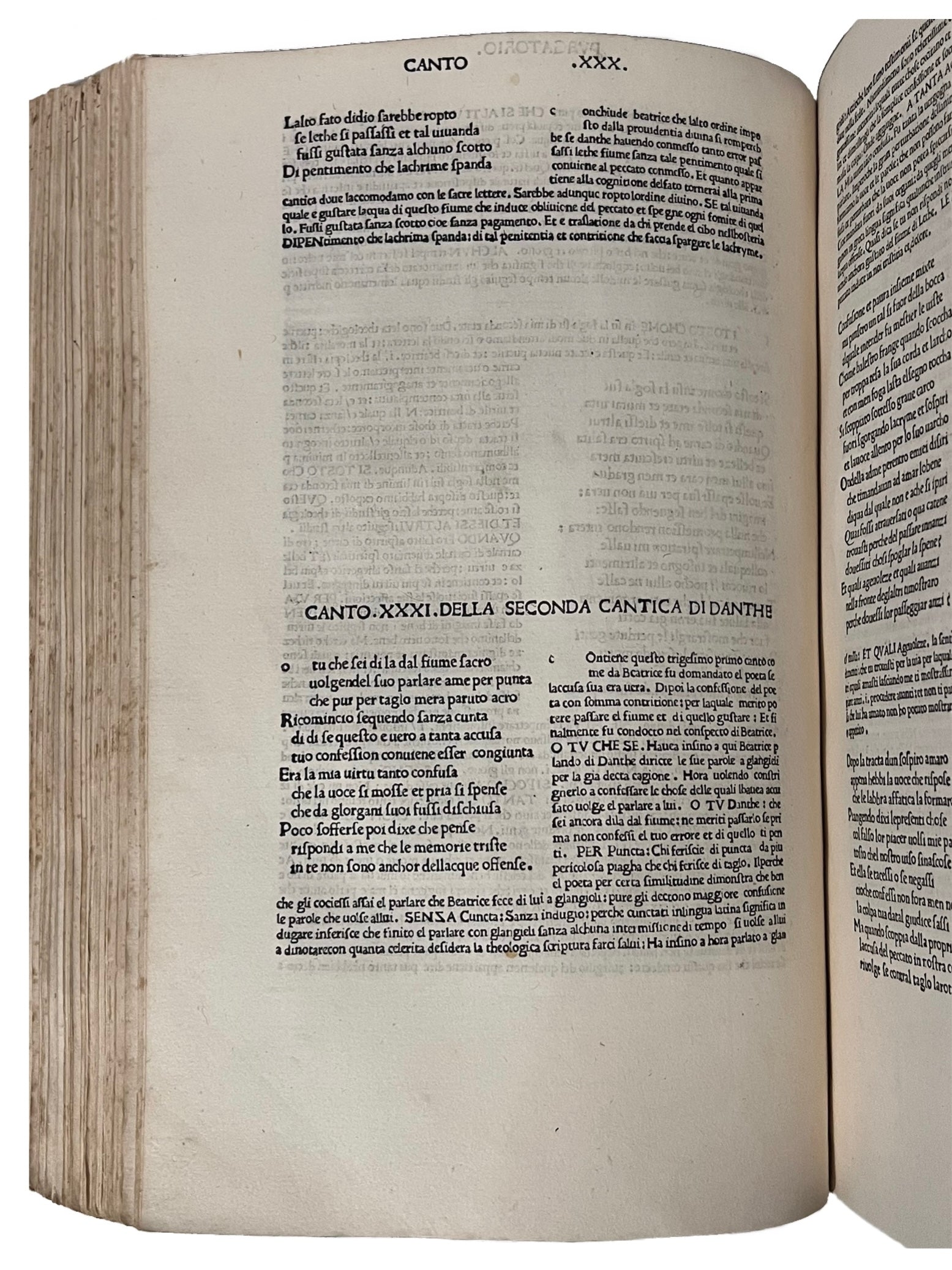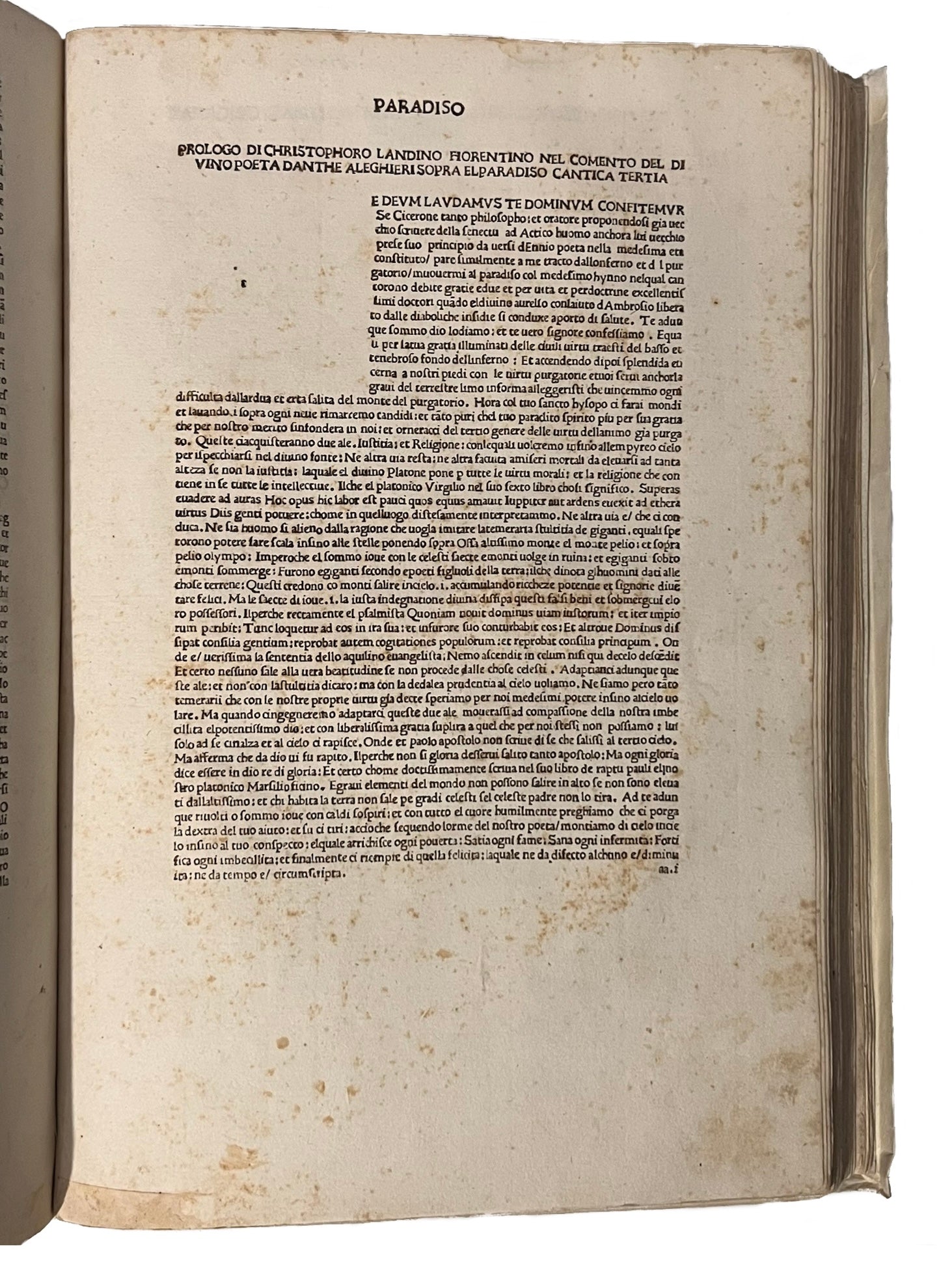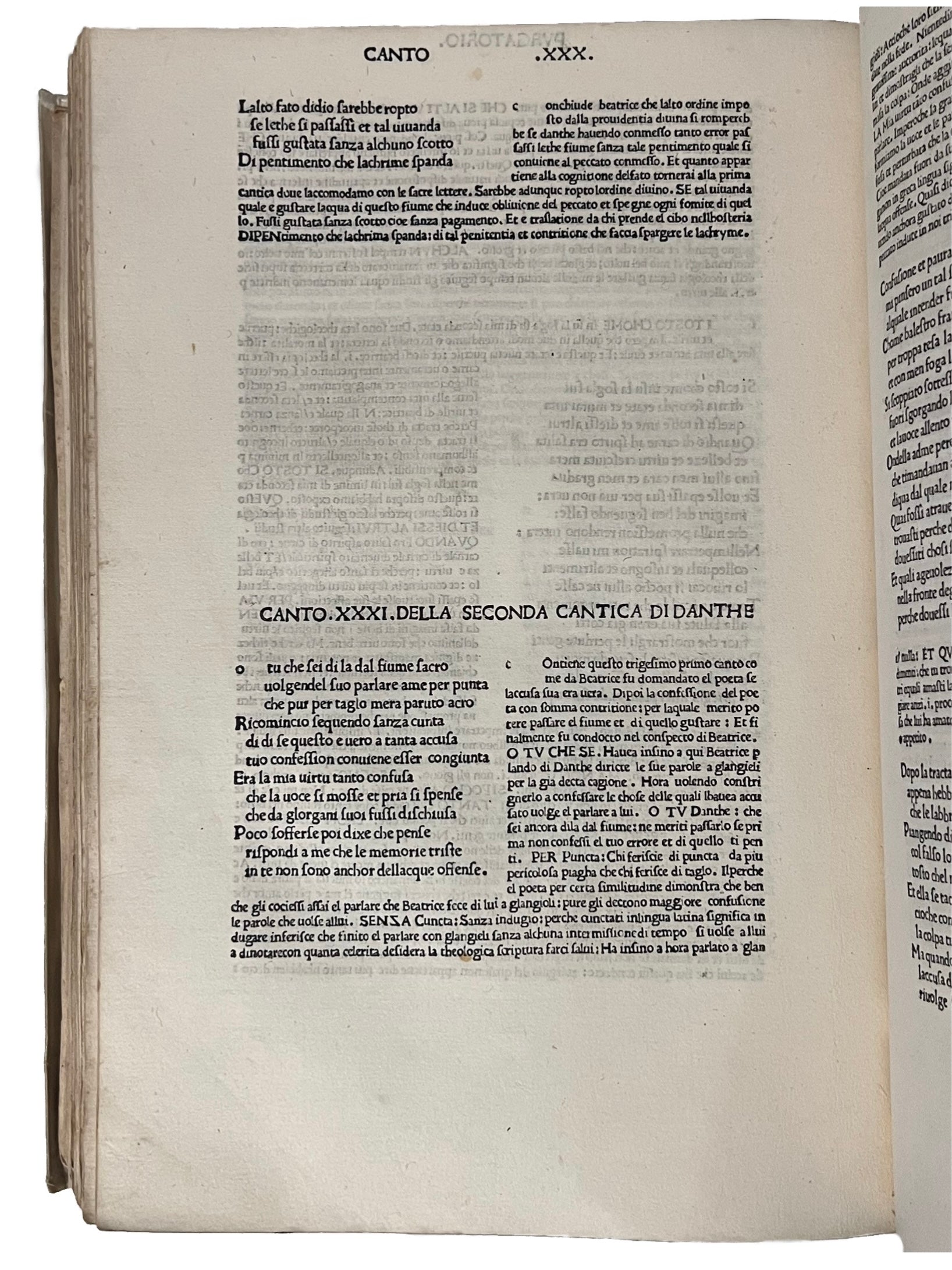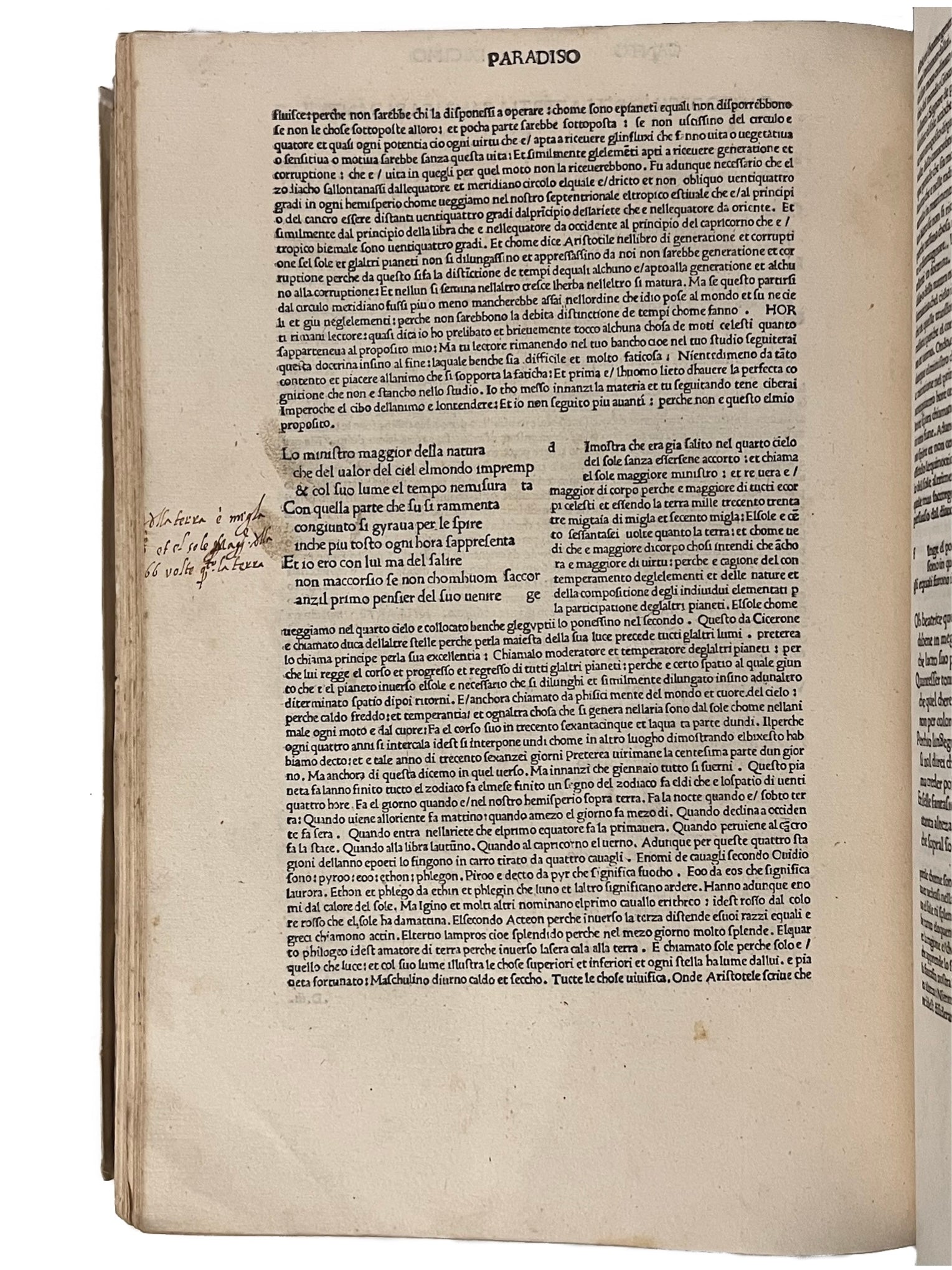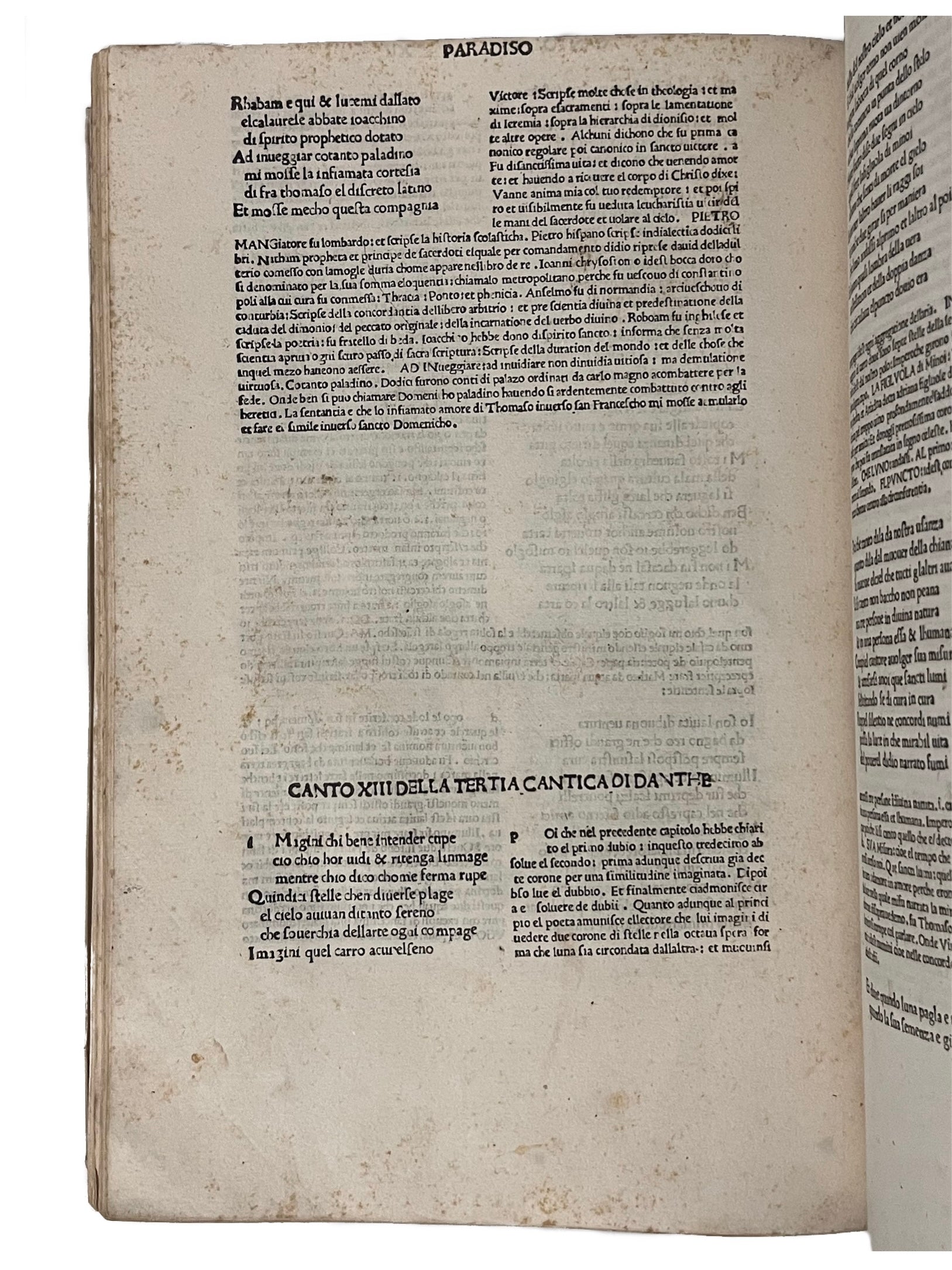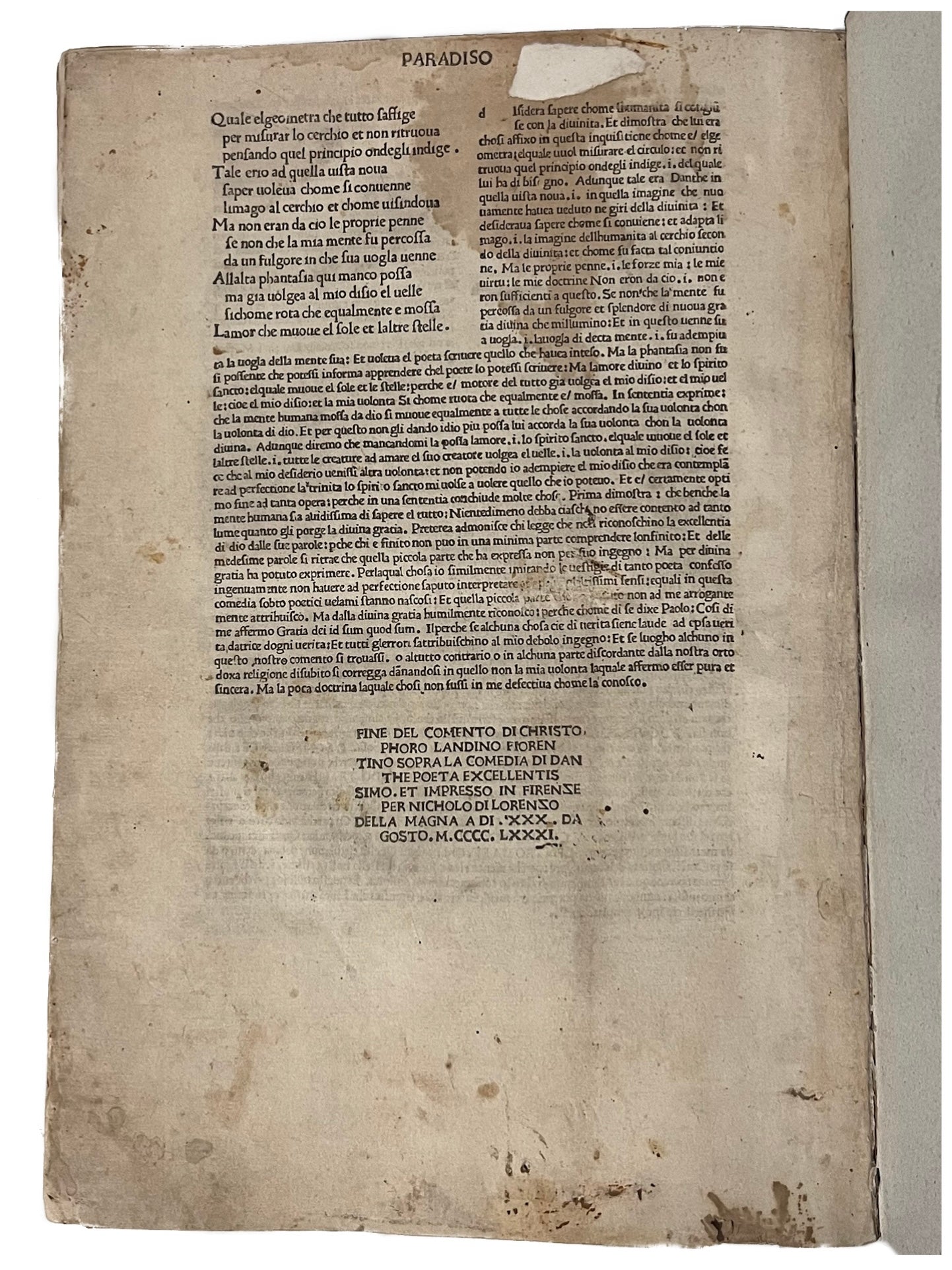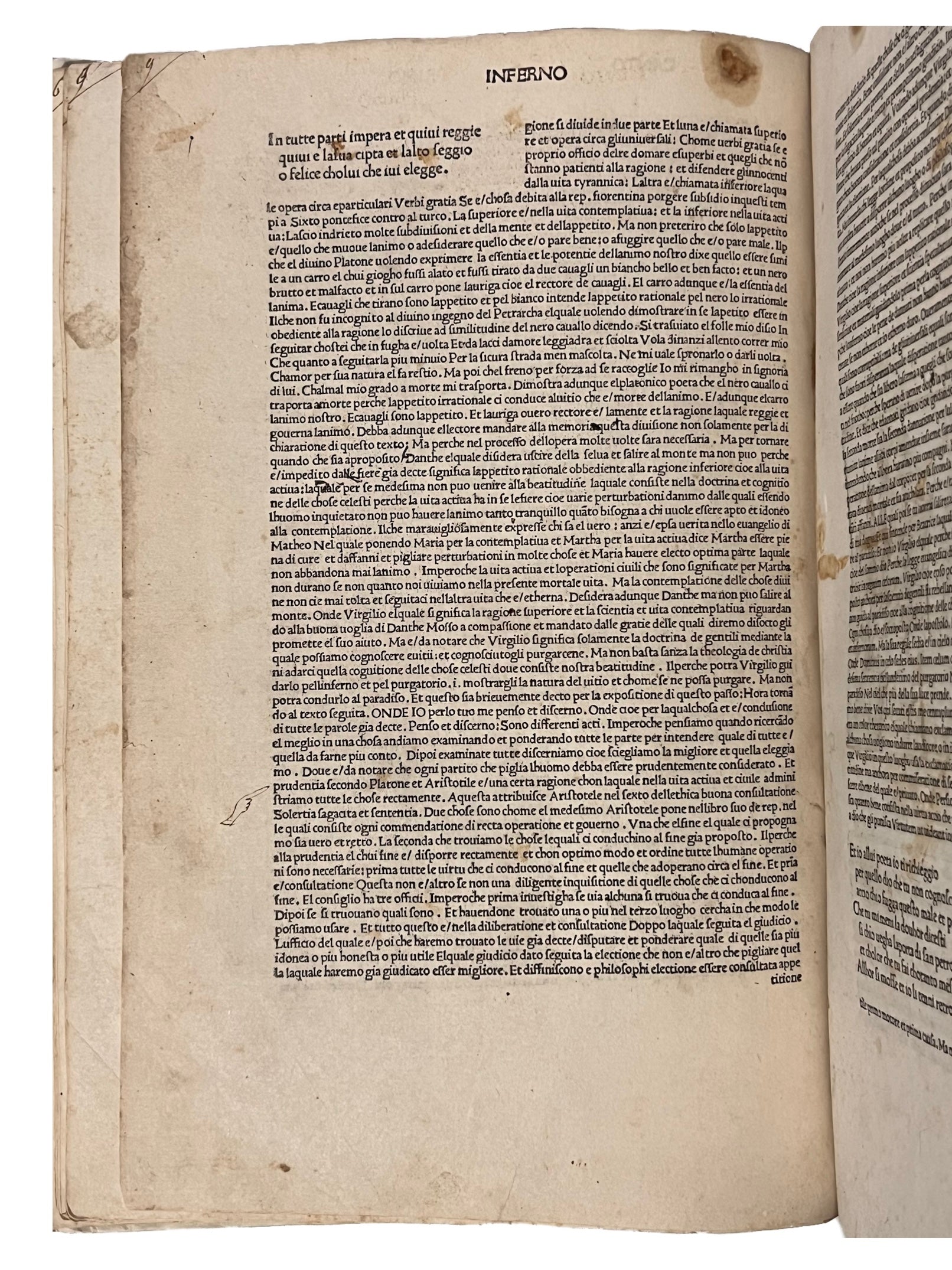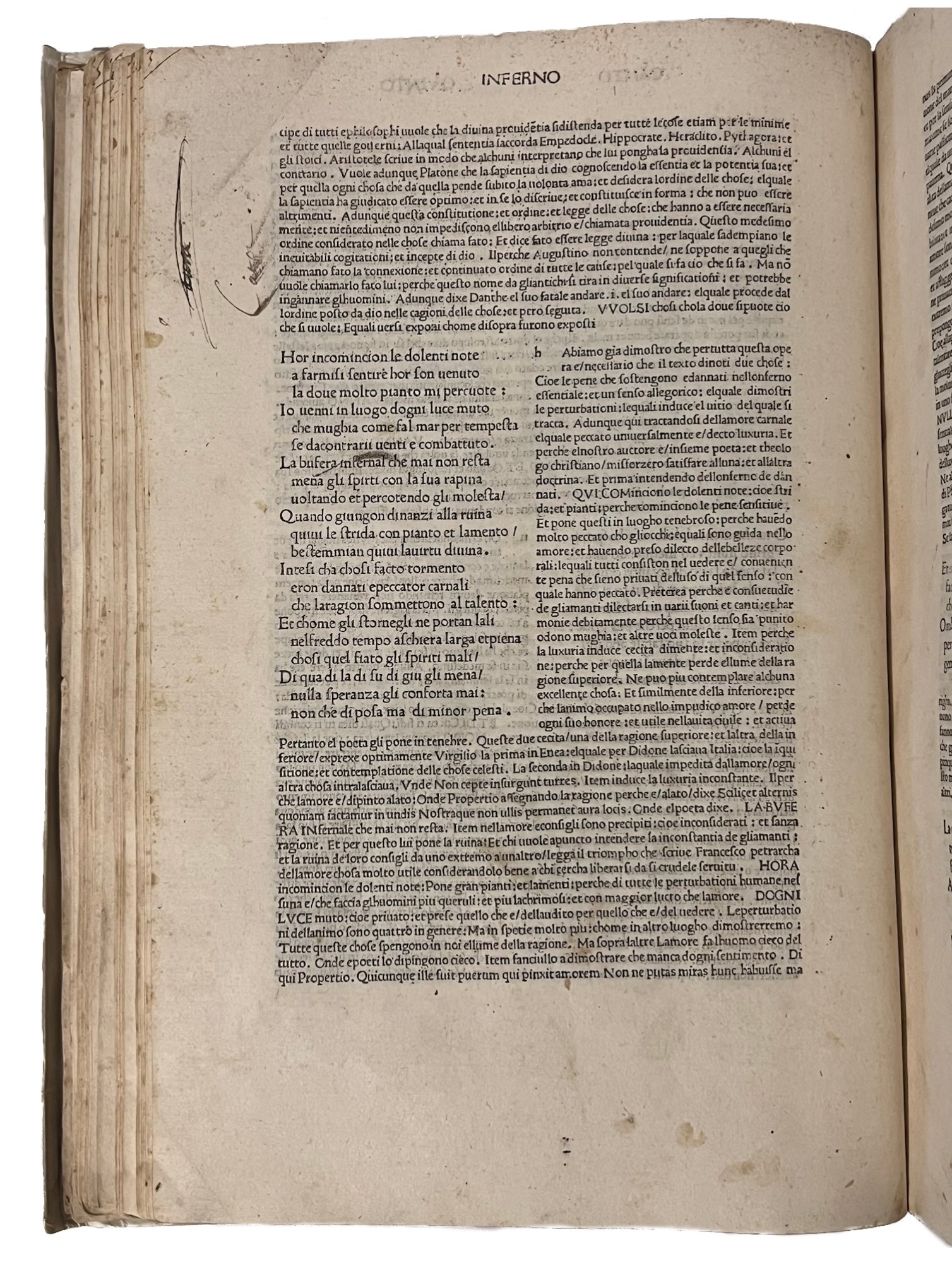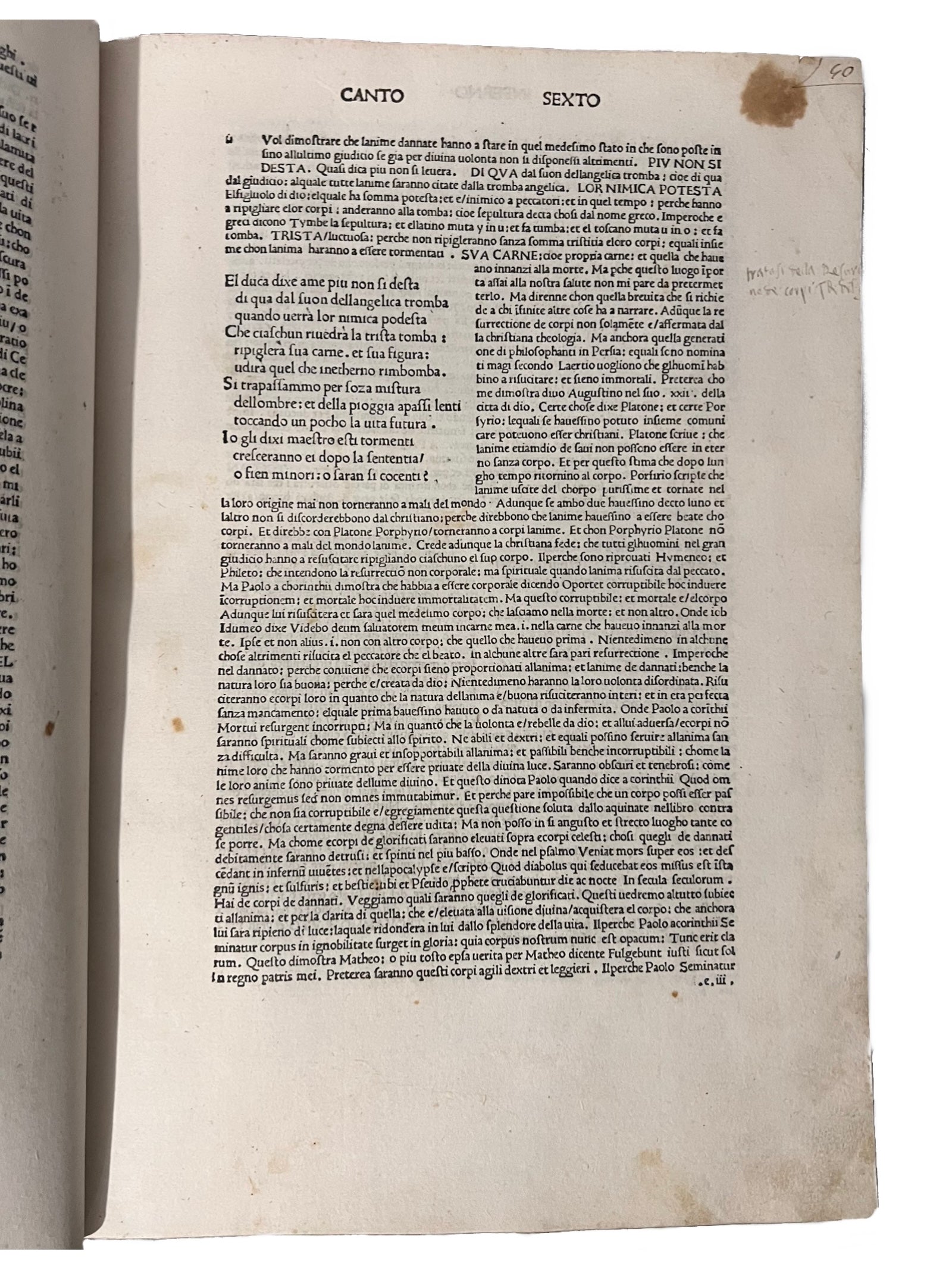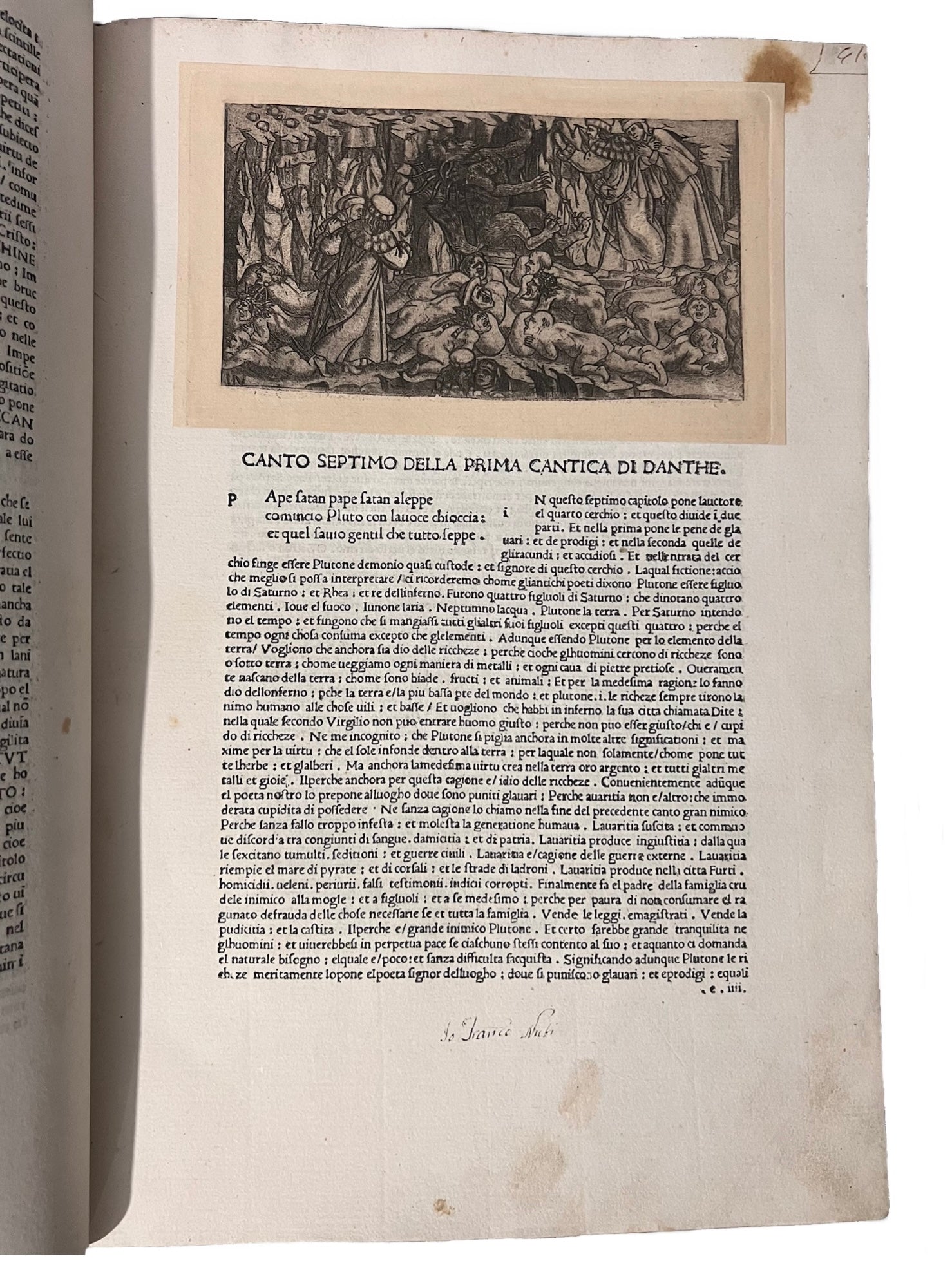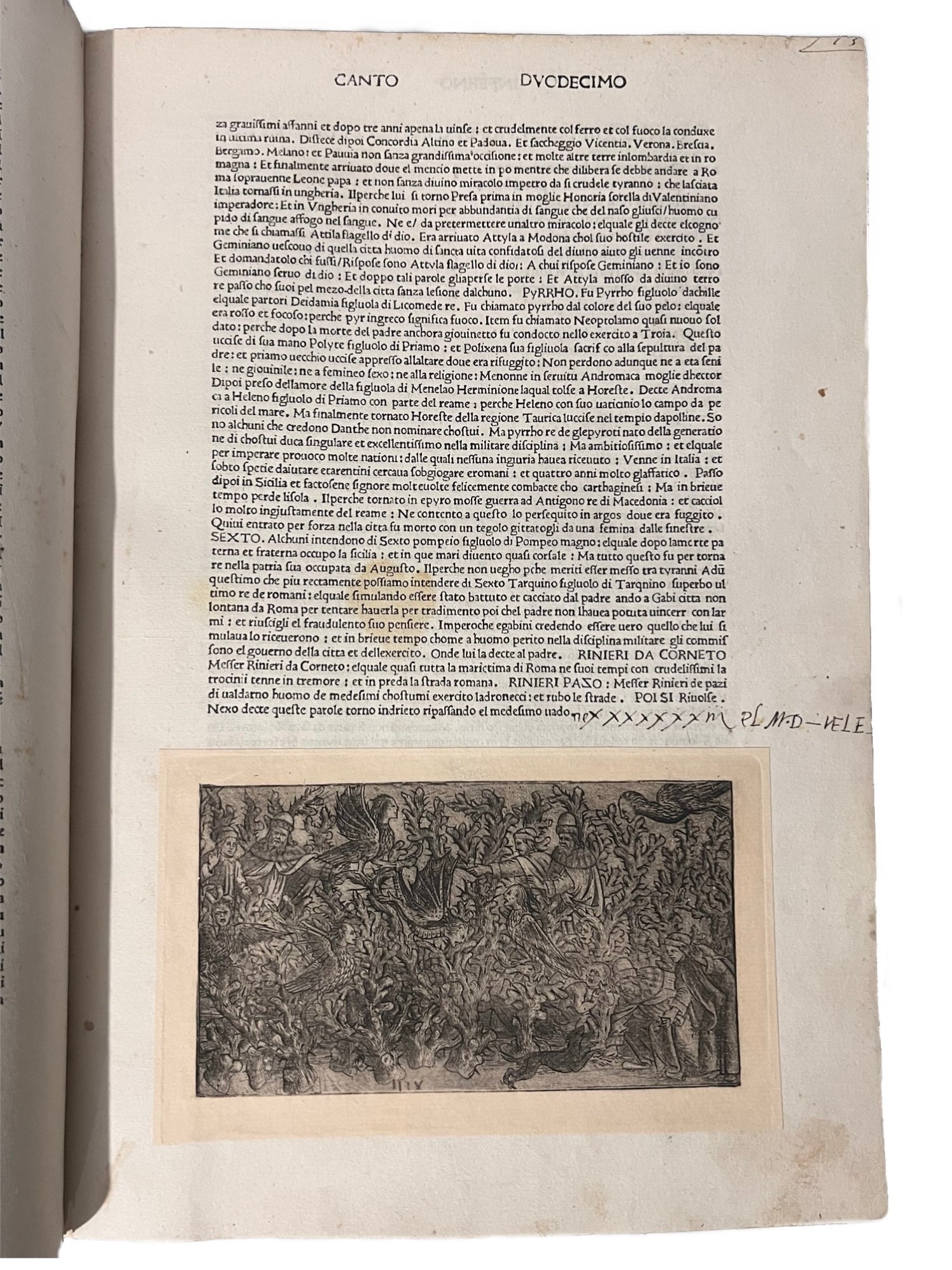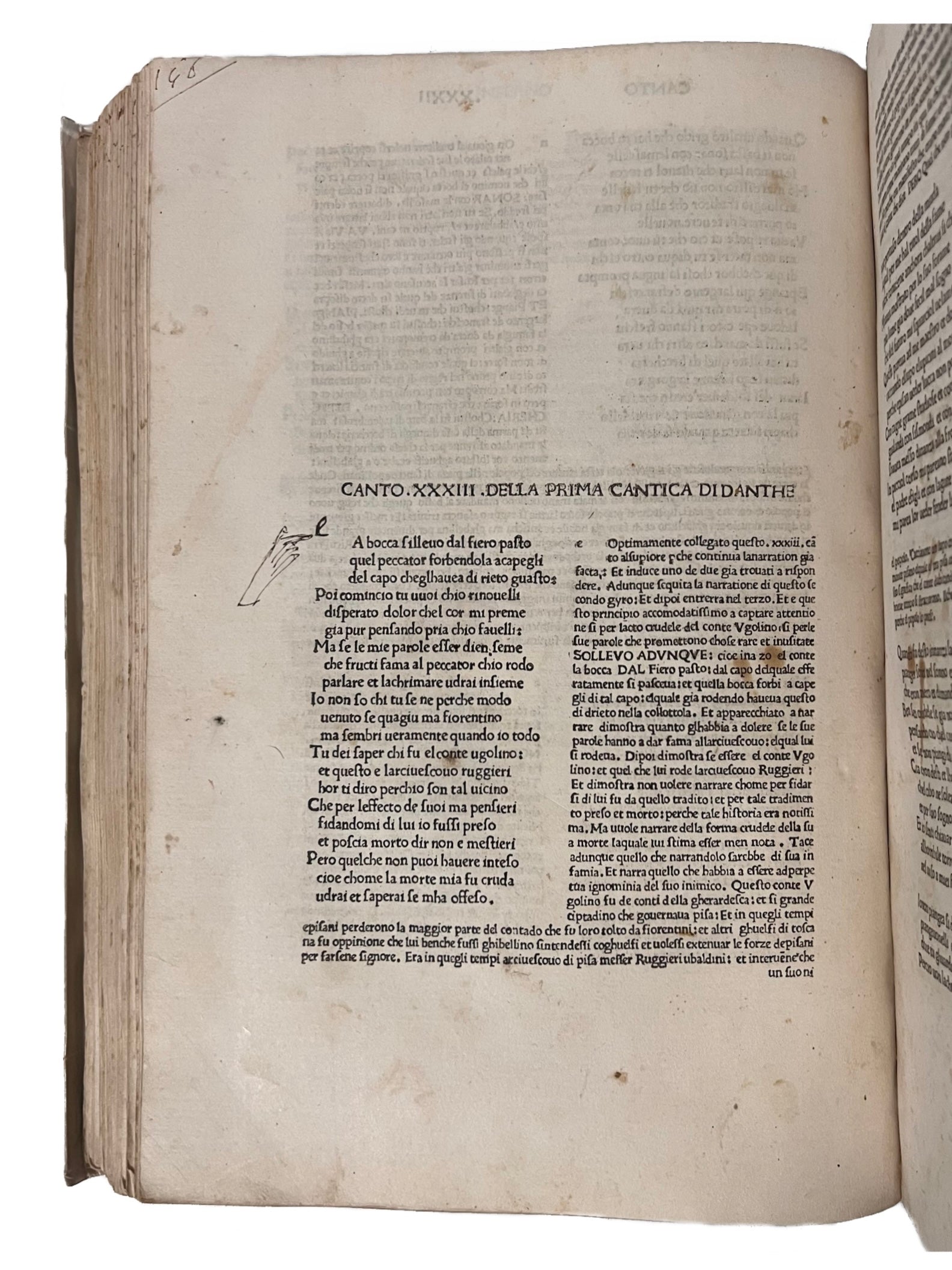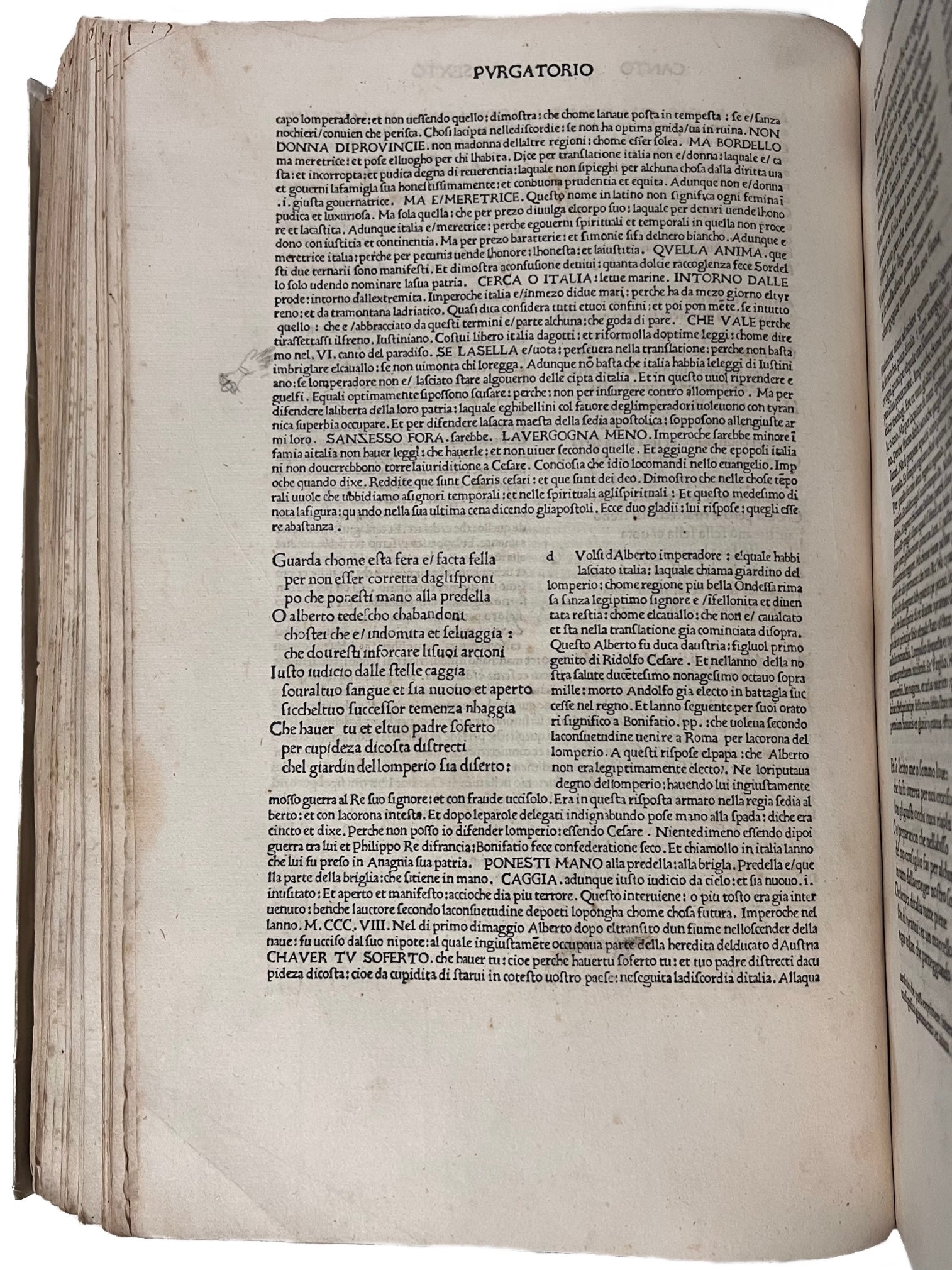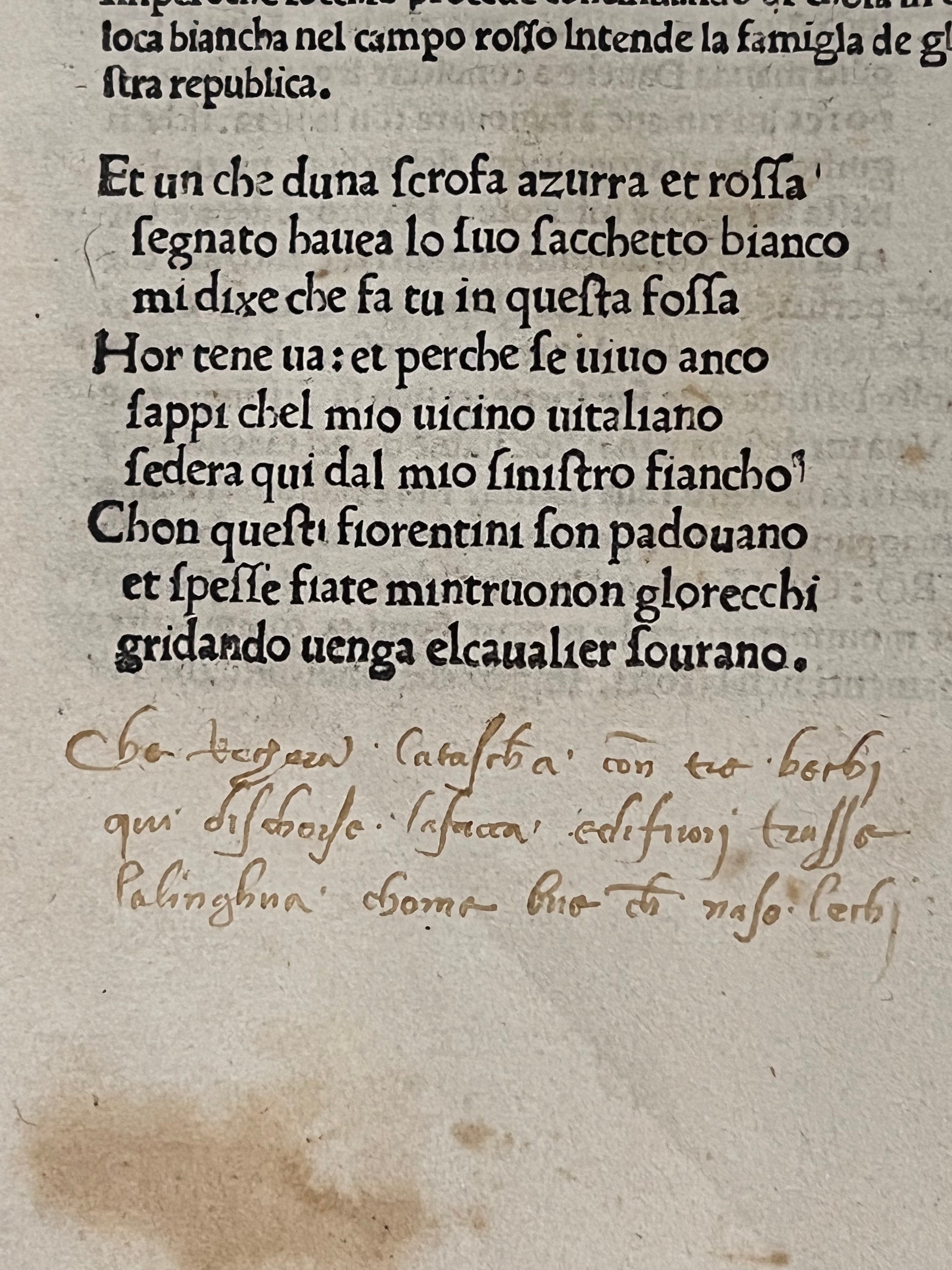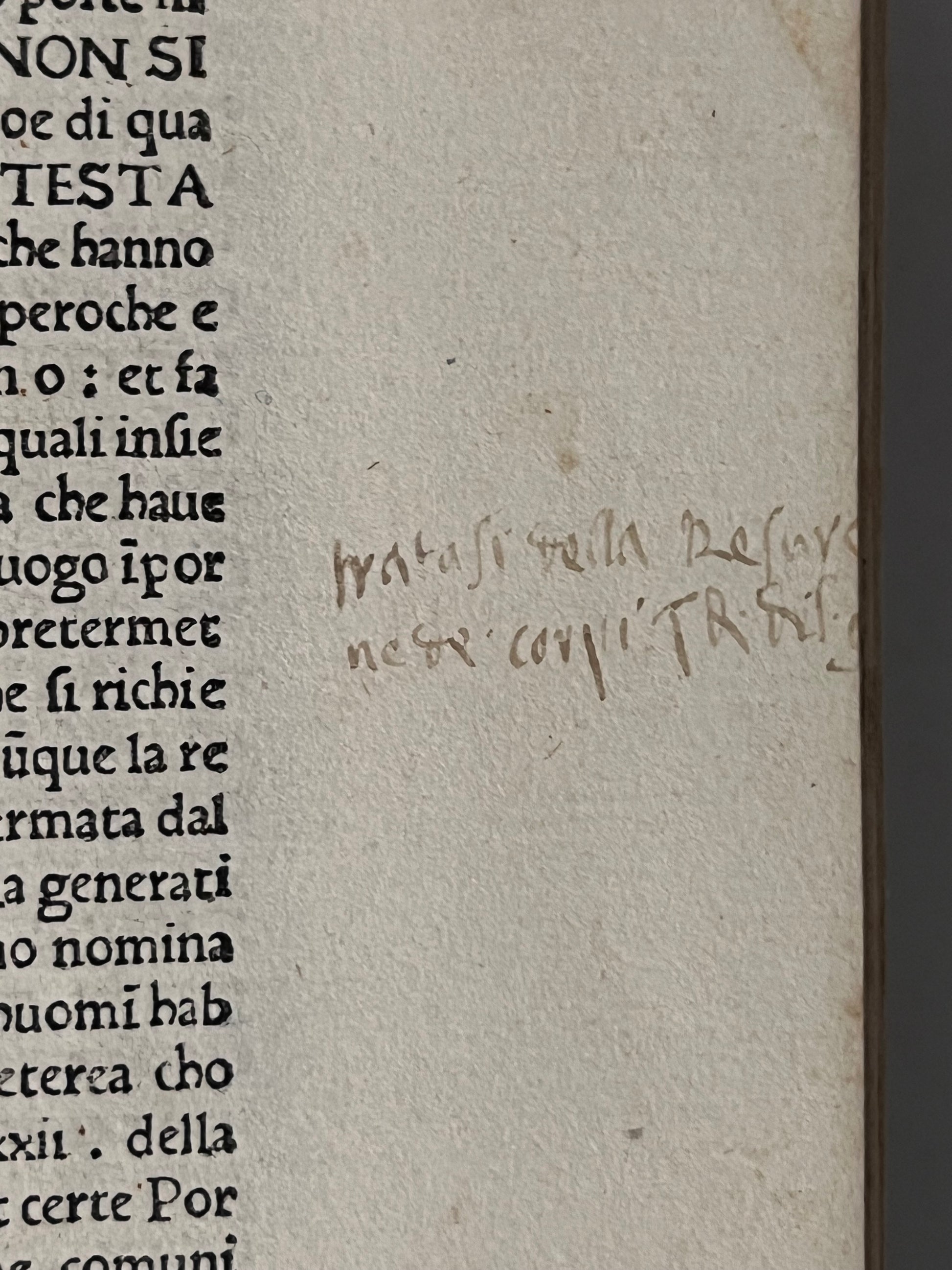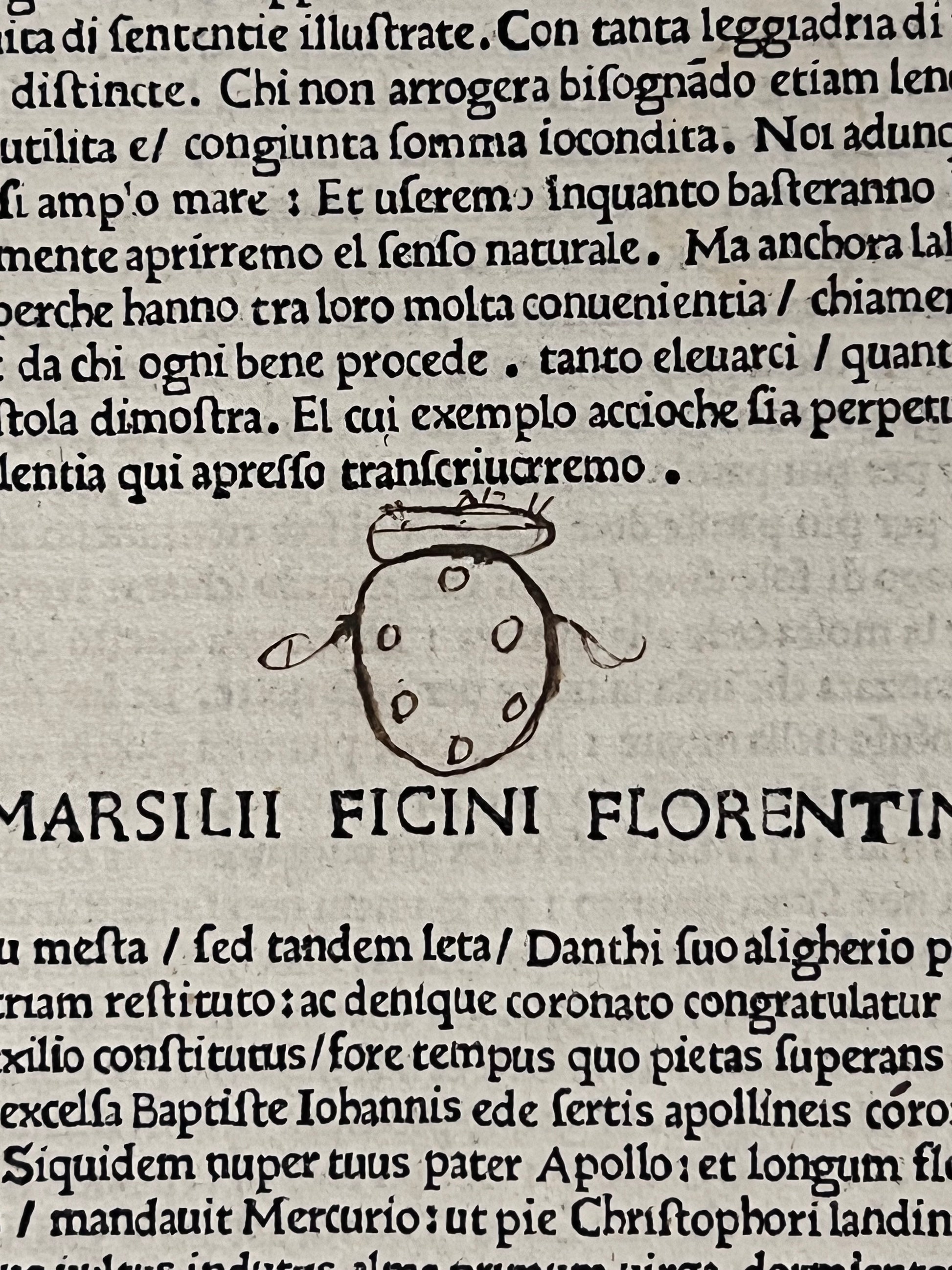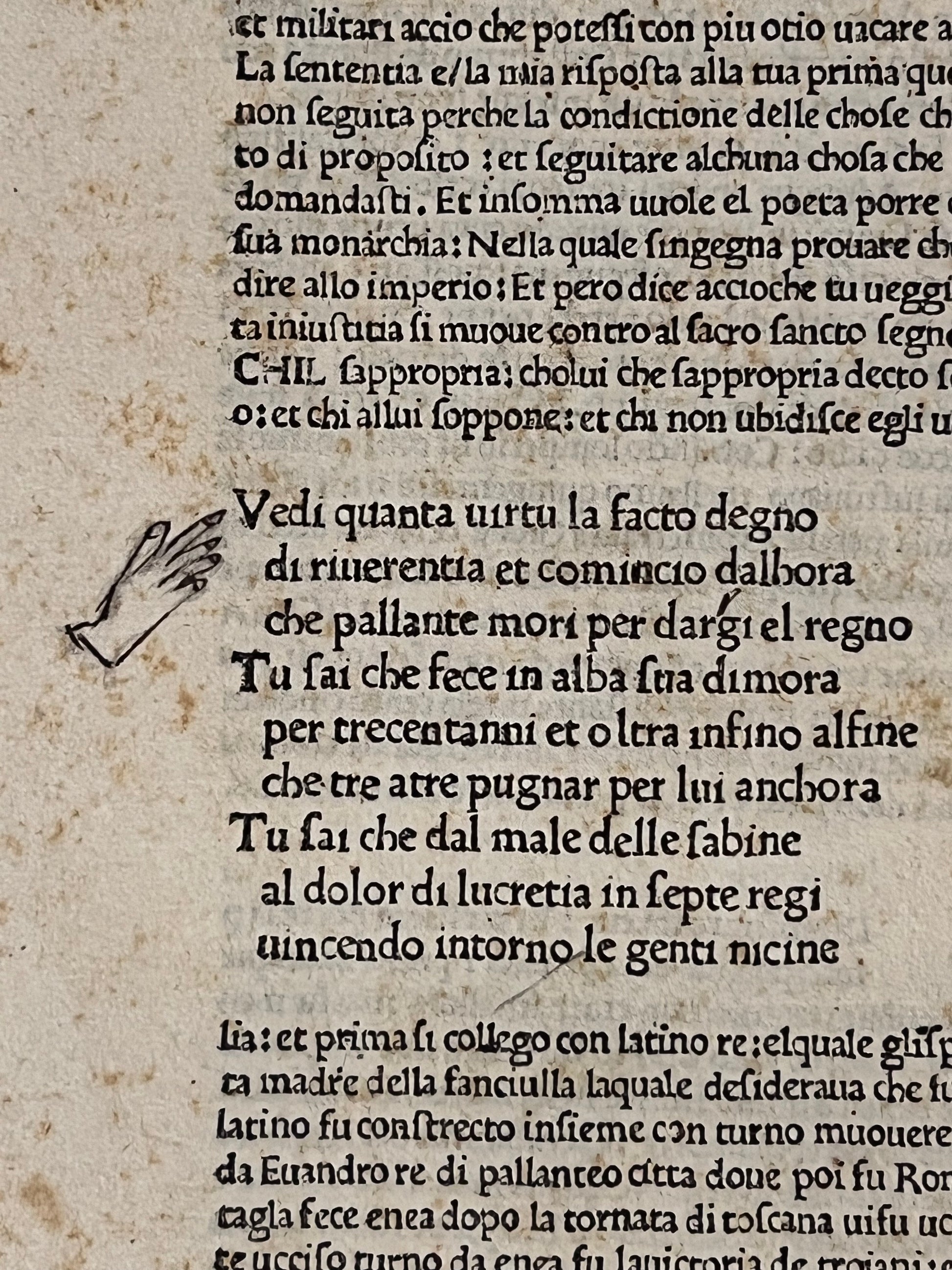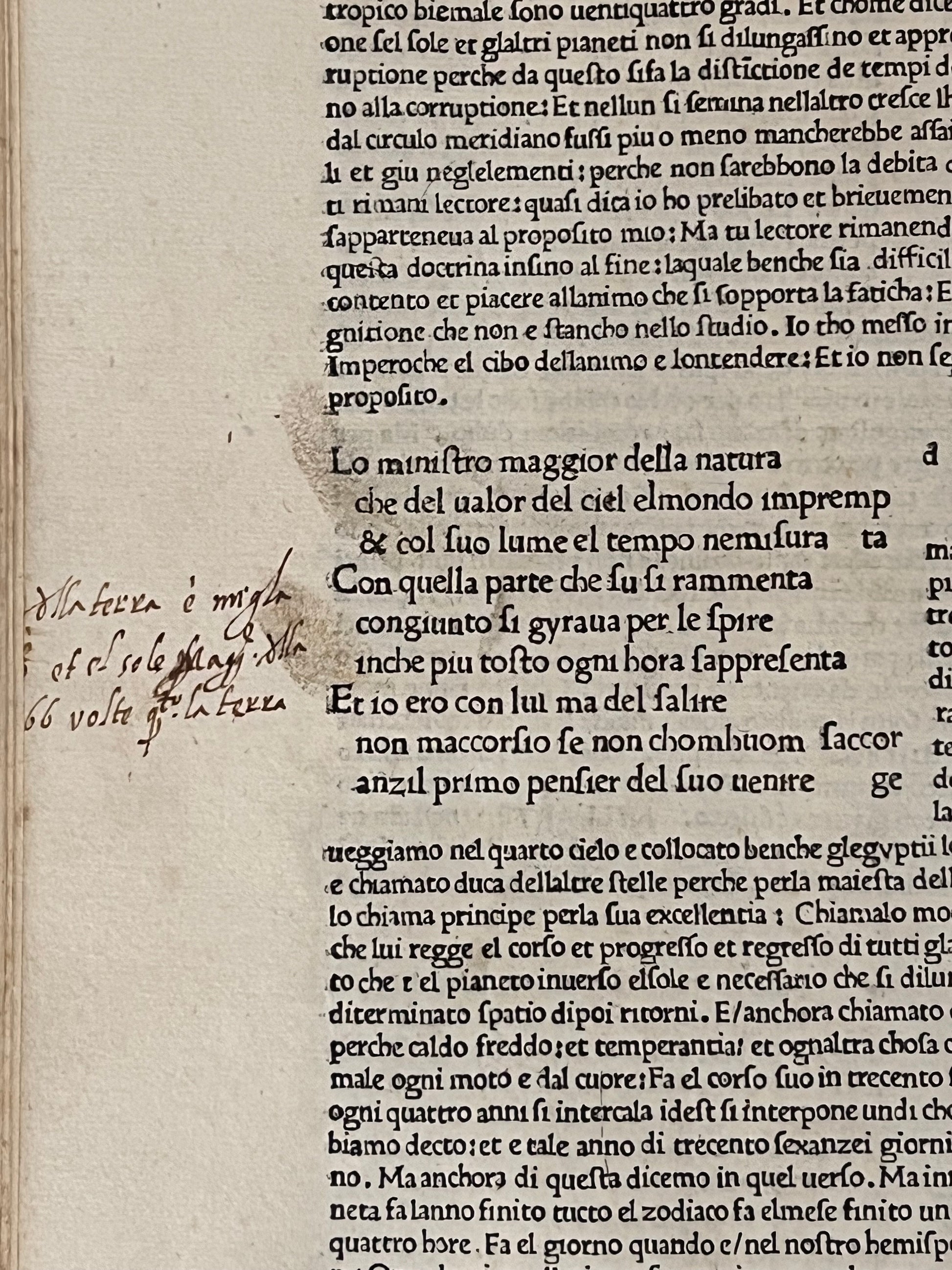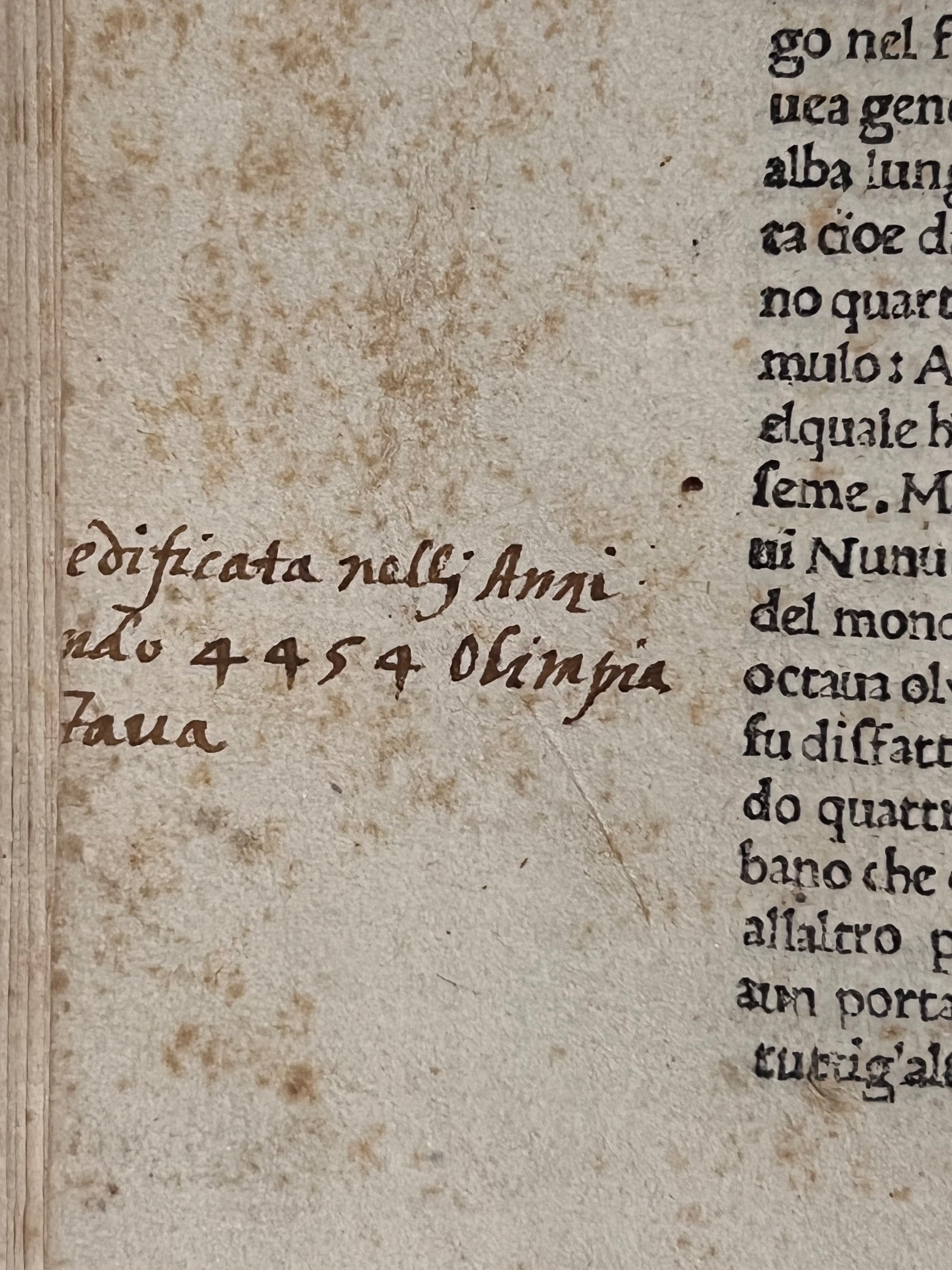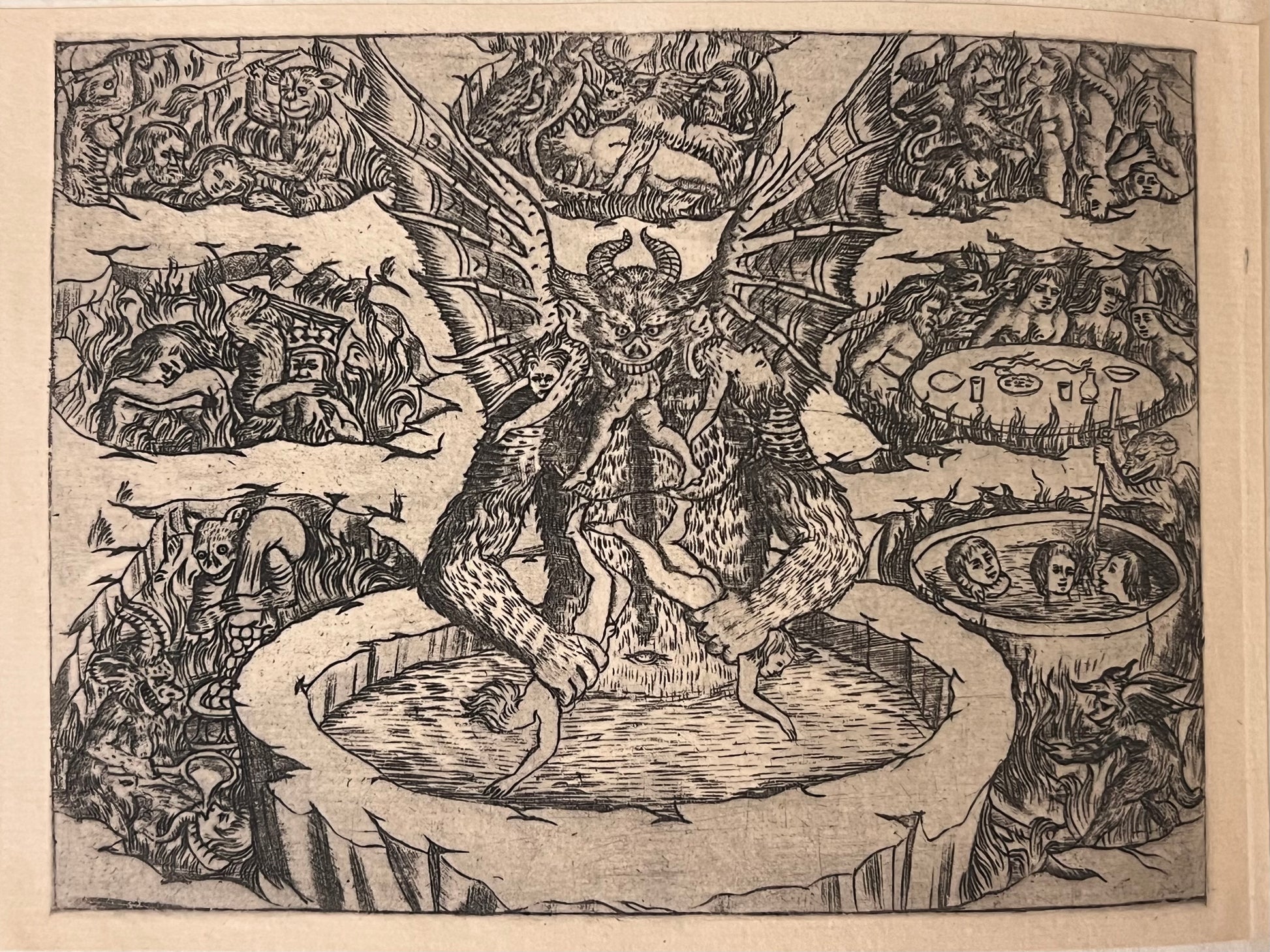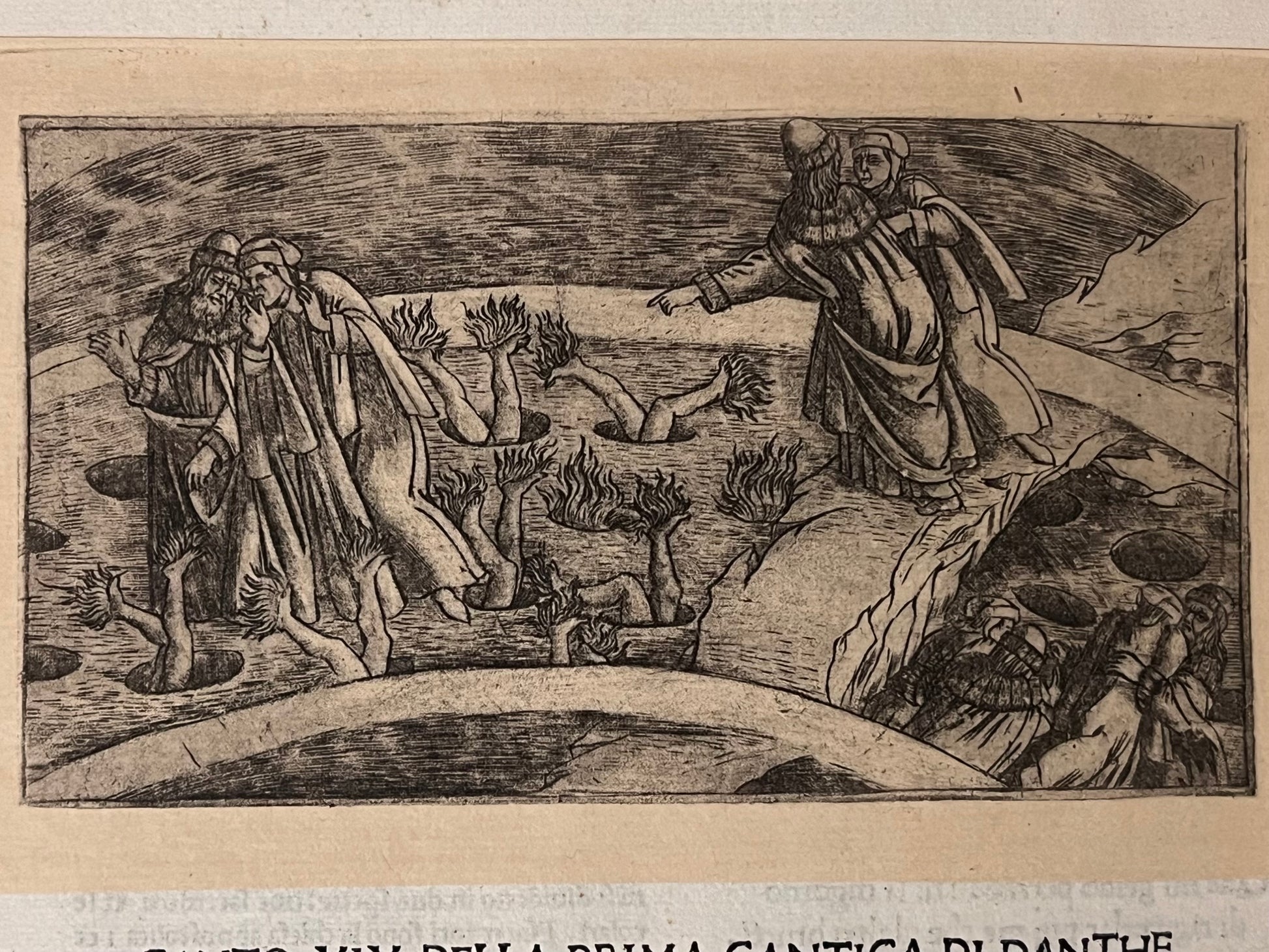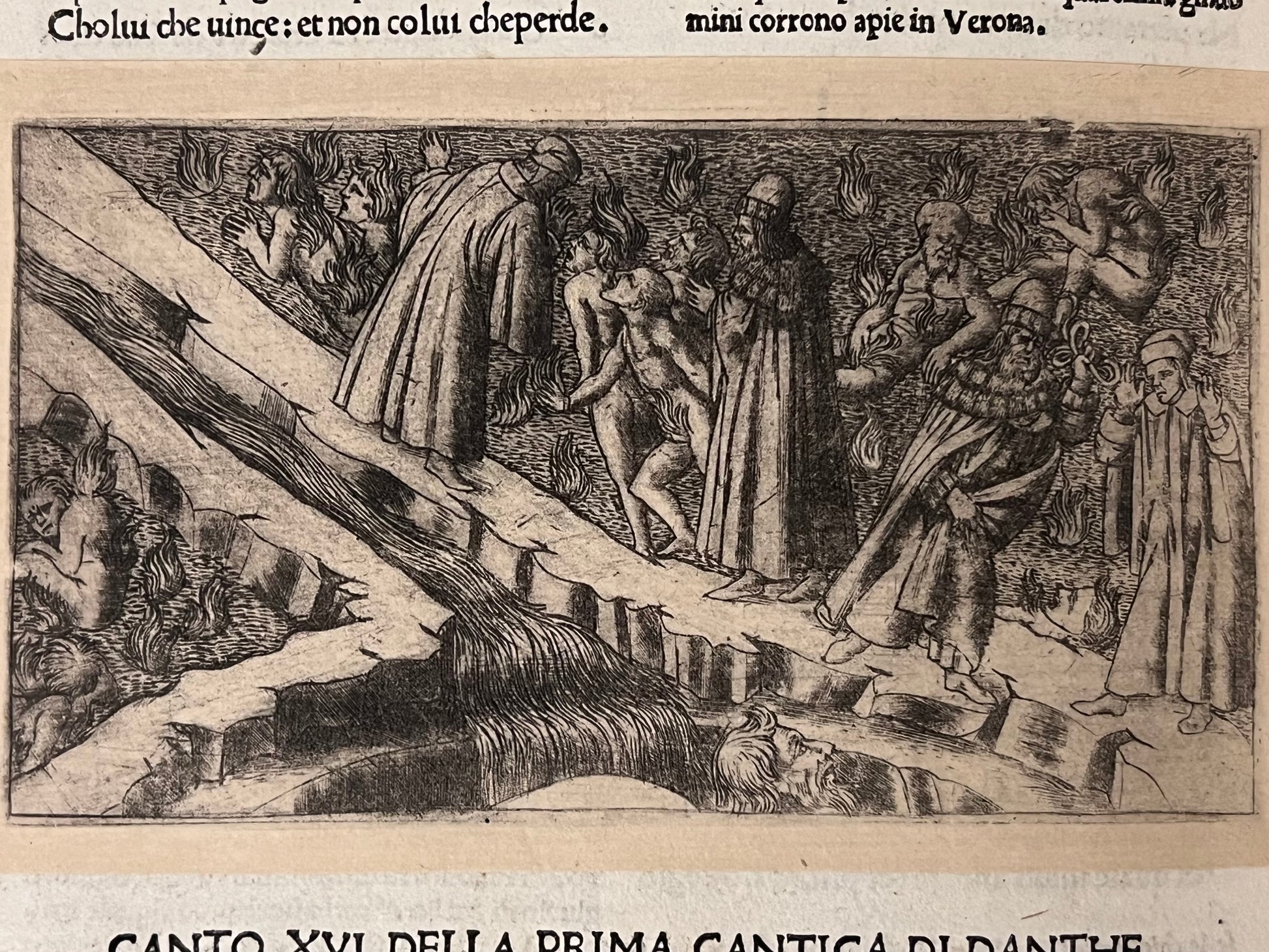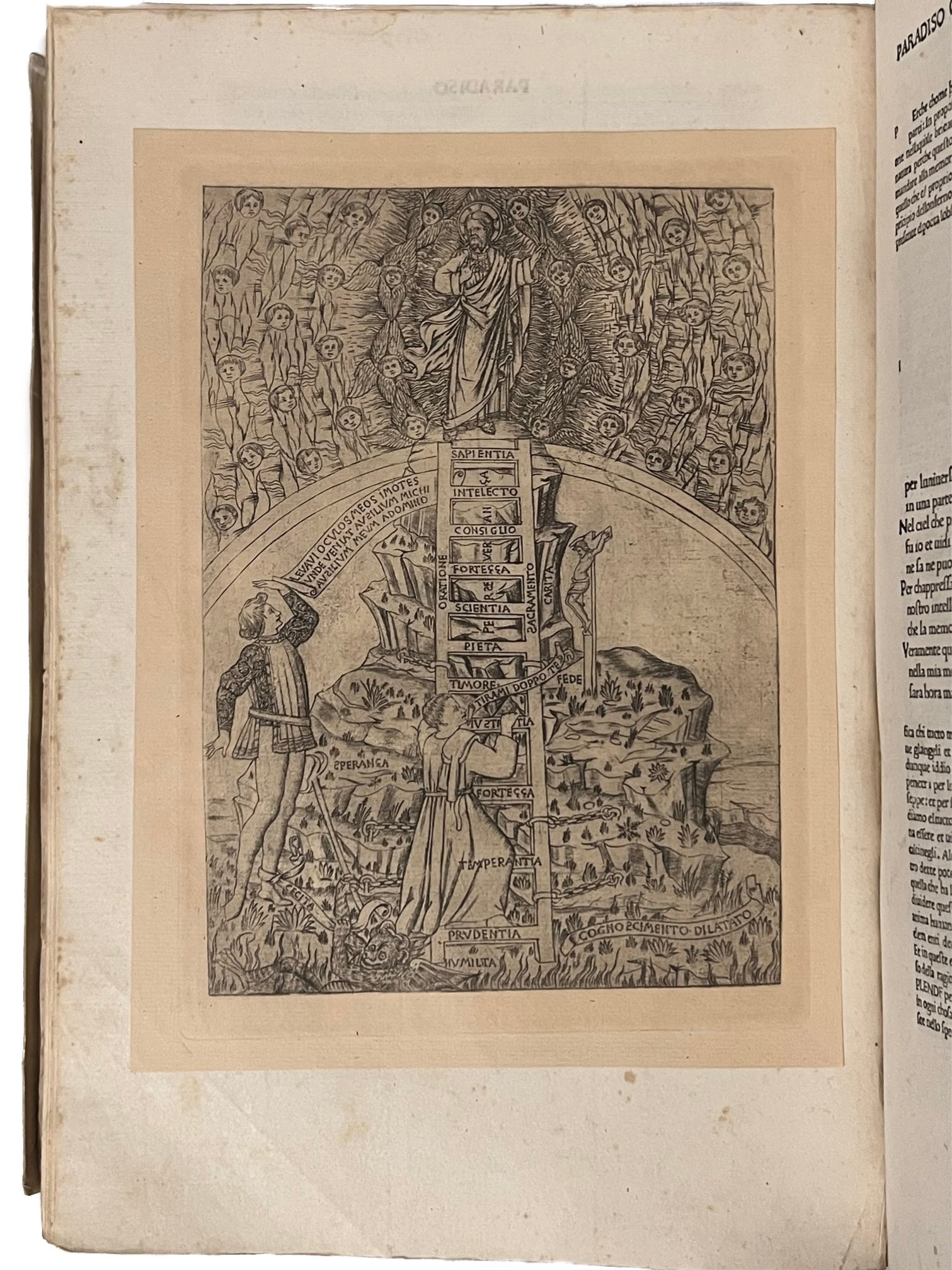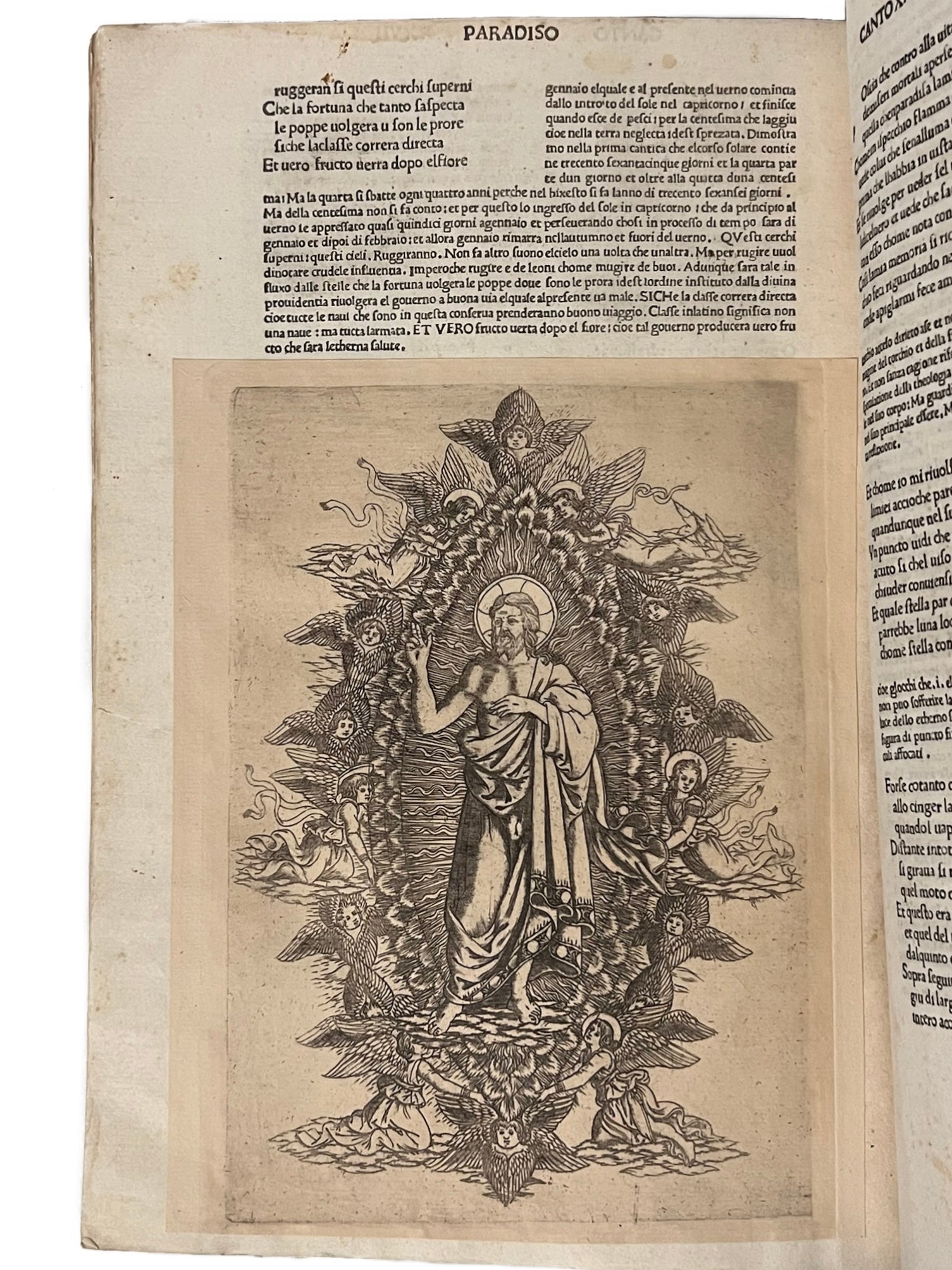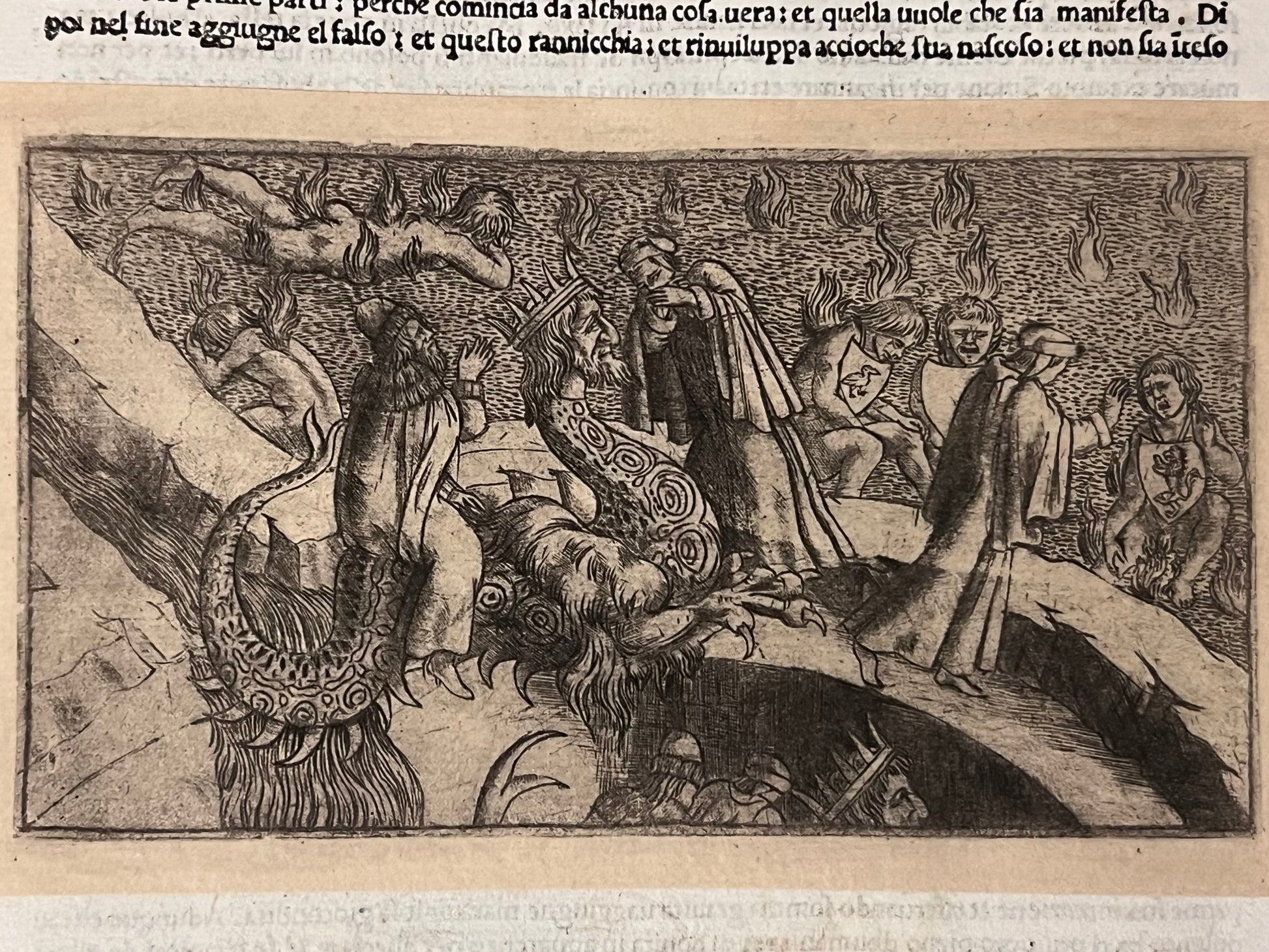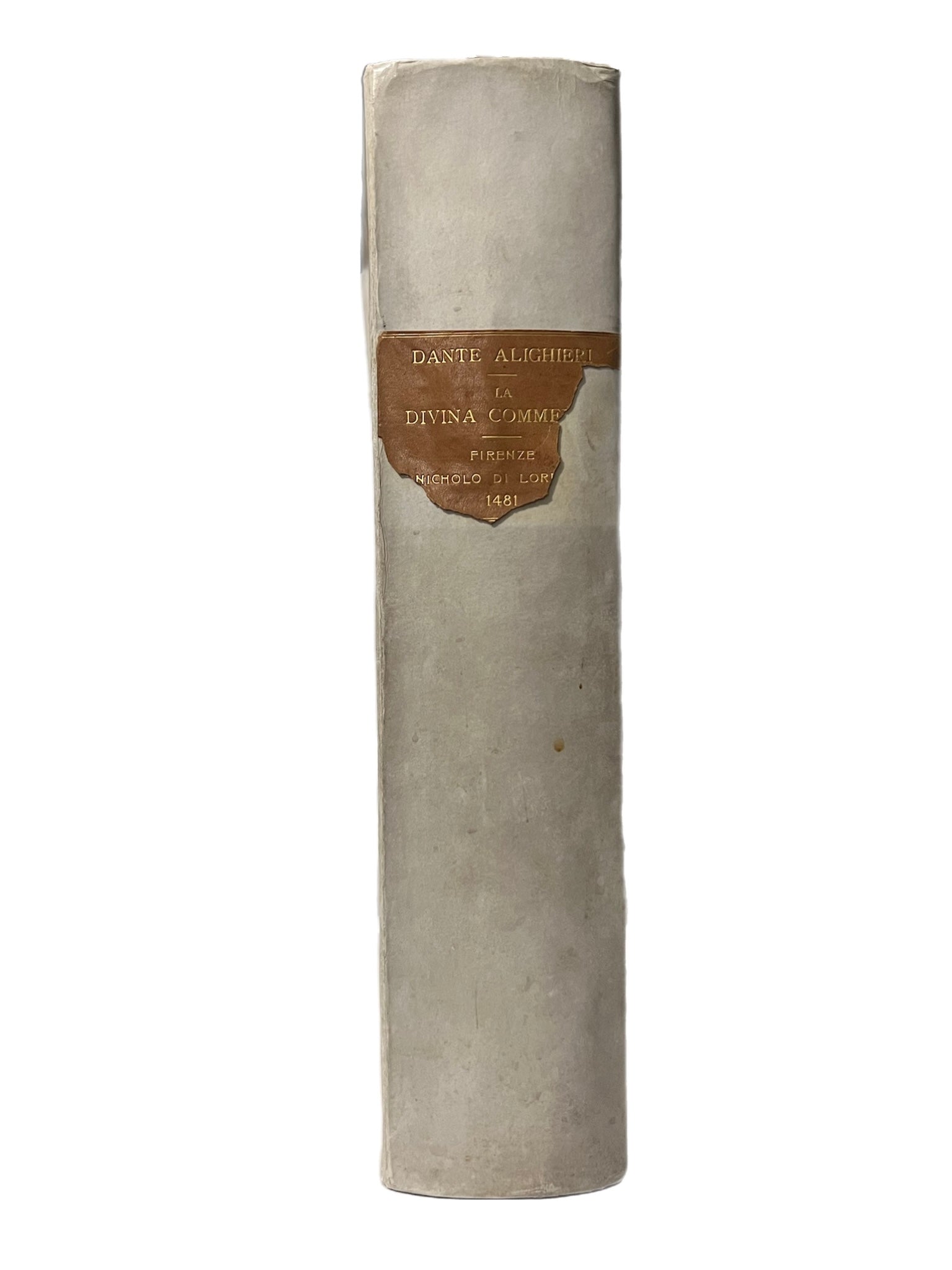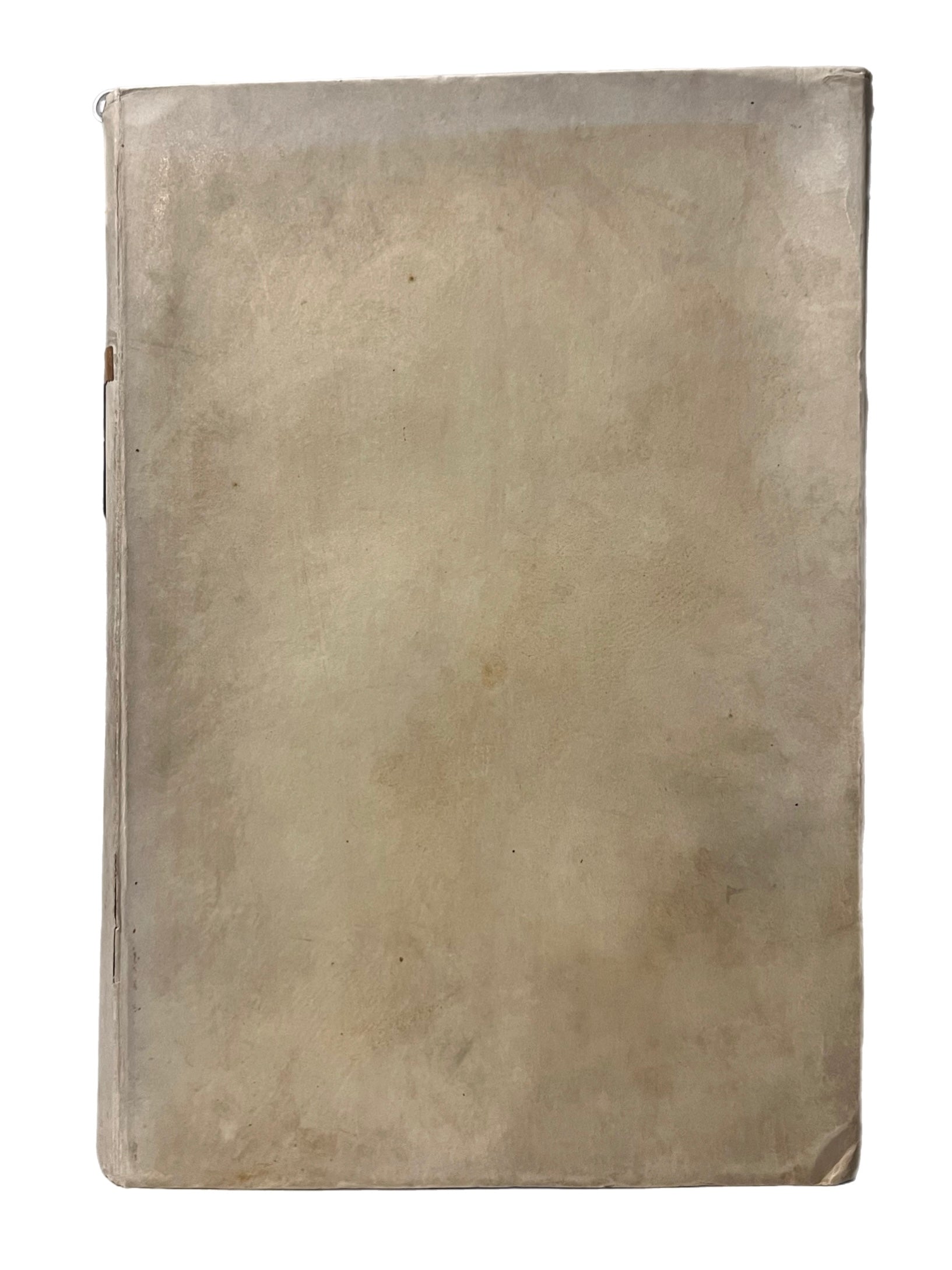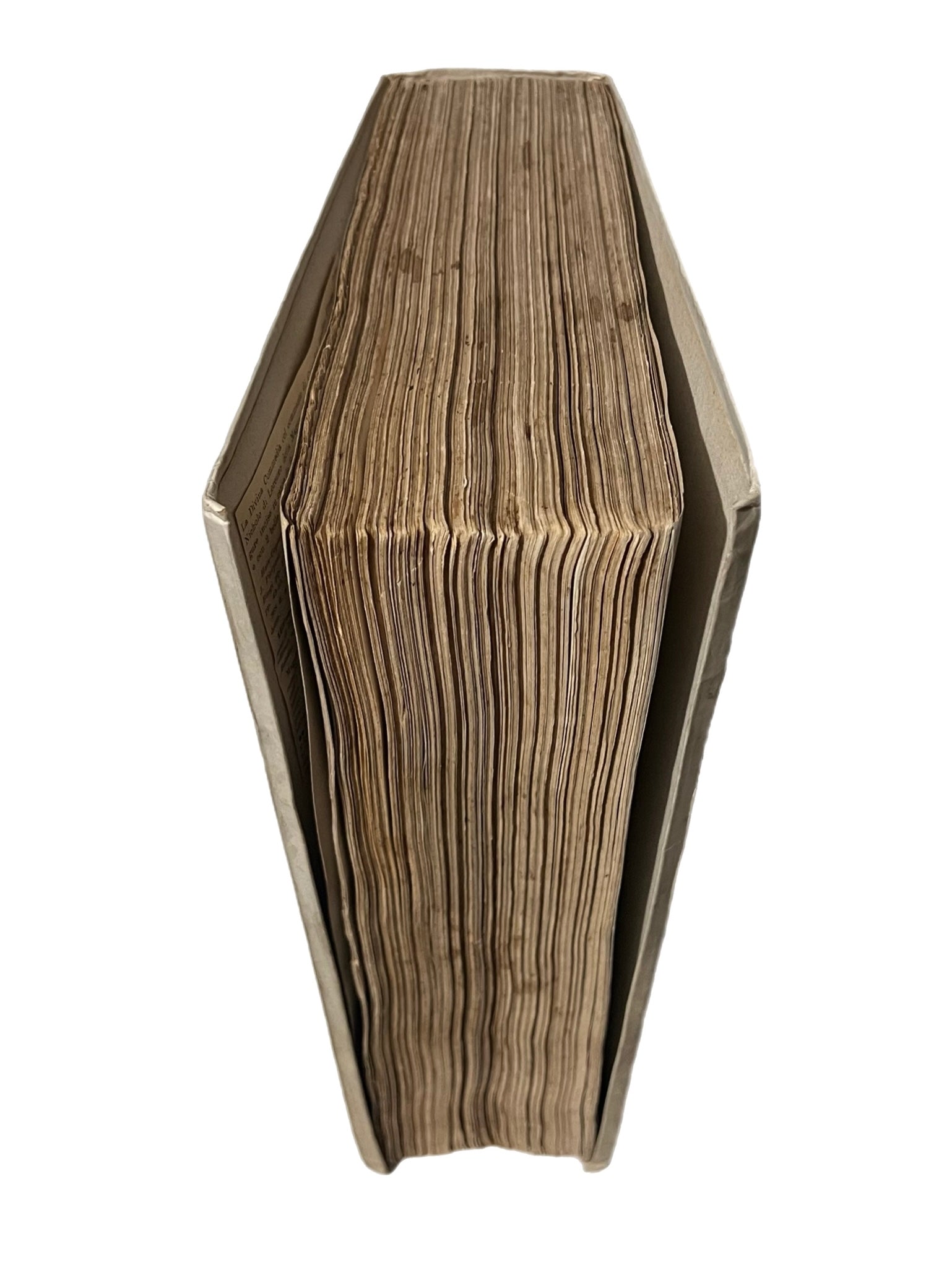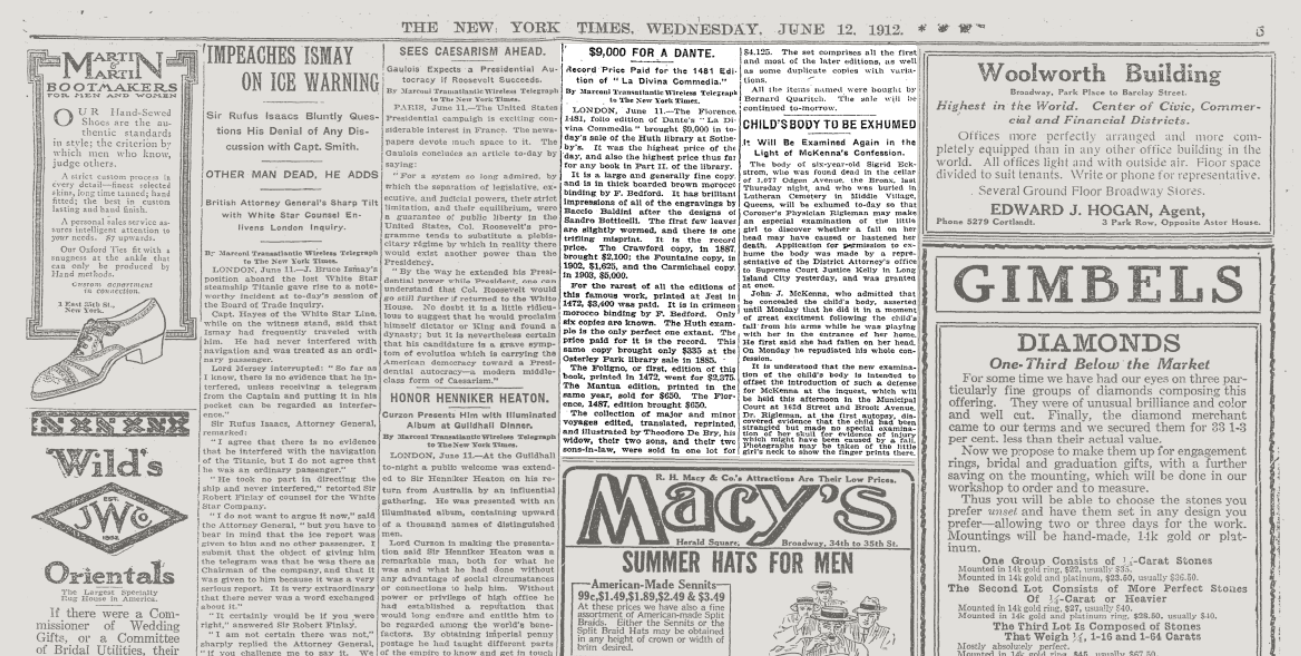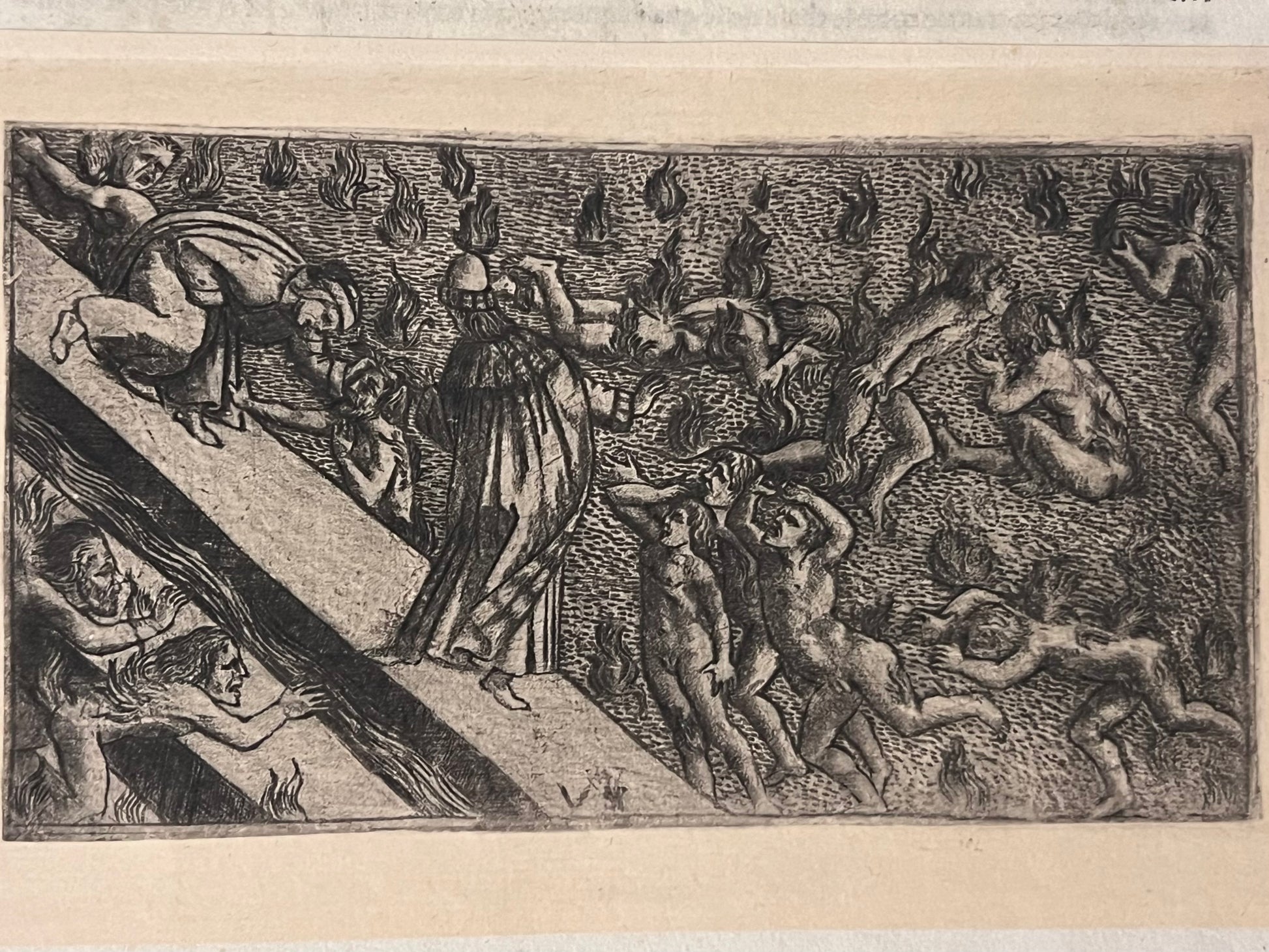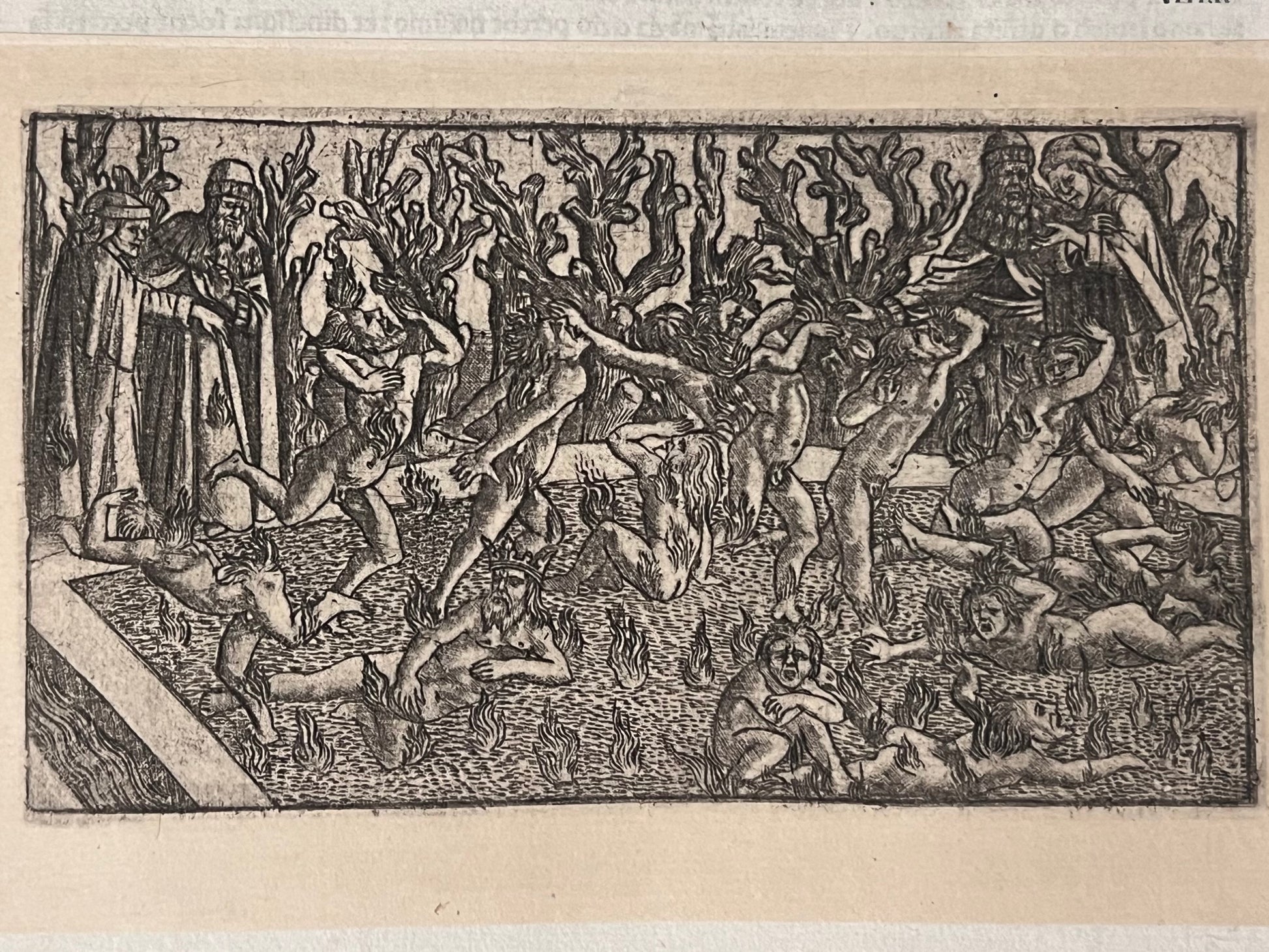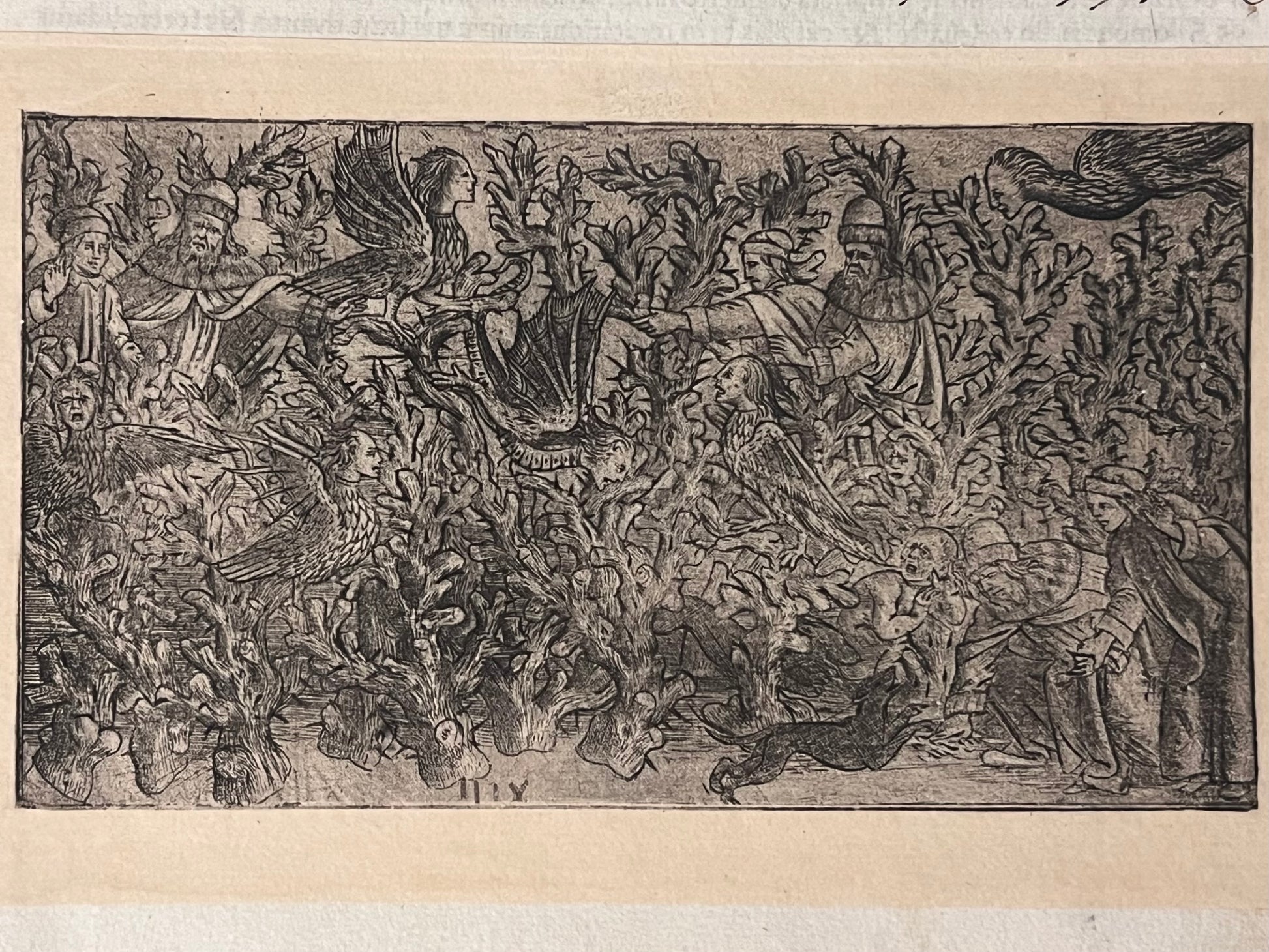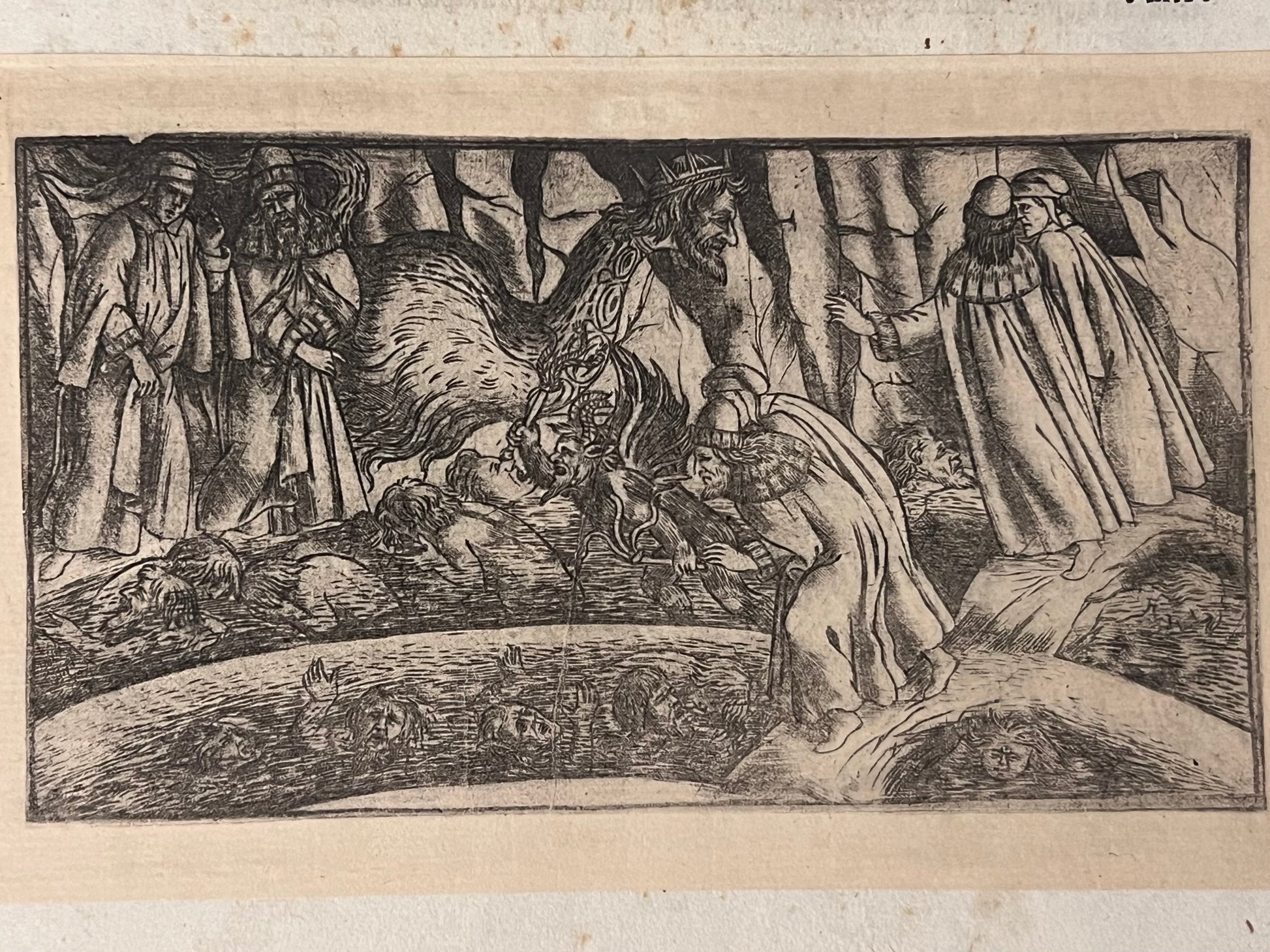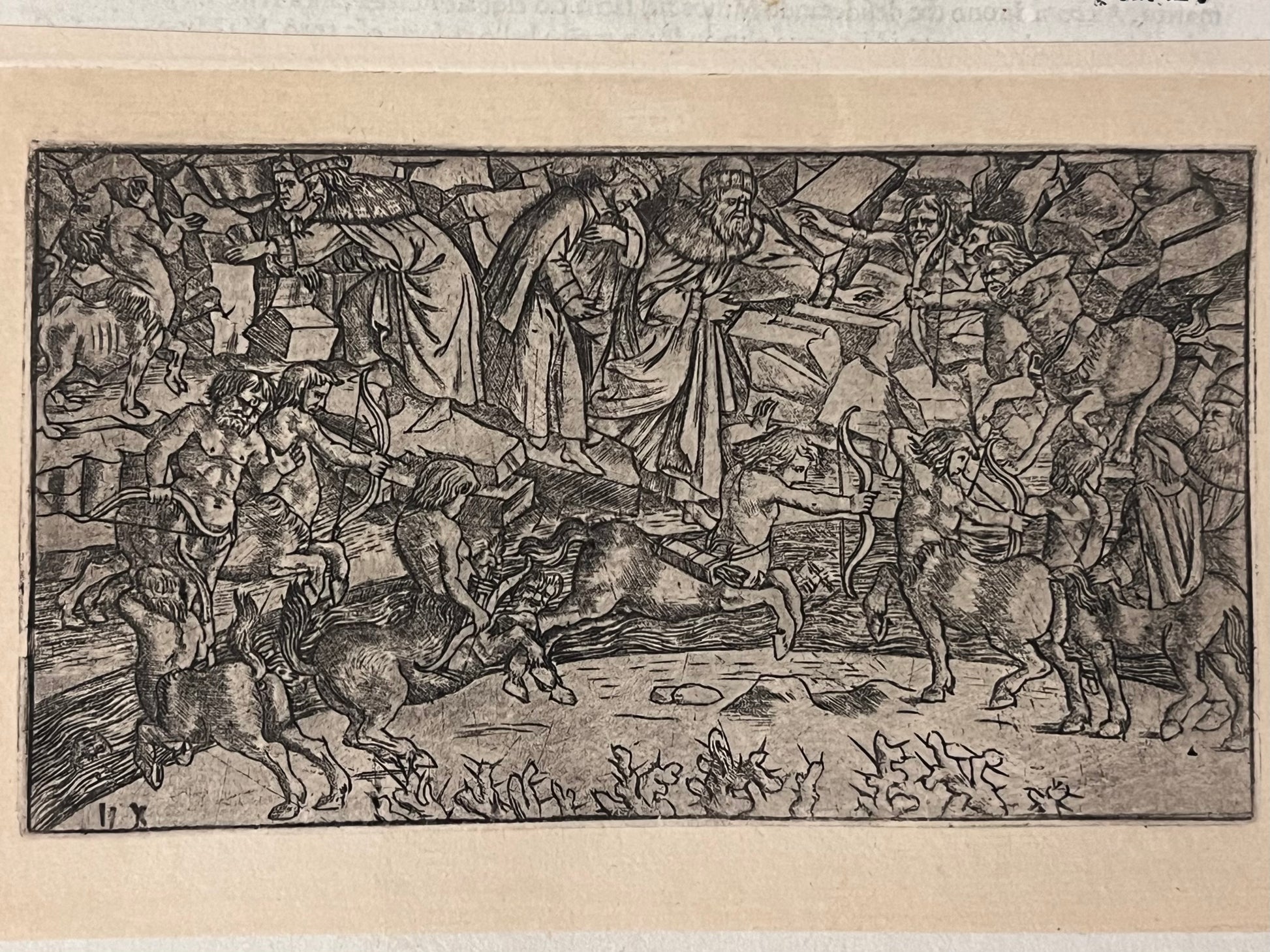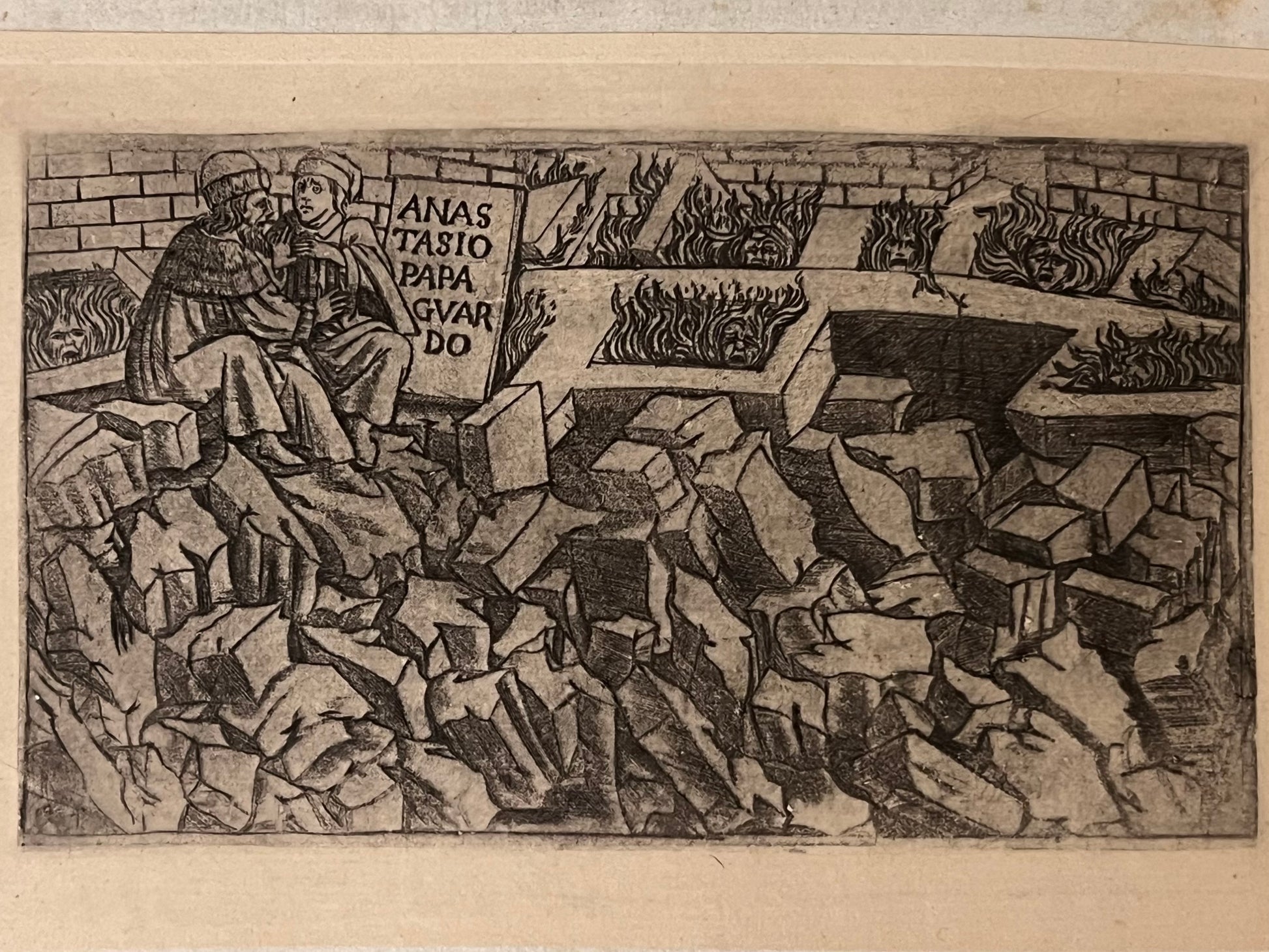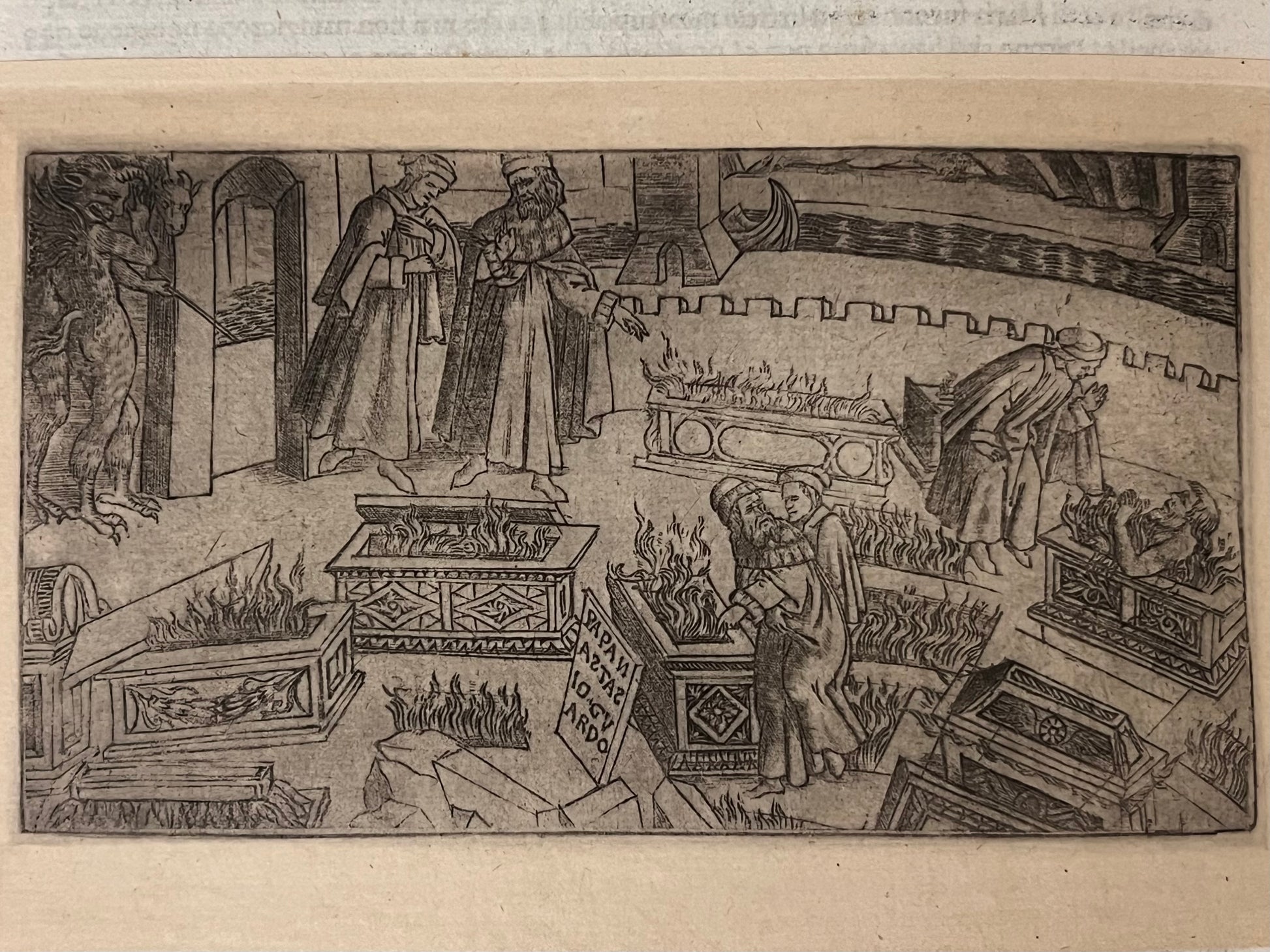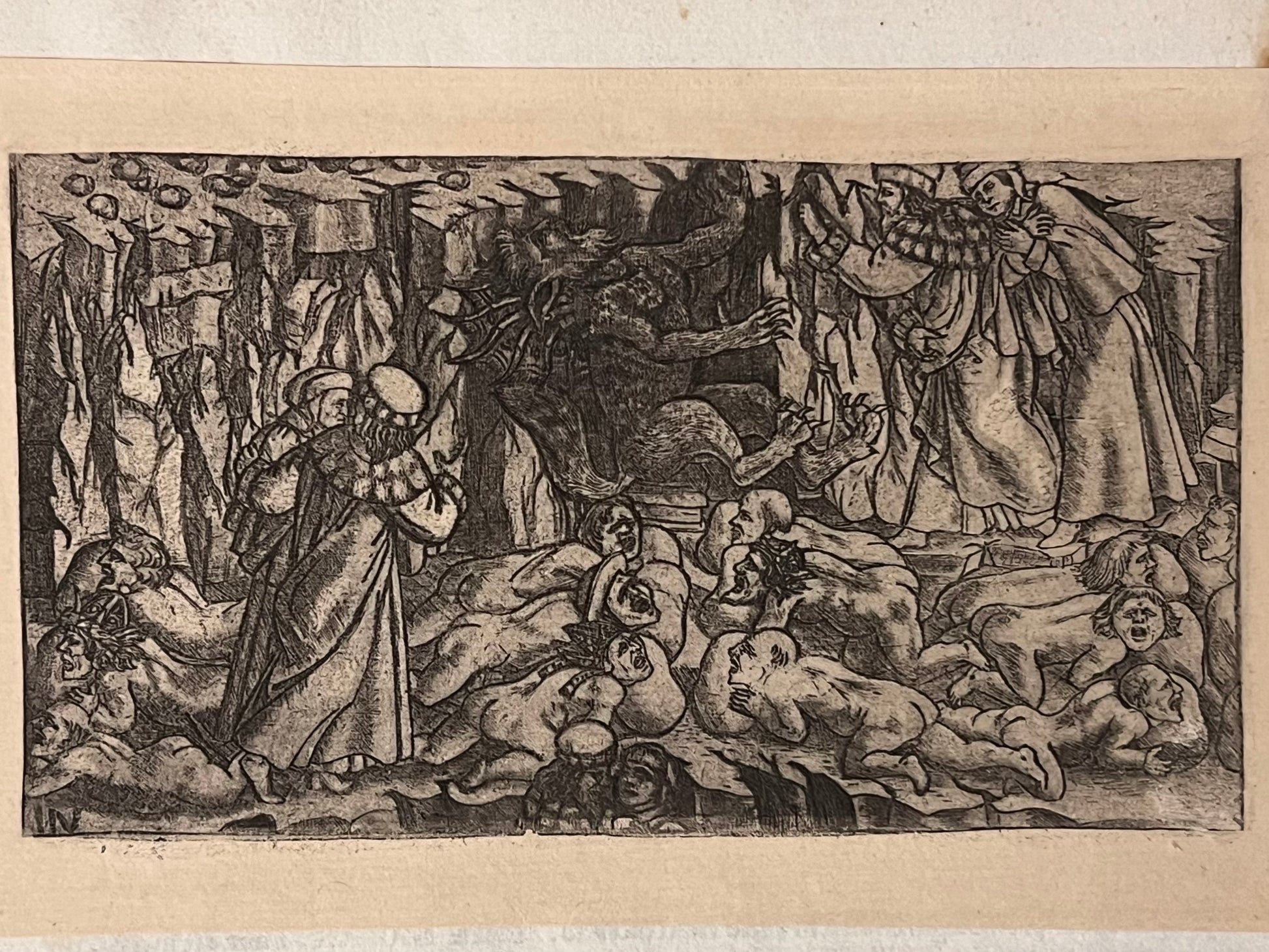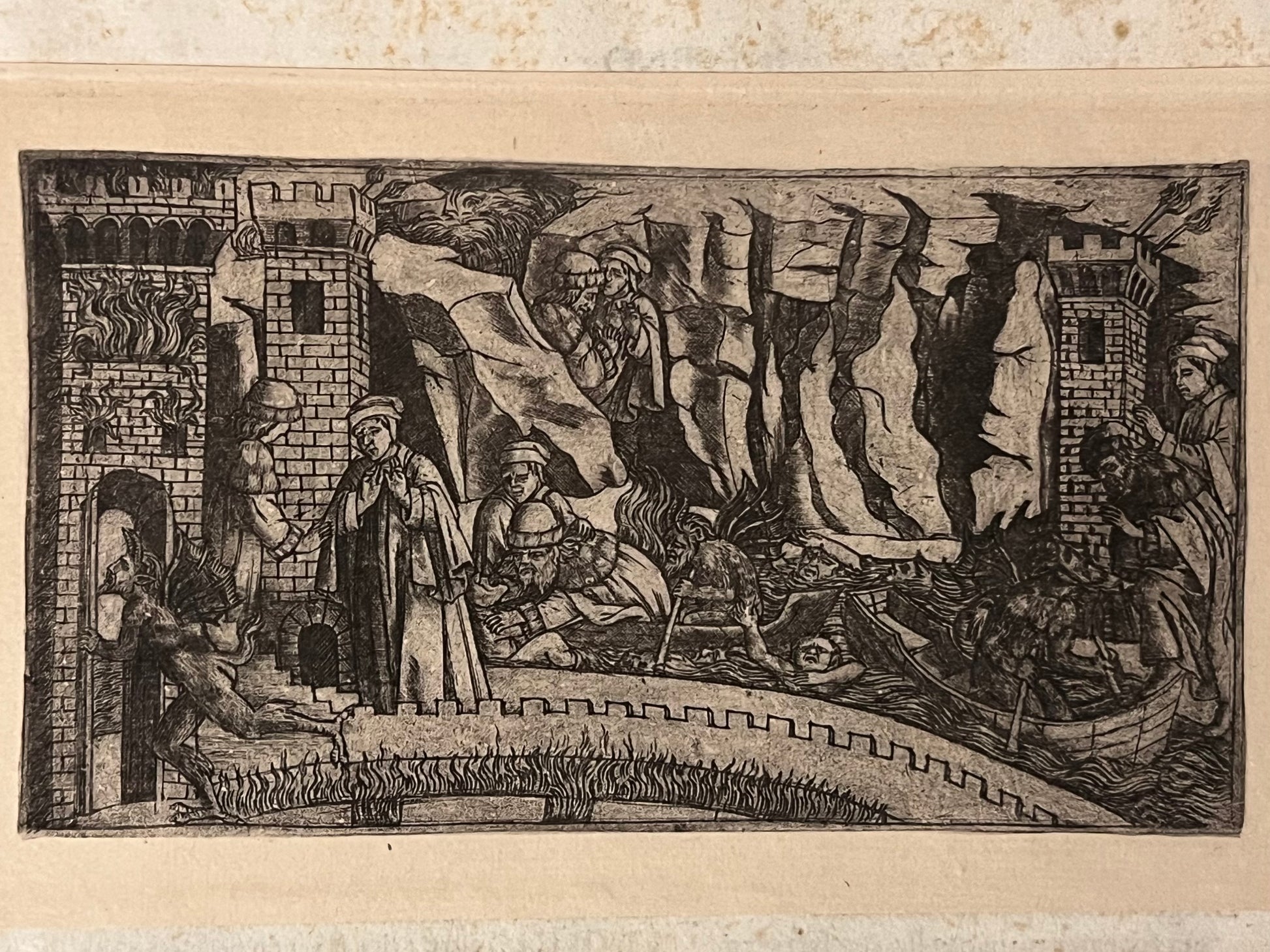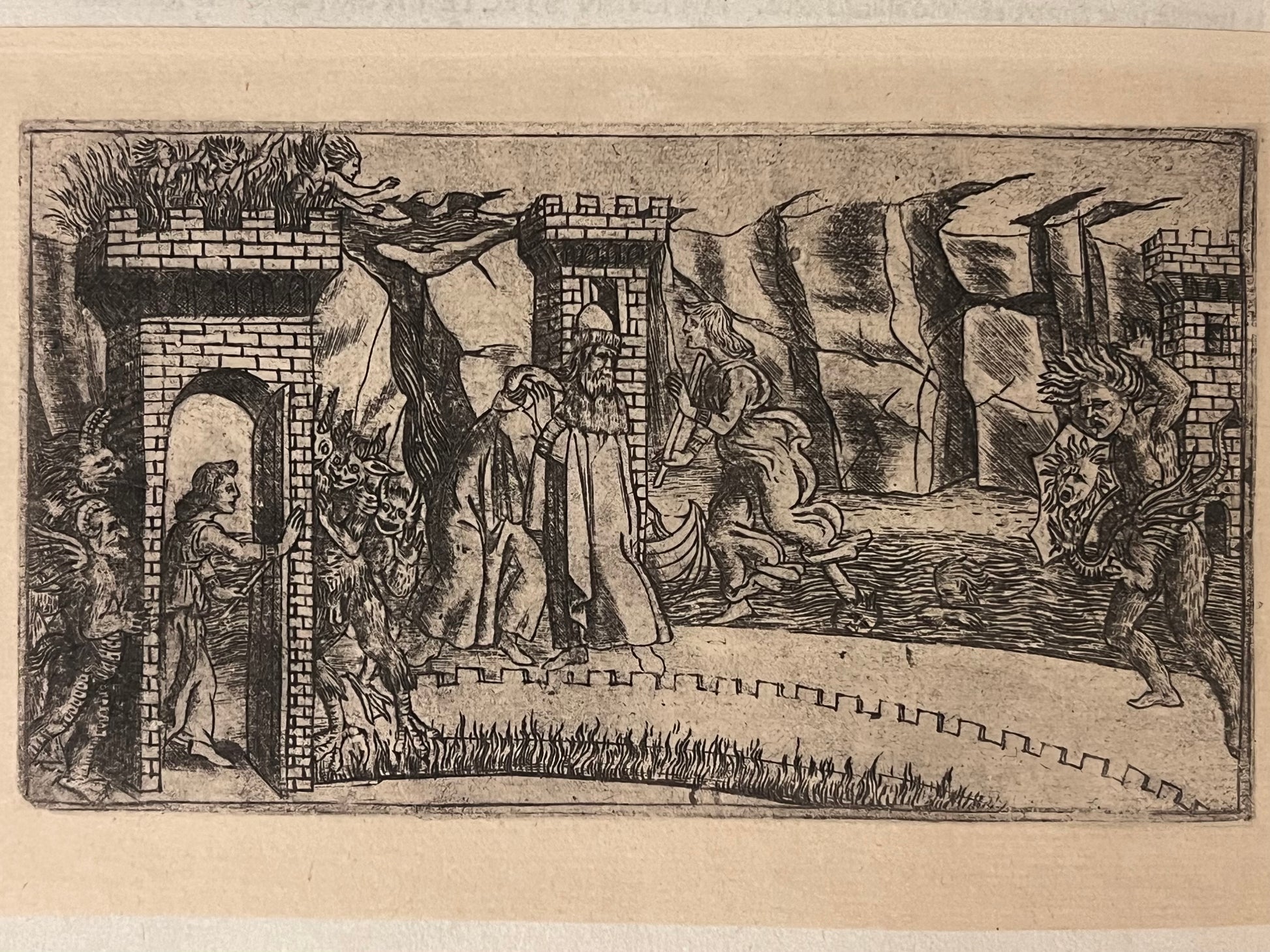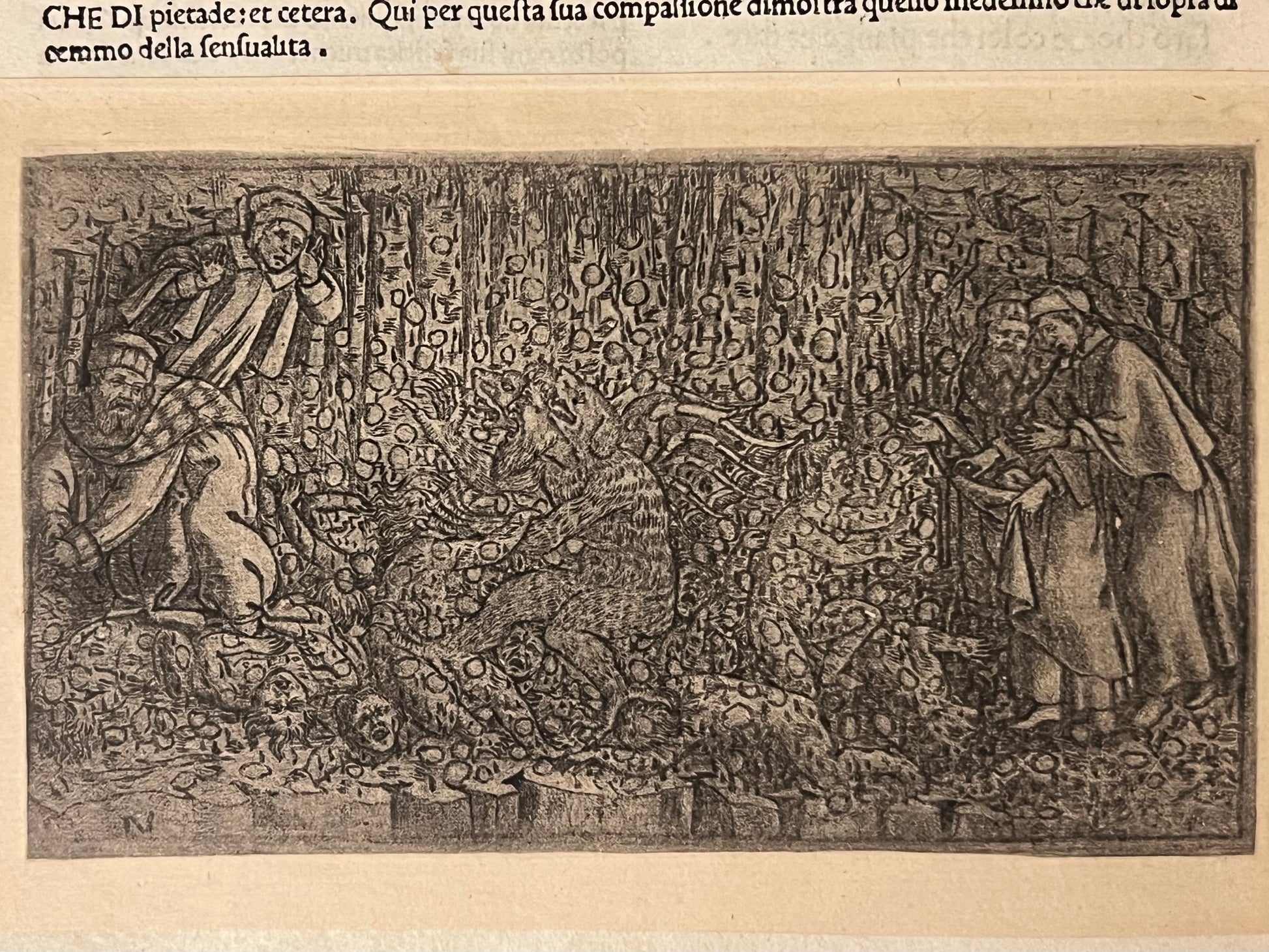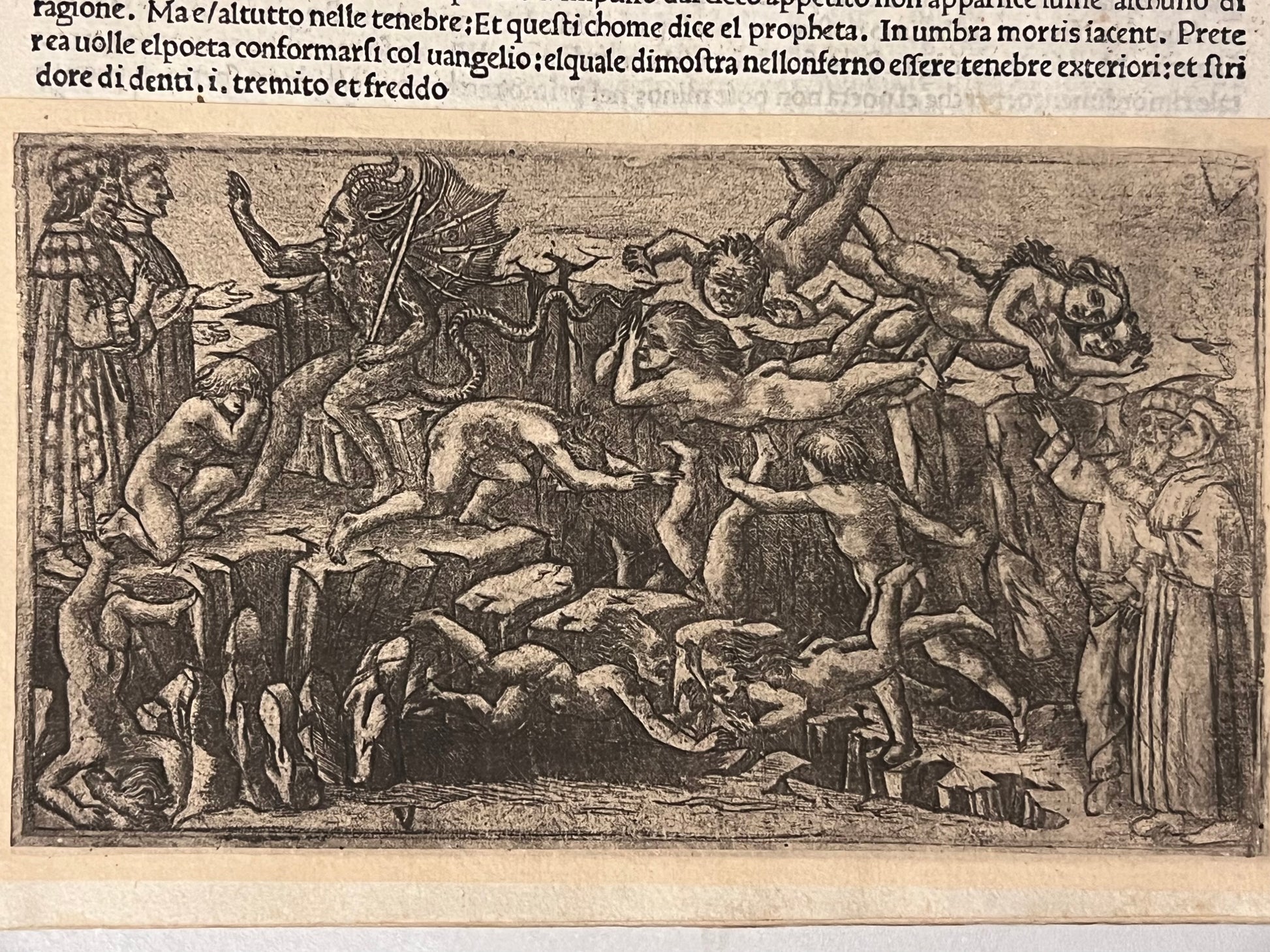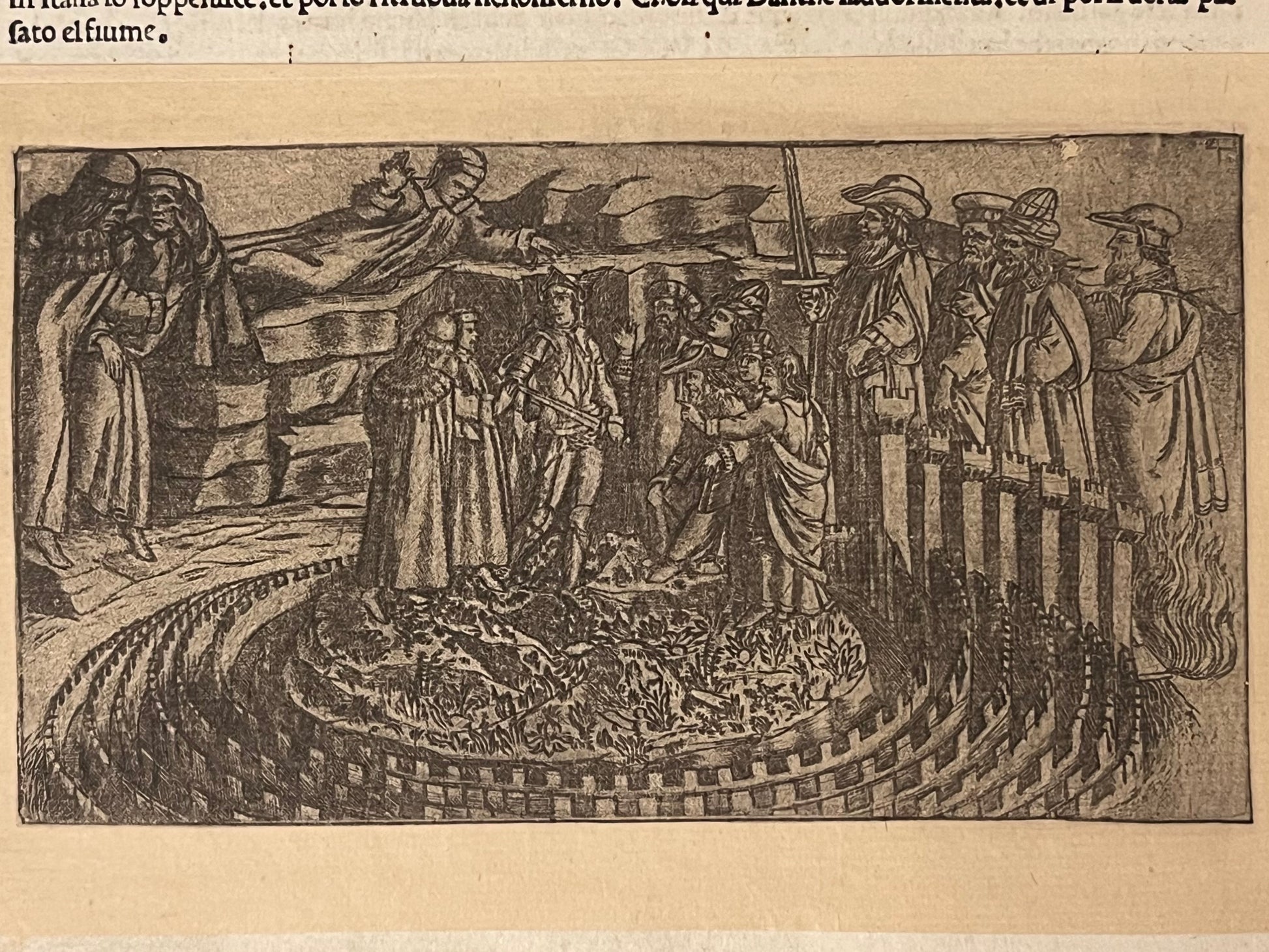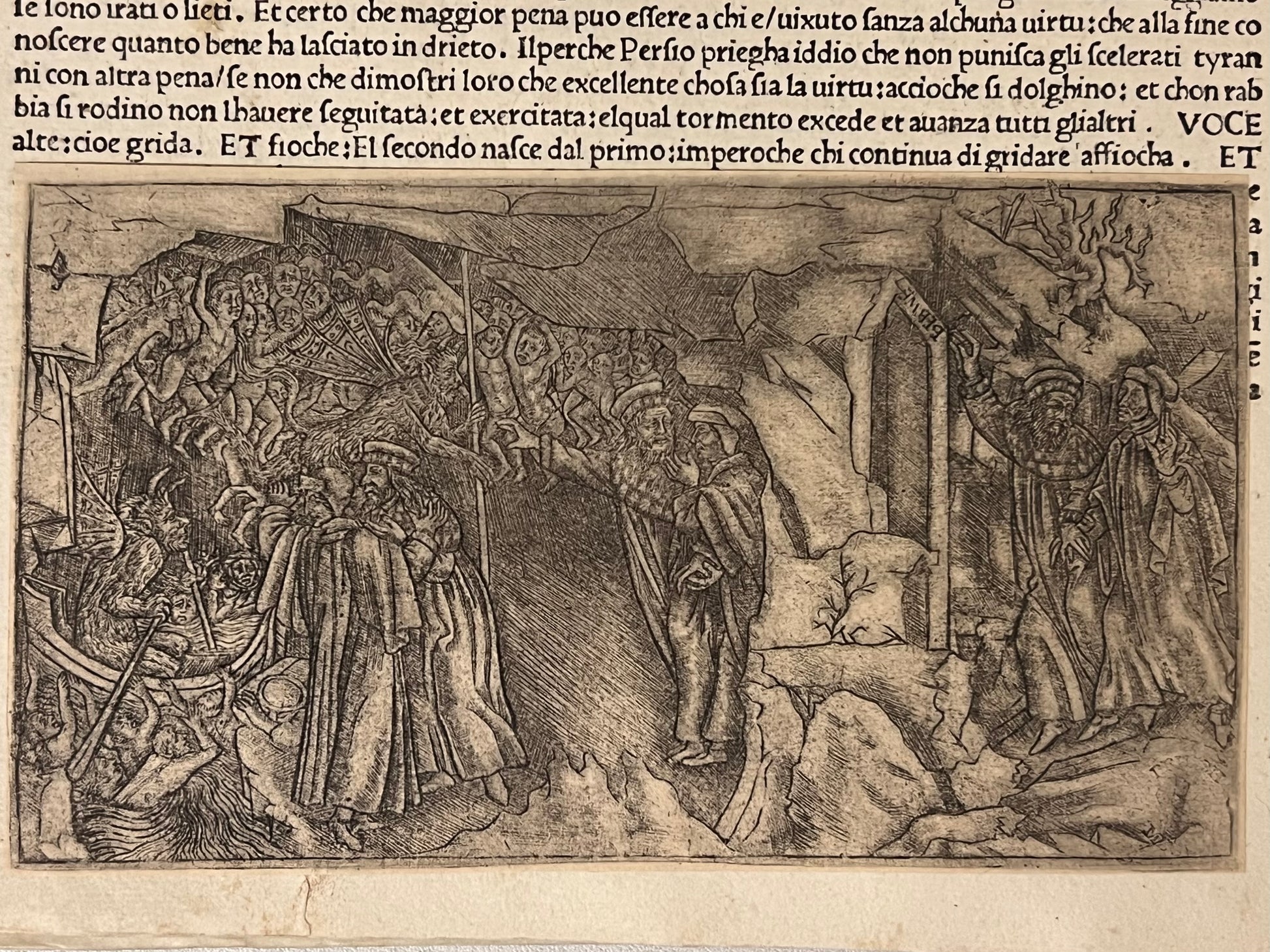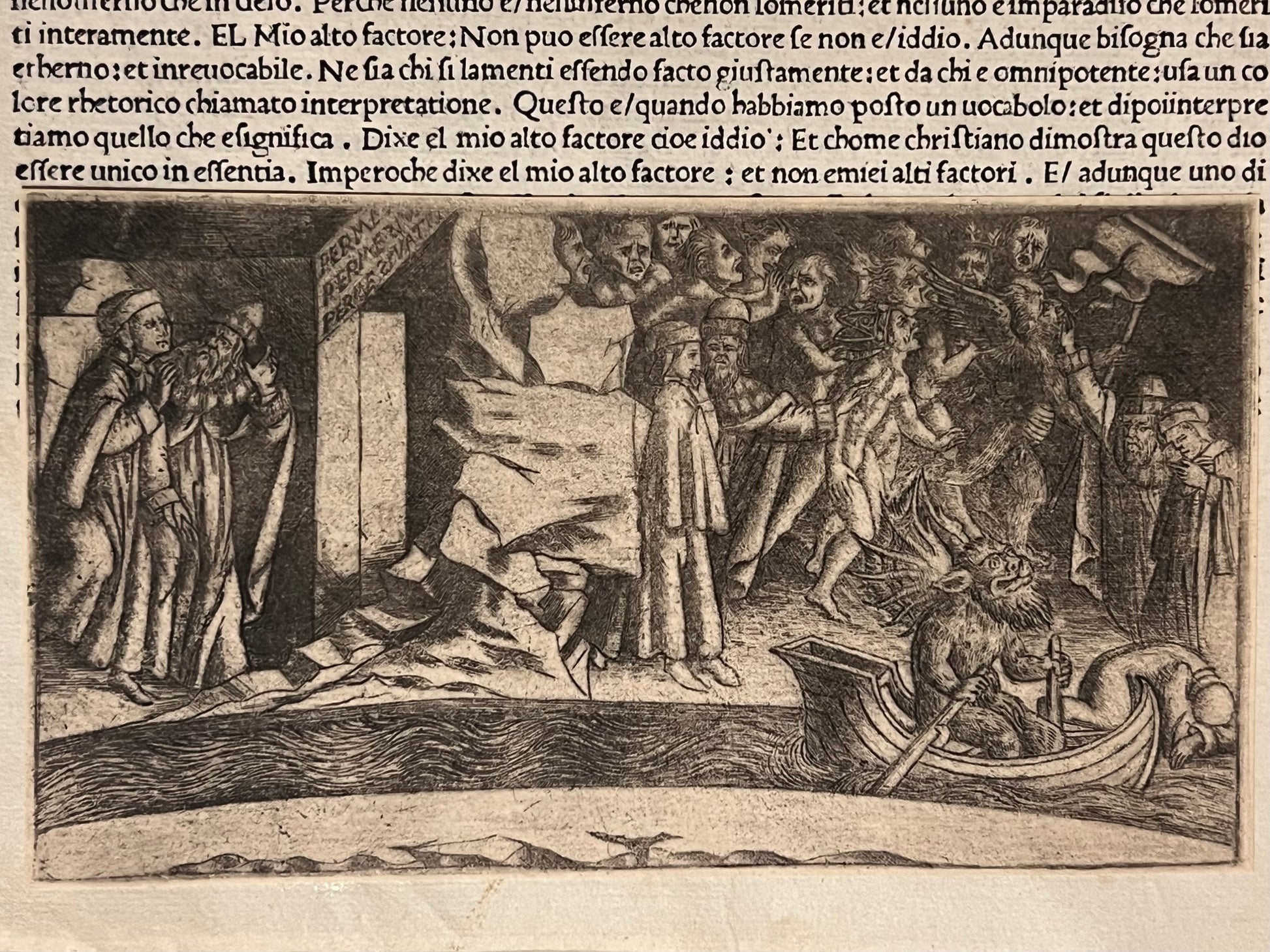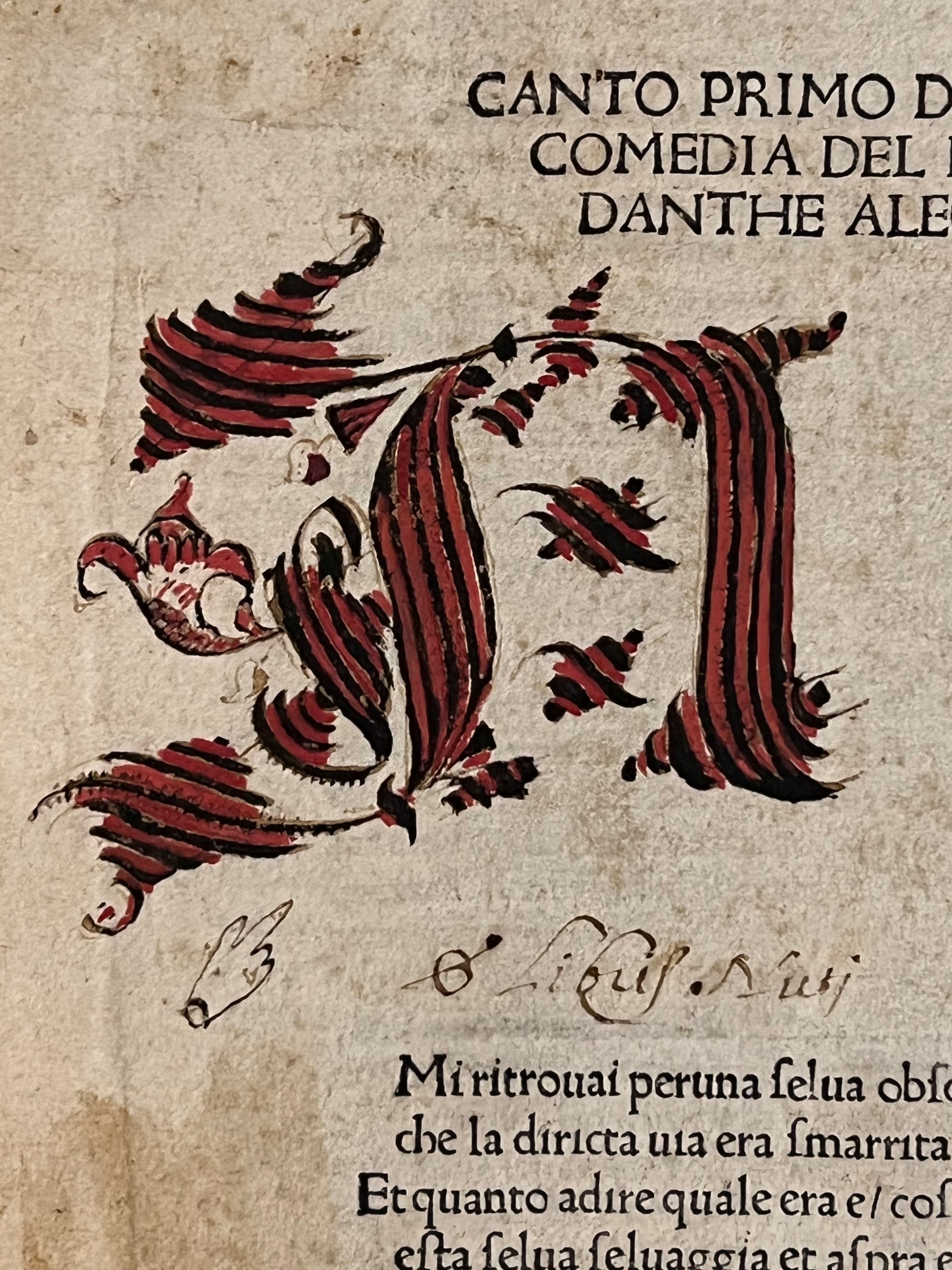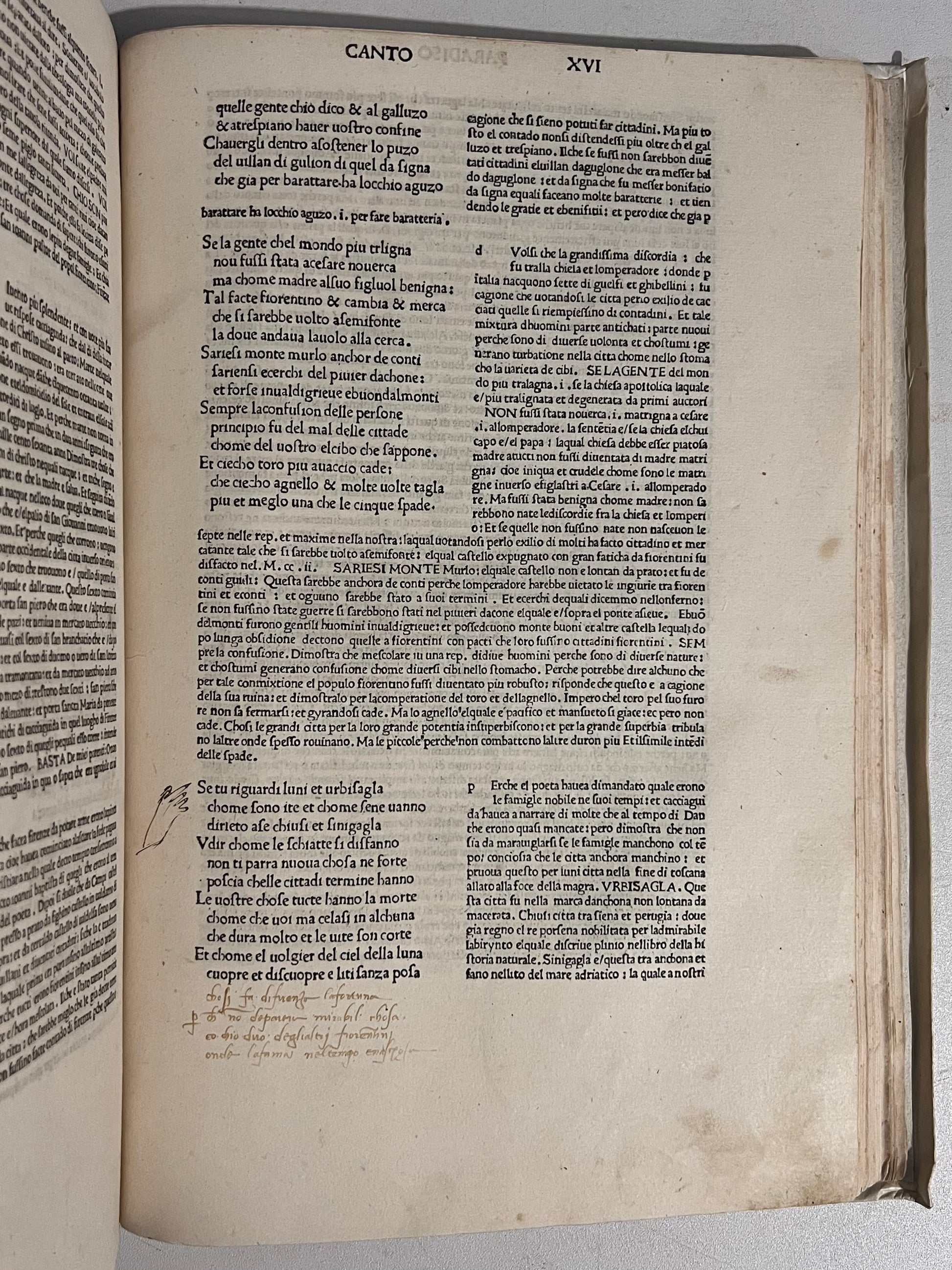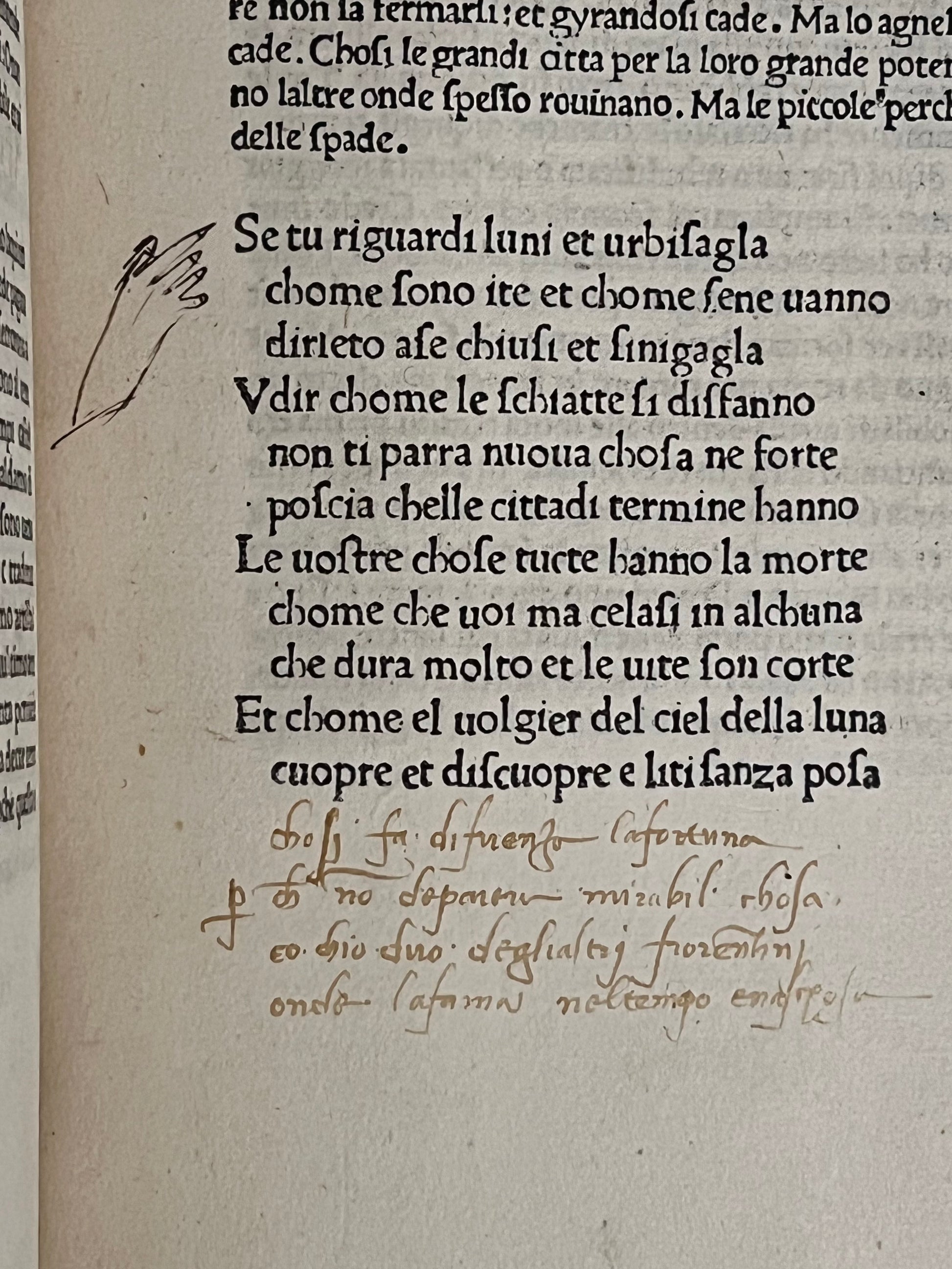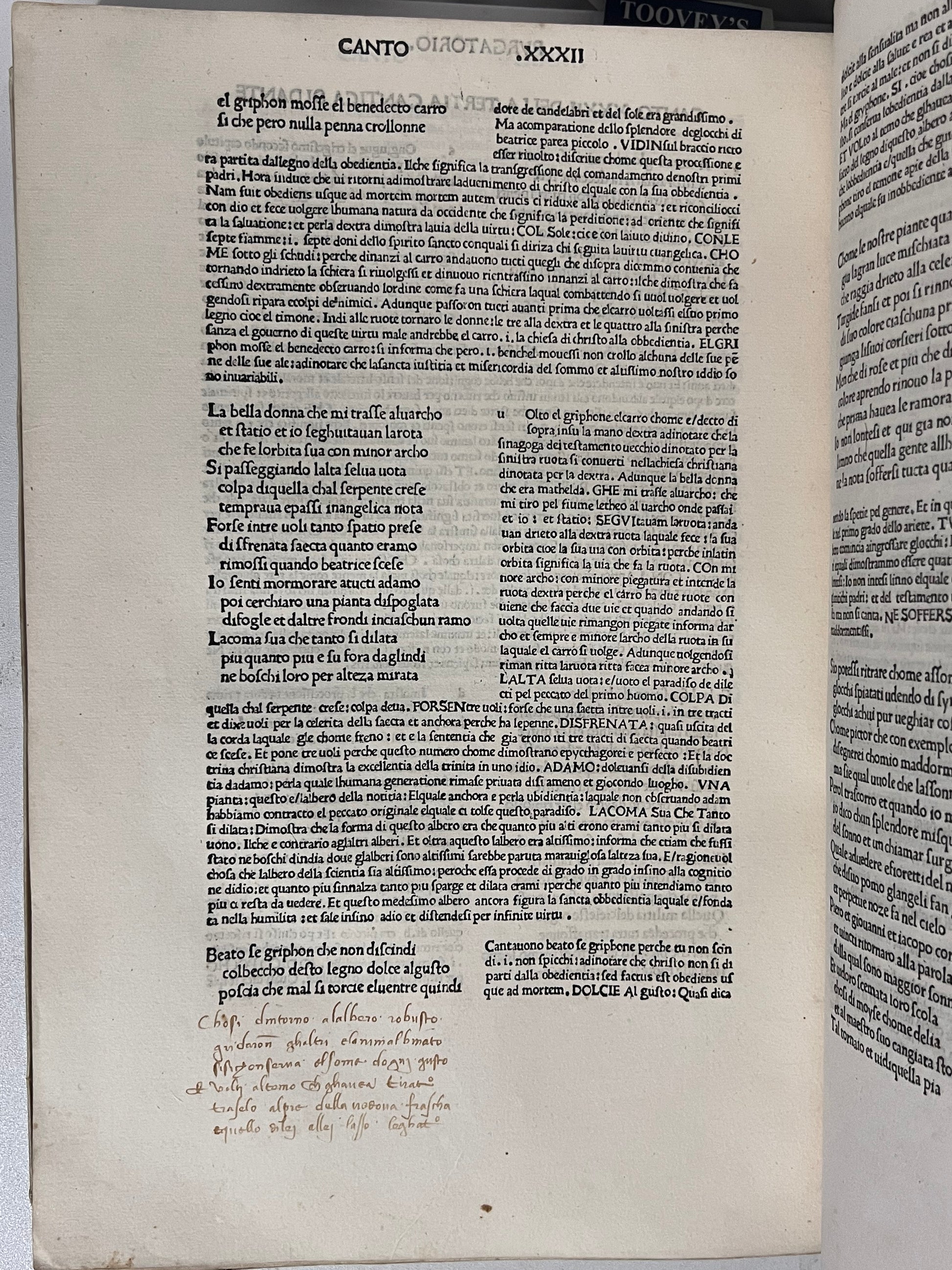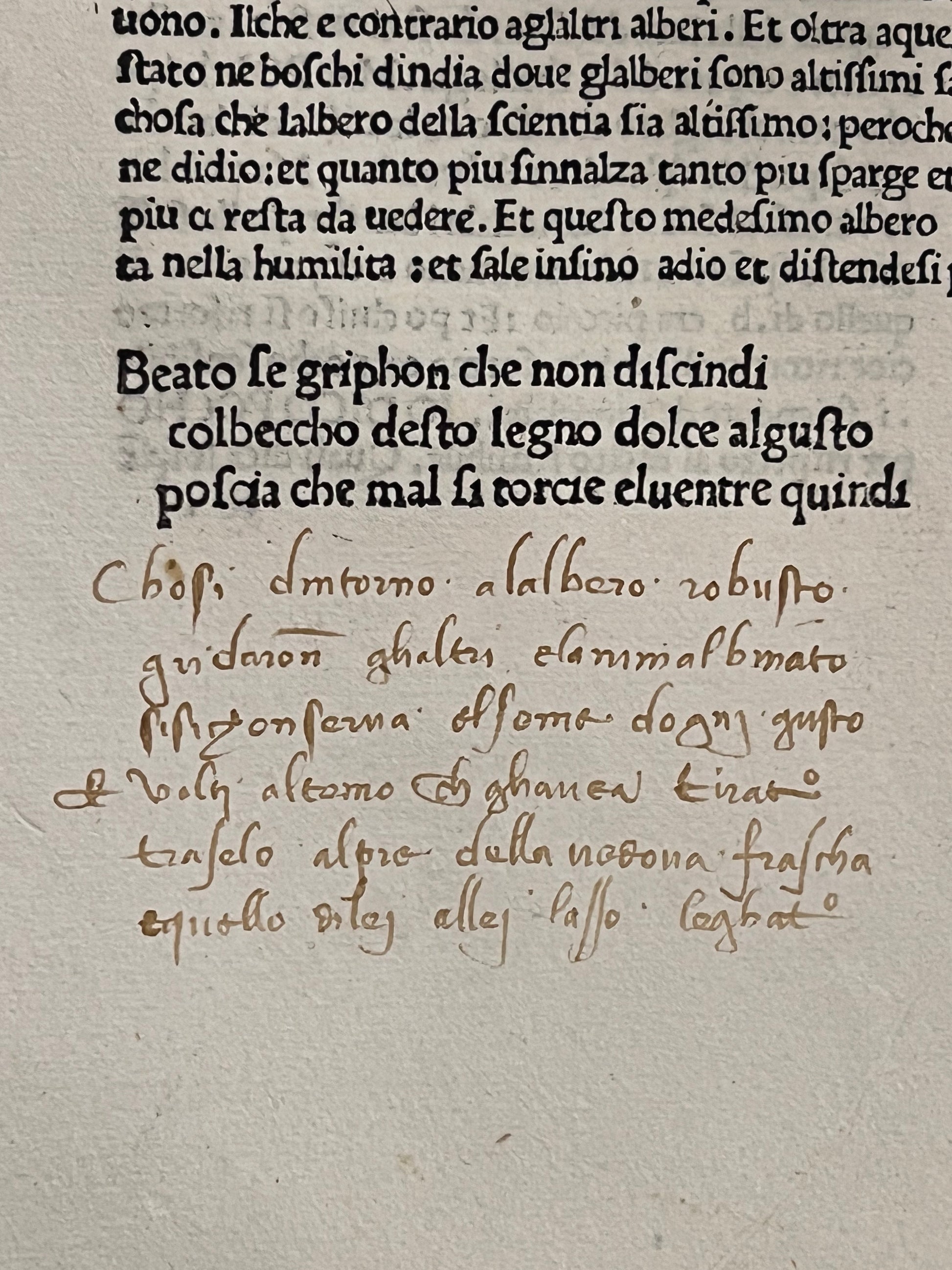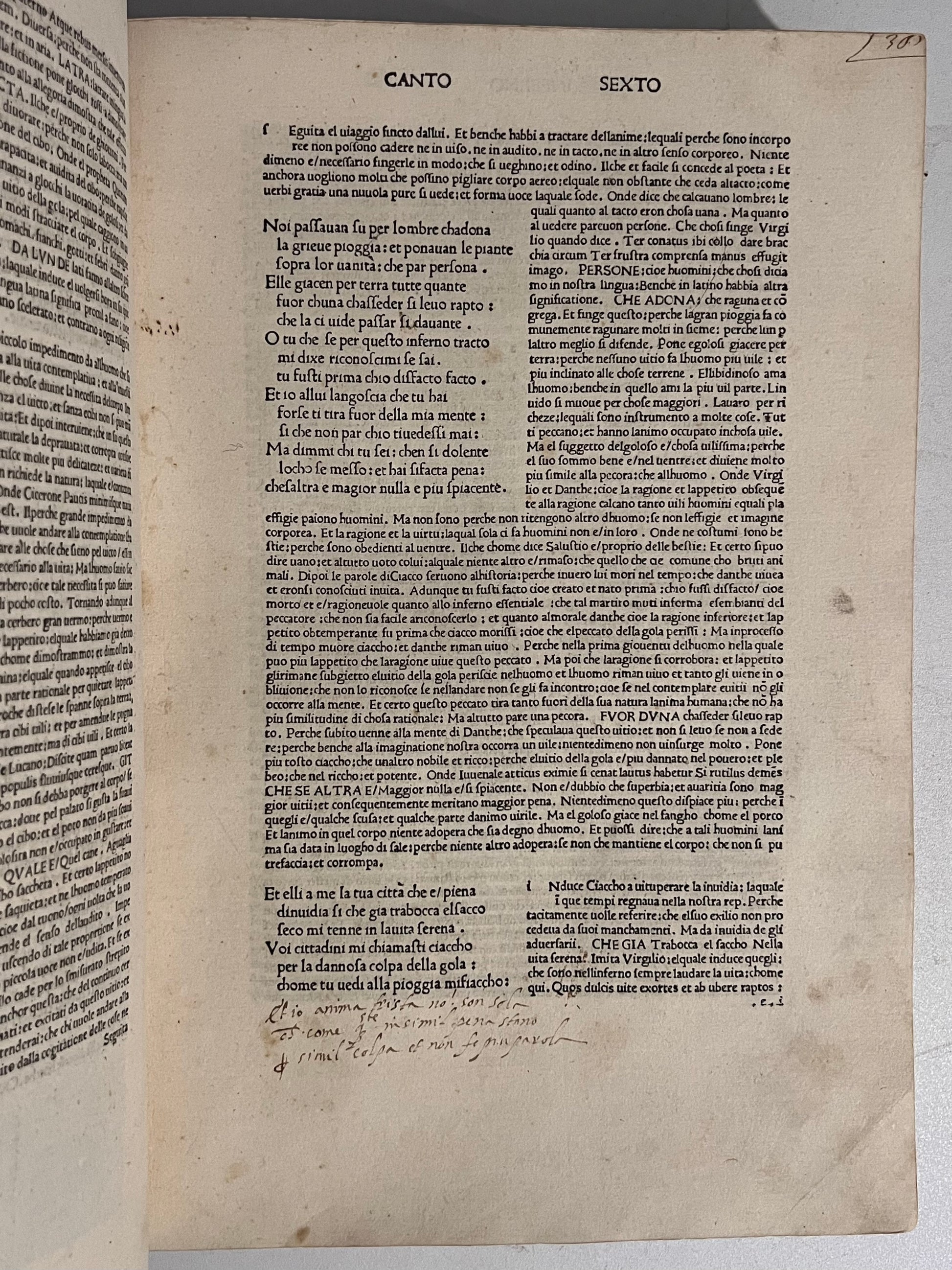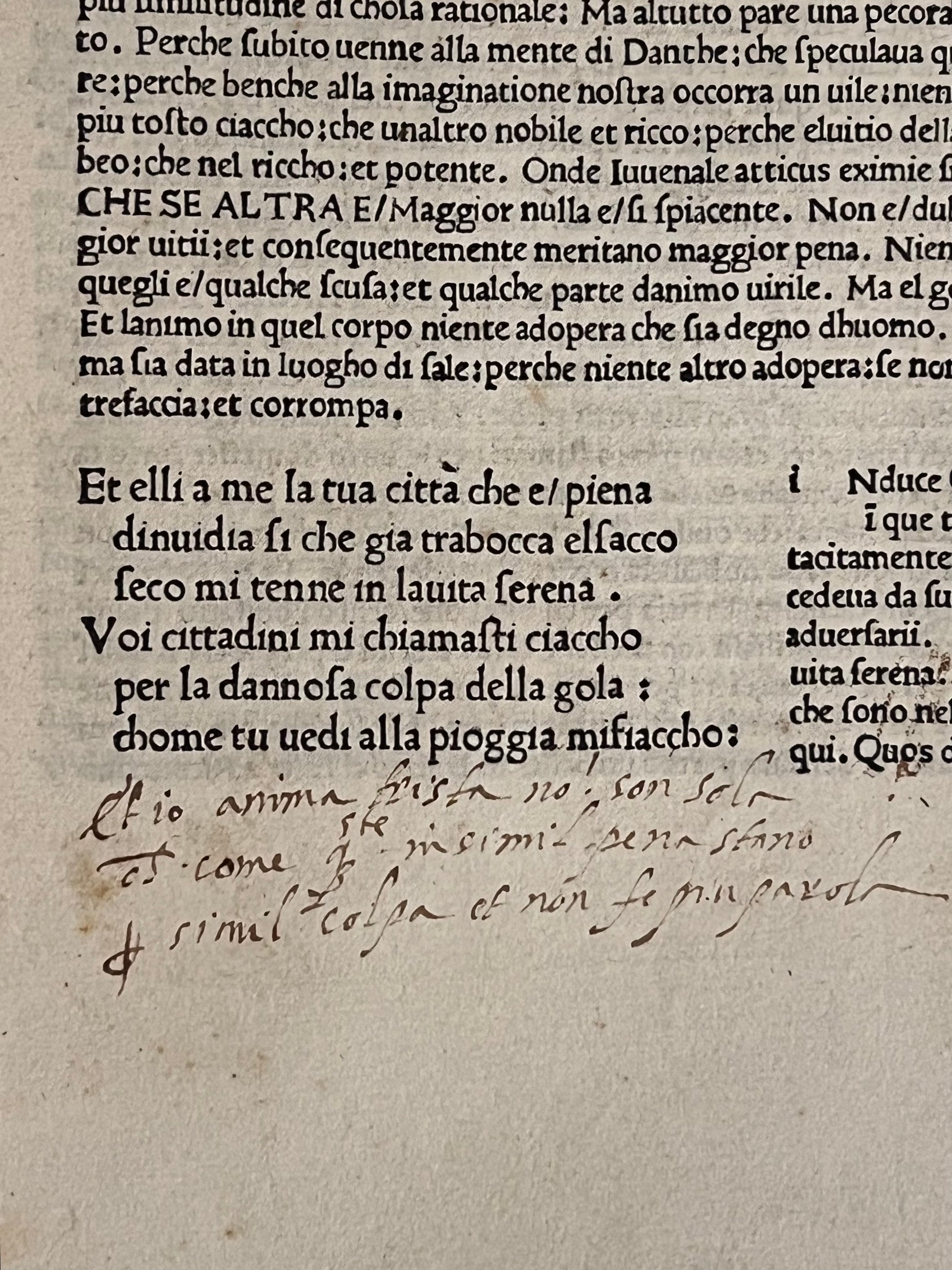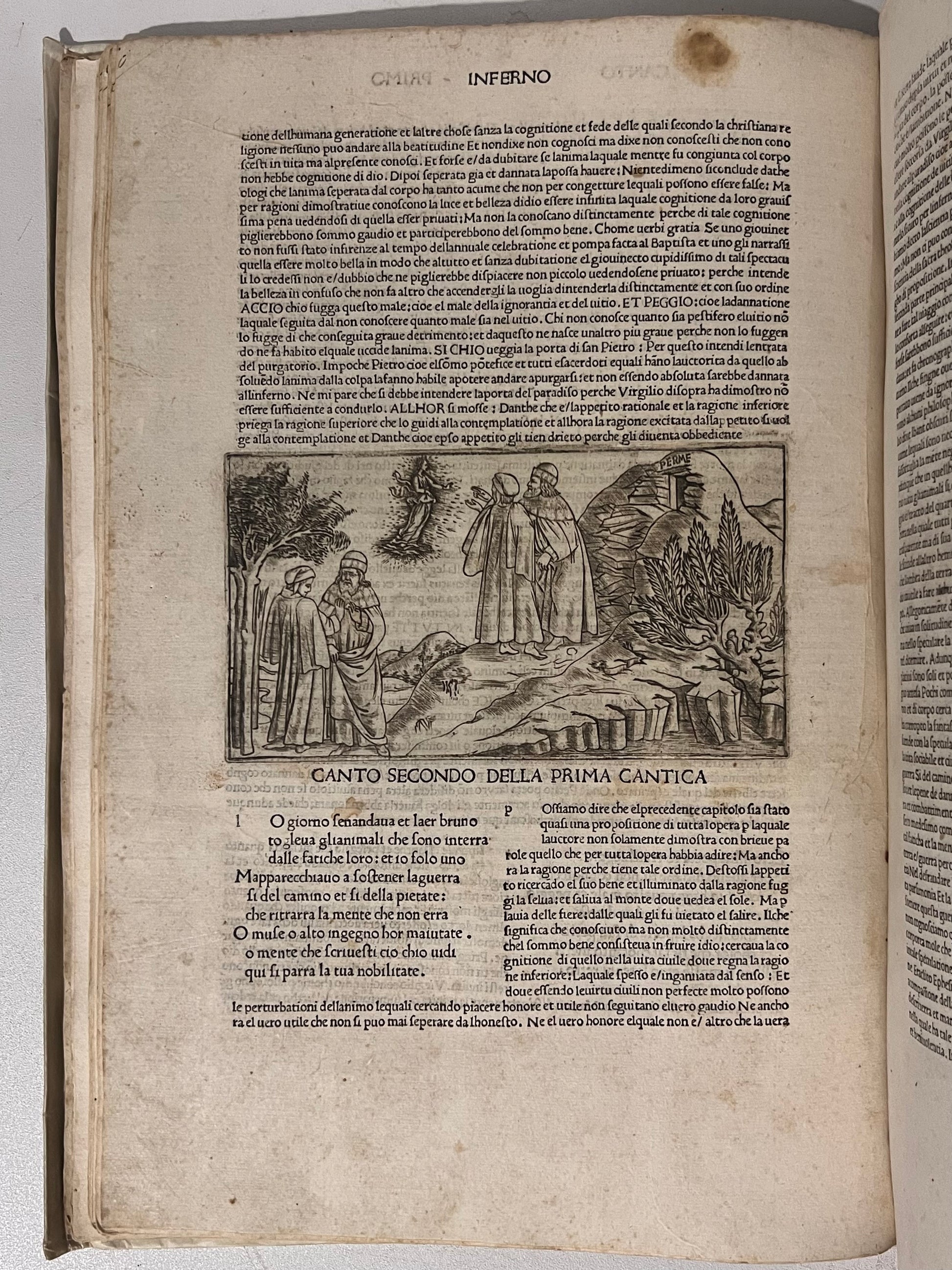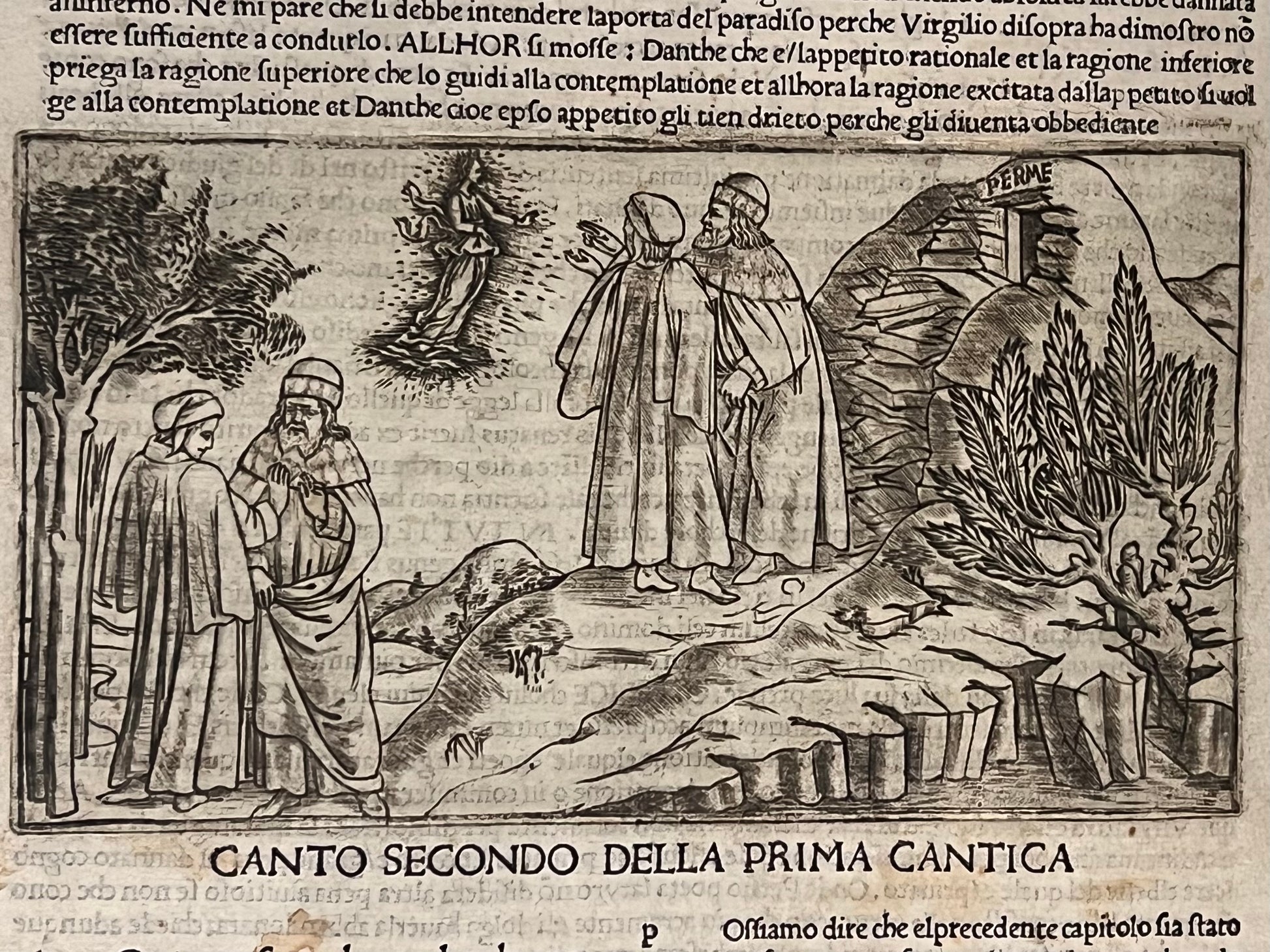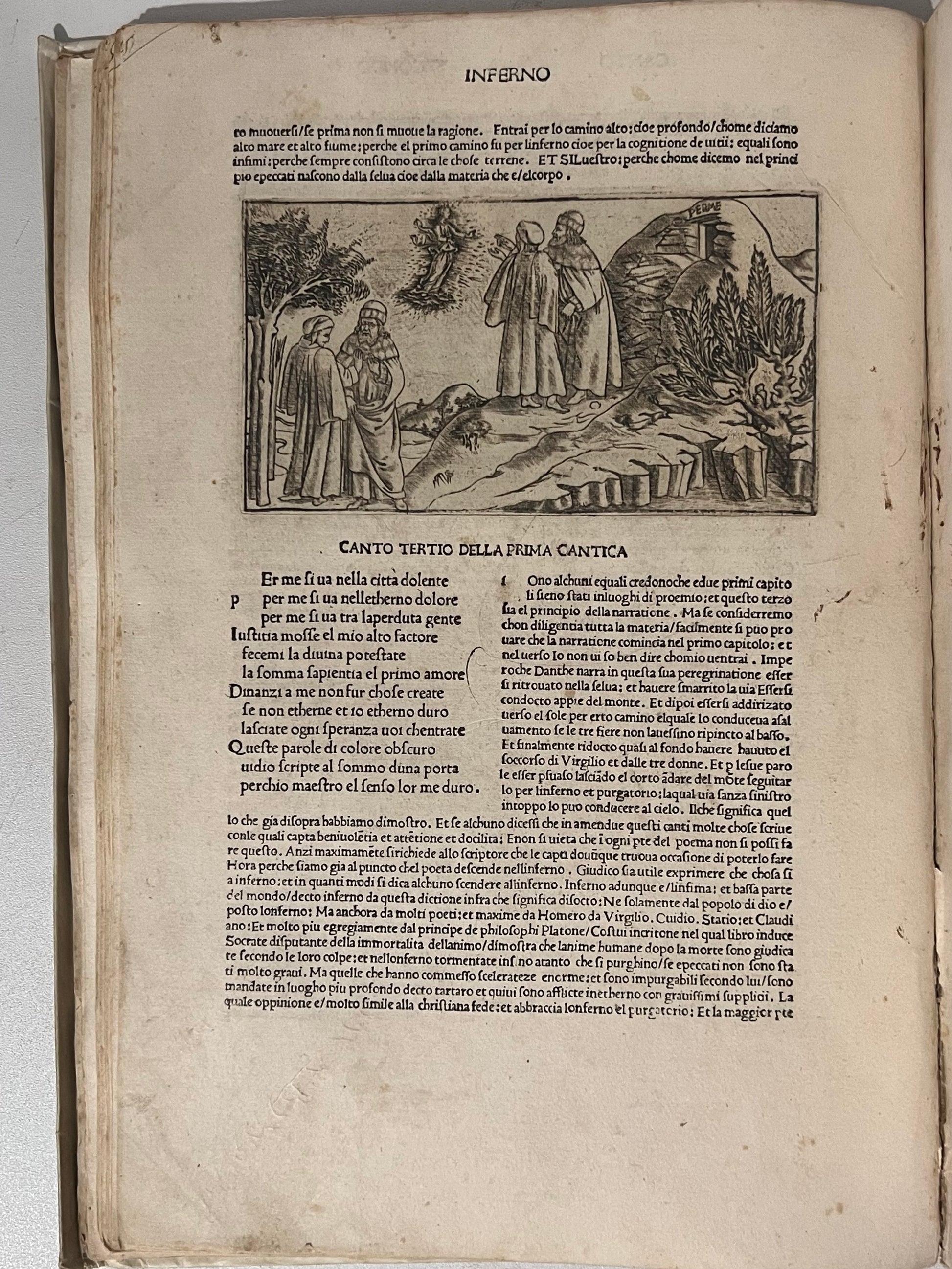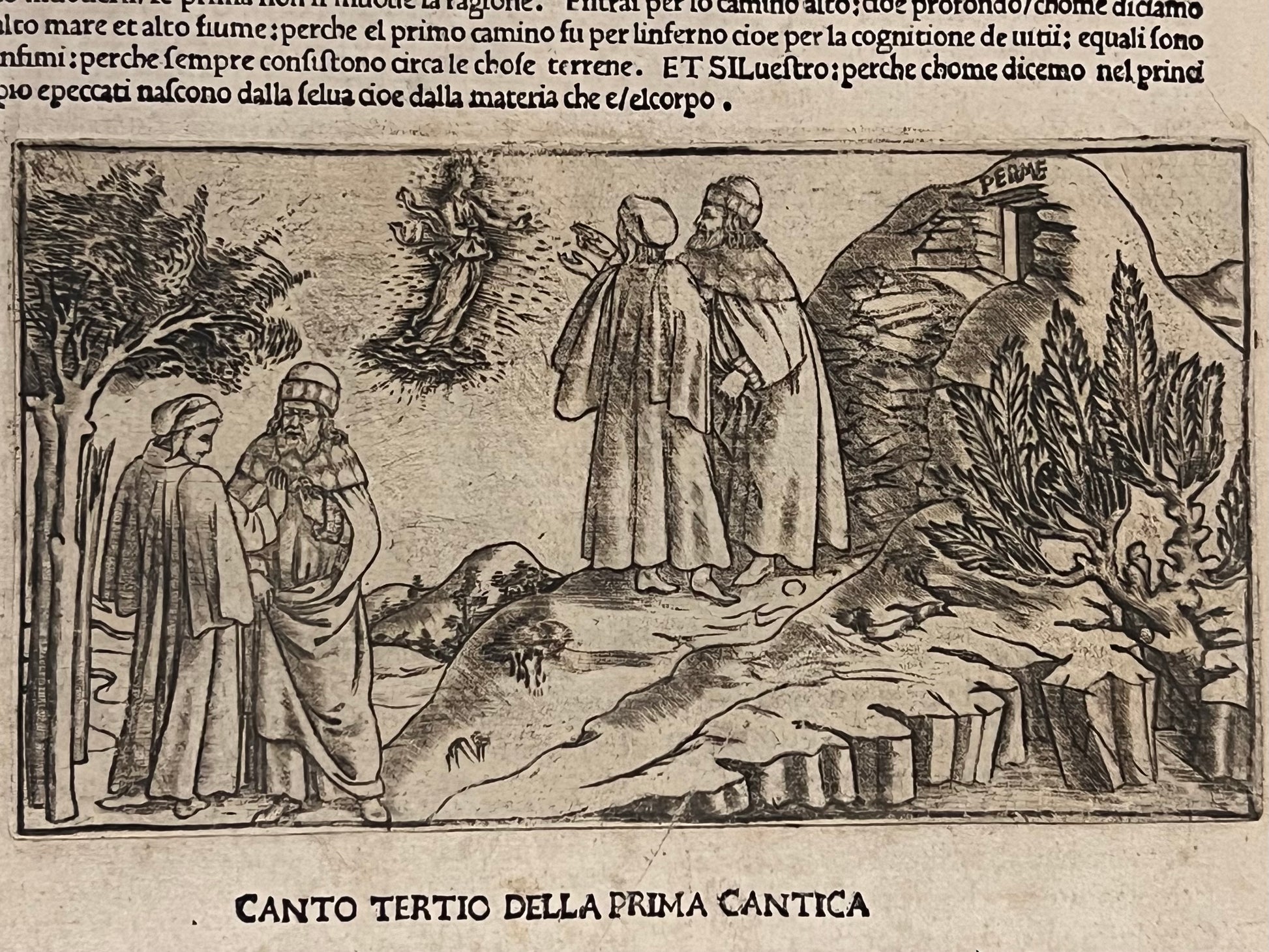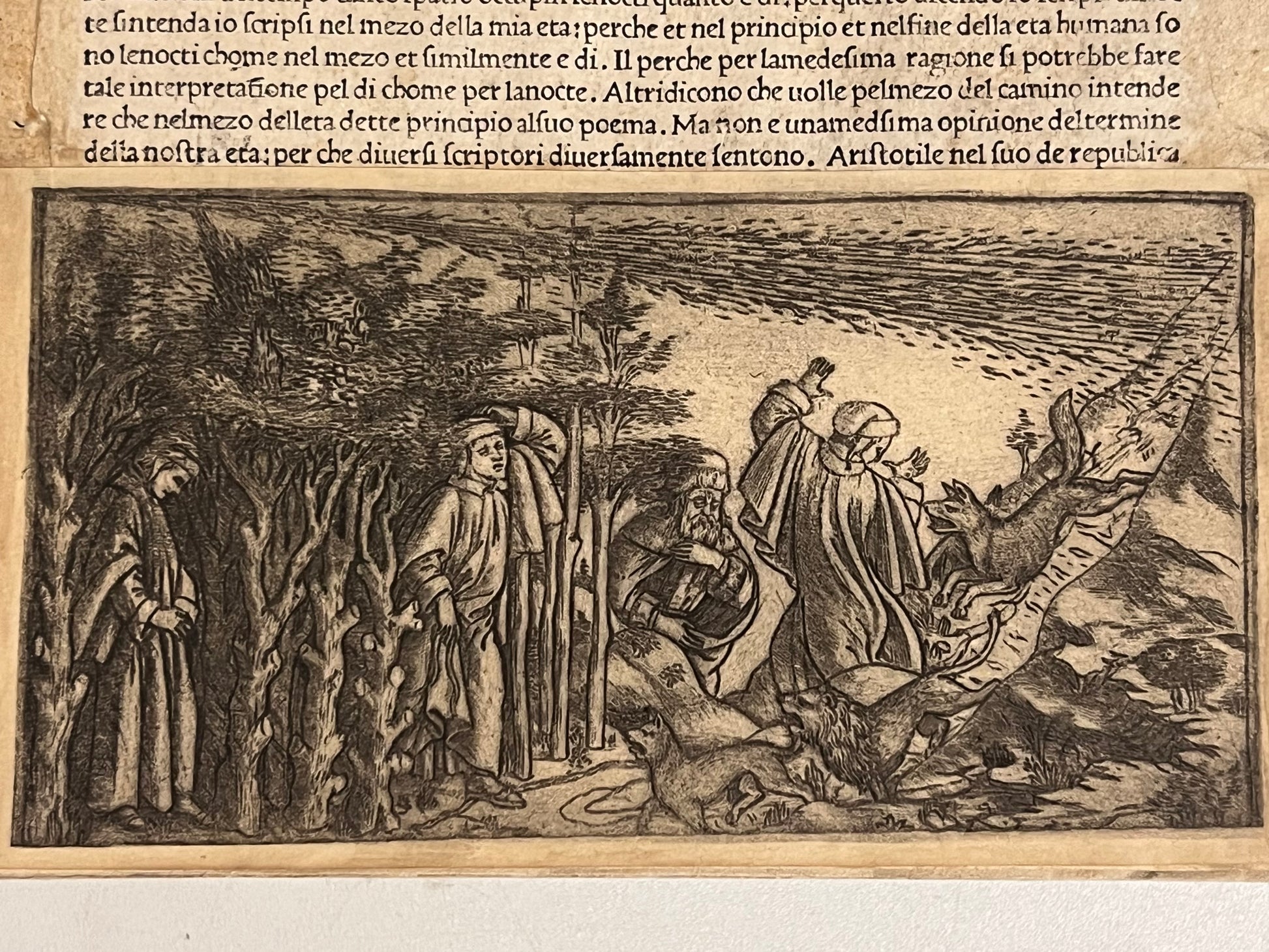The Divine Comedy of Dante 1481: The Important First Illustrated Edition
The Divine Comedy of Dante 1481: The Important First Illustrated Edition
Couldn't load pickup availability
La Commedia by Dante Alighieri. Florence: Nicolaus Laurentii, August 30th 1481. Commentary by Cristoforo Landino & Marsilio Ficino. Illustrations by Baccio Baldini after Sandro Botticelli, folio.
ONE OF THE MOST IMPORTANT PRINTED BOOKS OF ALL TIME; THE FIRST ILLUSTRATED EDITION OF DANTE'S DIVINE COMEDY. ONE OF VERY FEW COPIES REMAINING IN PRIVATE HANDS, AND LIKELY THE BEST OBTAINABLE COPY.
-------------------
This is the first illustrated edition of Dante's Divine Comedy - illustrated from designs by the important Renaissance artist Sandro Botticelli, the second illustrated book to be printed in Florence, the first edition of Dante with the important commentary of Landino, and perhaps most importantly, the first edition of Dante printed in his own city of Florence, as well as of course being a very early printed book produced during the infancy of the printing press and one of the very earliest editions of Dante's Commedia. The John Rylands Library at the University of Manchester says of this edition: "As a mark of the cultural significance of this edition, it is now commonly known as 'the Landino'."
Printing this edition was first and foremost a huge political statement. This was the first time Dante was printed in his home city of Florence - the only incunable edition of Dante to be printed here; the next Florentine Dante was printed almost a century later. The commentary in this edition was produced by Lorenzo de Medici's former teacher and one of the most important humanist scholars of the Renaissance, Cristoforo Landino. Landino's commentary intended to restore the original Florentine nature of Dante's La Commedia which he suggested had been lost in the idiosyncrasies of other regional dialects in the former printed editions and even in manuscript copies of the 14th and early 15th centuries. This 1481 edition was a statement of cultural strength, an act of propaganda, and Lorenzo de Medici's political claim over language through the beauty of Dante's magnum opus.
Early distribution was almost solely in and around Florence, and the provenance of copies that can be traced this early shows almost universal Florentine ownership all the way into the late 16th century, most likely including this copy. As one might expect for such an important edition, many copies were gifted to eminent persons and politicians. The BnF, for example, owns two copies that were gifted to eminent politicians by Landino himself, and the Medici family copy is still extant.
A few copies, such as ours, contain corrective marginalia (such as the copy at the University of Cambridge collection). This has proven to be incredibly interesting for research into how Dante was read during the Renaissance. These corrections, as we find in our copy, demonstrate that this edition of Dante was compared to either earlier editions, or more likely, early Florentine manuscripts. This is all the more important as no original autograph of Dante's Commedia is known to exist. Our copy has a few missing verses from the printed text (as with all copies), and these verses have been supplemented by a contemporary hand which is extremely rare among extant copies (Inferno Canto VI, XXX; Purgatorio Canto XXXII; Paradiso Canto XVI). Another curiosity of this copy which reinforces the complexity of printing and the interest of this copy is that the recto of the third leaf of Purgatorio is not printed, while the verso has been correctly printed. There are a few more instances of some fascinating printing errors too such as the bottom two lines of the verso of E10 (Inferno Canto VII).
Every extant copy of this very important edition tells its own story. It is for this reason that there was recently a full copy census of all extant institutional copies headed by the University of Oxford and the 130 institutions involved worldwide in the research in 2021. Their research is available online and is incredibly interesting and insightful, also demonstrating just how significant our copy is for having contemporary manuscript correction, etc. There is also a 2 hour lecture on this available on YouTube, as well as a further 1 hour lecture on the illustrations for this edition.
Unfortunately, many Victorian collectors desired the "cleanest copy" for their collections. That is, a copy without any marginalia, illumination, colouring, etc. Consequently, many extant copies have been "washed", often using bleach, to erase any marginalia, etc. Fortunately, this has not happened to our copy, which just goes to elevate the importance of the book we here offer for sale.
-------------------
The Printing:
The printing of this book was one of the most ambitious projects undertaken by the printing press during its first century. The first page of the main text really underscores the complexity of printing this edition, with two different types (larger and smaller Roman types, justified to the edges of text block) at work on the same page, guide spaces left for illuminators (though the vast majority of extant copies were never illuminated and left blank, our copy has the first entrance initial contemporaneously illuminated in red and black), space left for an illustration to be added subsequent to the main printing, etc. The immense difficulty of the printing of this edition in the infancy of printing itself is evident with just how flawed every extant copy is when compared to the original very ambitious conception for this project. There even exists a copy with an illustration placed wonky and upside down at the Bodleian Library in Oxford.
The suite of illustrations was originally intended to be 100 illustrations, one for each Canto. In reality, most copies had either zero or just 2 illustrations, though a small number of copies are known to exist with as many as 19, though none of these have appeared for sale since 1903 and 1912. All of the other illustrations were later pasted in and no copy has more than 3 illustrations (2 unique) originally printed into the text. The 1903 copy was purchased by the New York Library and the 1912 copy seemingly ended up in an institutional collection, and so the copy we here offer for sale is, as far as we can trace, the best copy remaining in private ownership, broadly comparable, if a bit better than, the copy which sold for $45,140 USD at Bonhams in 2010.
The reason for there being only 19 of the intended 100 illustrations produced is likely because Sandro Botticelli travelled to Rome in July 1481 to work on the Sistine Chapel in the Vatican, interrupting his work on the illustrations for this edition. Botticelli's attempt to design these illustrations was entirely unprecedented for a leading painter. Of the copies extant with more than 2 or 3 illustrations, these are always pasted in place later, after the entire book had been printed and bound, and hence the reason that the vast majority of extant copies do not contain these (they had probably already been sold). Our copy contains 2 of the original illustrations printed into the text, with the full suite of illustrations later pasted into their respective places by a 19th century owner. These 2 original 1481 prints after the designs by Botticelli are independently important aside from the book itself, but the two together are especially significant.
-------------------
Extant Copies:
1125 copies were originally printed. Of these, 166 are held institutionally. Institutions have been actively purchasing copies since the 1700s from the Grand Tour collectors etc, such that almost all extant copies are now kept within institutions. We could trace only 3 copies in private ownership - if more are privately owned, they haven't appeared for public sale in the last century. This edition of Dante has been so highly desired by collectors throughout history that it has been represented in the best private collections of all time which have since passed to institutional ownership. King George III's copy, for example, which contained just one of the illustrations, is now held at the British Library. The copy held the longest in the British Library has the first illustration cropped out completely, as with many copies, including ours, though in ours this has been restored and a later example put in its place. In fact, it's rare to find the first illustration un-cropped at least to a certain degree, as the first leaf was erroneously printed slightly larger than the main text and so even with copies which retain this first illustration, often as much as 90% of it has been cropped off.
The most recent sales record for this book was at Bonhams Fine Books sale on the 9th of December 2010, which realised $45,140 (USD). This copy had 368 of the 372 leaves extant and contained, as usual, just two of the illustrations. This is approximately $63,500 USD adjusted for inflation to 2024. Interestingly, a copy was sold in 1912 and was the most expensive book to sell at the Huth Library sale at Sotheby's. It was a "generally fine" copy, though with some imperfections and in a modern binding, but sold for $9,000 USD, the equivalent to $289,500 USD today using Consumer Price Index data (CPI in 1912 was 9.8 and today is 315.3). A photograph from the original newspaper is in the photos for this listing. This price is likely indicative of the value of a copy with all contemporary illustrations, perhaps as much as double this if it's as fine as the copy at the BnF.
-------------------
Provenance:
Very neat contemporary manuscript supplementation to several places in the text in the Florentine manner, demonstrative of contemporary ownership within Florence as with most extant copies (Inferno Canto VI, XXX; Purgatorio Canto XXXII; Paradiso Canto XVI), and the comparison of this copy with either an earlier edition, or far more likely, an earlier Florentine manuscript of Dante.
Contemporary ownership with some marginalia, including manicules.
Ownership inscription of a P. Leonorus Nasottus to [π]², circa 16th century, in a different hand than the earlier marginalia.
Ex-libris inscription in multiple places of a Franci Nuti. There is a known financial contributor to the famous Monument to Dante in Florence by Enrico Pazzi, erected in 1865 called Franco Nuti, however the inscriptions in this copy seems to predate 1865 by probably a century or two, and so it is perhaps an ancestor of this person, though there is range in date of this inscription, so it was possibly kept by descent in the Nuti family into the circa 1860s, perhaps later, but the terminus ante quem of Nuti ownership is 1900 (below).
Extensive inscription to ffep recto dated 1900 in Swedish which approximately translates as follows: "First edition of the Divine Comedy with Landino's commentary, of the highest value, adorned with stunning embellishments; the text is engraved in three-line plates. Engraved by Baccio Baldini after Botticelli's designs, these represent some of the earliest examples of book illustration from the late 1400s. This magnificent and rare work stands as an exceptional example of fine printing and artistry. Of the complete series, 18 illustrations are present." This conclusively demonstrates that the illustrations pasted in are earlier than 1900 and hence our suggestion that they are 19th century, though they could possibly be a bit earlier.
Bookseller description in Italian pasted to front pastedown, likely circa 1909-1920 certainly after 1909 due to the mention of Polain's bibliography. Part of this translates thus: "Magnificent example of exceptional beauty... one of the most sought after incunables for its rarity and exceptional artistic merit... of the known examples, few are preserved in such excellent condition."
-------------------
Size: 263 x 387 mm (approx.)
Condition:
[[π]³–[π]⁸, 2[π]¹–⁵, a²–¹⁰, b⁸, c¹⁰, d¹⁰, e¹⁰, f⁸, g¹⁰, h⁸, i⁸, l¹⁰, m⁸, n⁸, o¹⁰, p¹⁰, q¹⁰, r¹⁰, s⁶; 2a²–¹⁰, 2b¹⁰, 2c¹⁰, 2d¹⁰, 2e¹⁰, 2f¹⁰, 2g¹⁰, 2h¹², 2i¹⁰, 2m¹⁰, 2o⁶; 3a¹–², A³–⁸, B¹⁰, C¹⁰, D¹⁰, E¹⁰, F¹⁰, G¹⁰, H¹⁰, I⁶, L³–⁶, L⁸–¹⁰]
19th century full vellum, yapp edges, structurally secure with both boards securely attached, joints and hinges uncracked, stands upright without shelf lean. Tooled morocco label affixed to spine with some losses, vellum a little toned, but generally bright and attractive. Slightly trimmed chancery folio format, occasionally catching some of the headers, but retaining the very generous marginal space of the page block throughout. Bookseller description in Italian pasted to front pastedown and an earlier inscription dated 1900 to the ffep recto with a later pencil inscription below as described under provenance, above.
364 of 368ff, lacks four leaves through the text, a¹, L¹–², L⁷, (one from the preliminary commentary, and three at the end of Paradiso in gathering L, with Inferno and Purgatorio both collating as complete), also lacks all original blanks lacking, a¹, 2a¹, 2[π]⁶, L¹¹–¹², as with the vast majority of extant copies, and so more technically 364 of 372ff. This copy's collation has been checked with the digitised copy at the Rylands Institute (17280) to verify this.
Very attractive contemporary painted entrance initial to Dante's Inferno, appropriately coloured in red and black, very typical of the Florentine Renaissance style of initials of the 1480s. The original illustration to the foot of this same leaf has been cut away, as often, but here has been replaced by another, early imprint of the same illustration. This is much earlier than the other pasted in illustrations, not contemporary, but earlier. This paper is watermarked and so the more precise age could possibly be determined, but we couldn't match the watermark to our reference work (Monumenta Chartae Papyraceae). Two original illustrations are present, the repeated illustration to Cantos II and III of Inferno, the one to Canto II is slightly askew, and thus of particular bibliographical interest. Both impressions of the illustration to Cantos II and III are very strong and clear pressings. This copy includes the full suite of 22 engravings, but only two are original as discussed.
The text block is generally bright and clean, though with occasional staining/foxing as often, also to the page edges, but generally, as the earlier inscriptions to the front pastedown & verso state, it is a remarkably well preserved example of an extremely rare book in private ownership. A beautiful example indeed and an undoubtable privilege to be the steward of.
[GW 7966; Goff D-29; ISTC id00029000; John Rylands 17280; BMC VI, 628; HC *5946; USTC 995474].
Bibliography:
Catalogue of books printed in the fifteenth century now in the Bodleian Library, Oxford, D-012.
Catalogue of books printed in the XVth century now in the British Museum, vol. VI, 628.
Gesamtkatalog der Wiegendrucke, 7966.
Goff, F.R., Incunabula in American Libraries, D29.
Hind, A.M., 1938. Early Italian Engraving, vol. 1. London, p. 49, no. 59.
Incunabula Short Title Catalogue, id00029000.
Landino, C., 2001. Comento sopra la Comedia. Edited by P. Procaccioli. Roma, vol. 1, pp. 127–173.
University of Manchester John Rylands Library Digital Collections, Classmark 17280, Incunable Collection.
